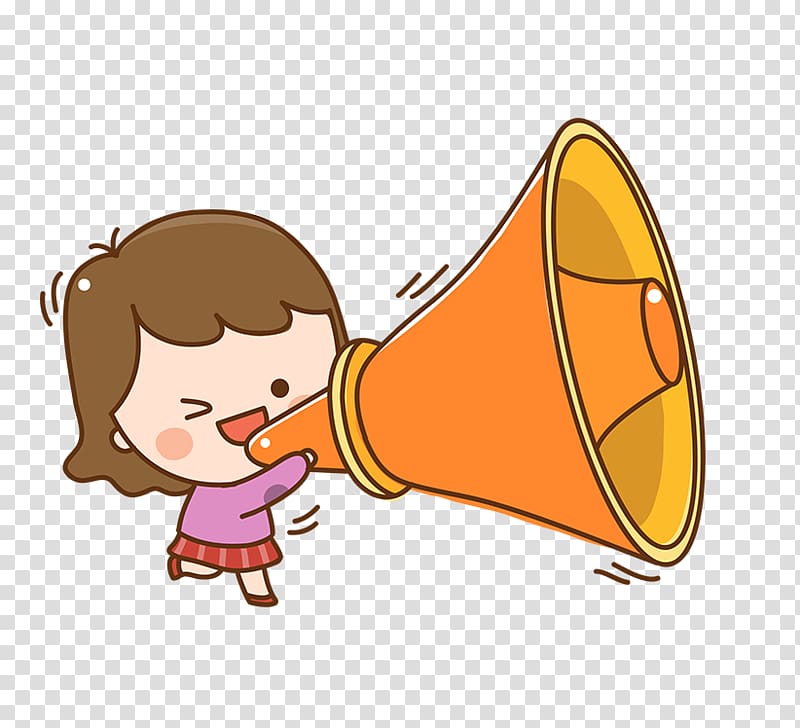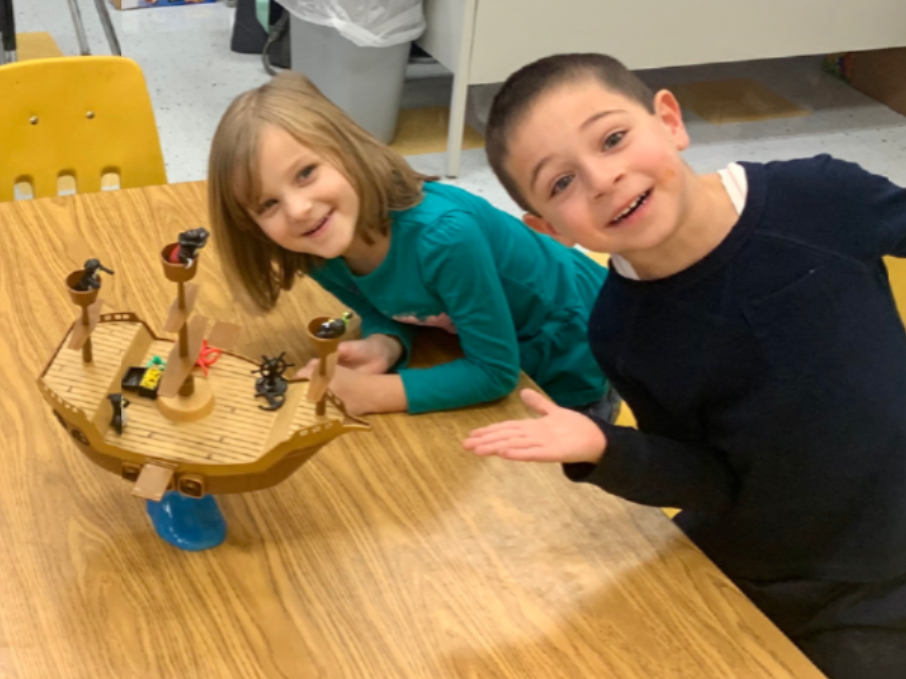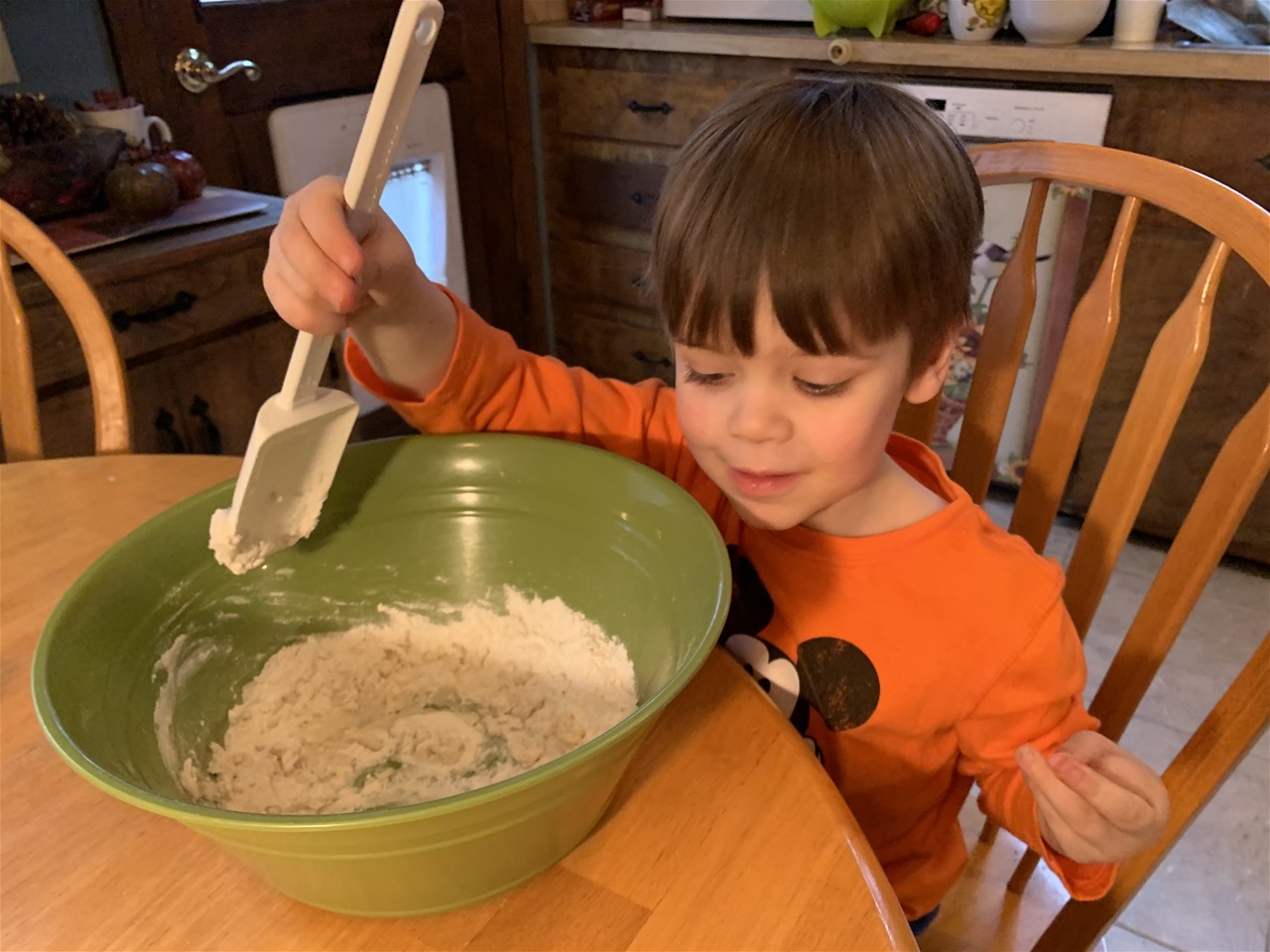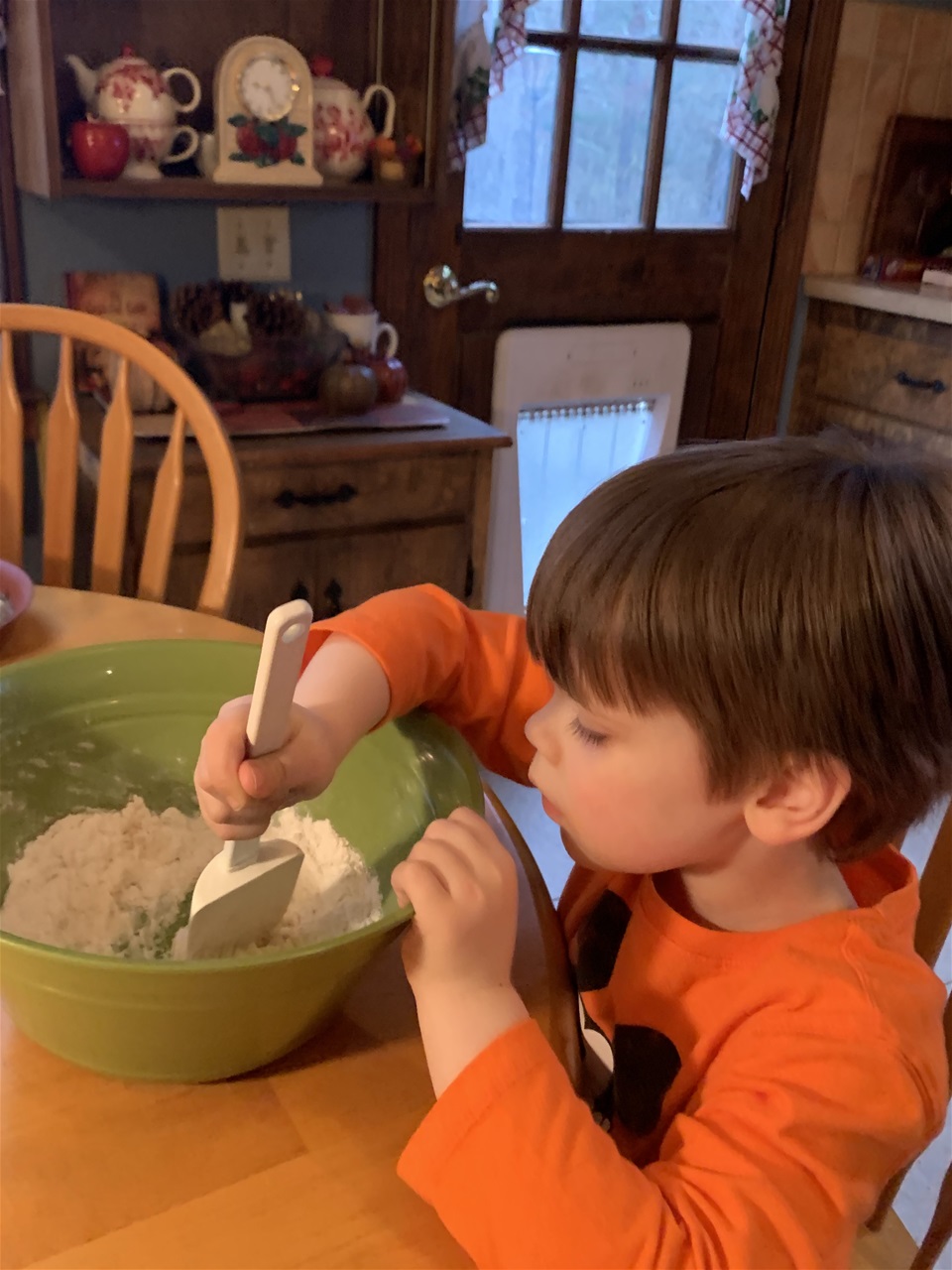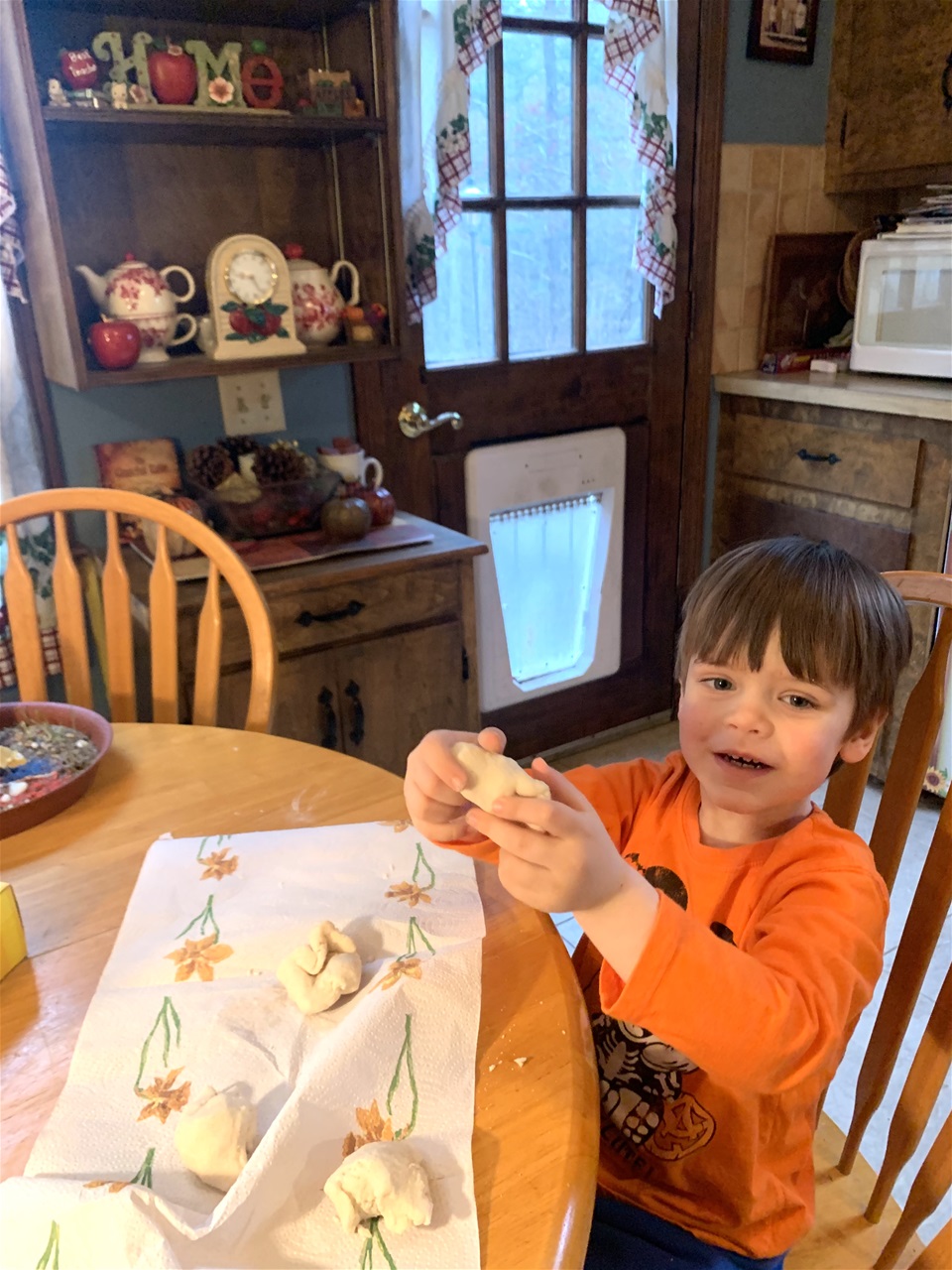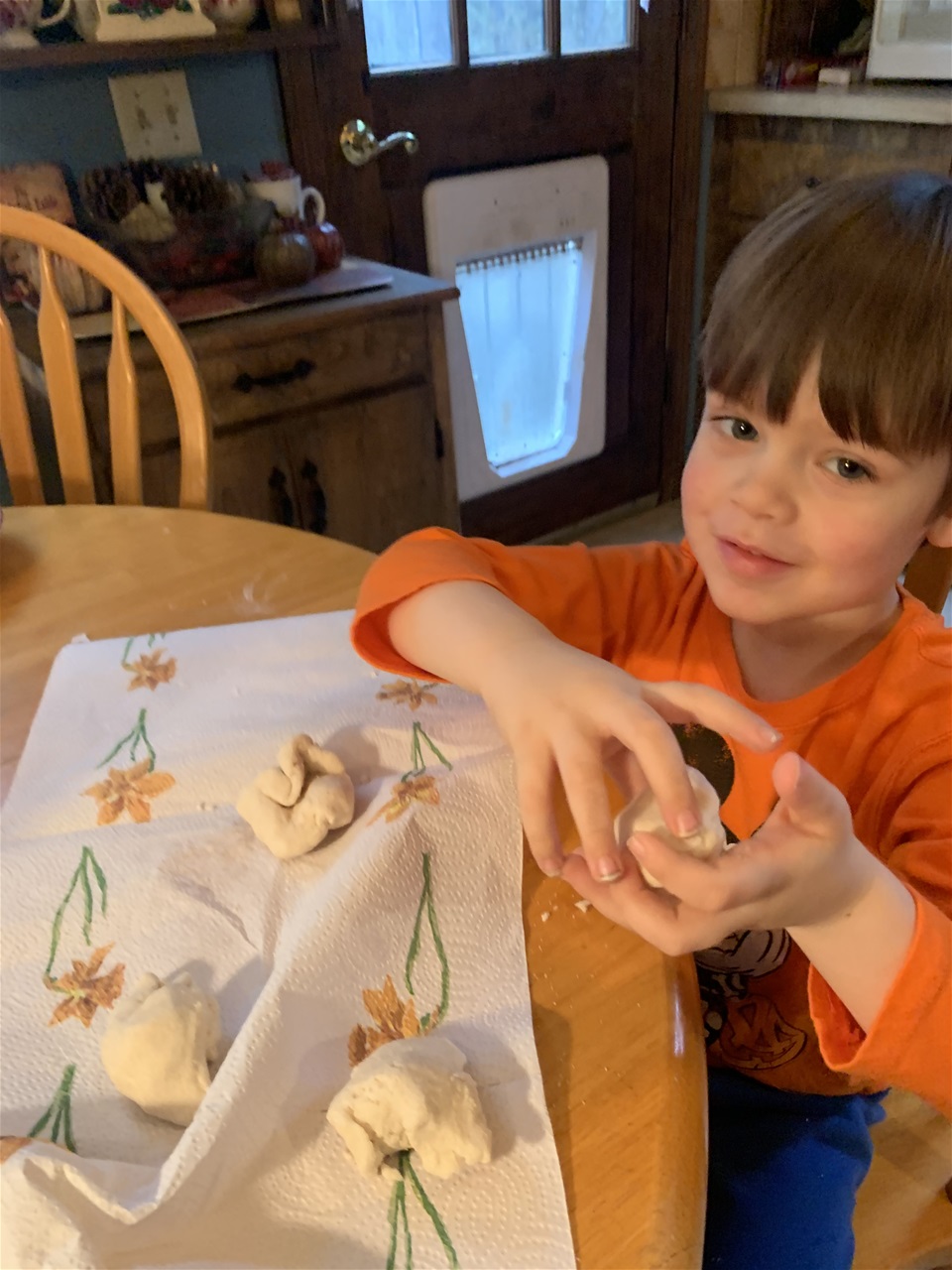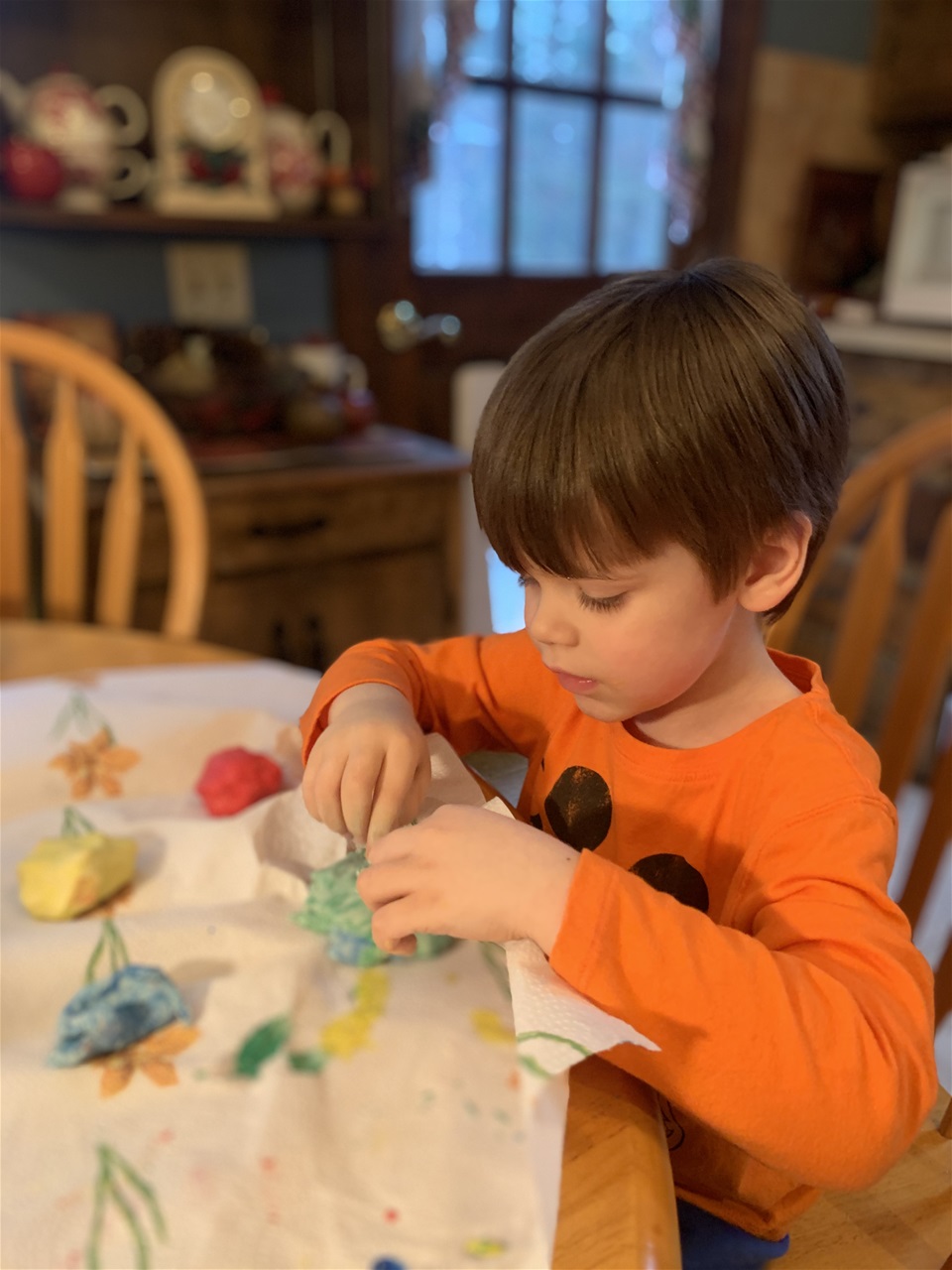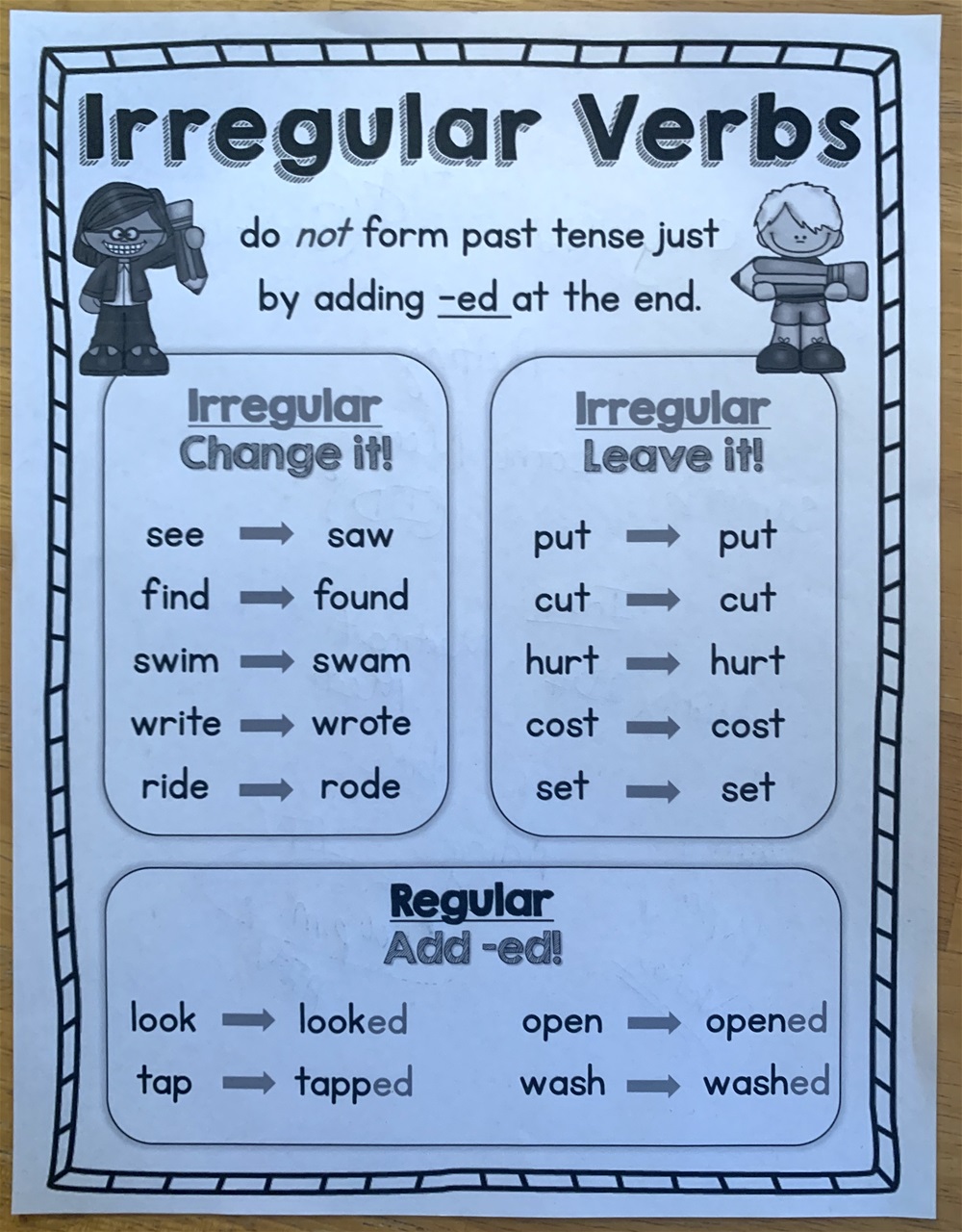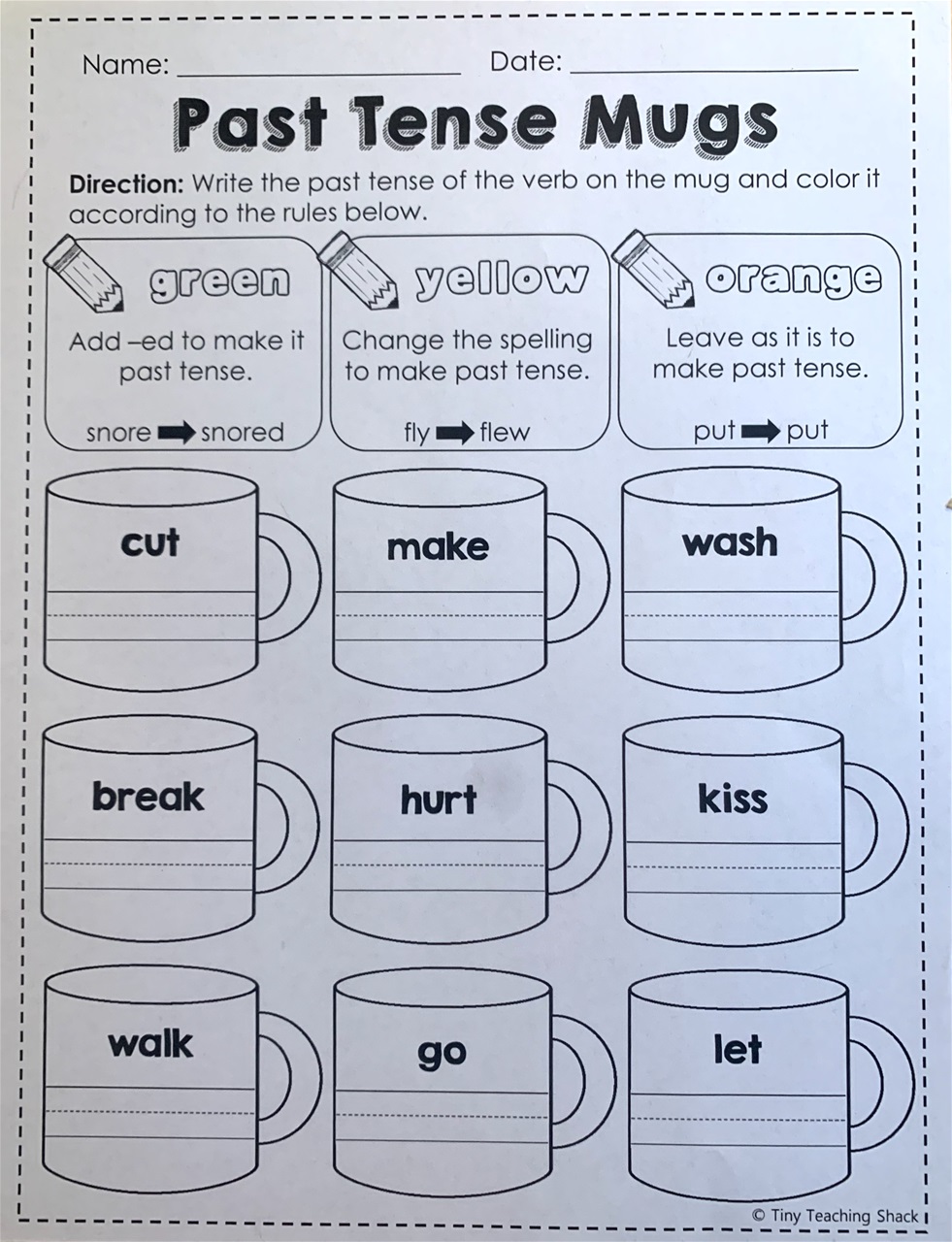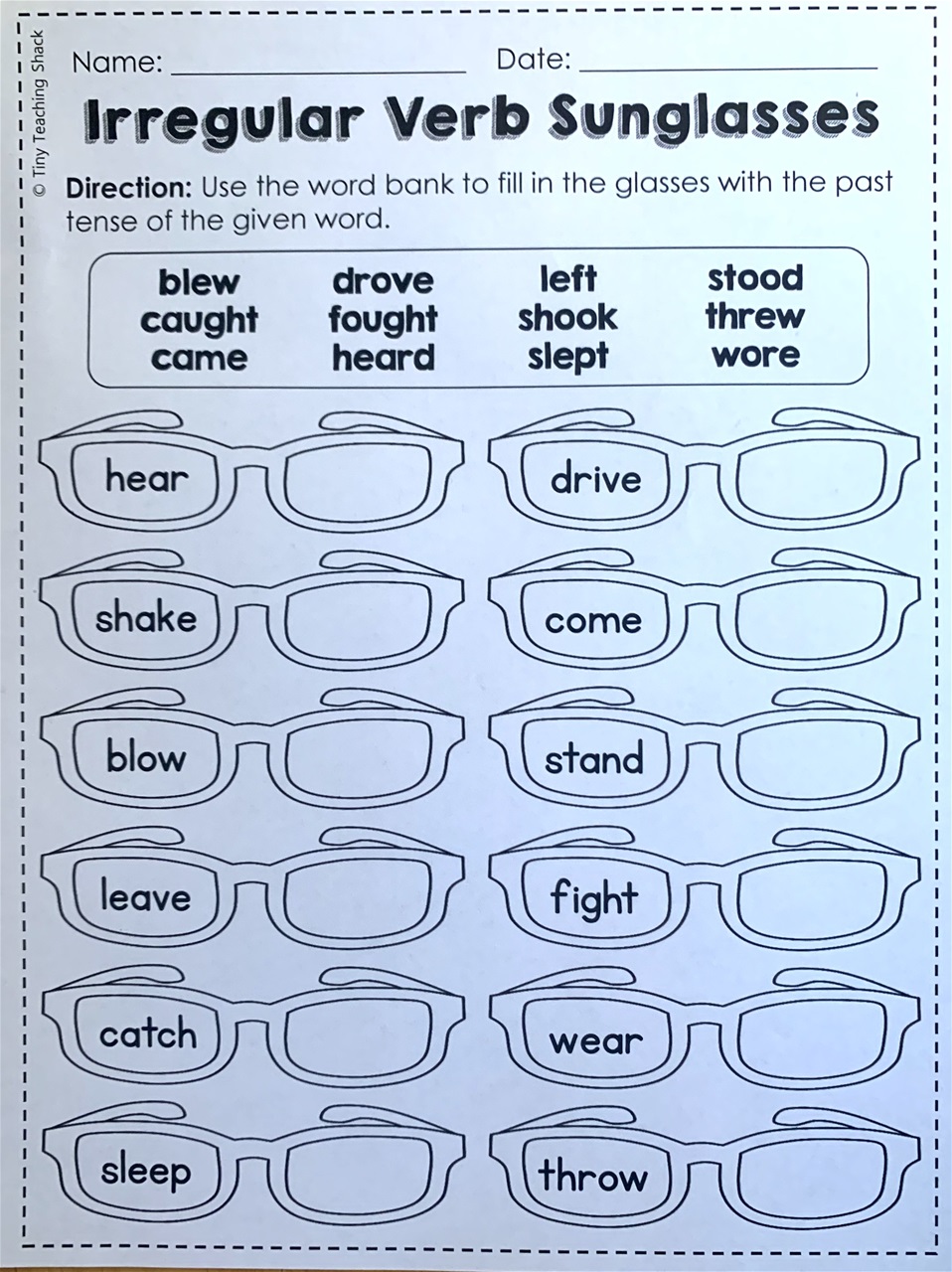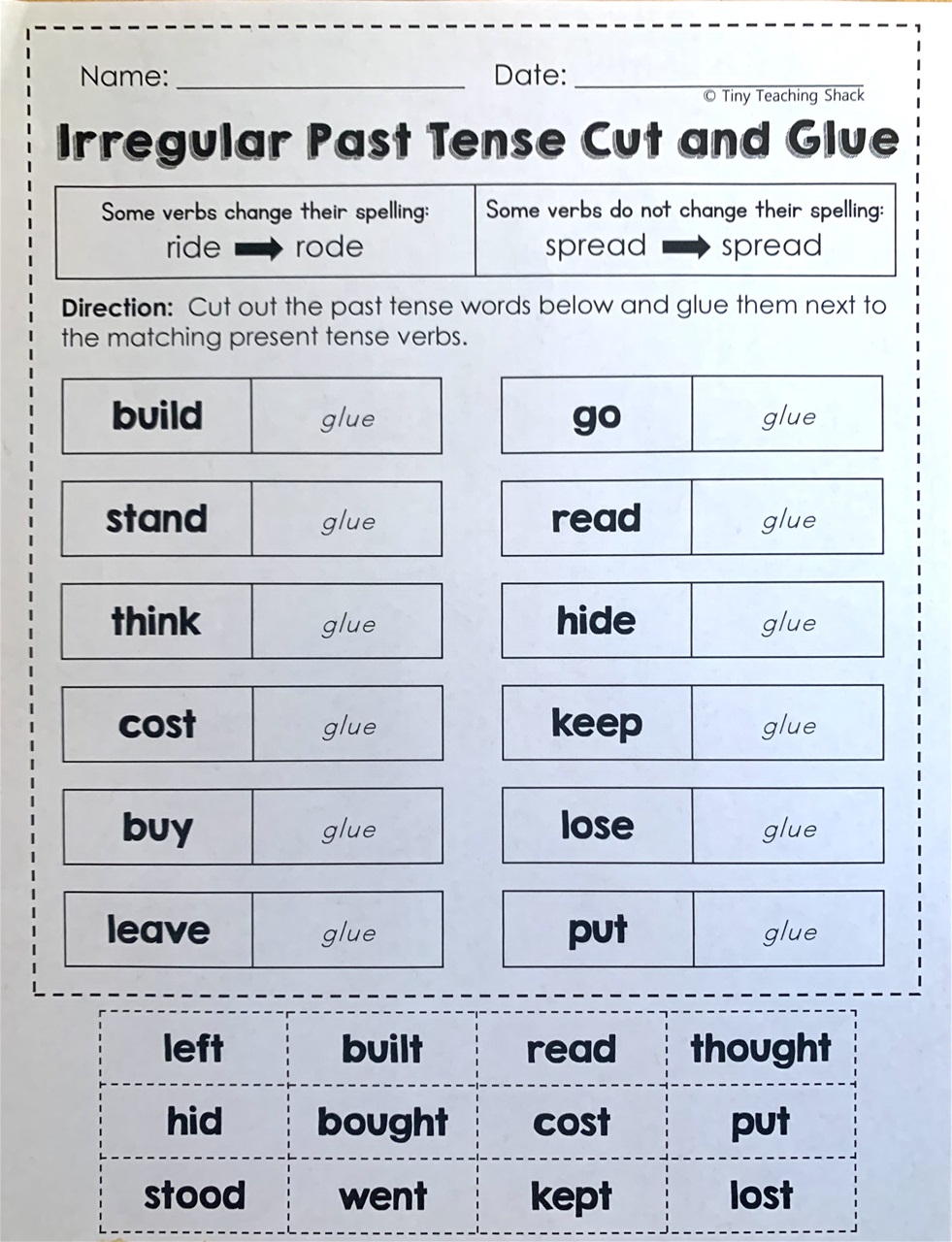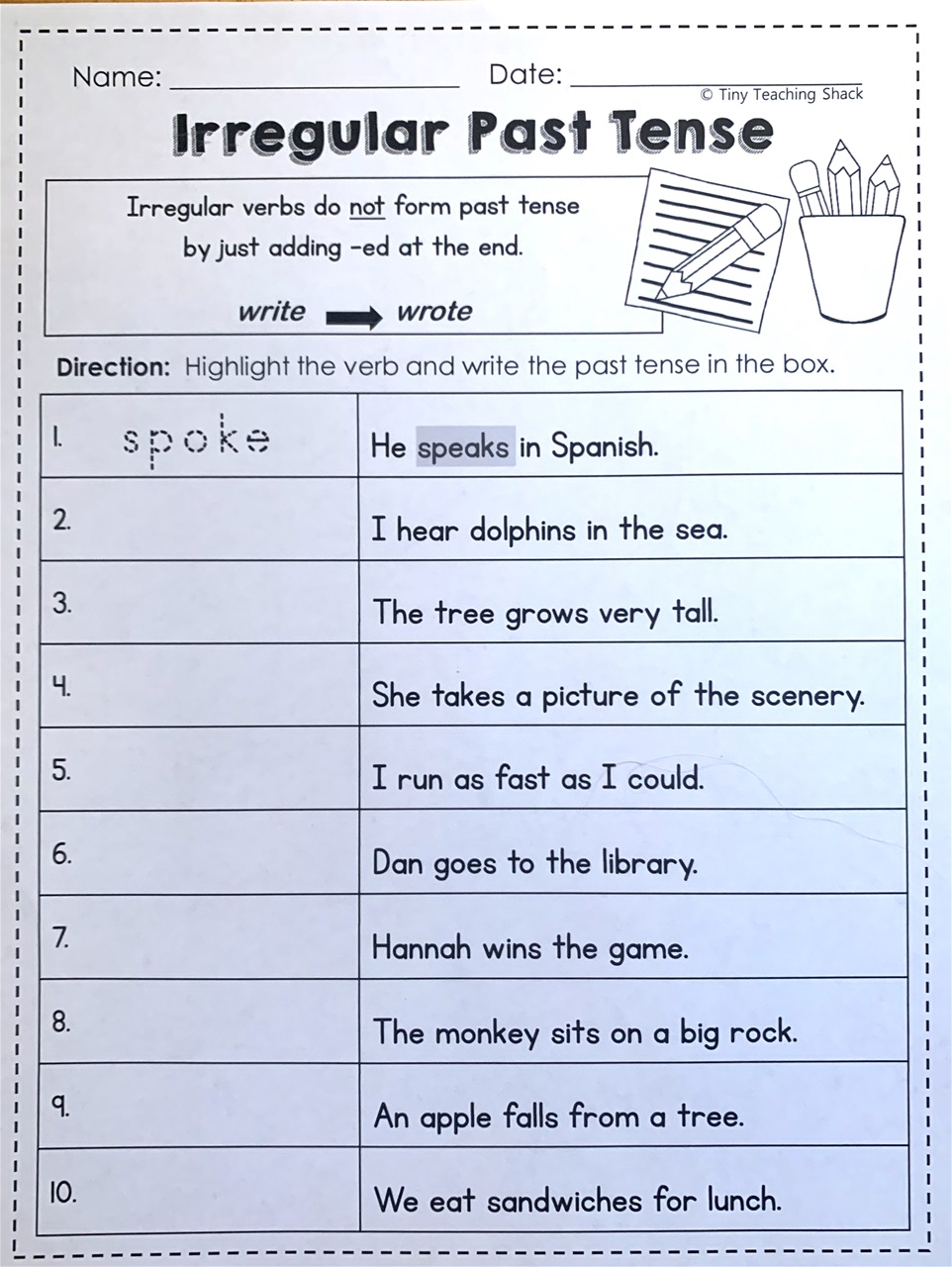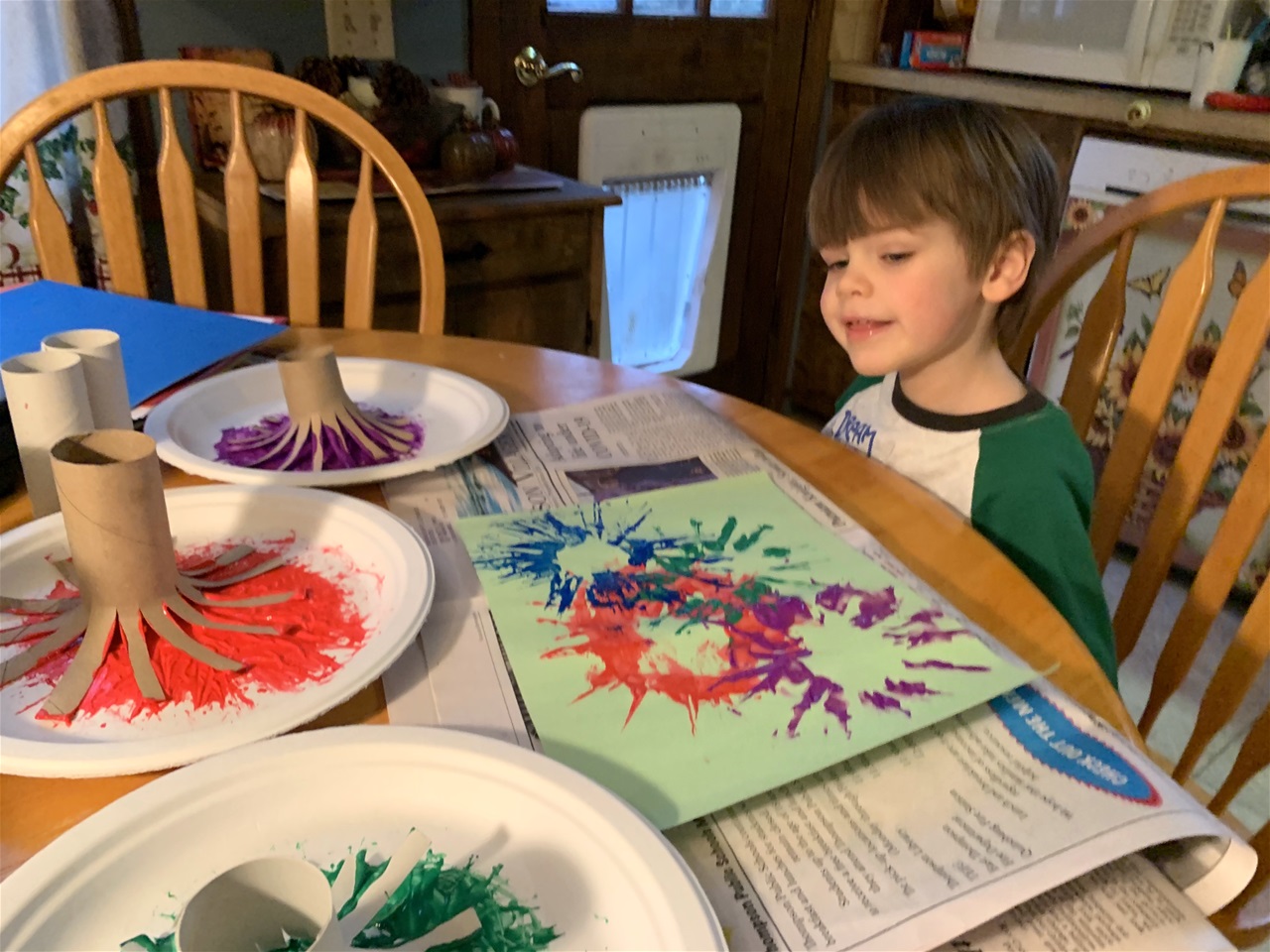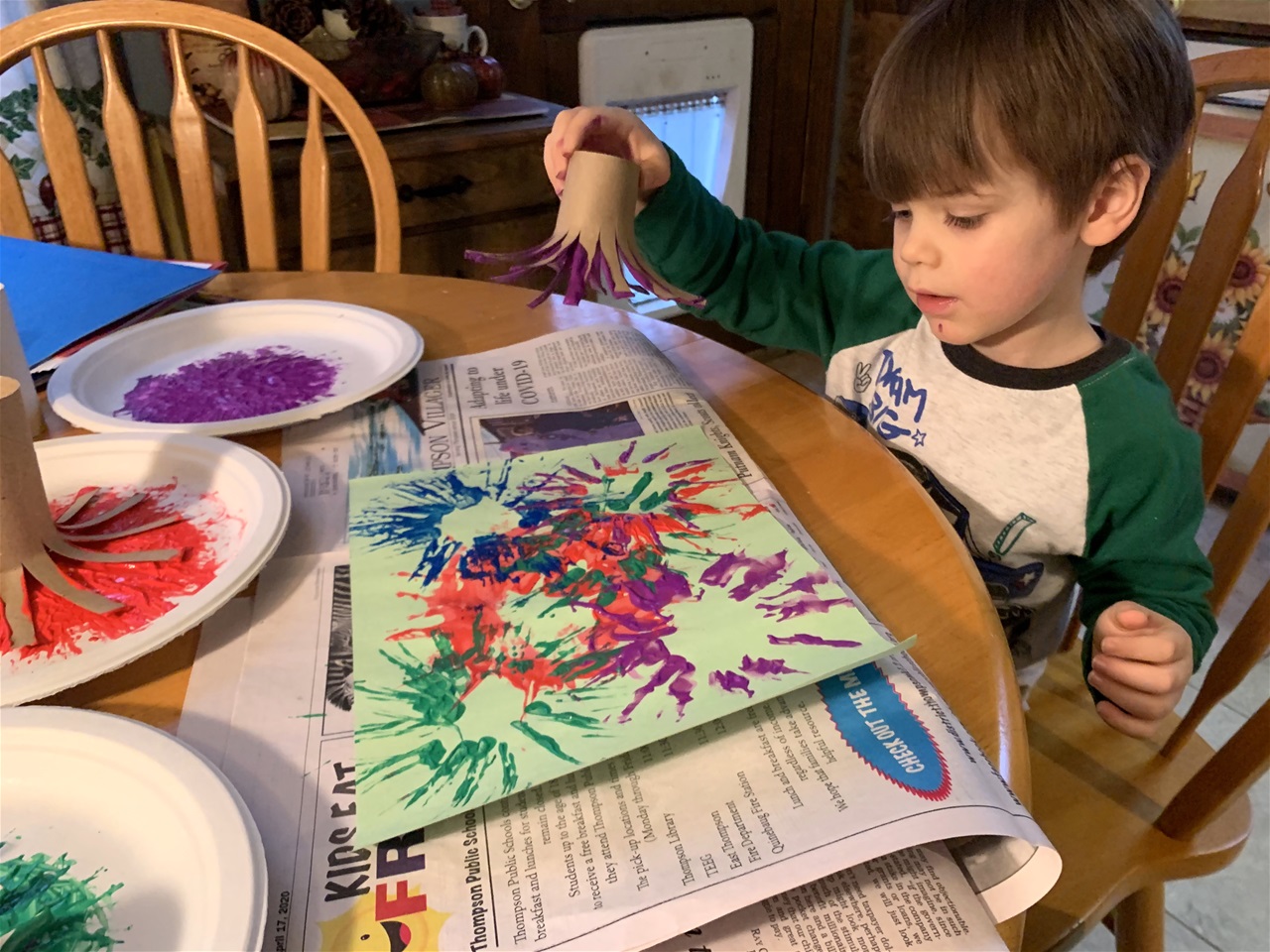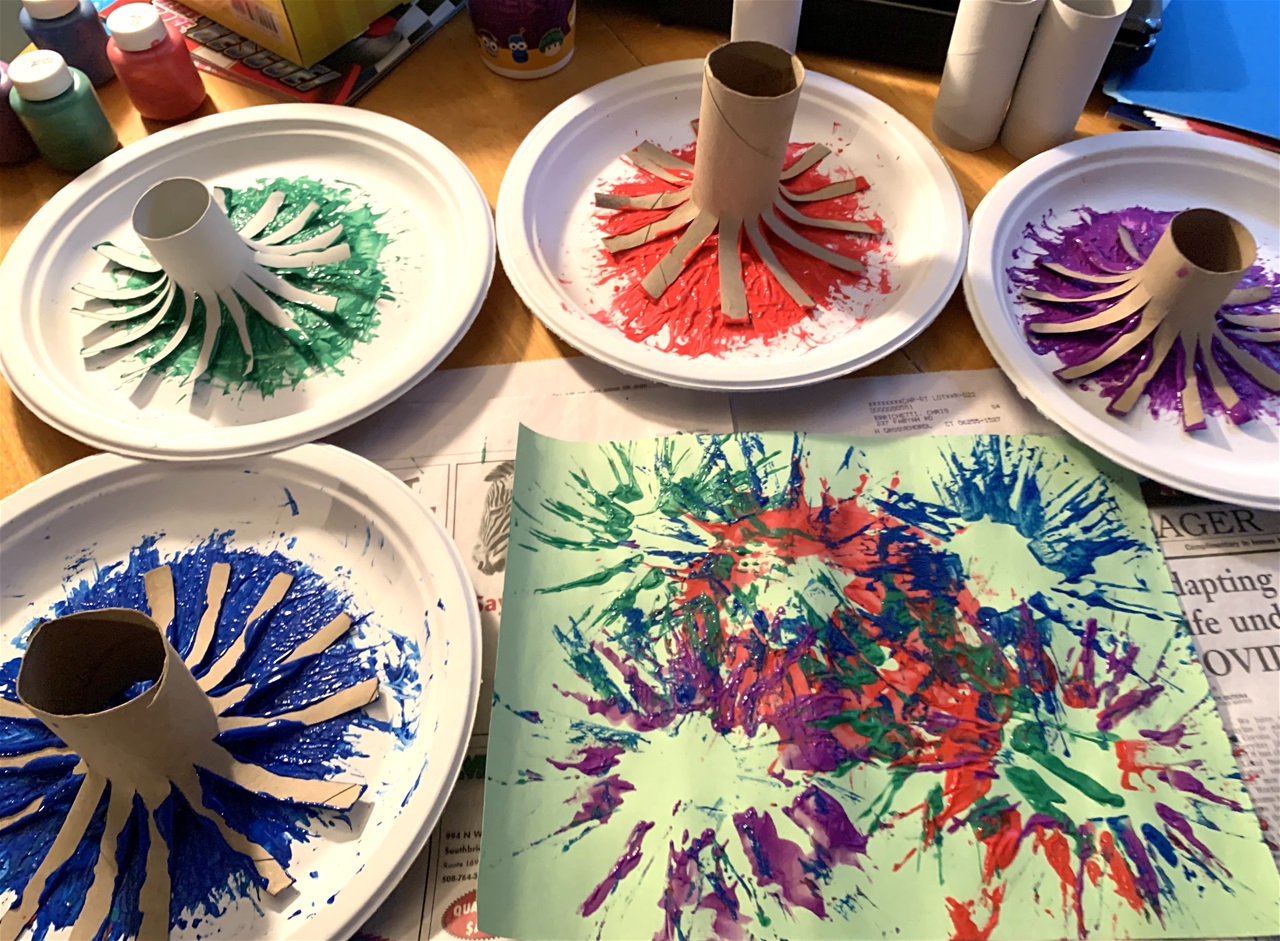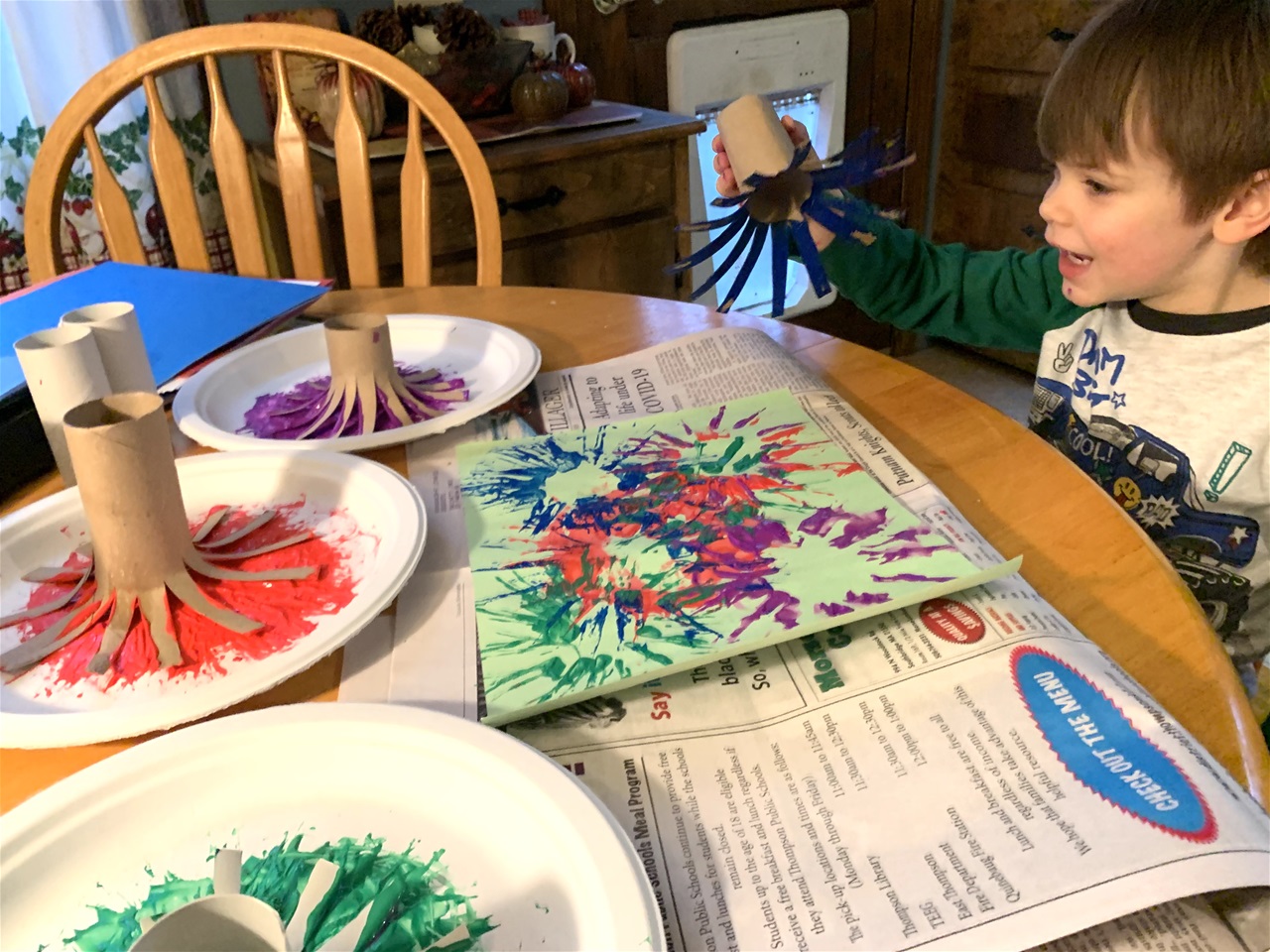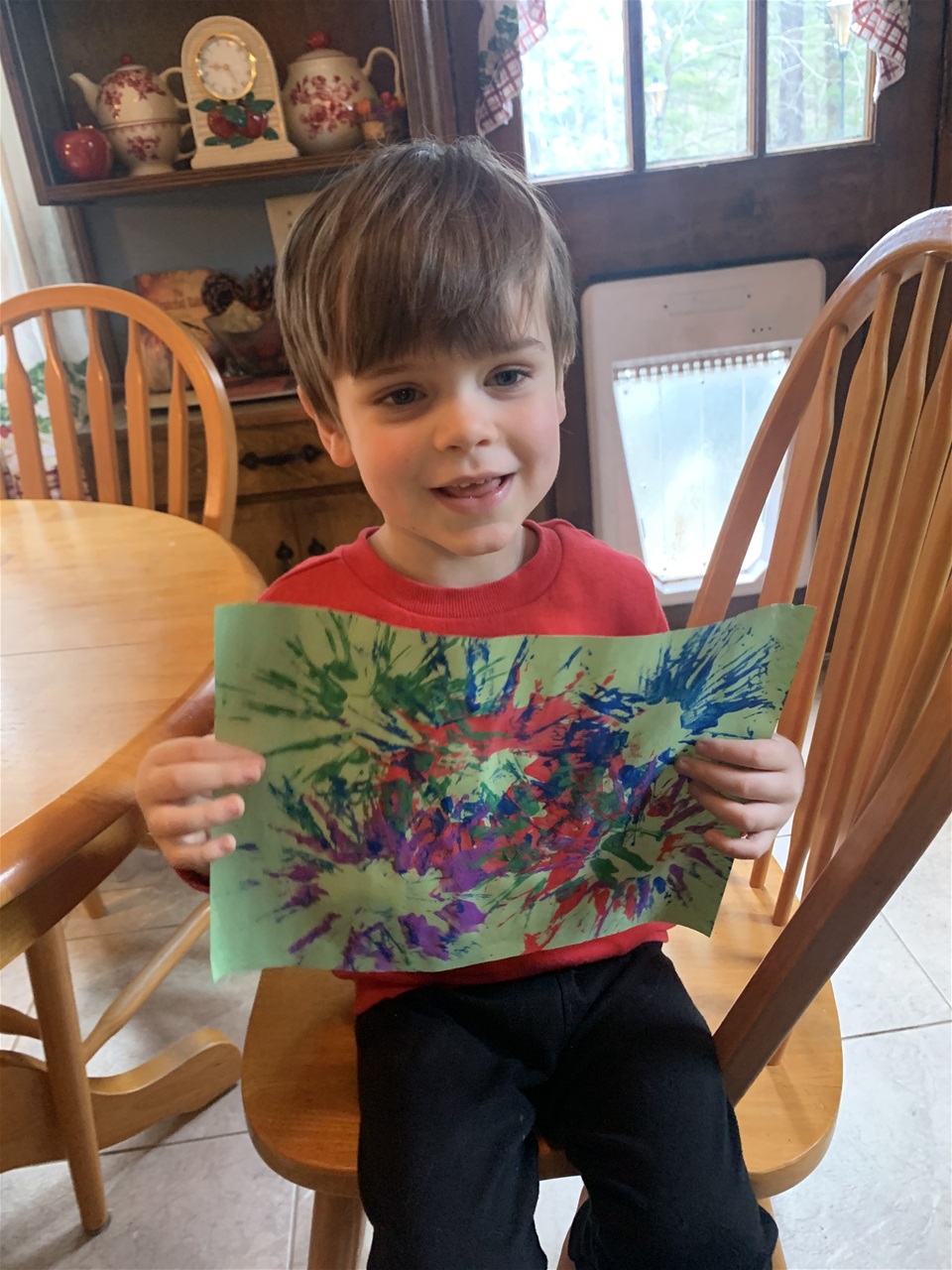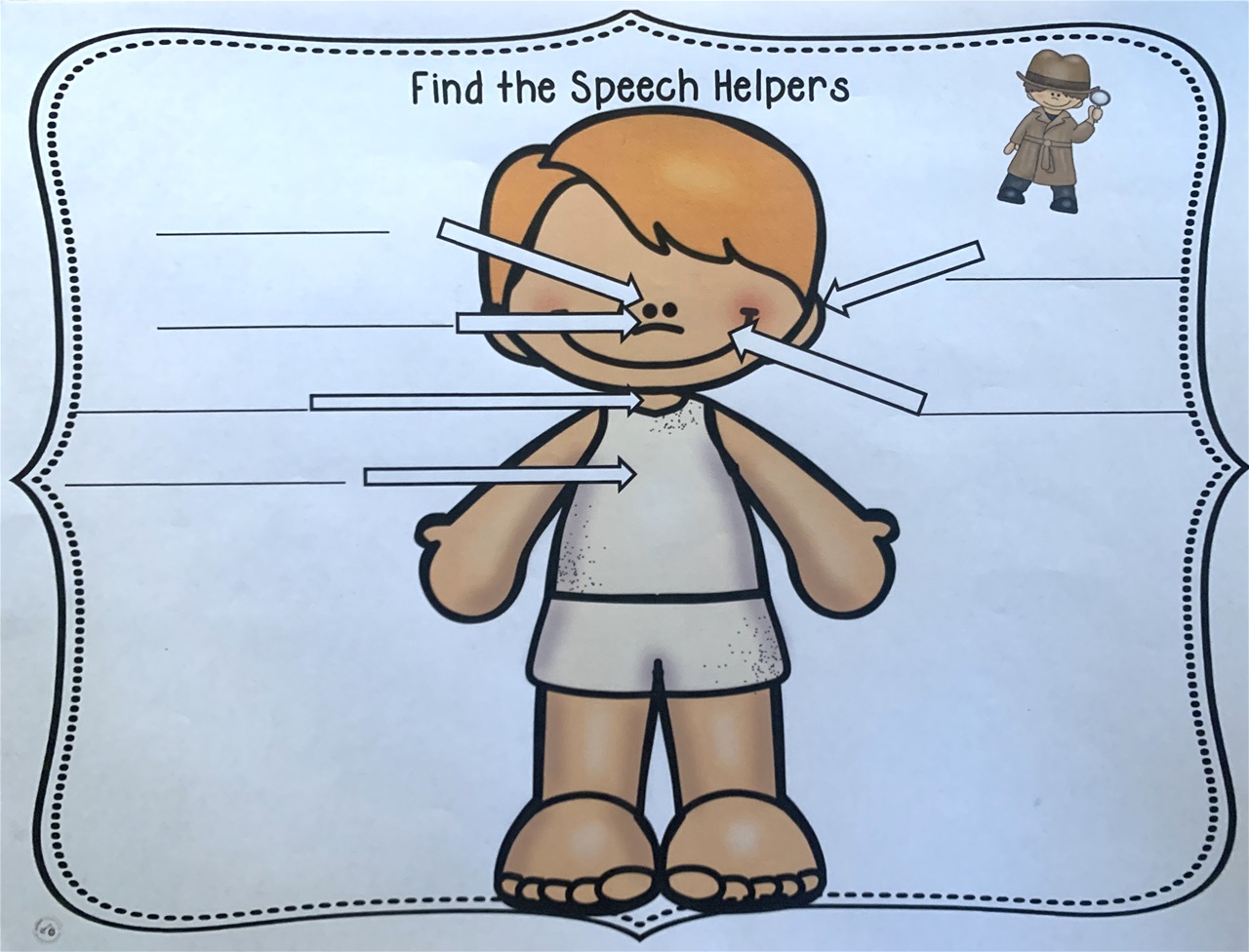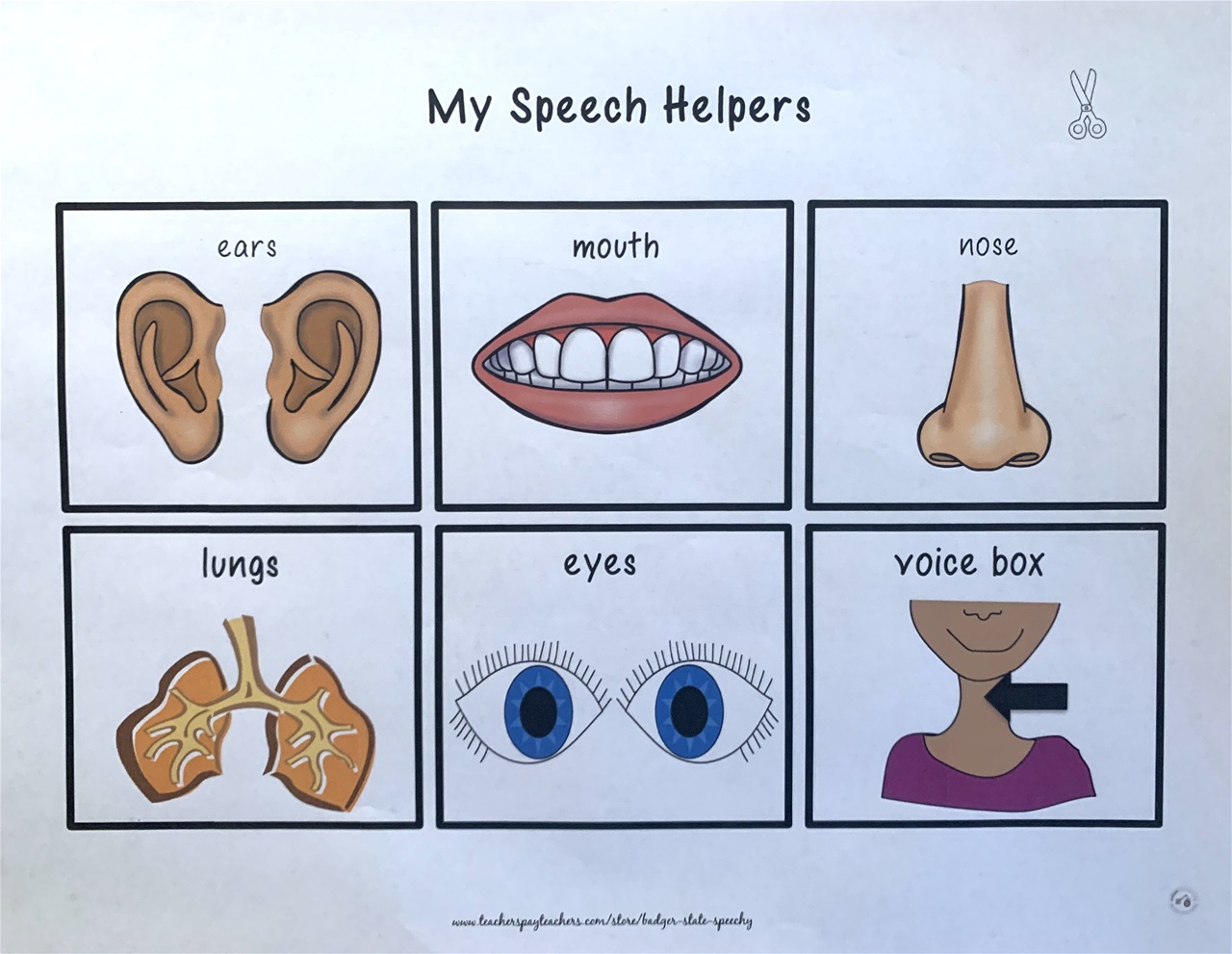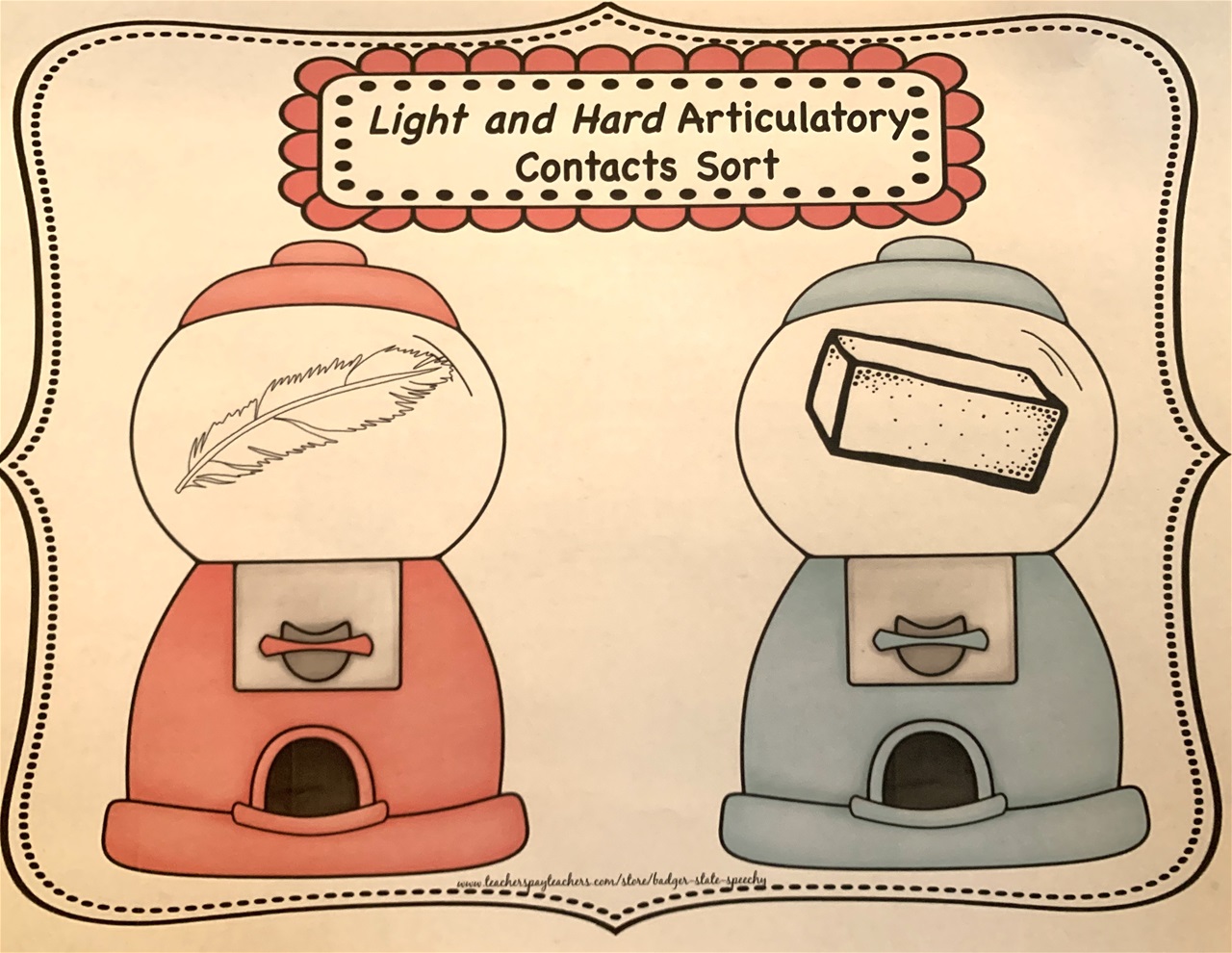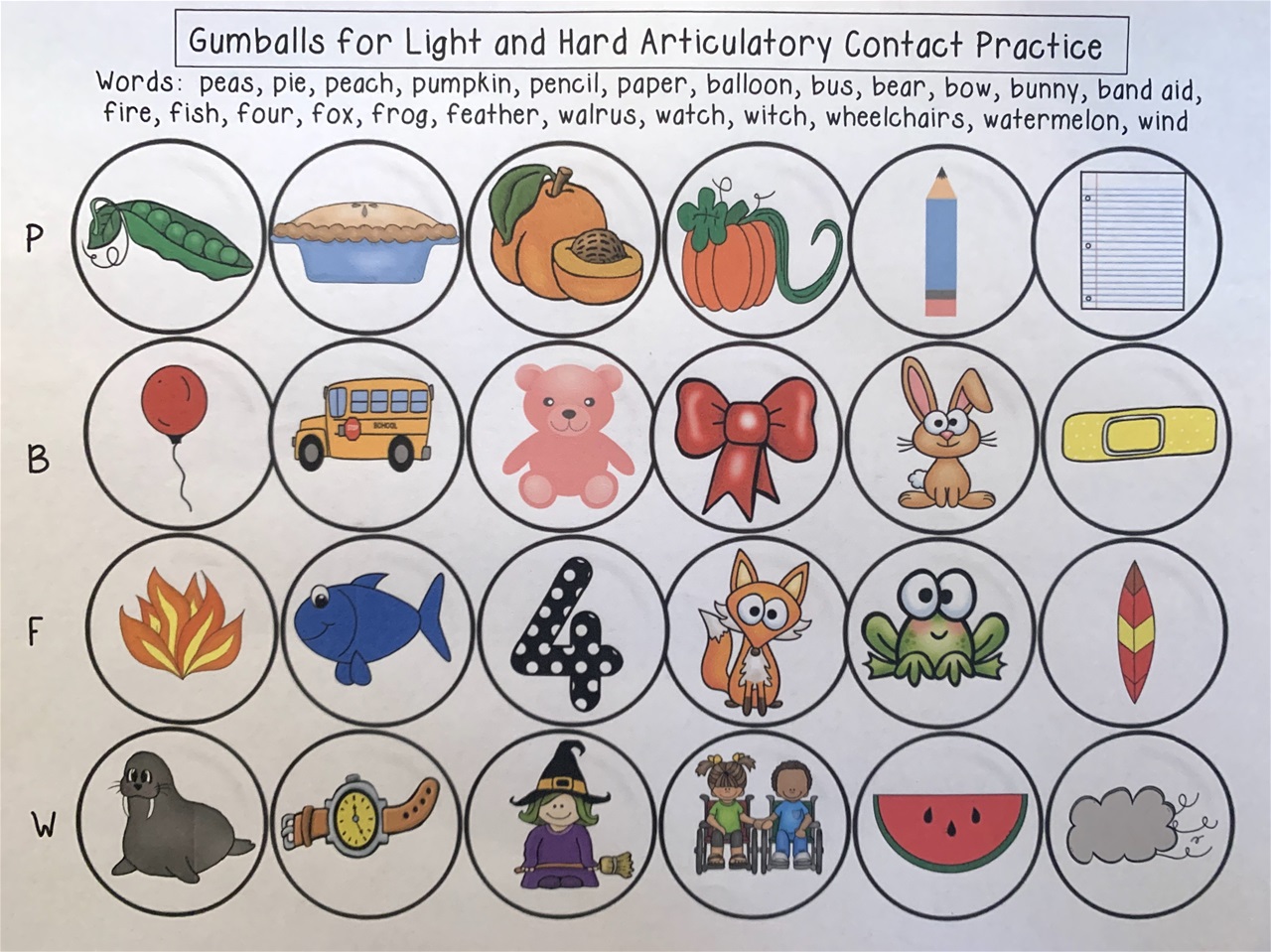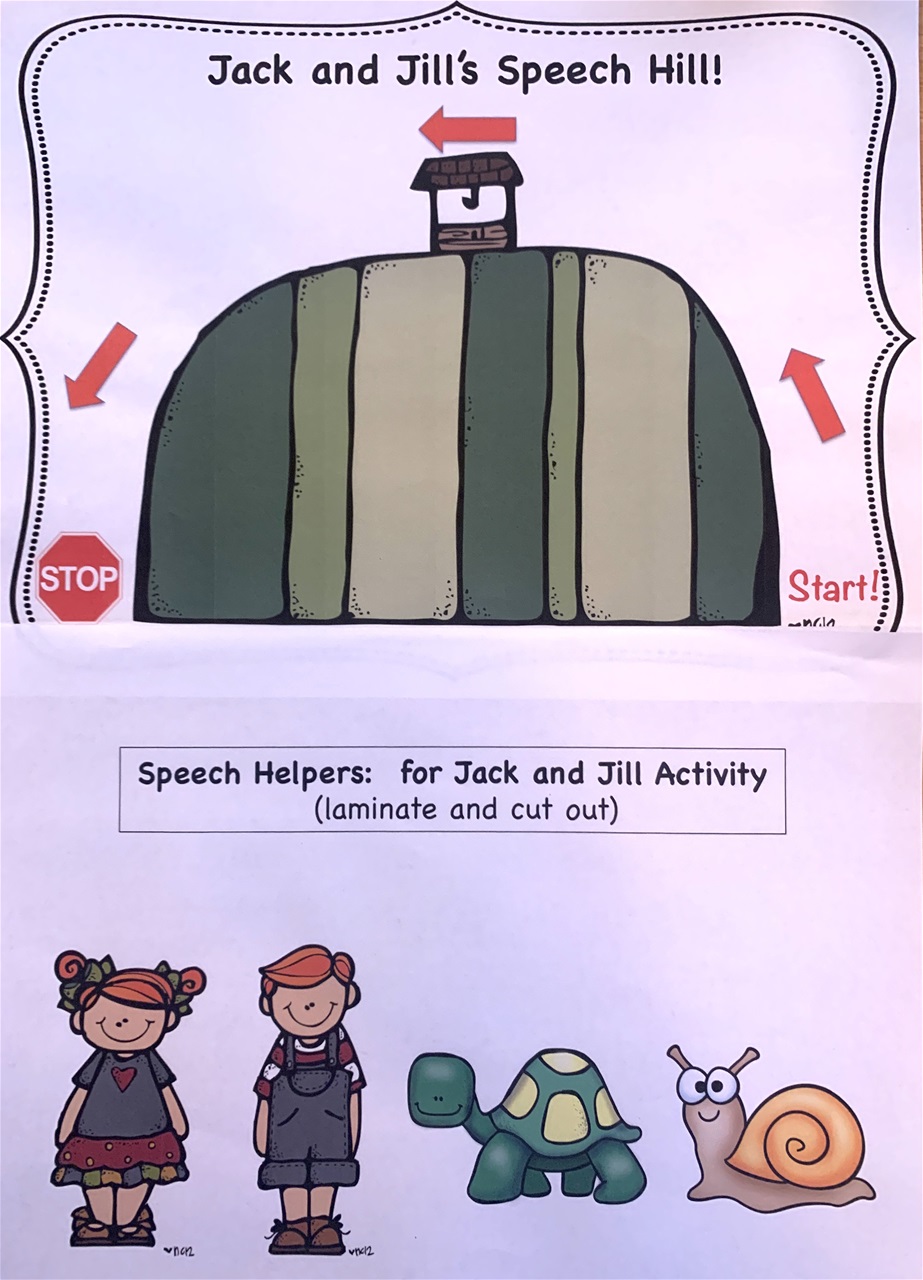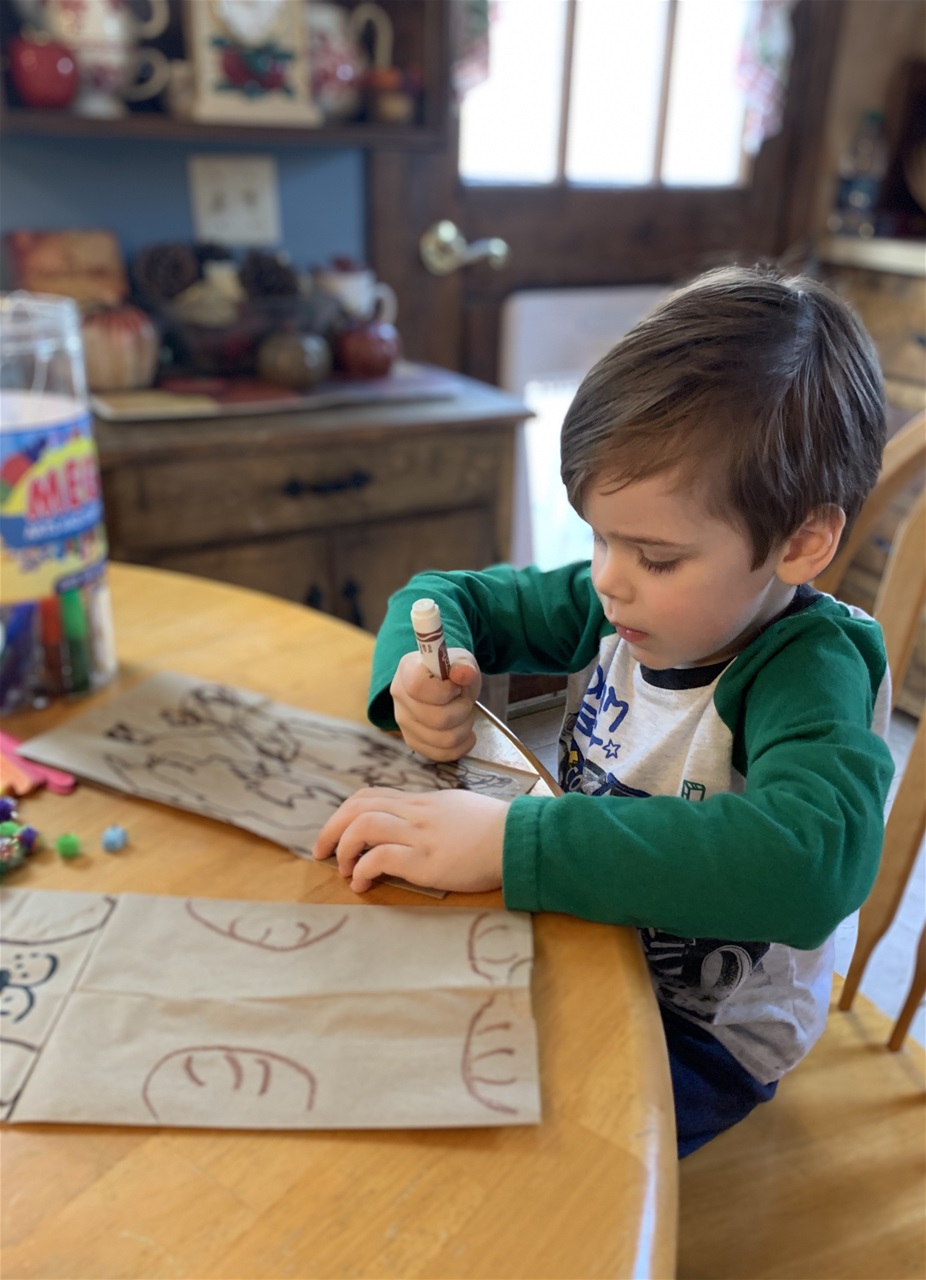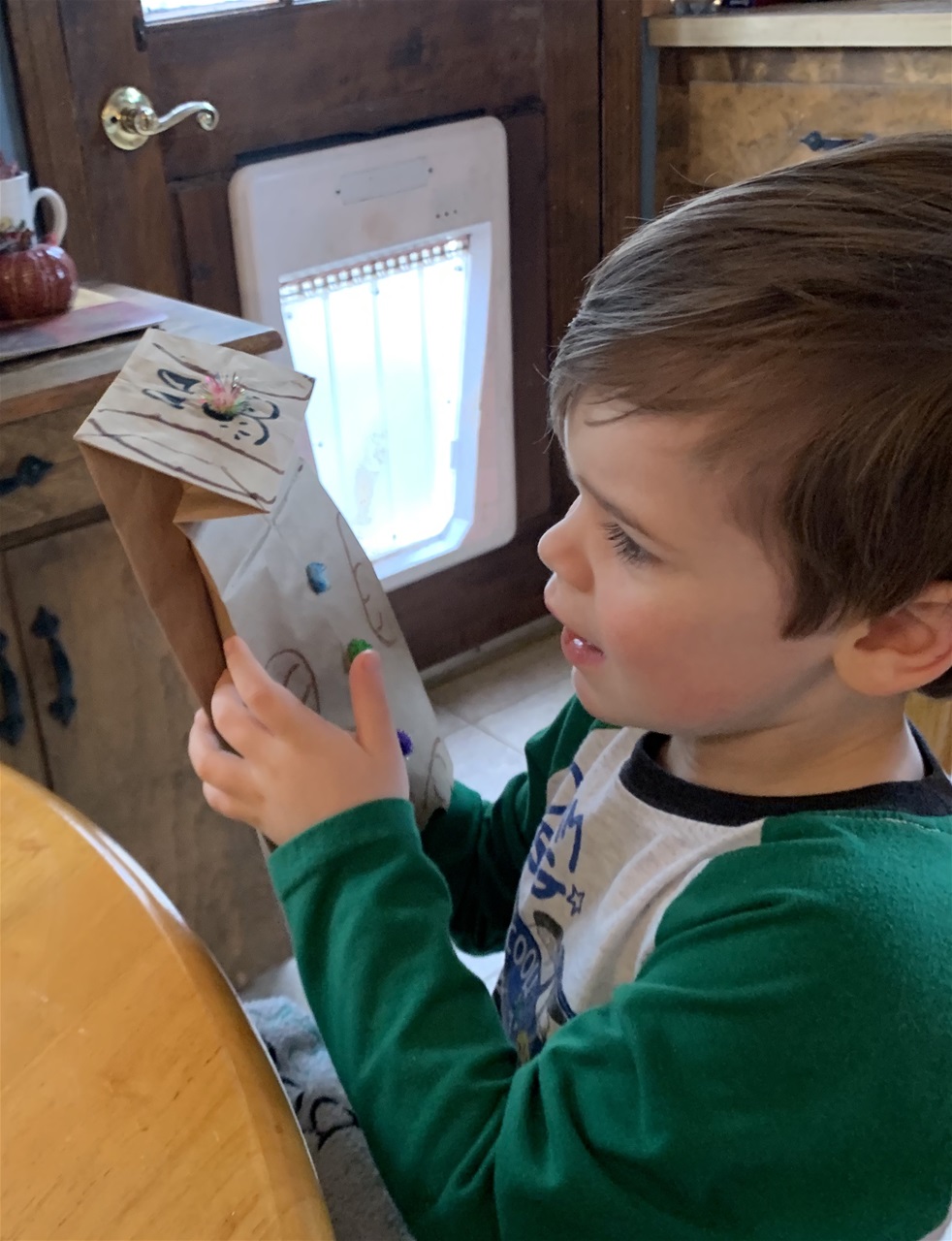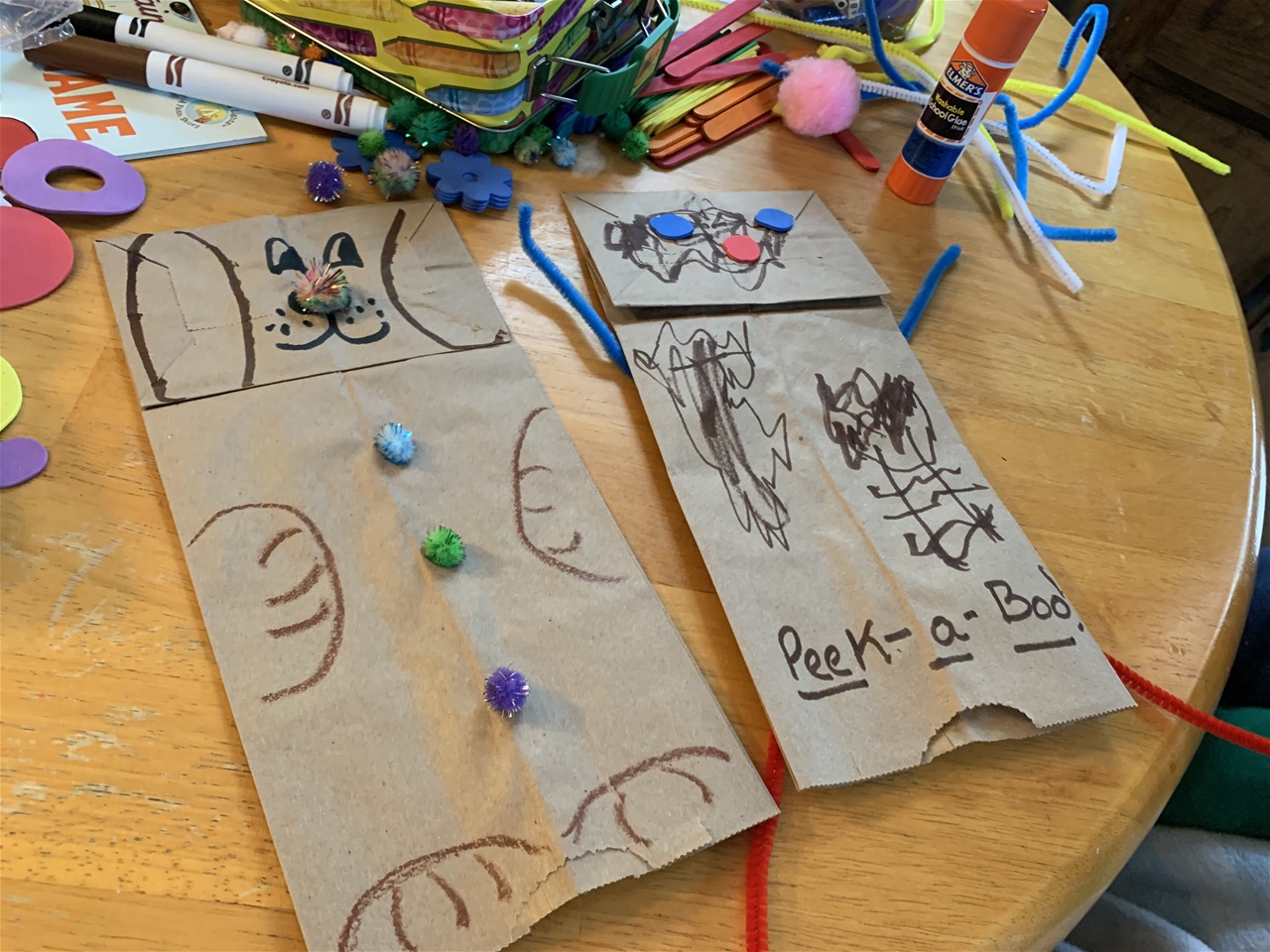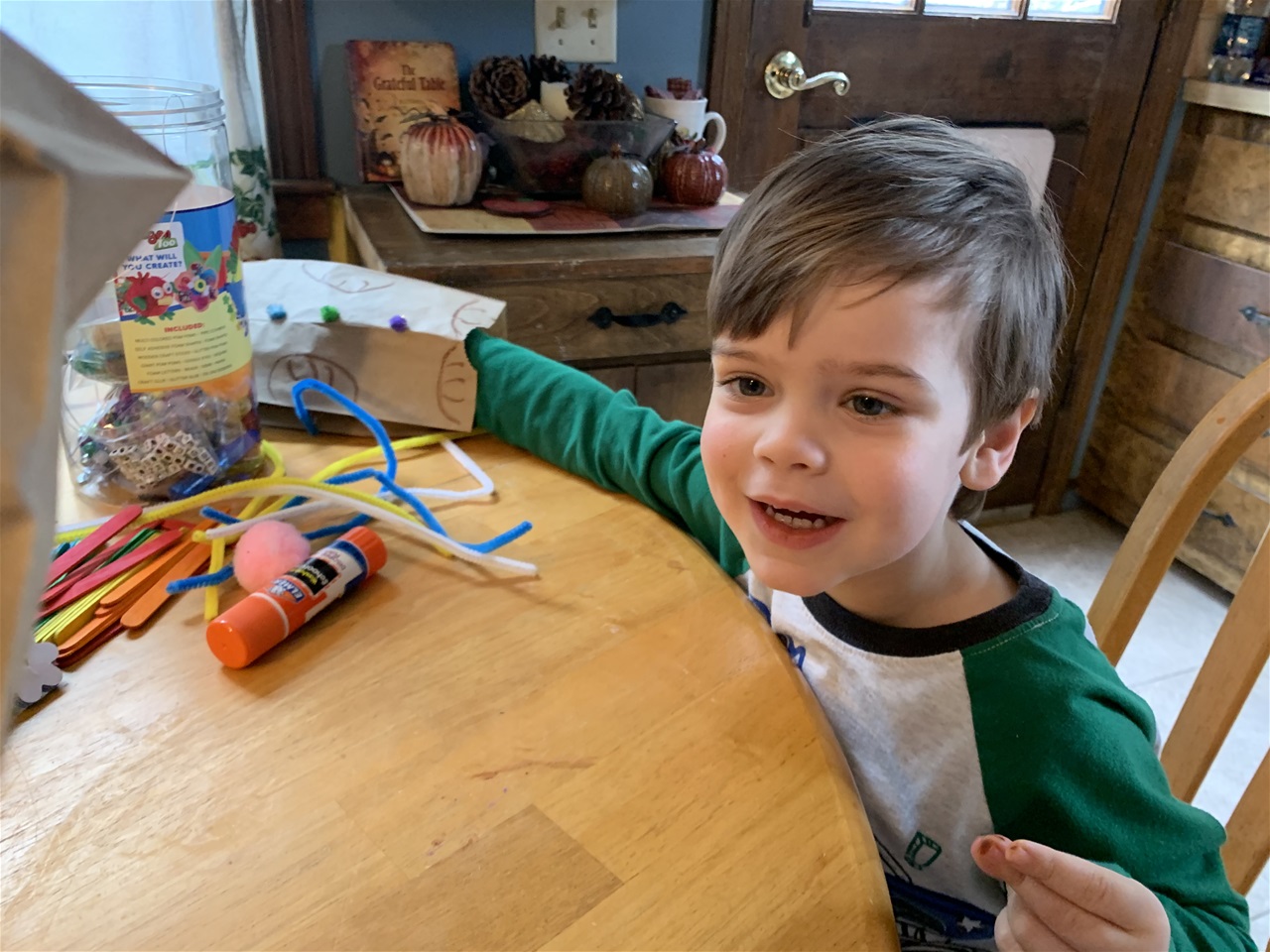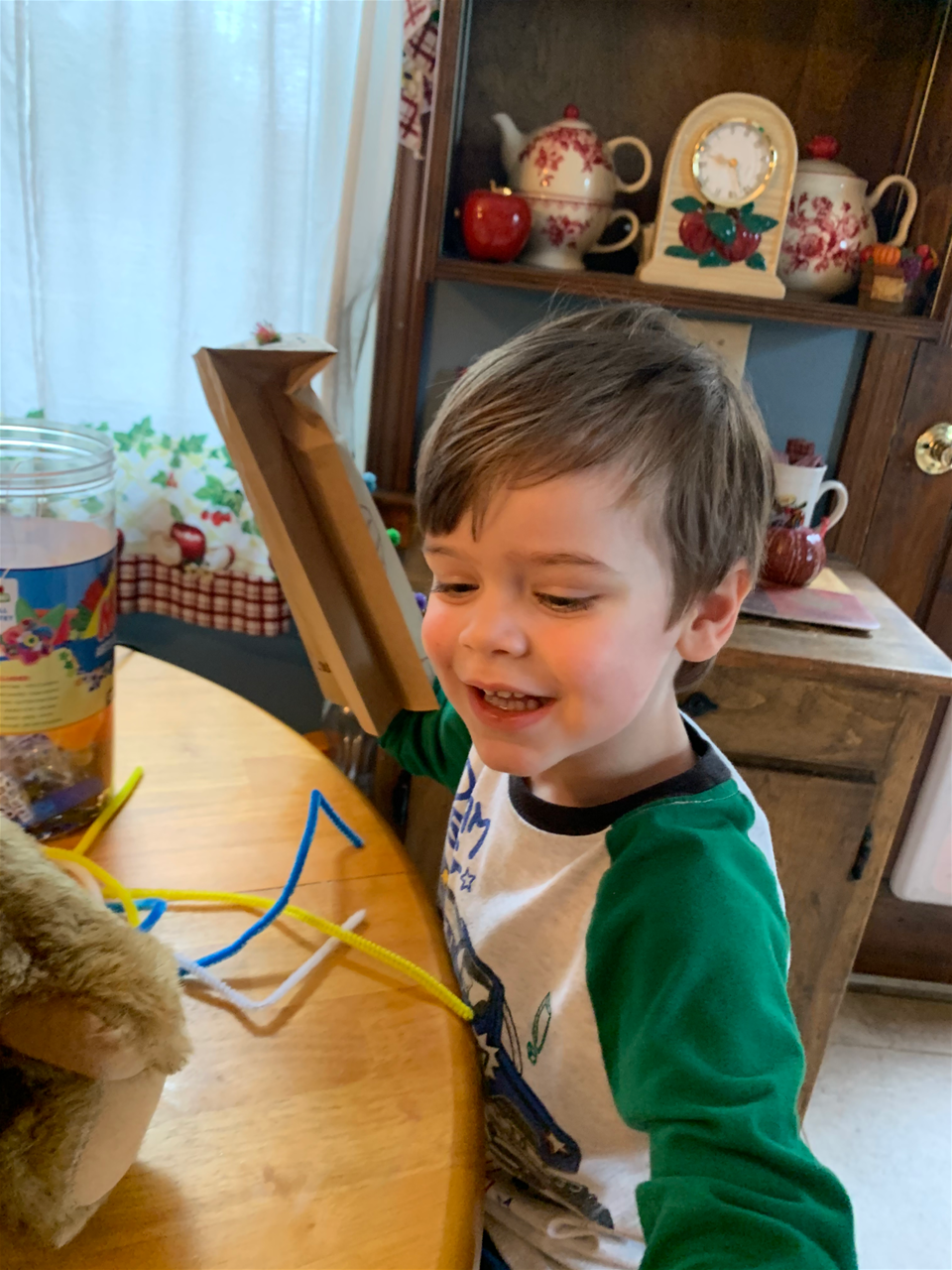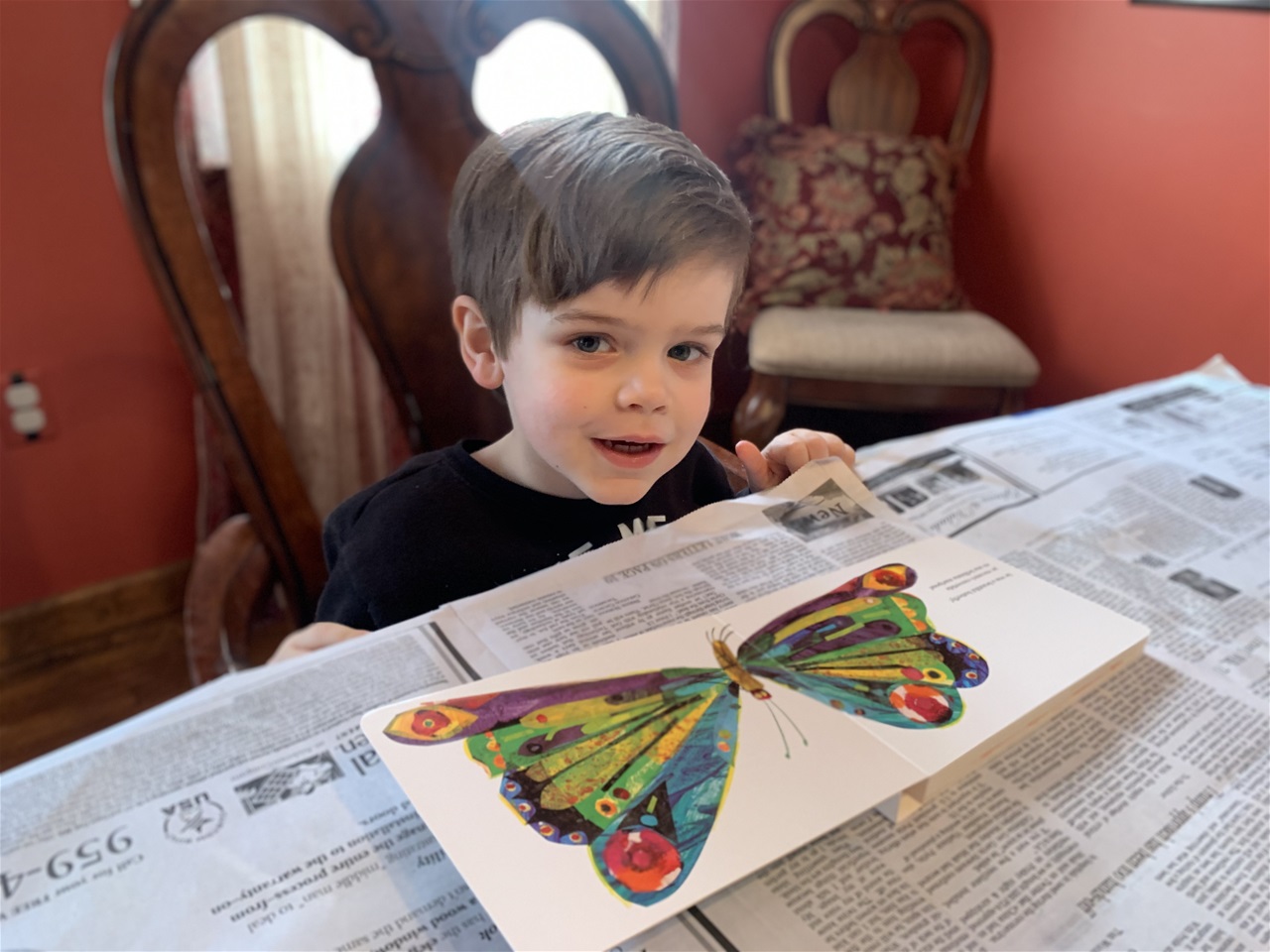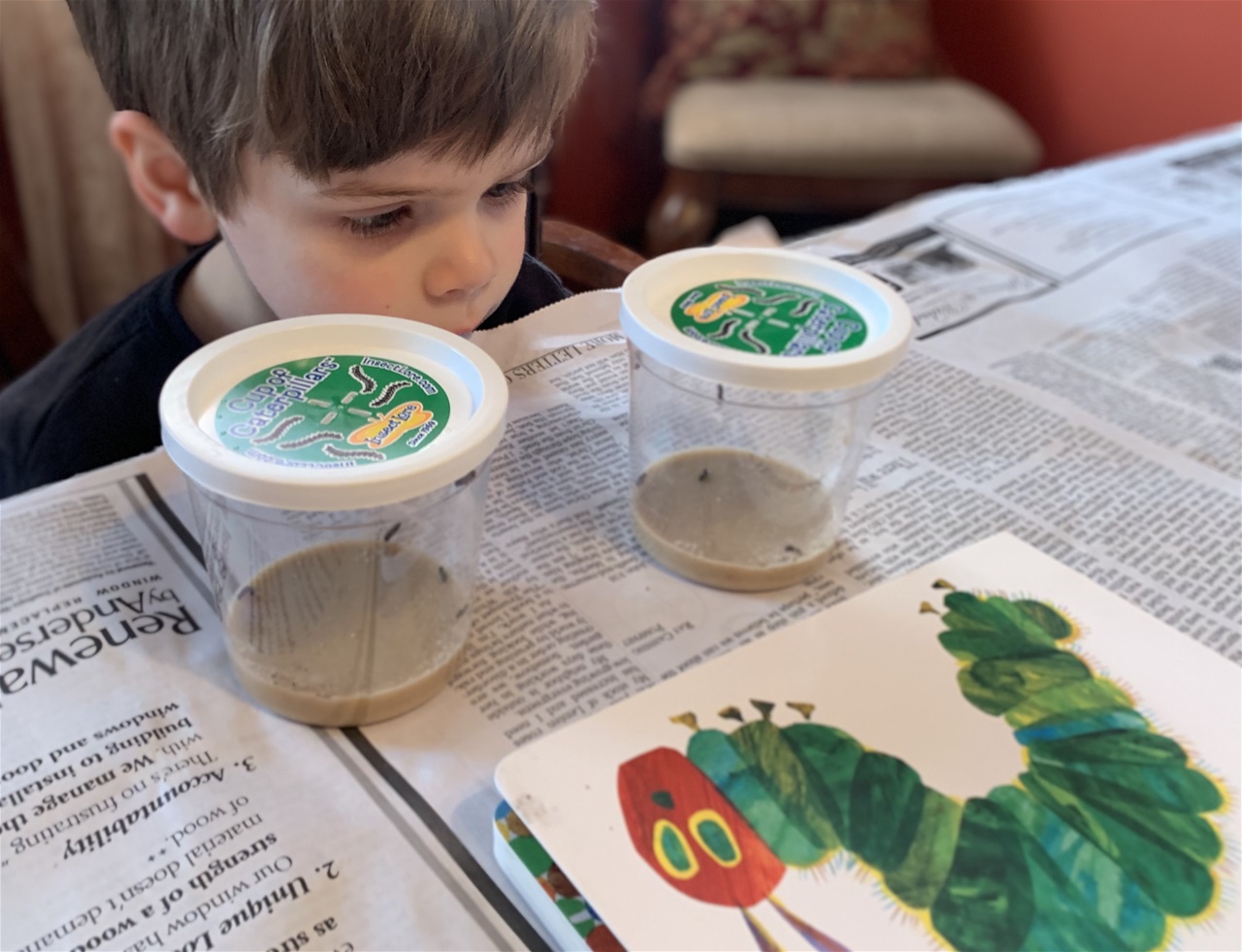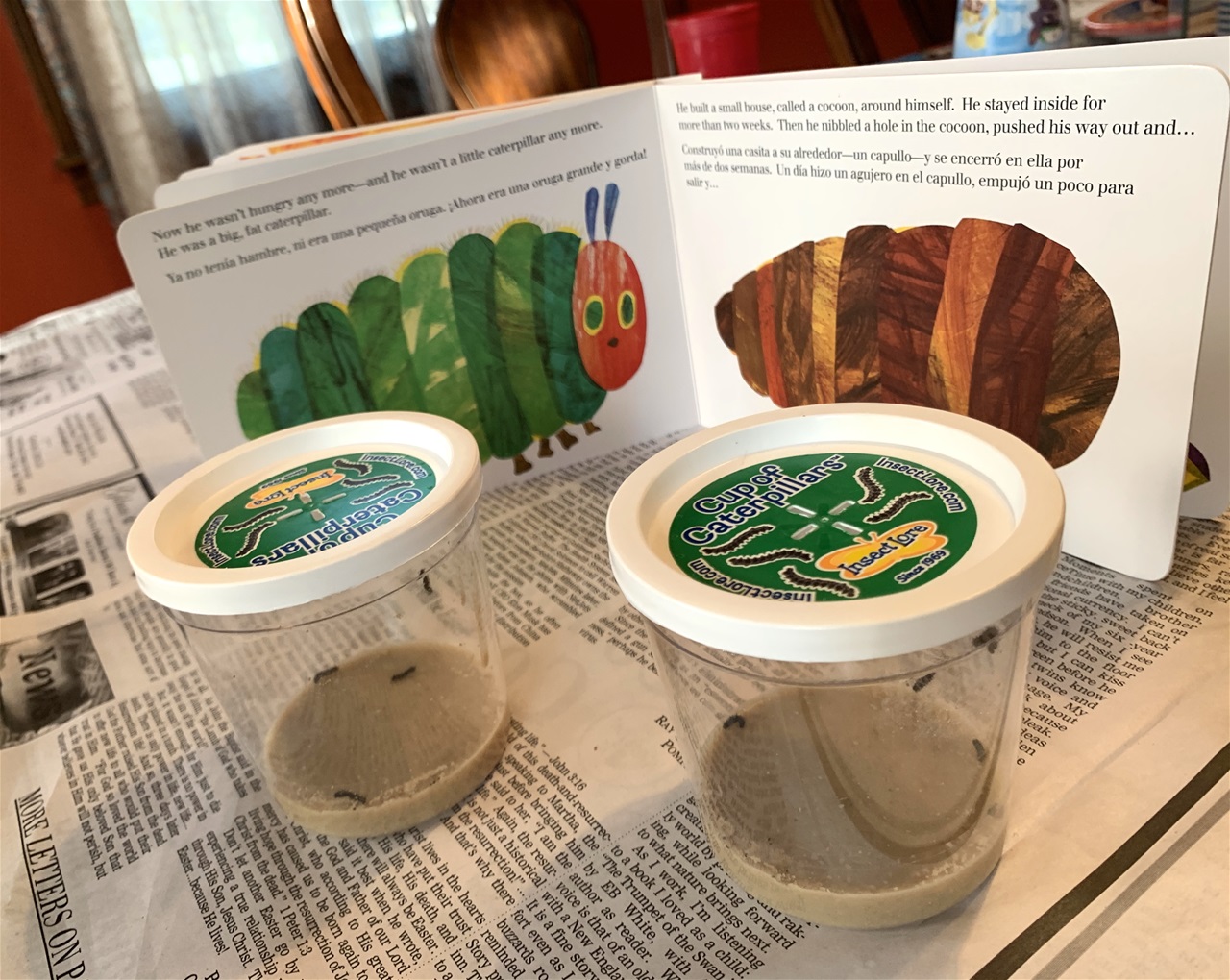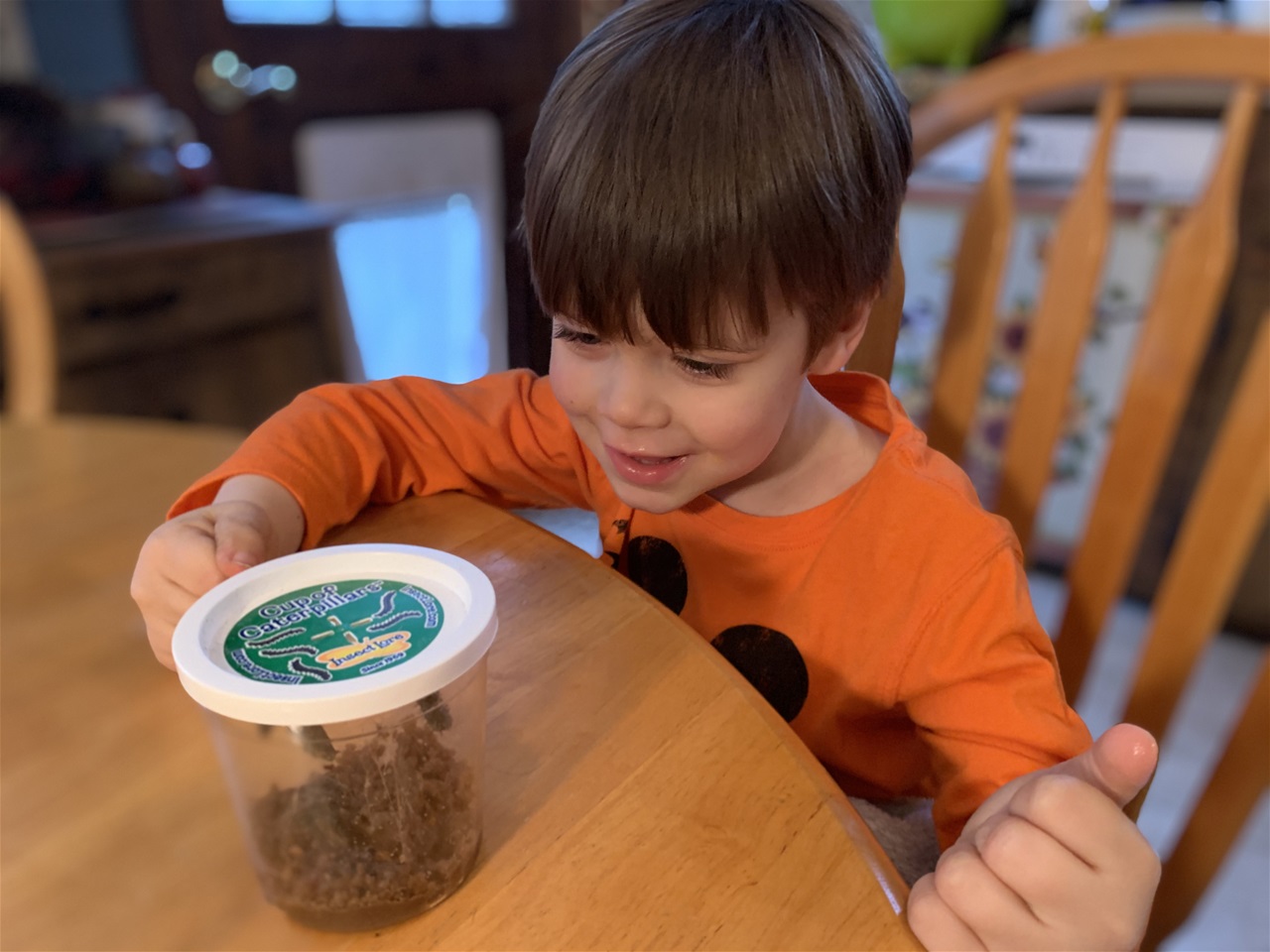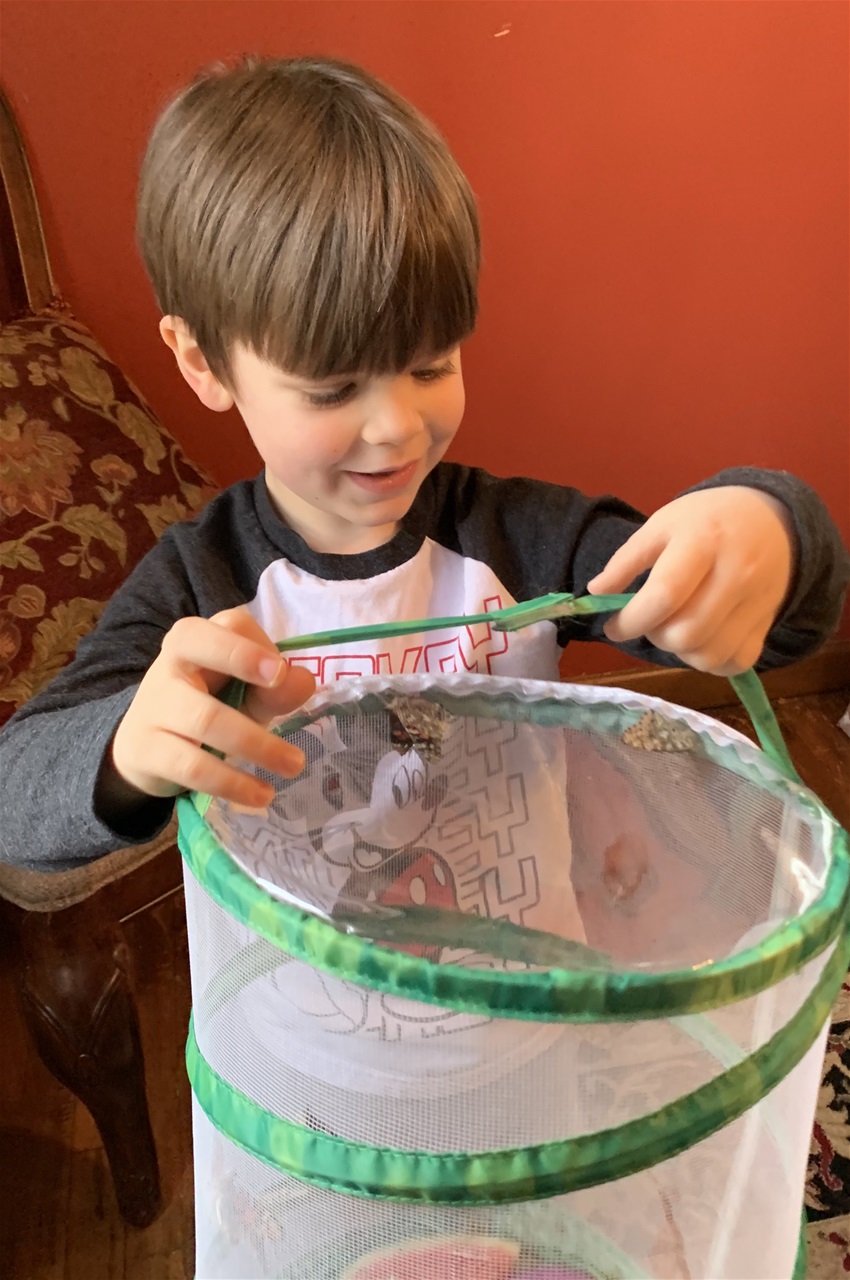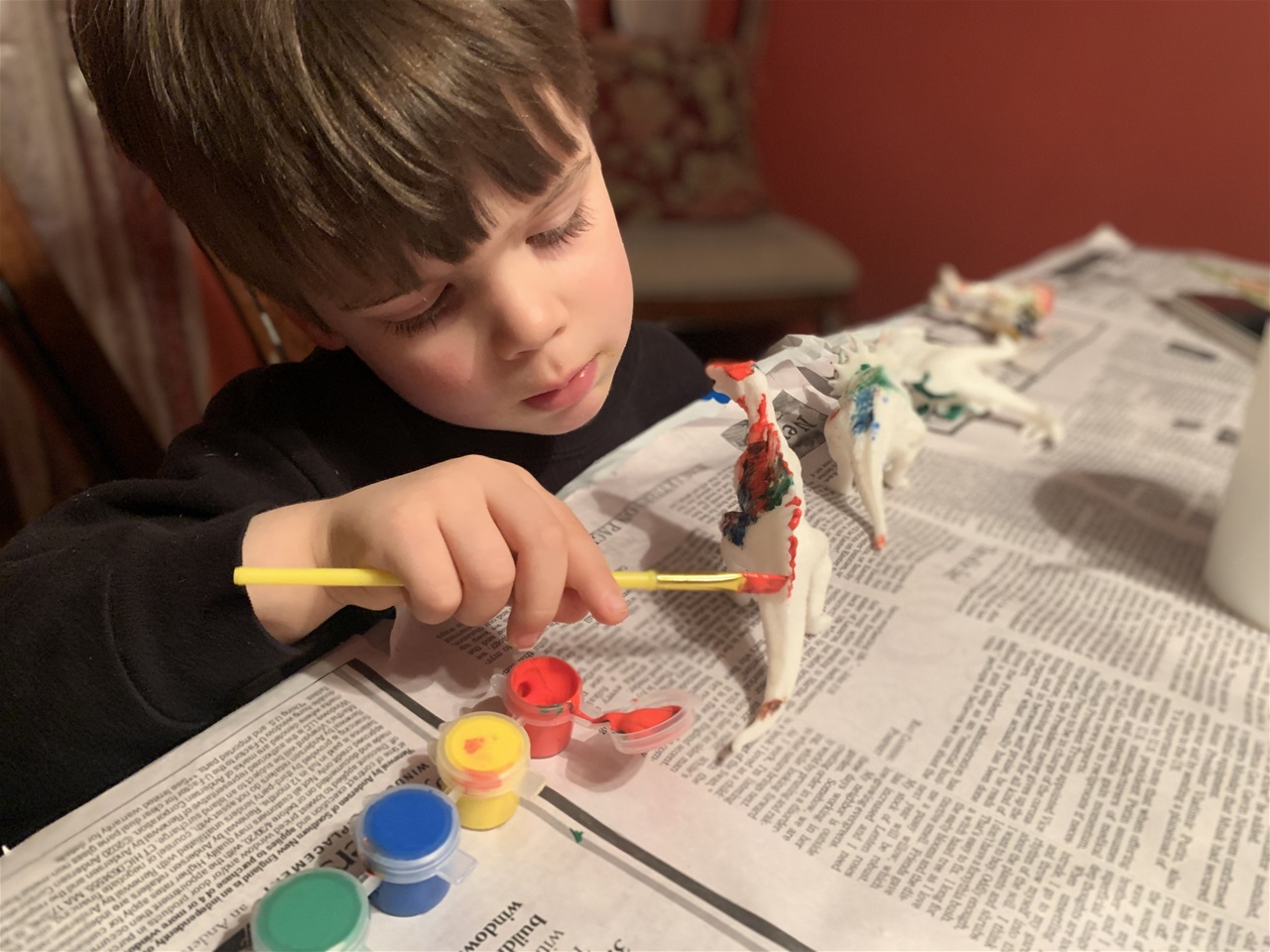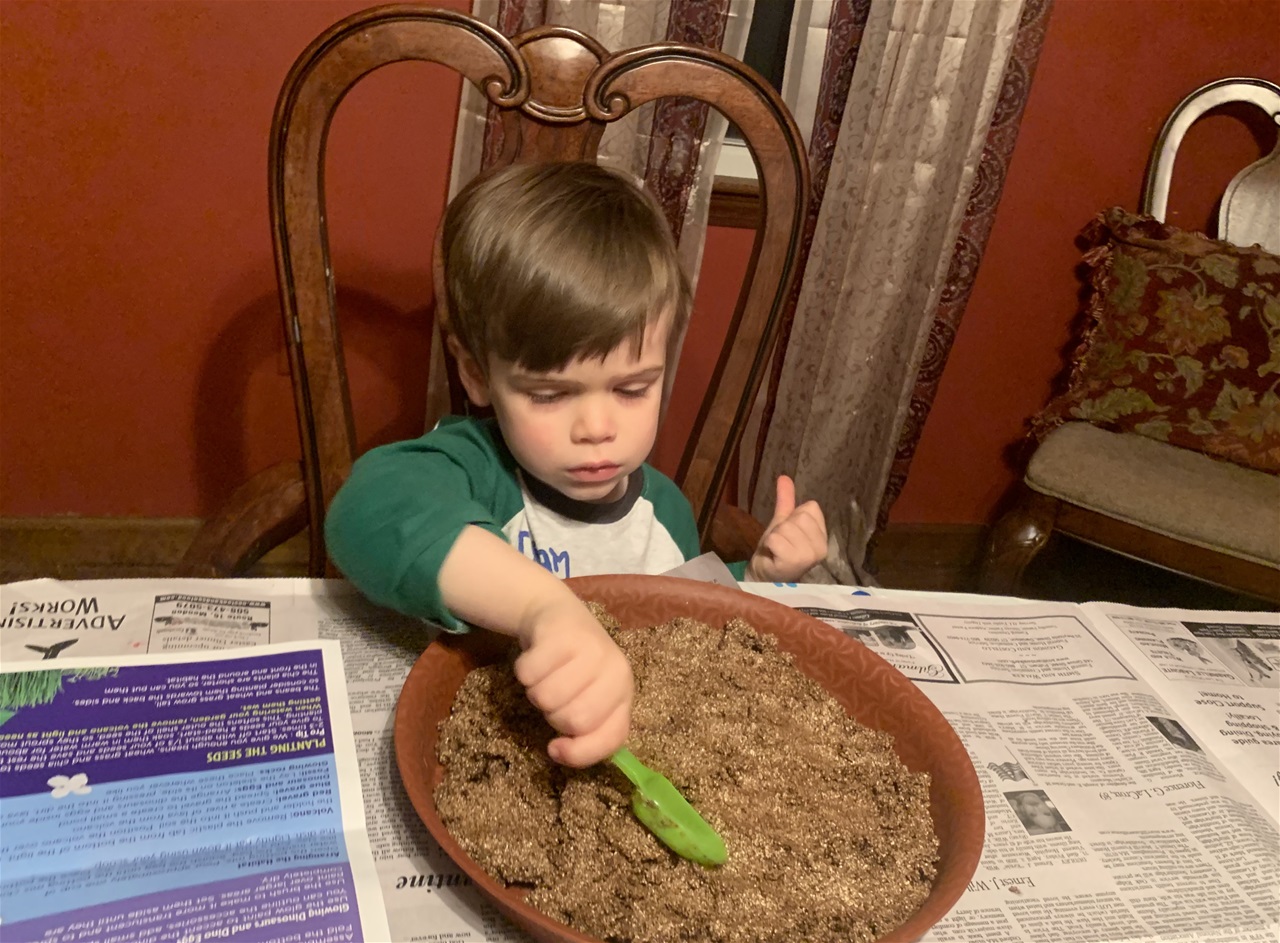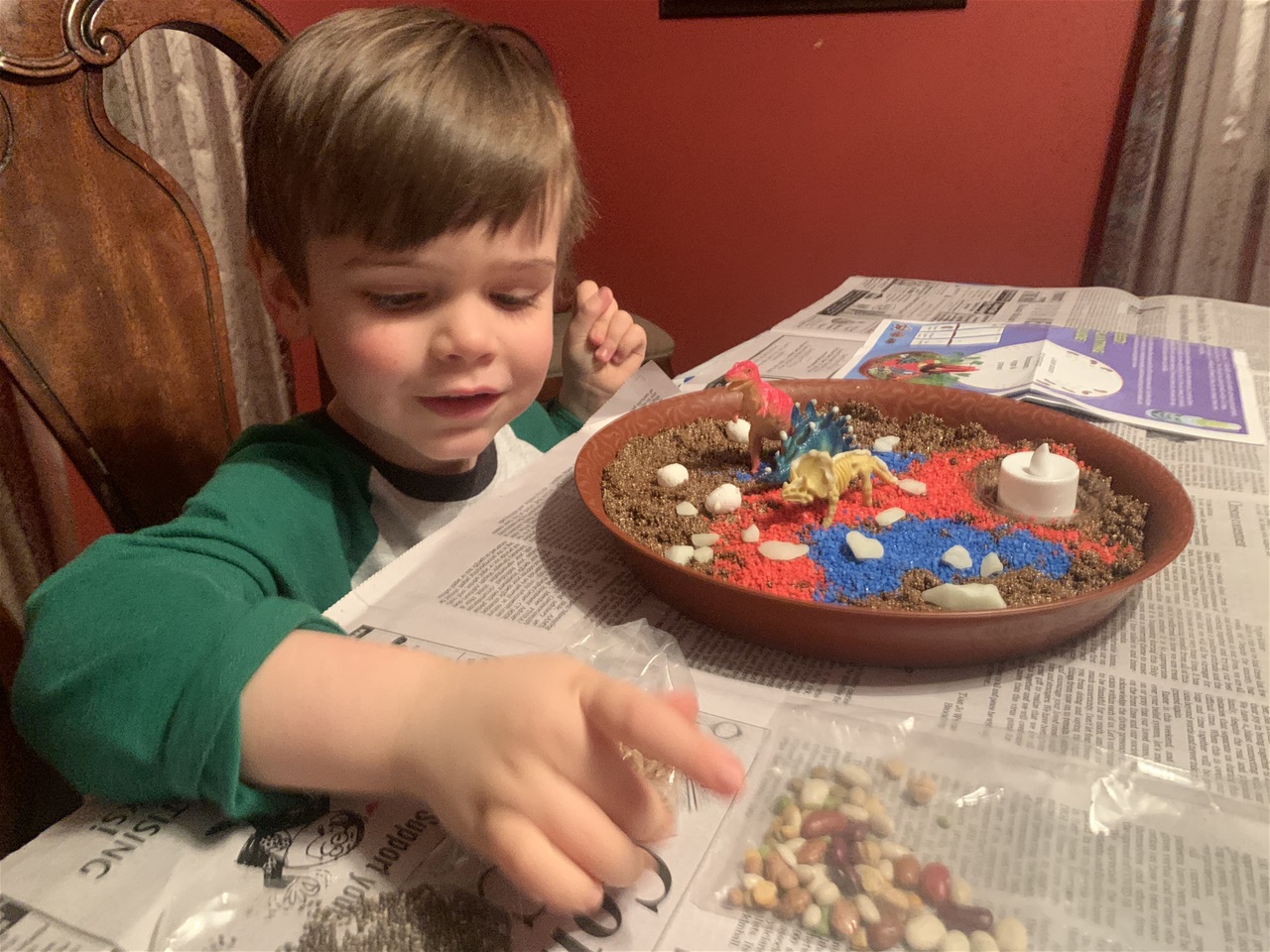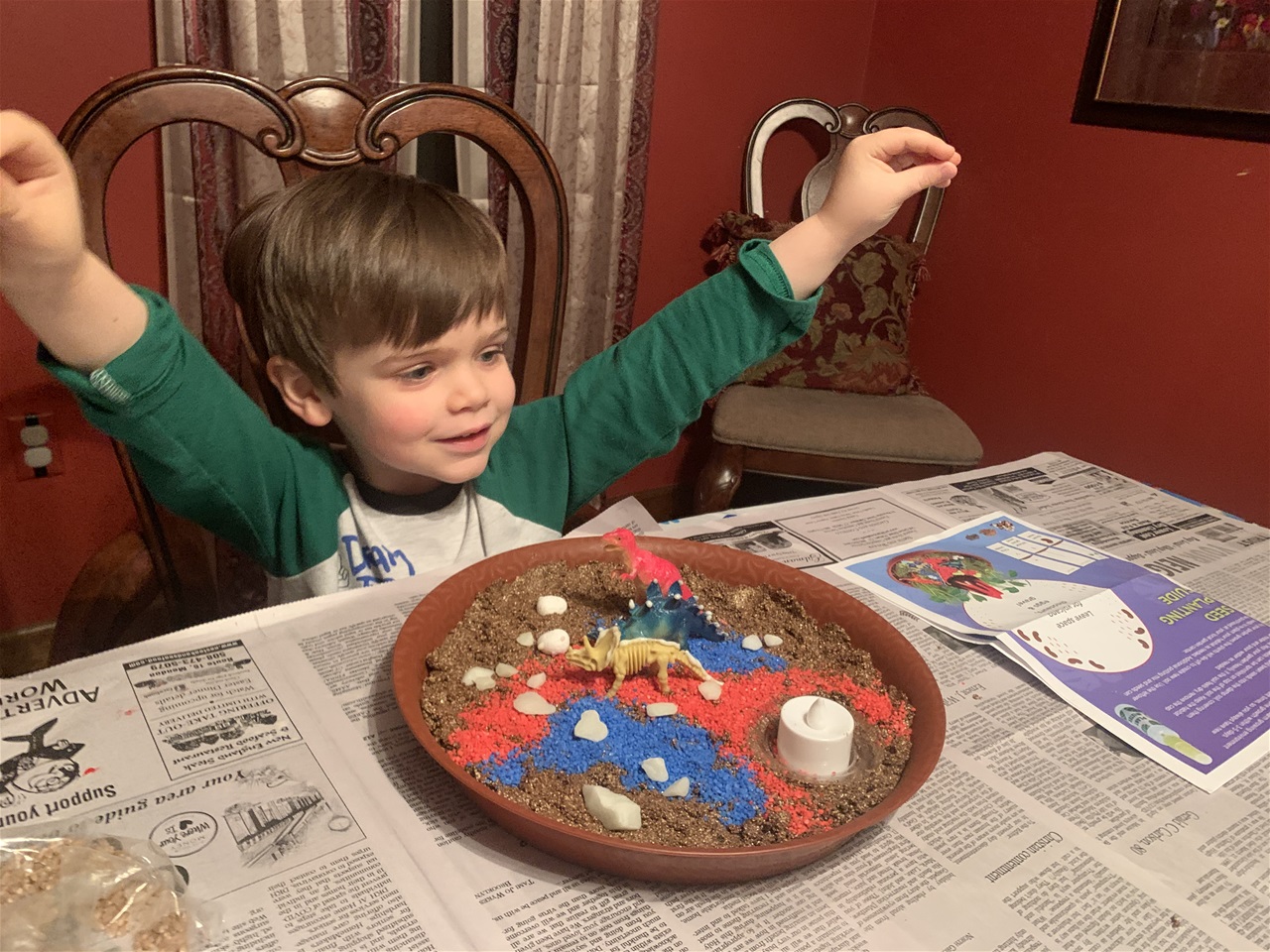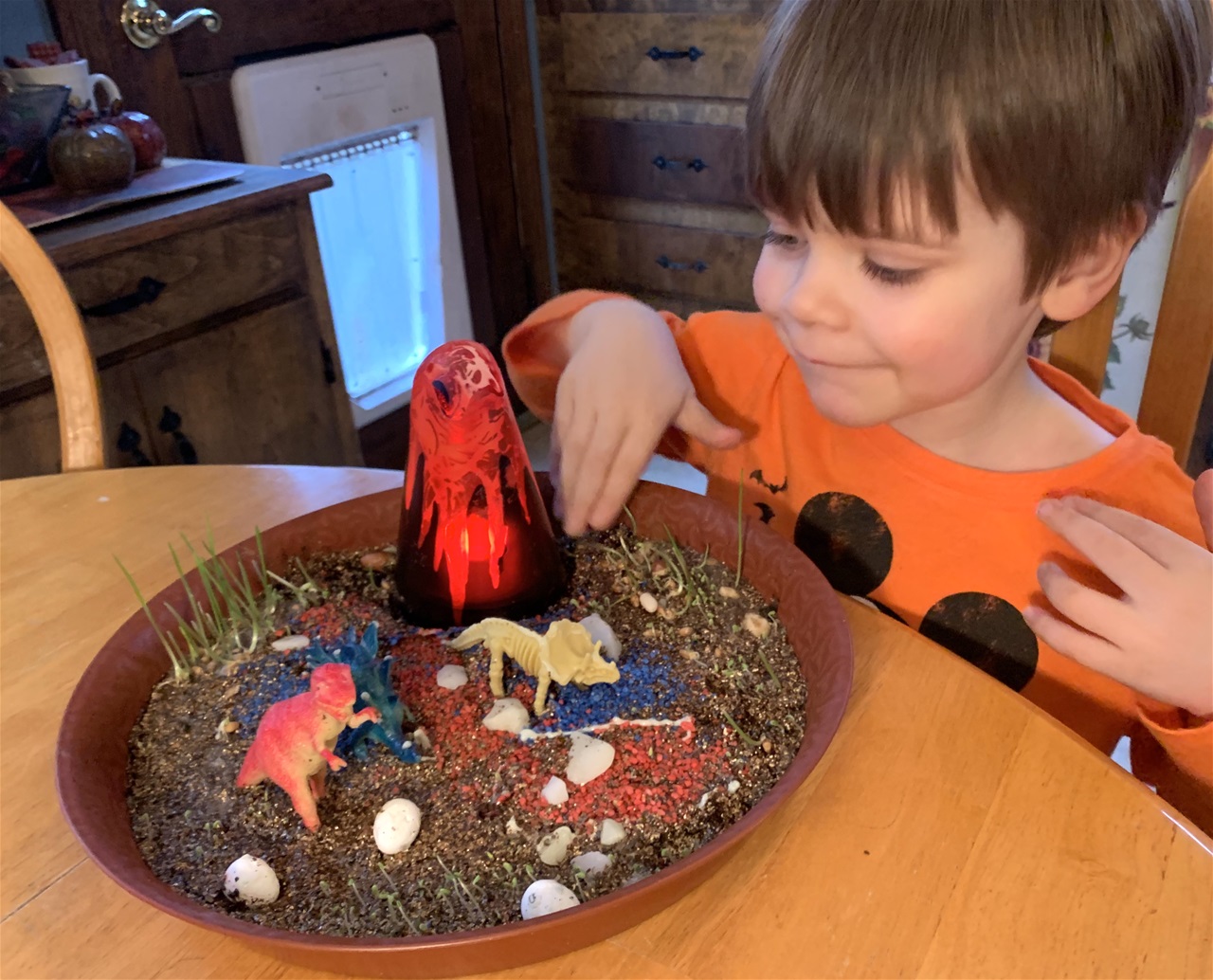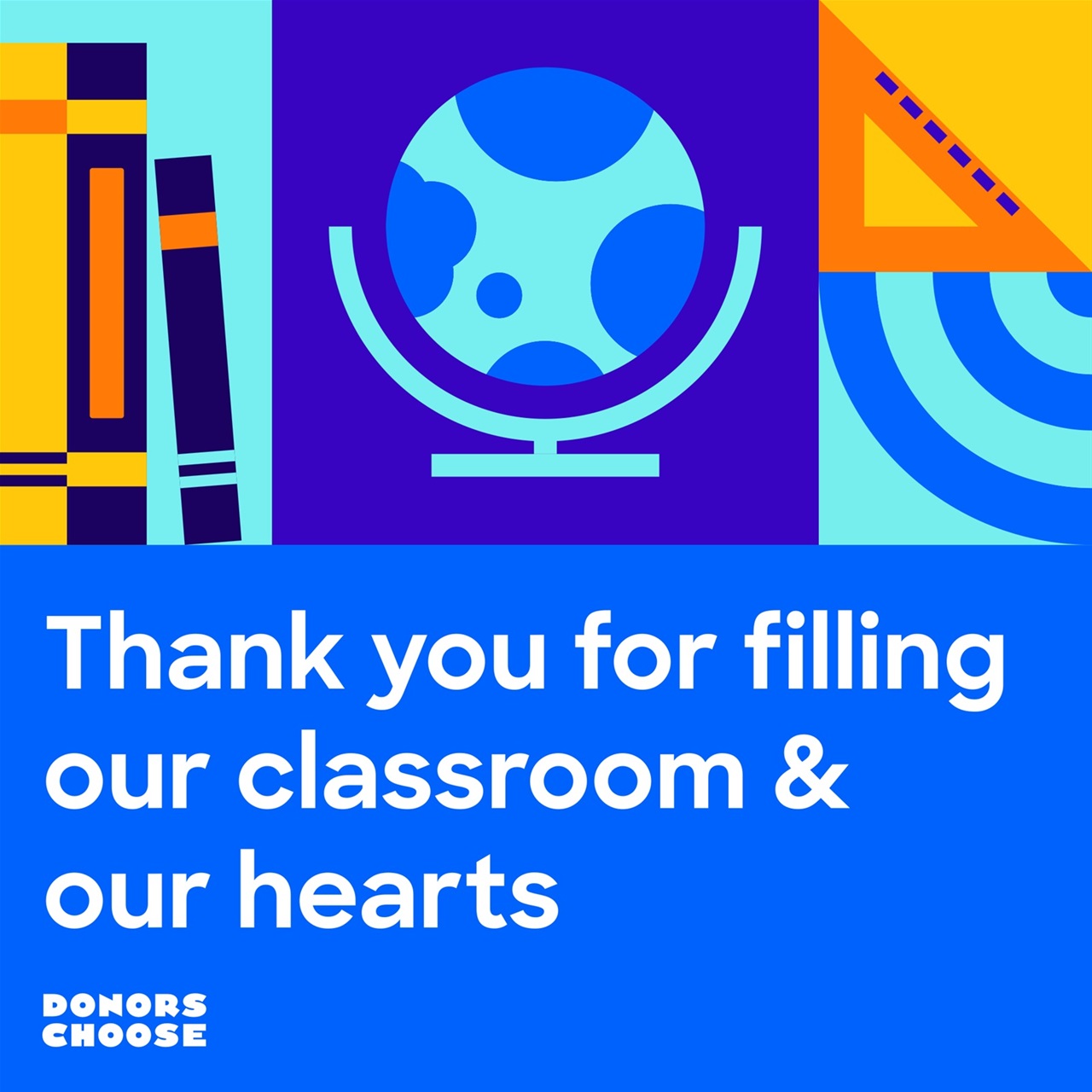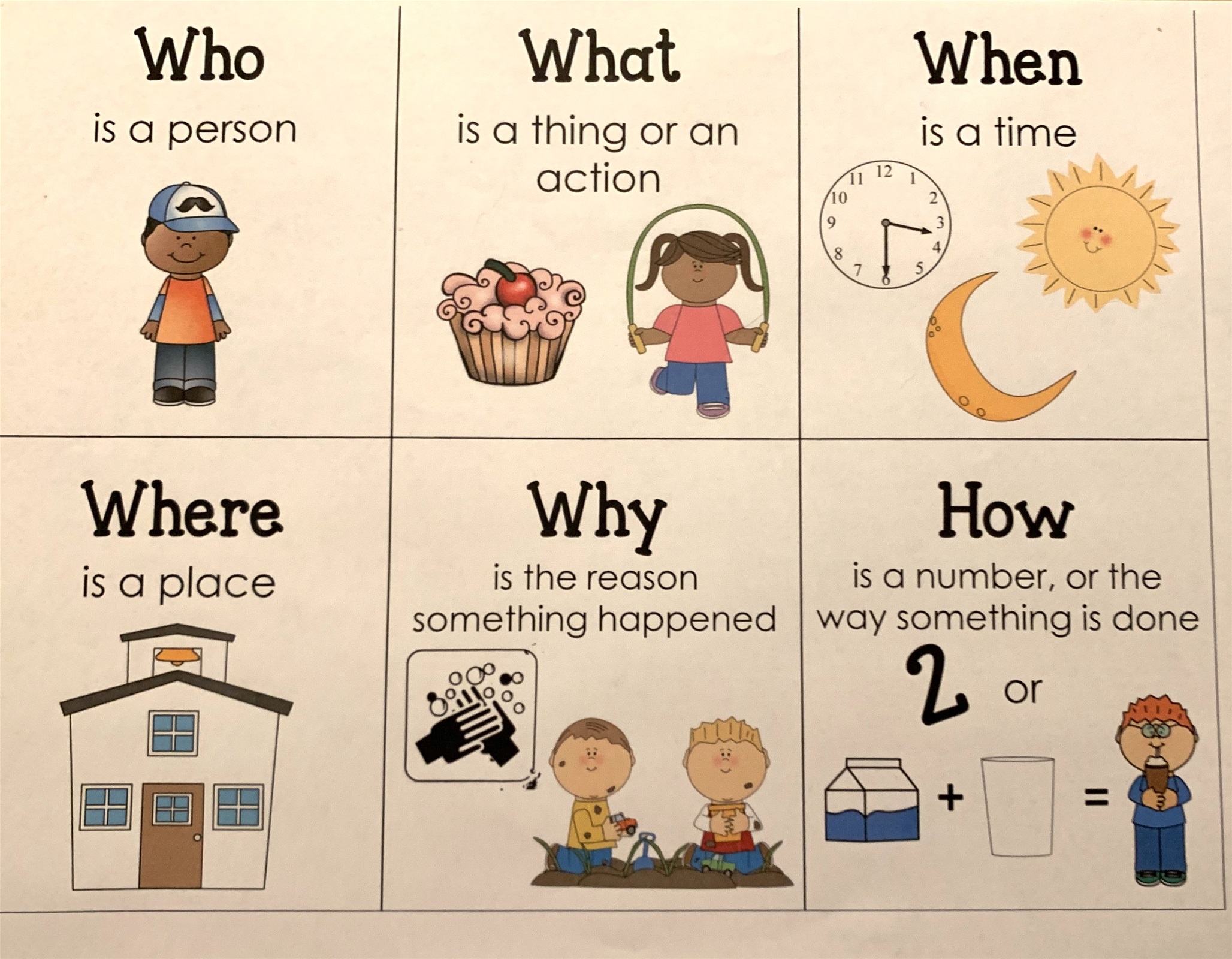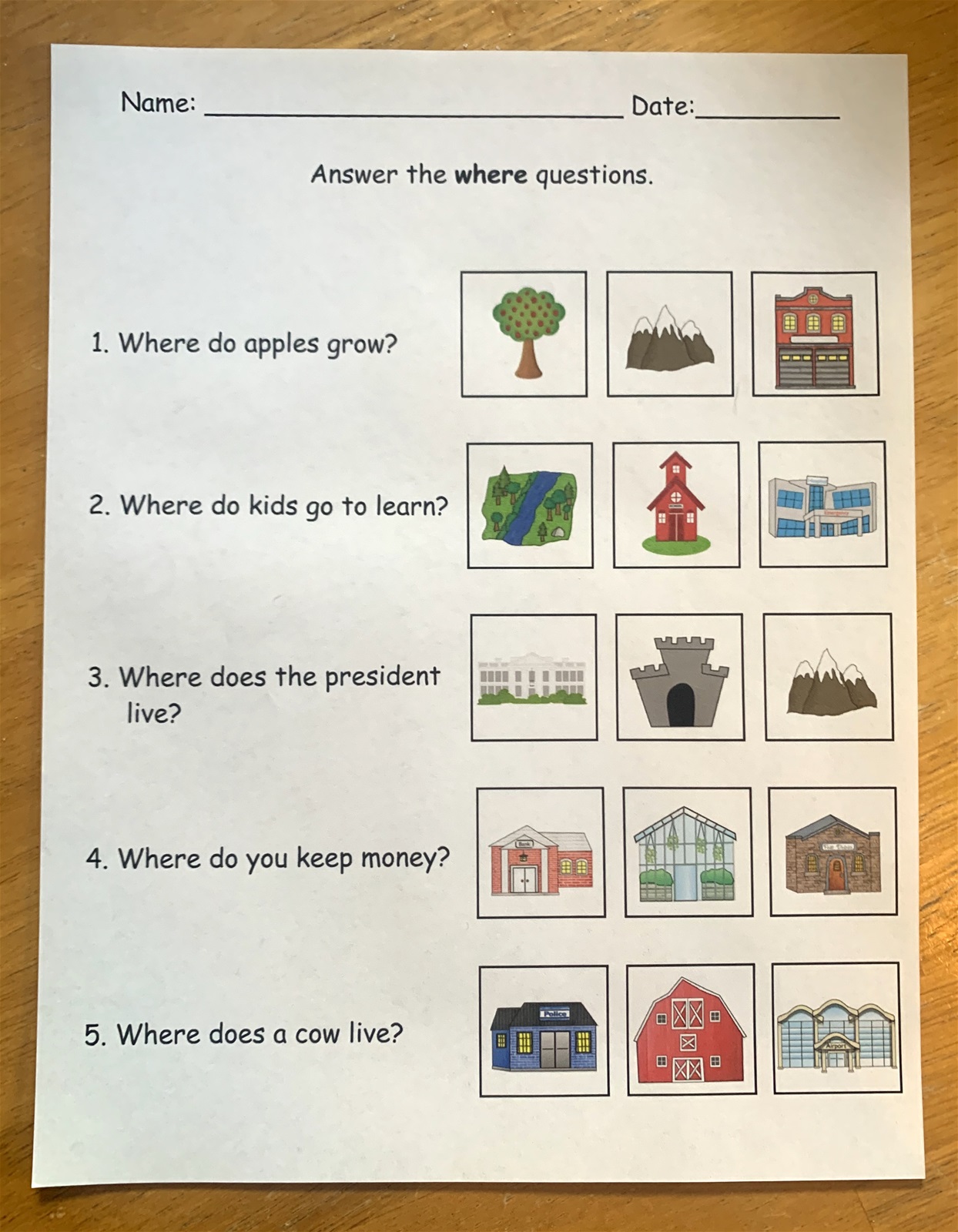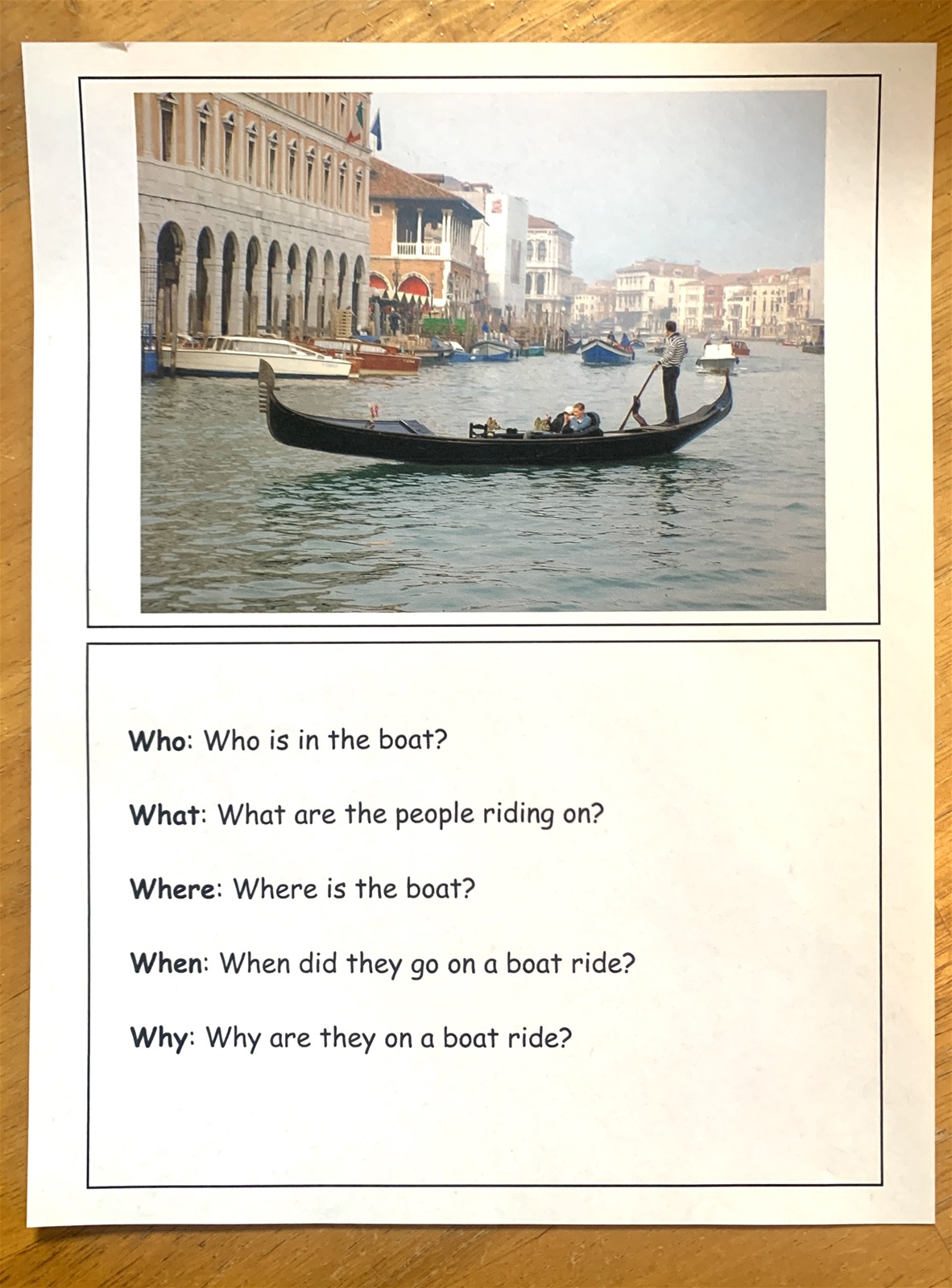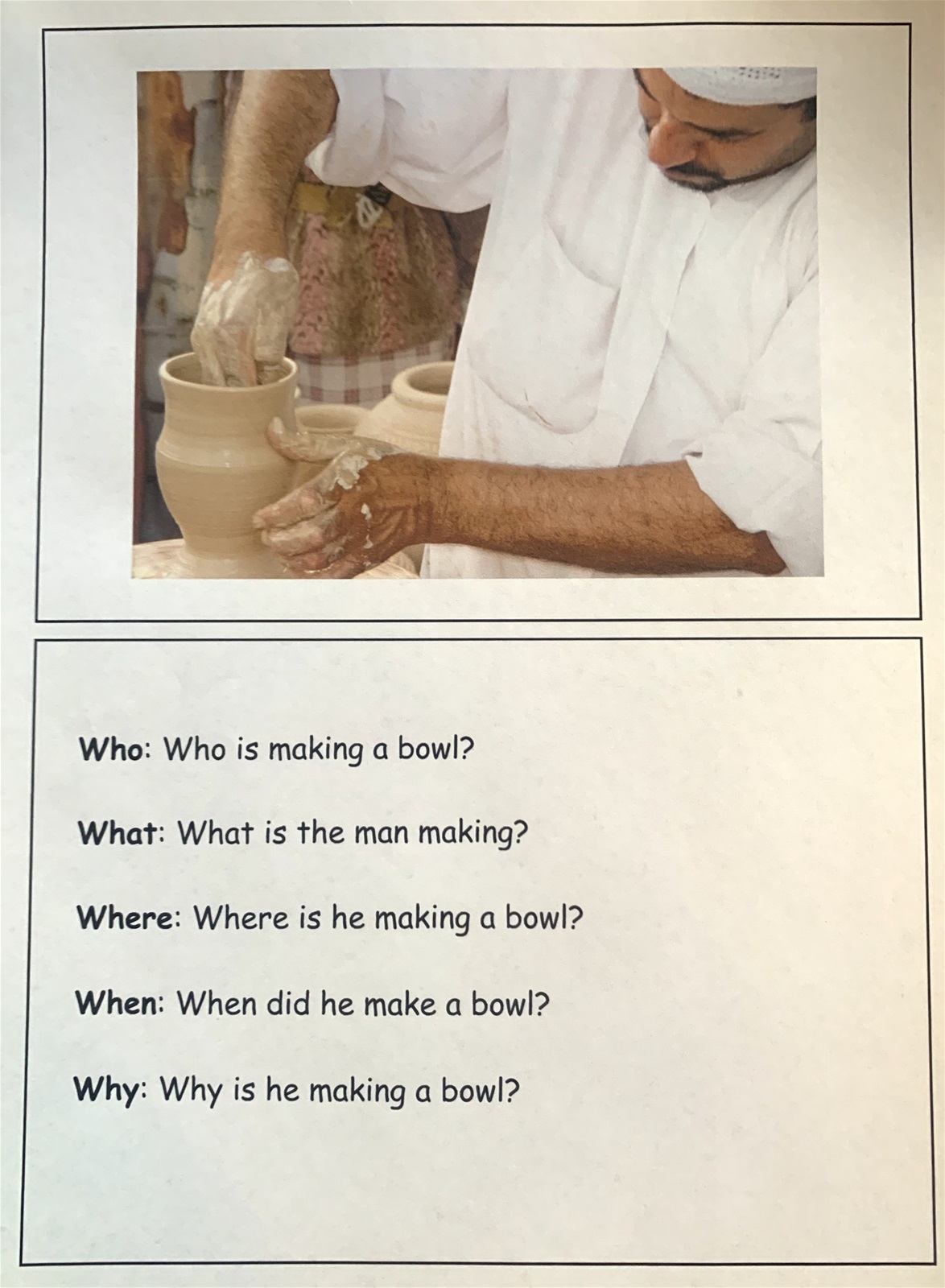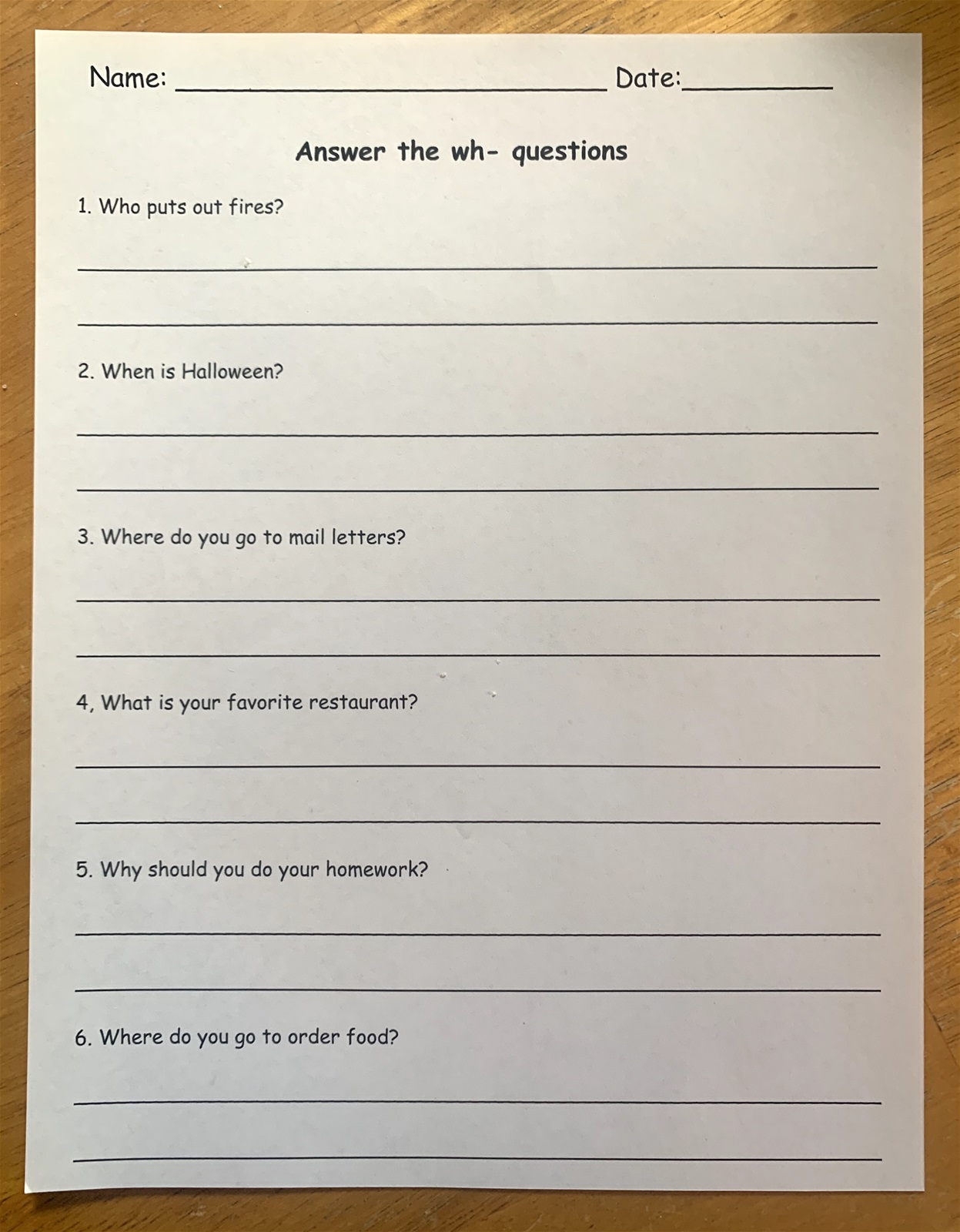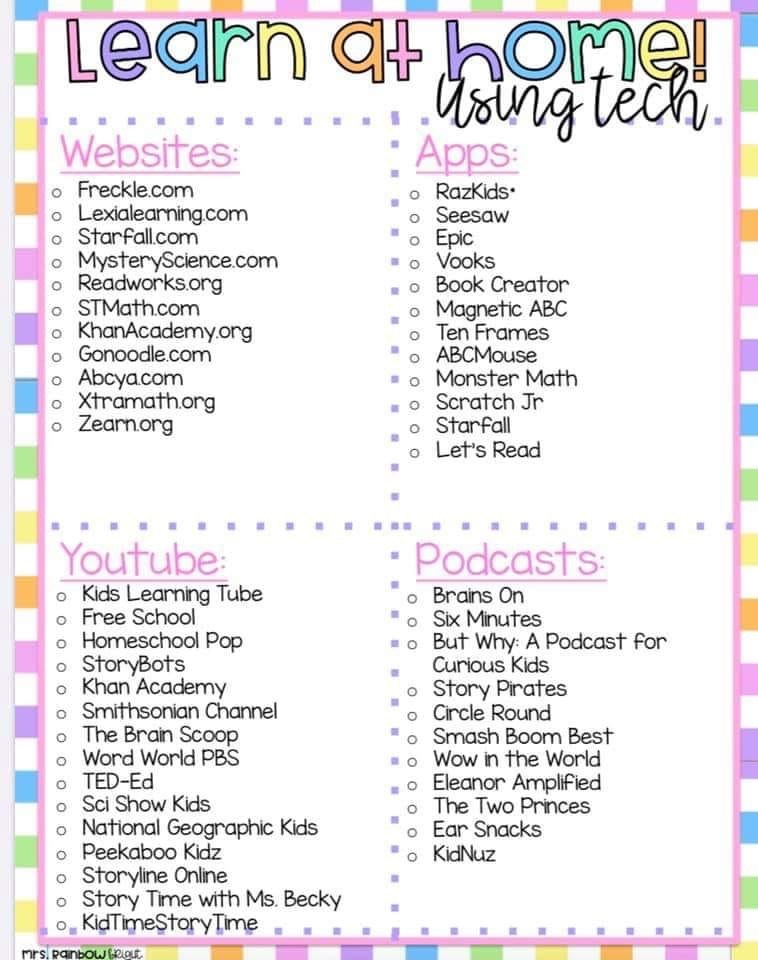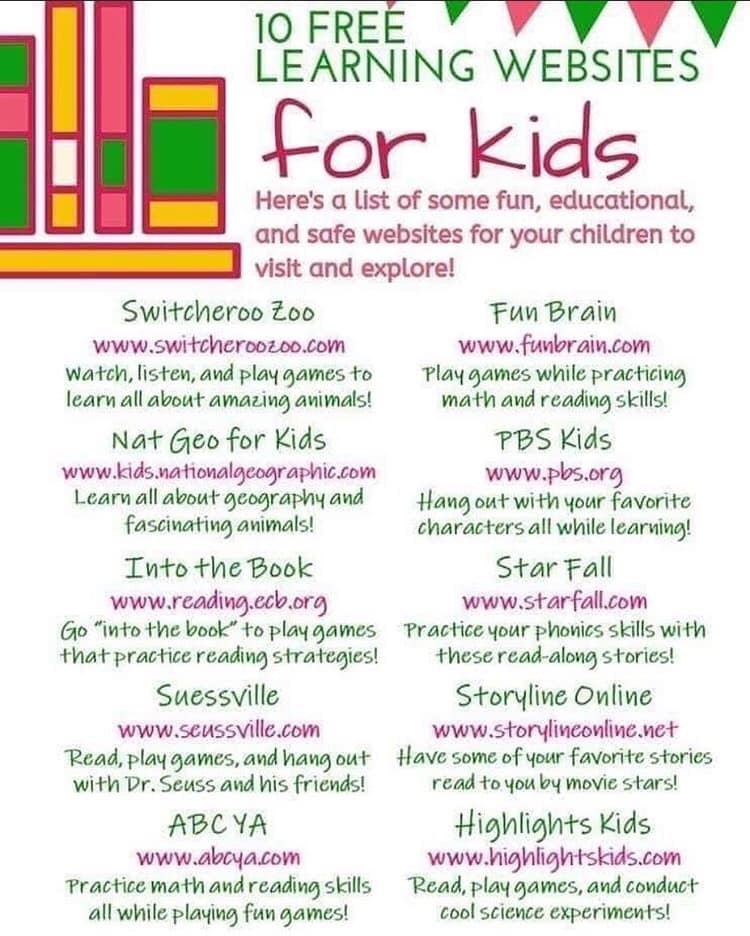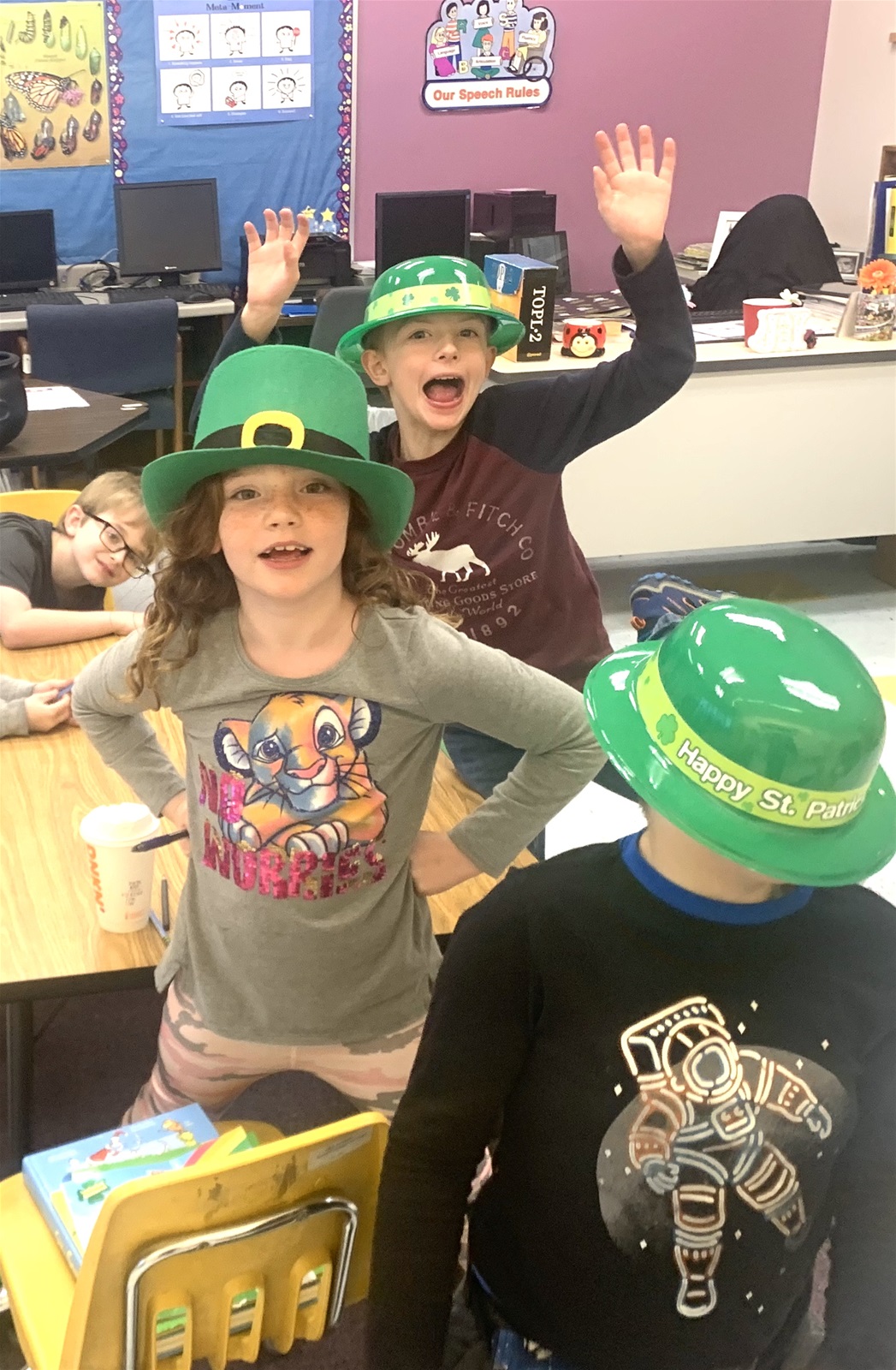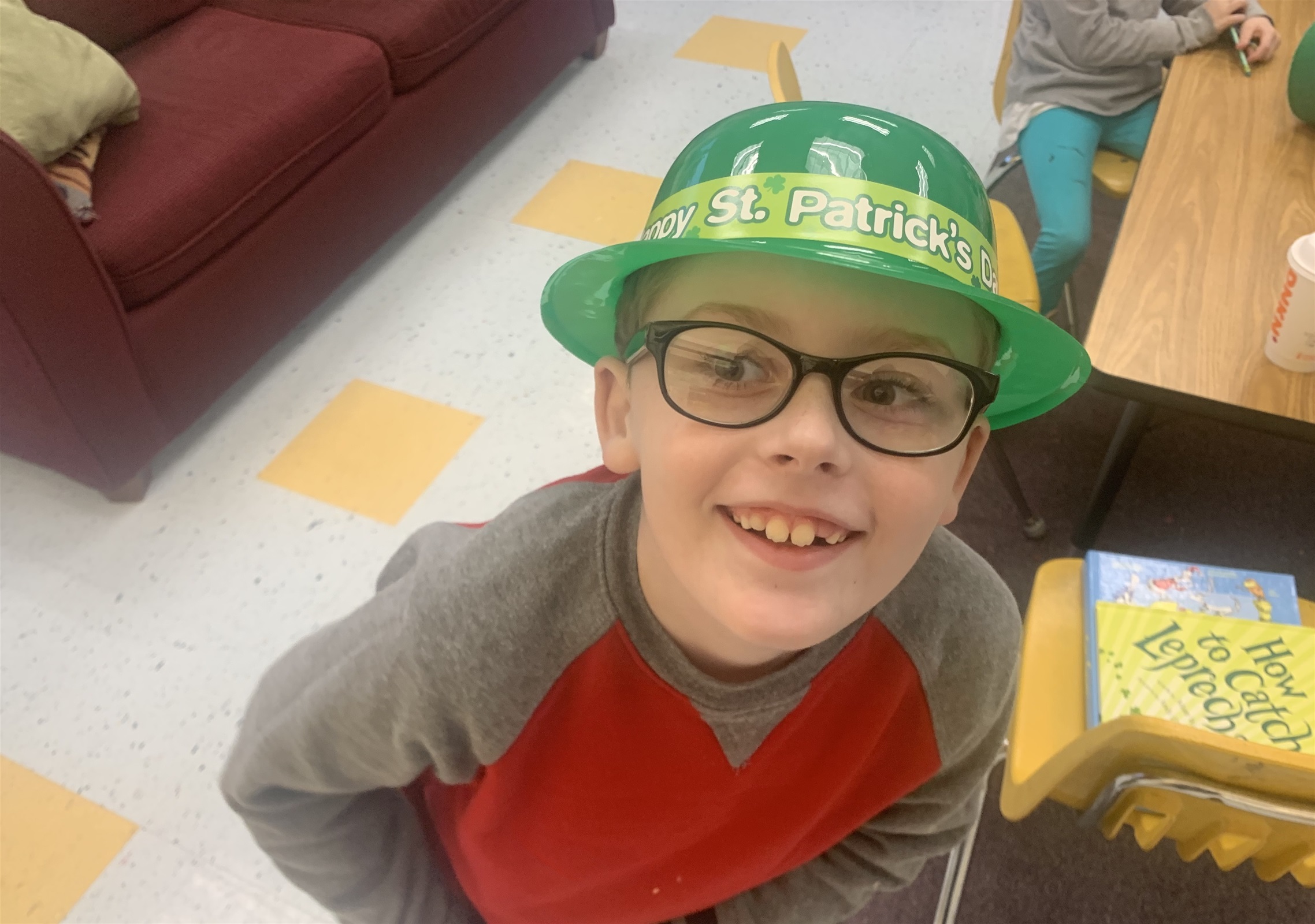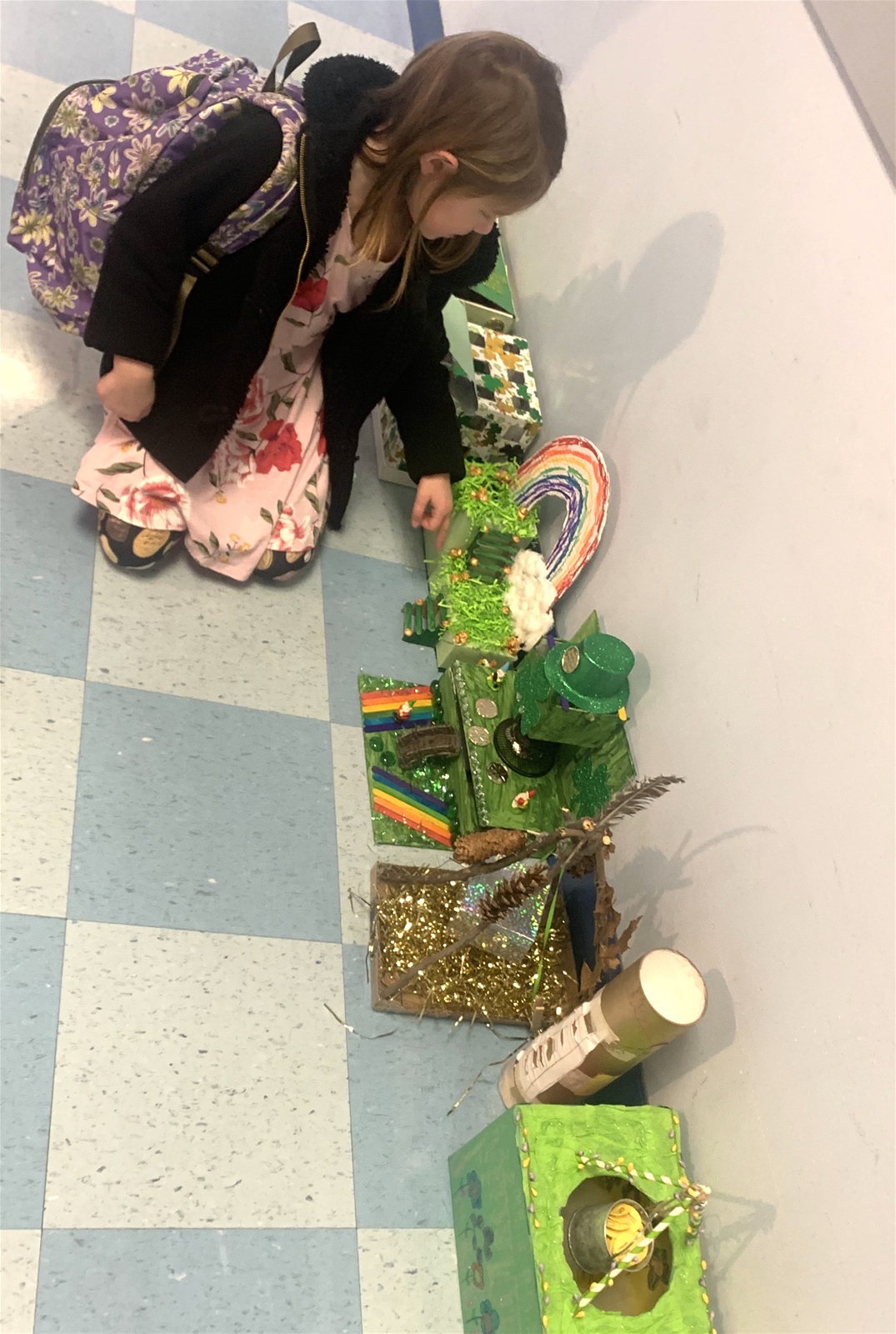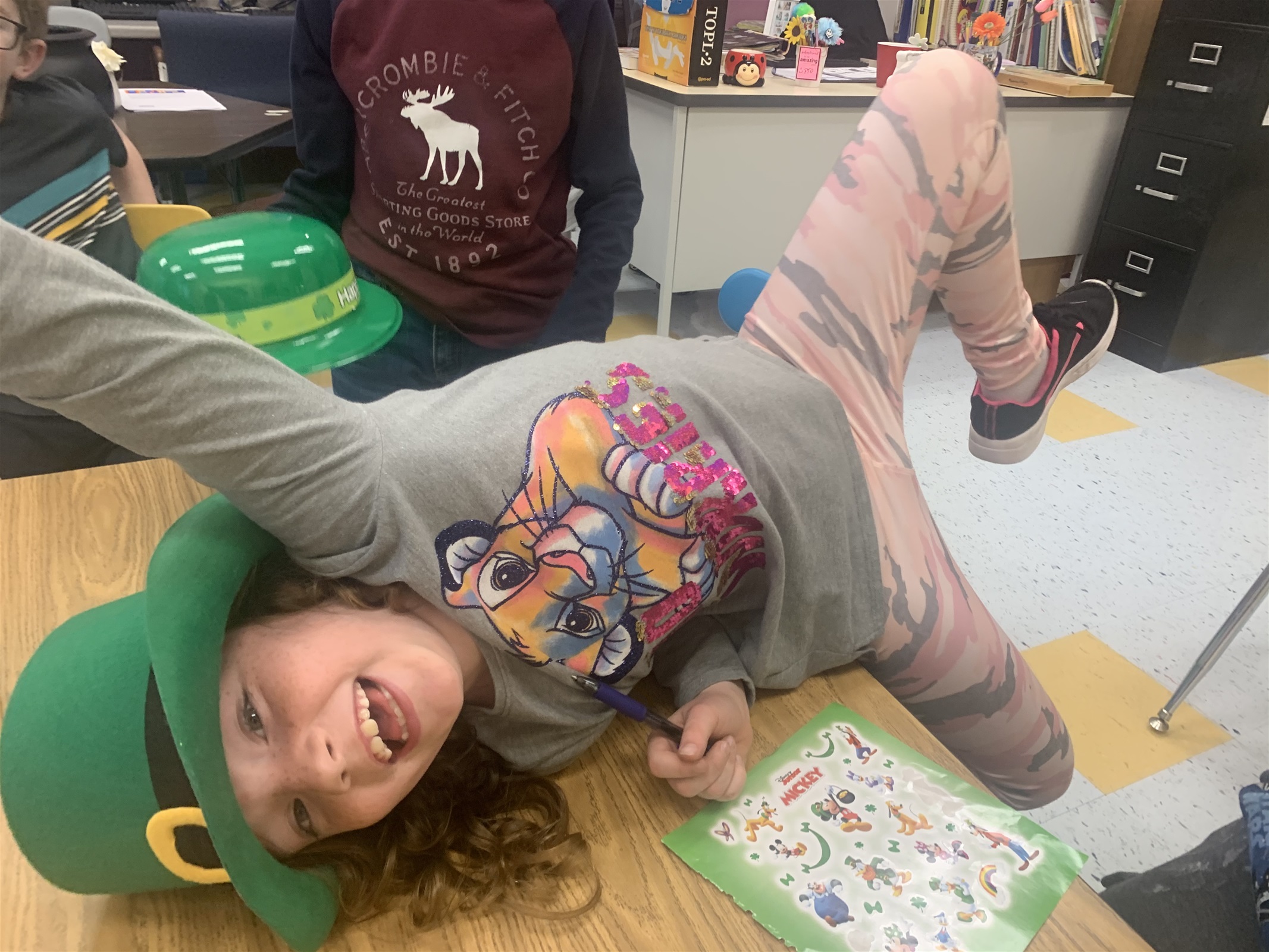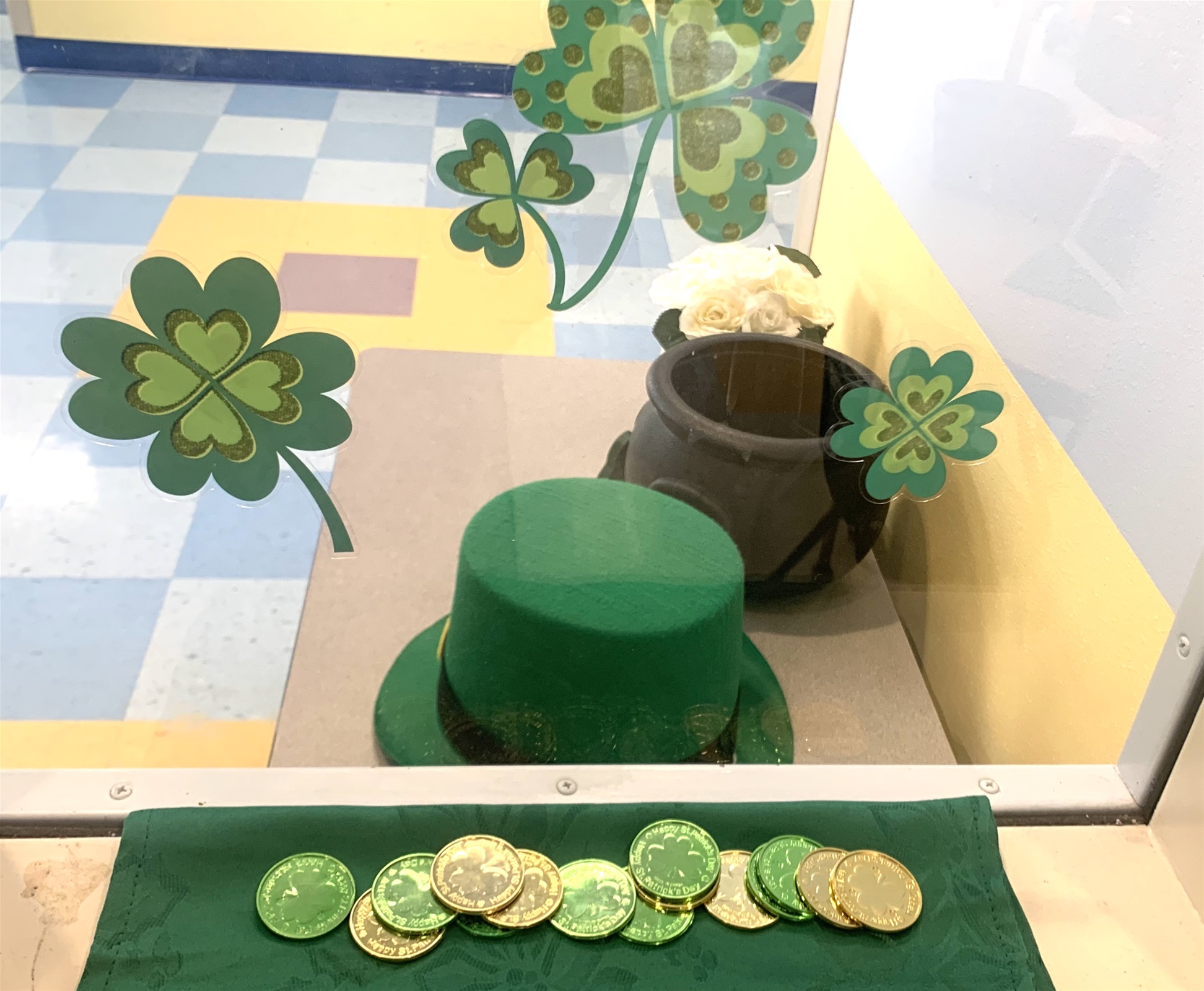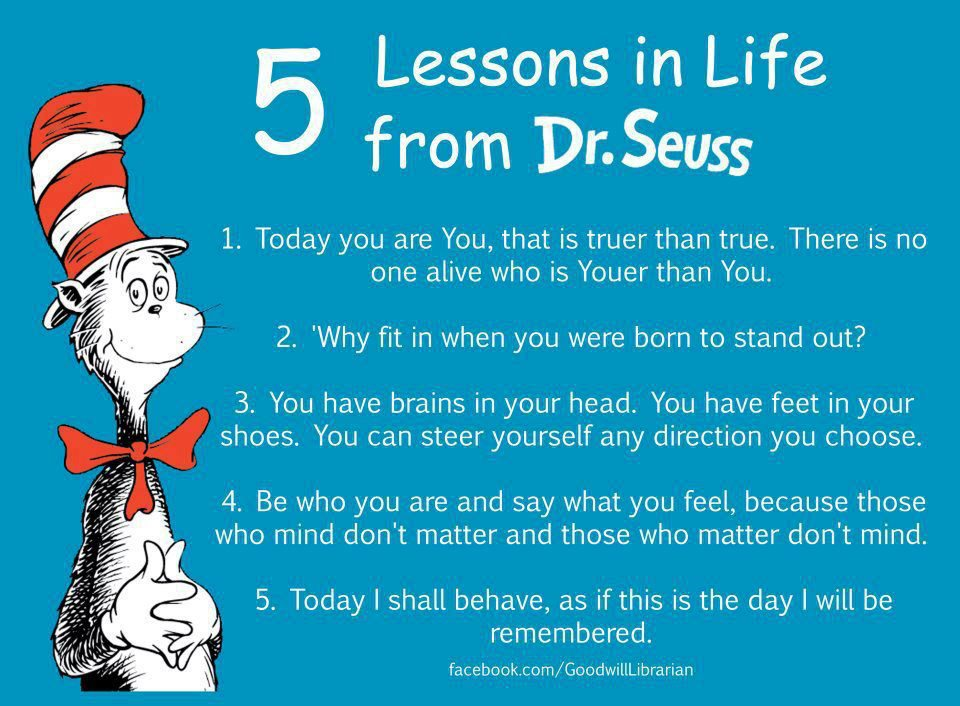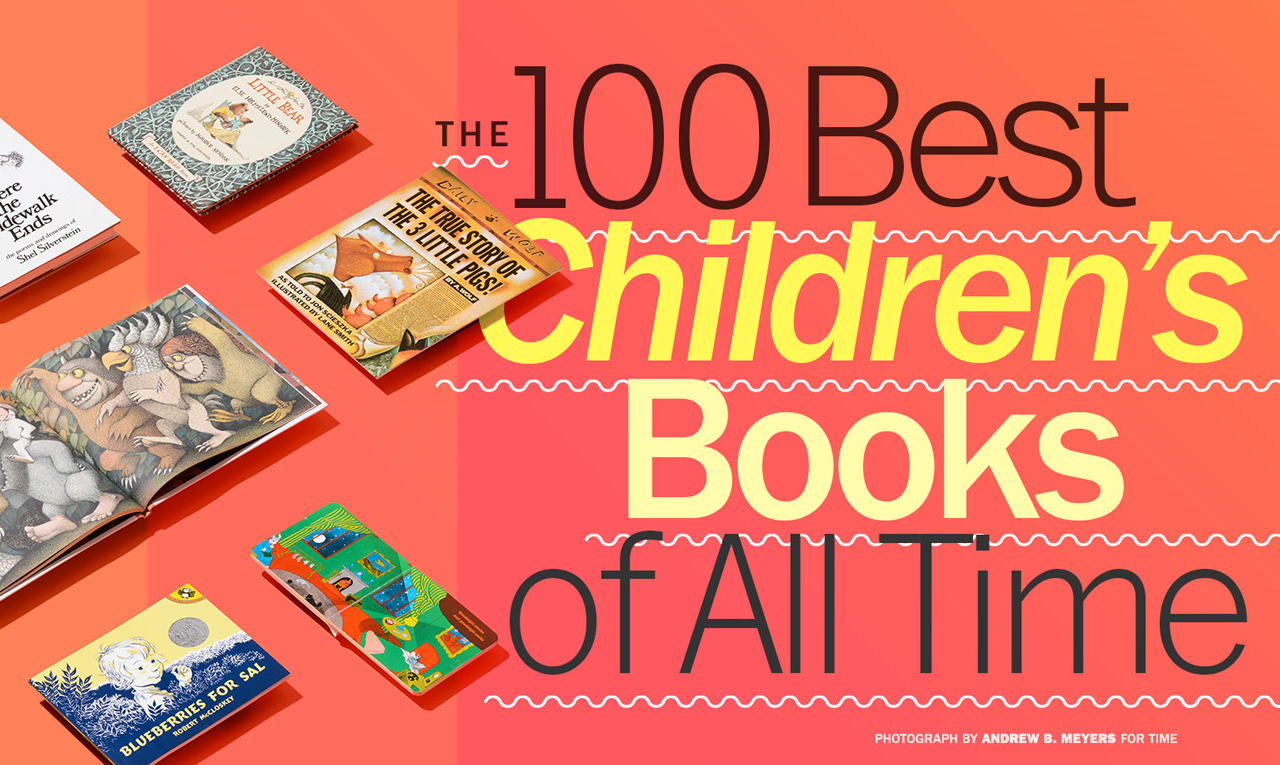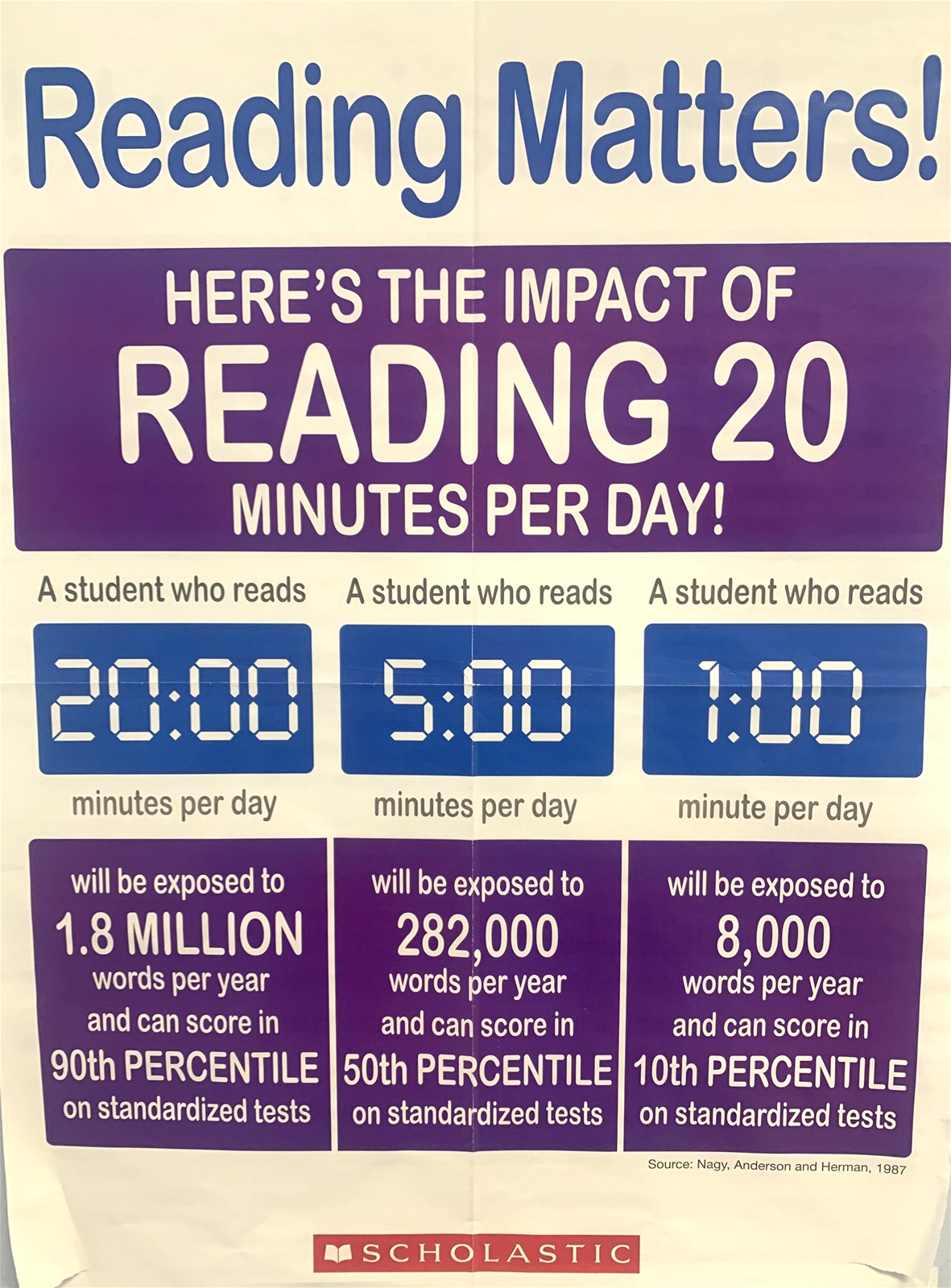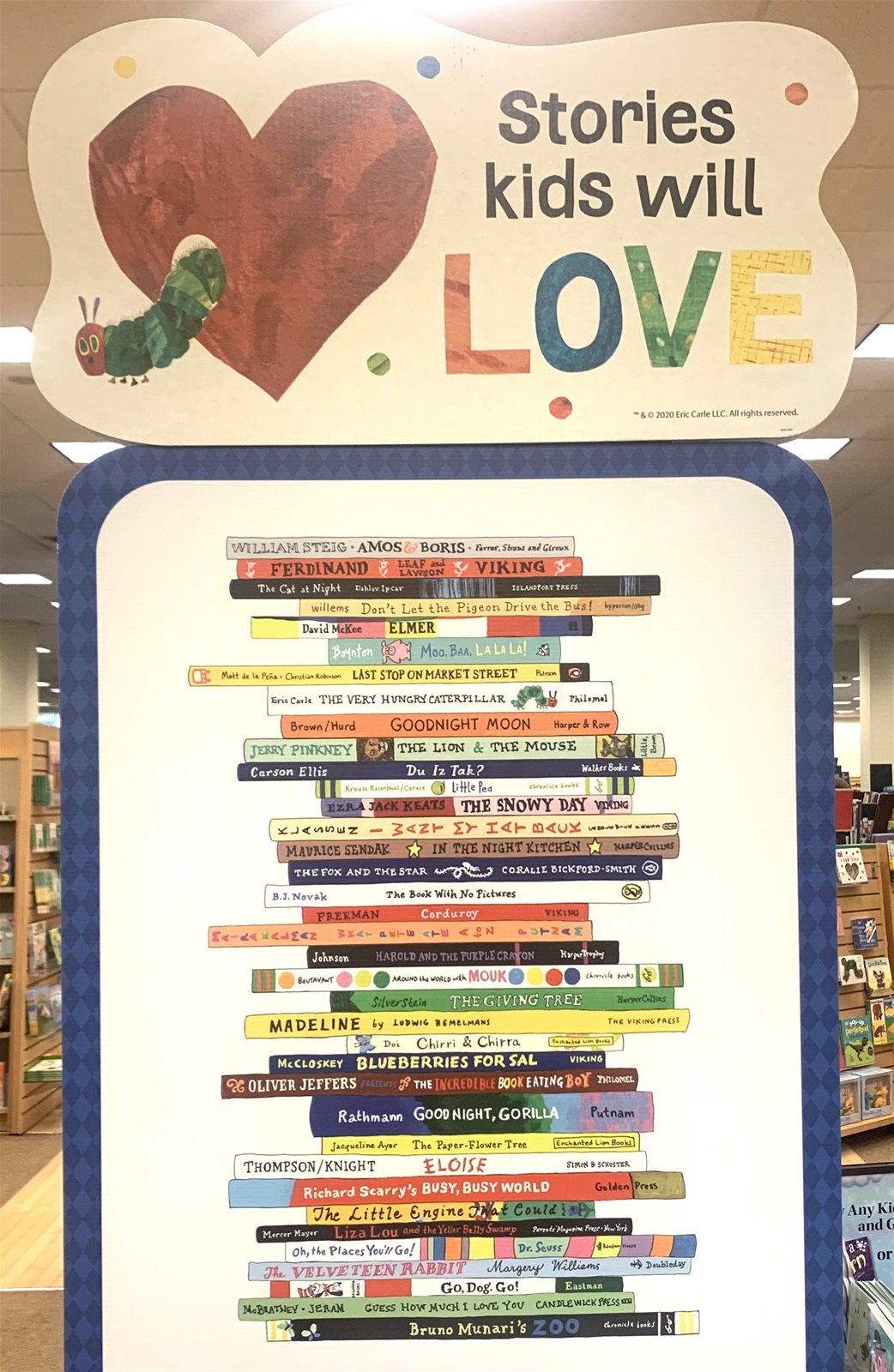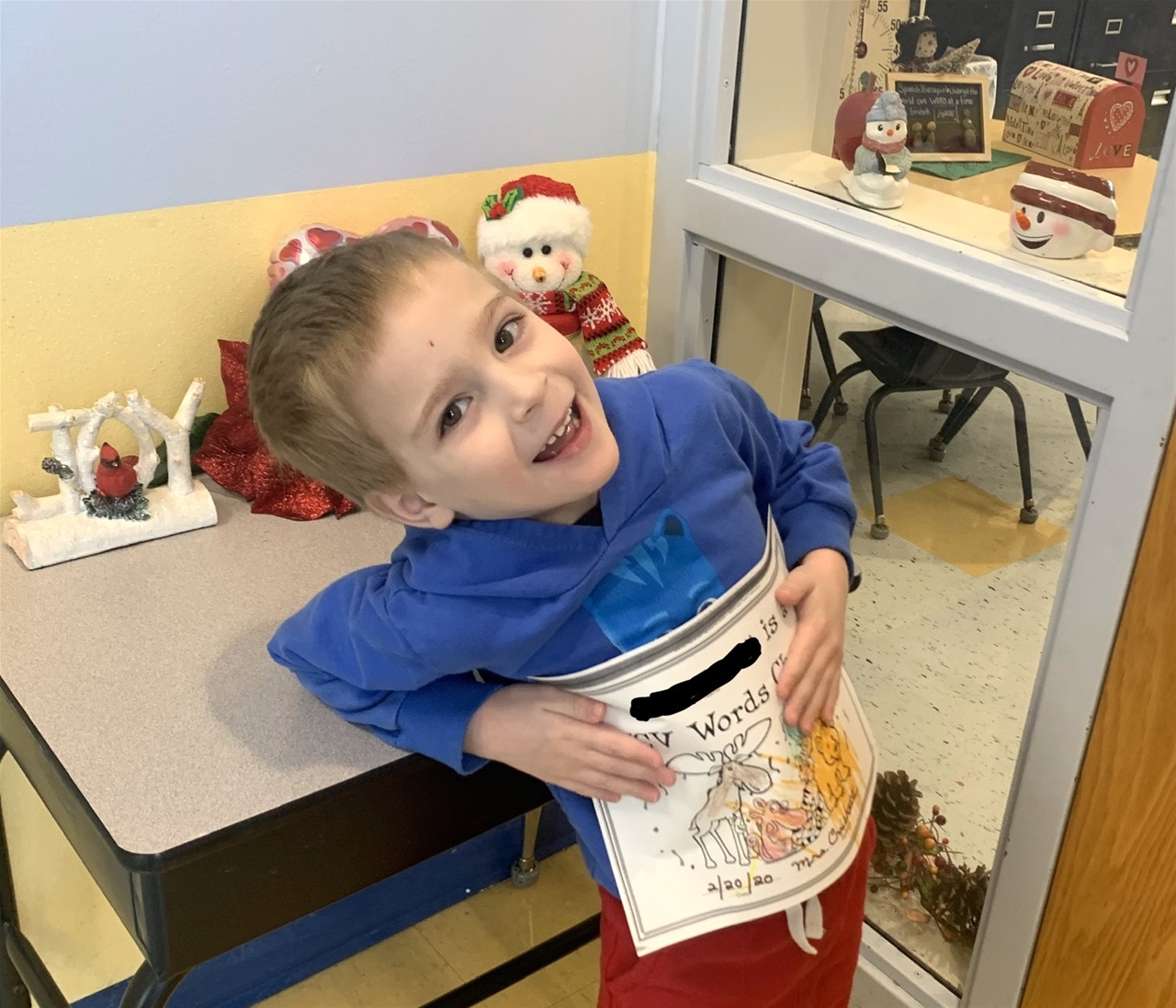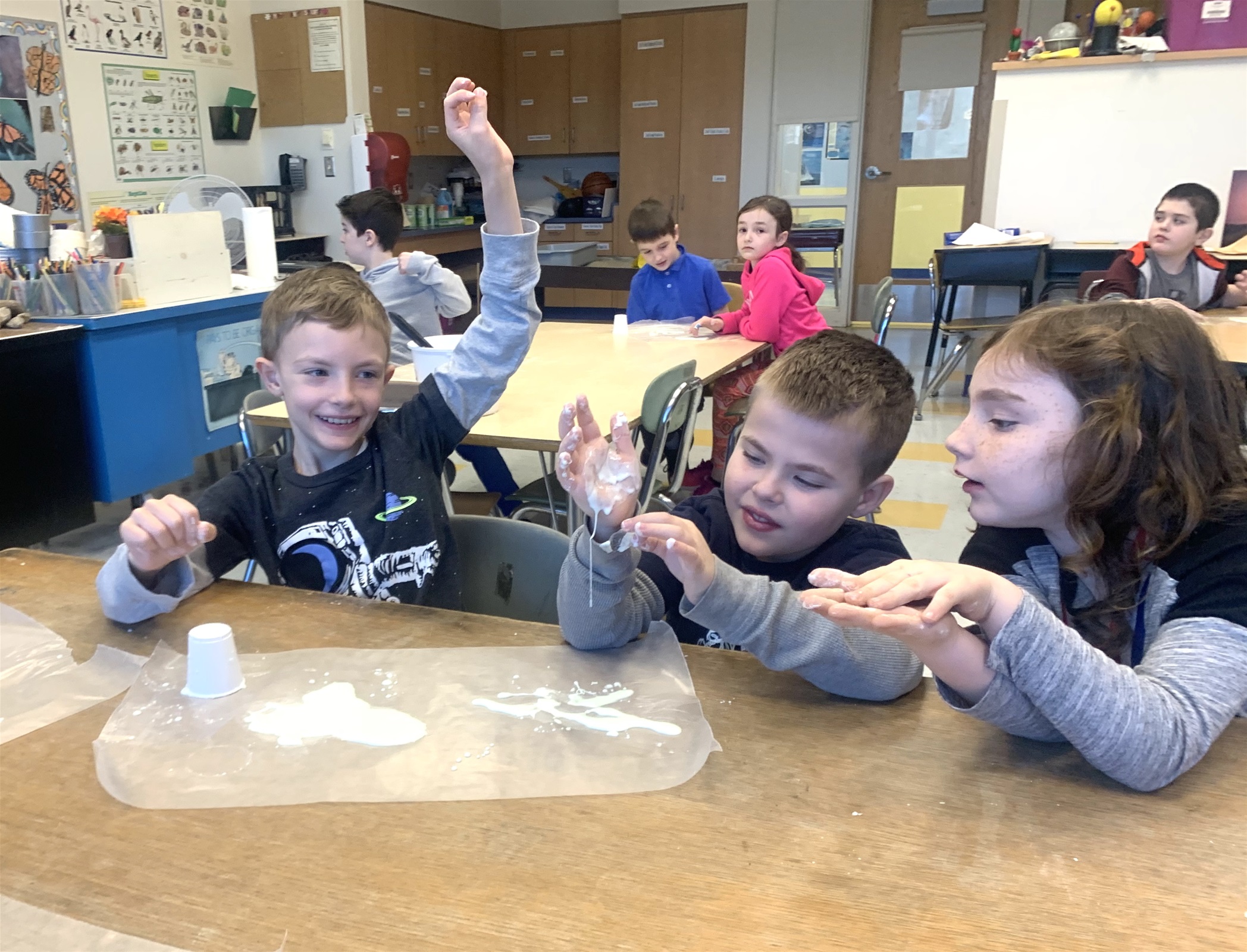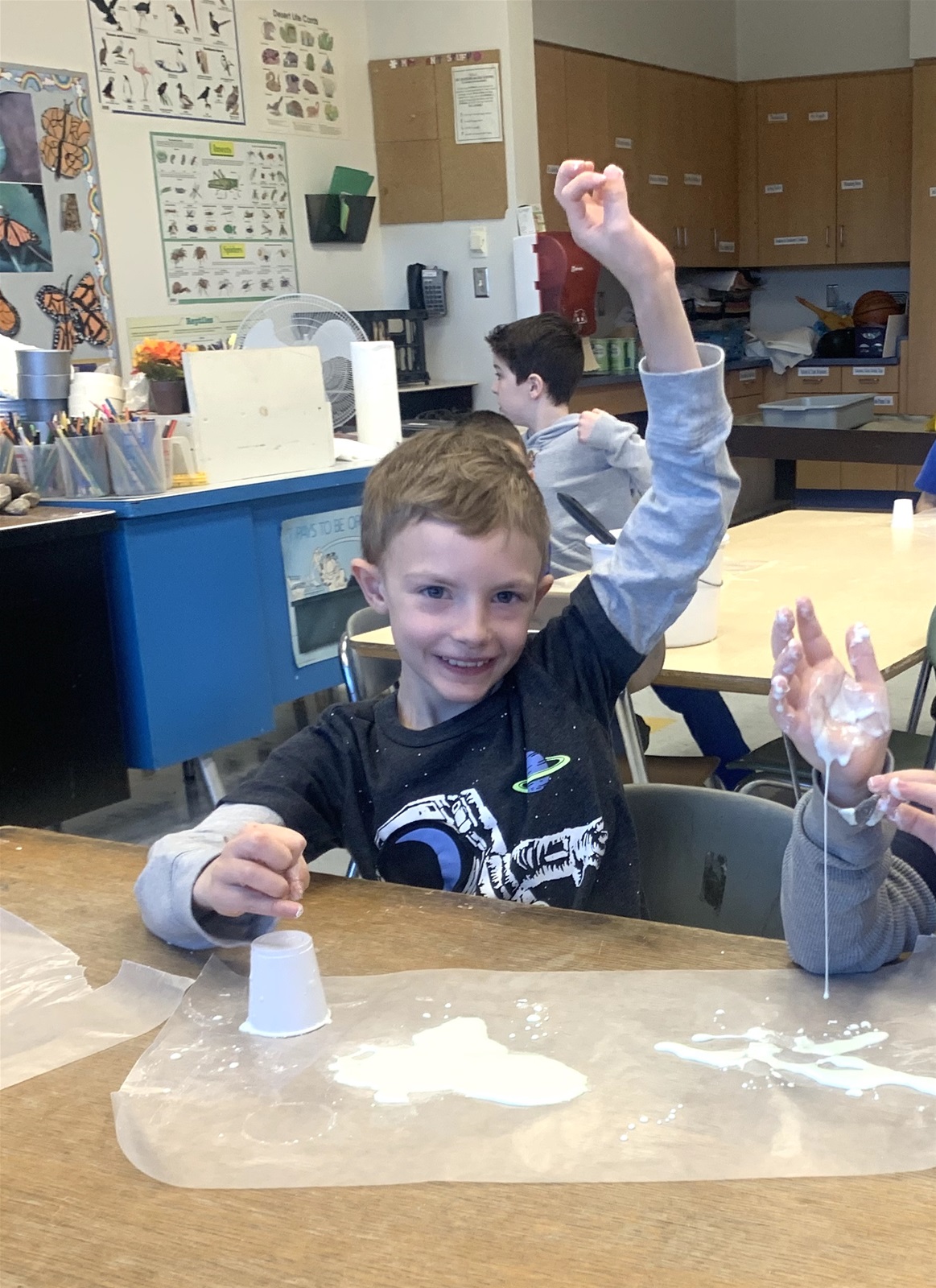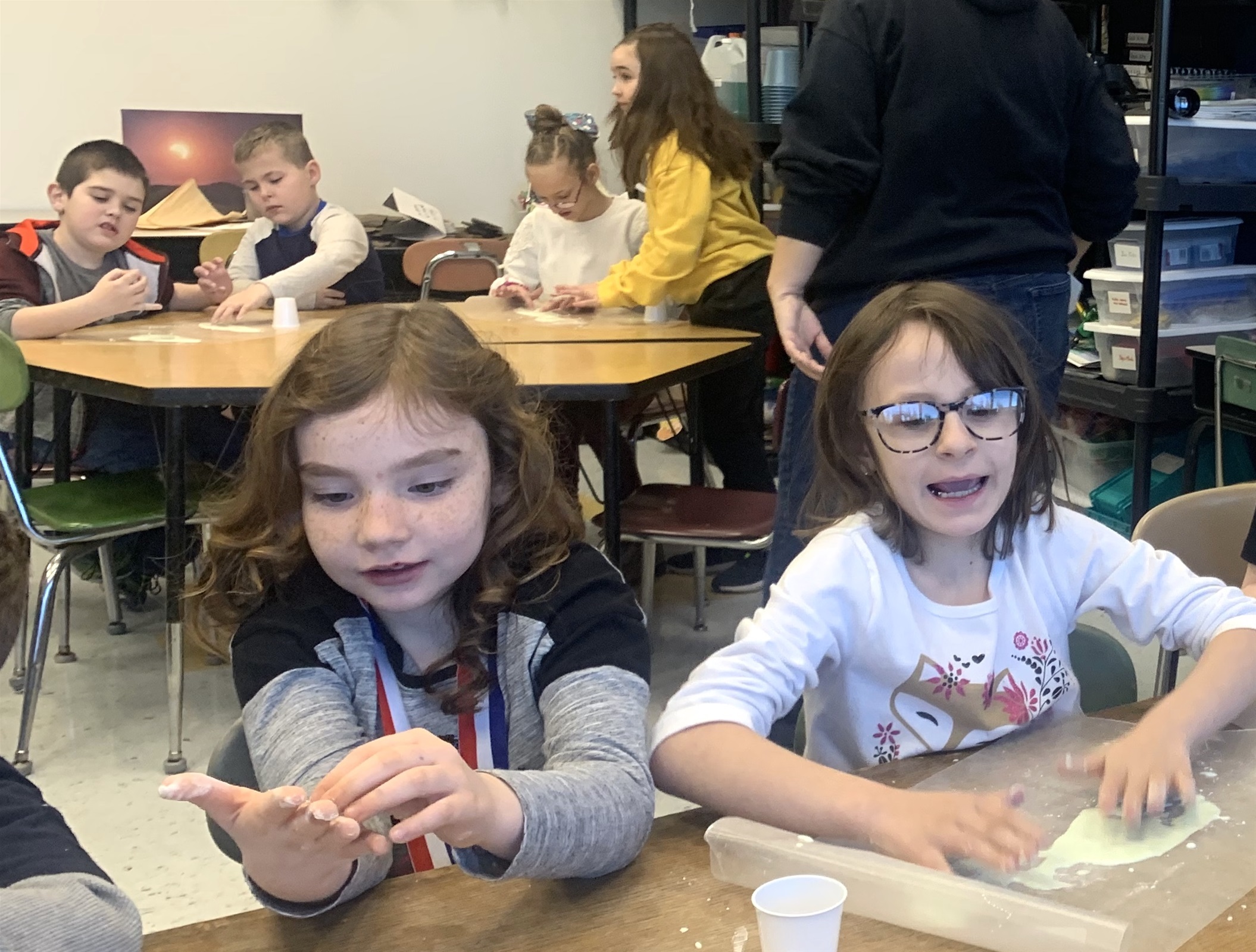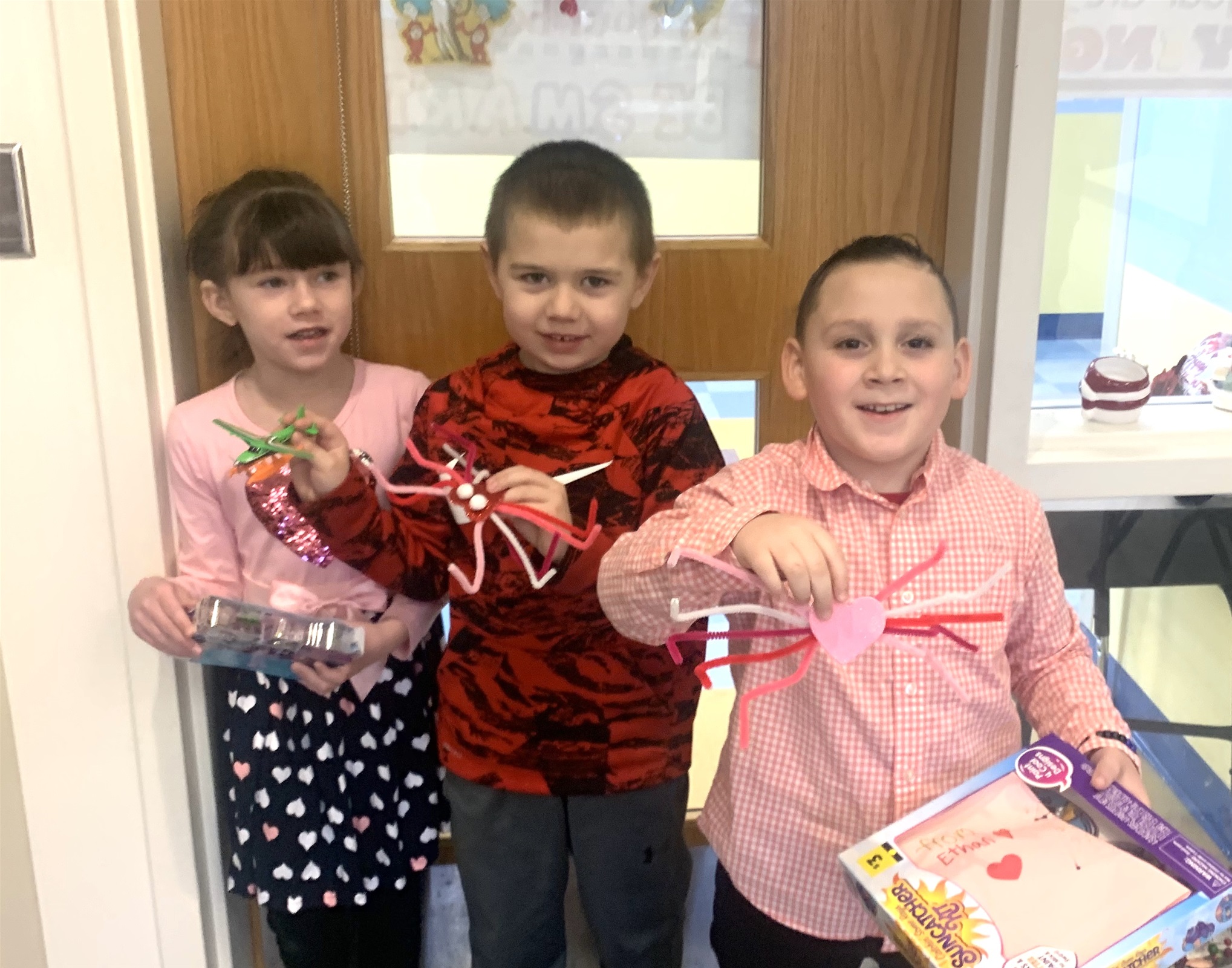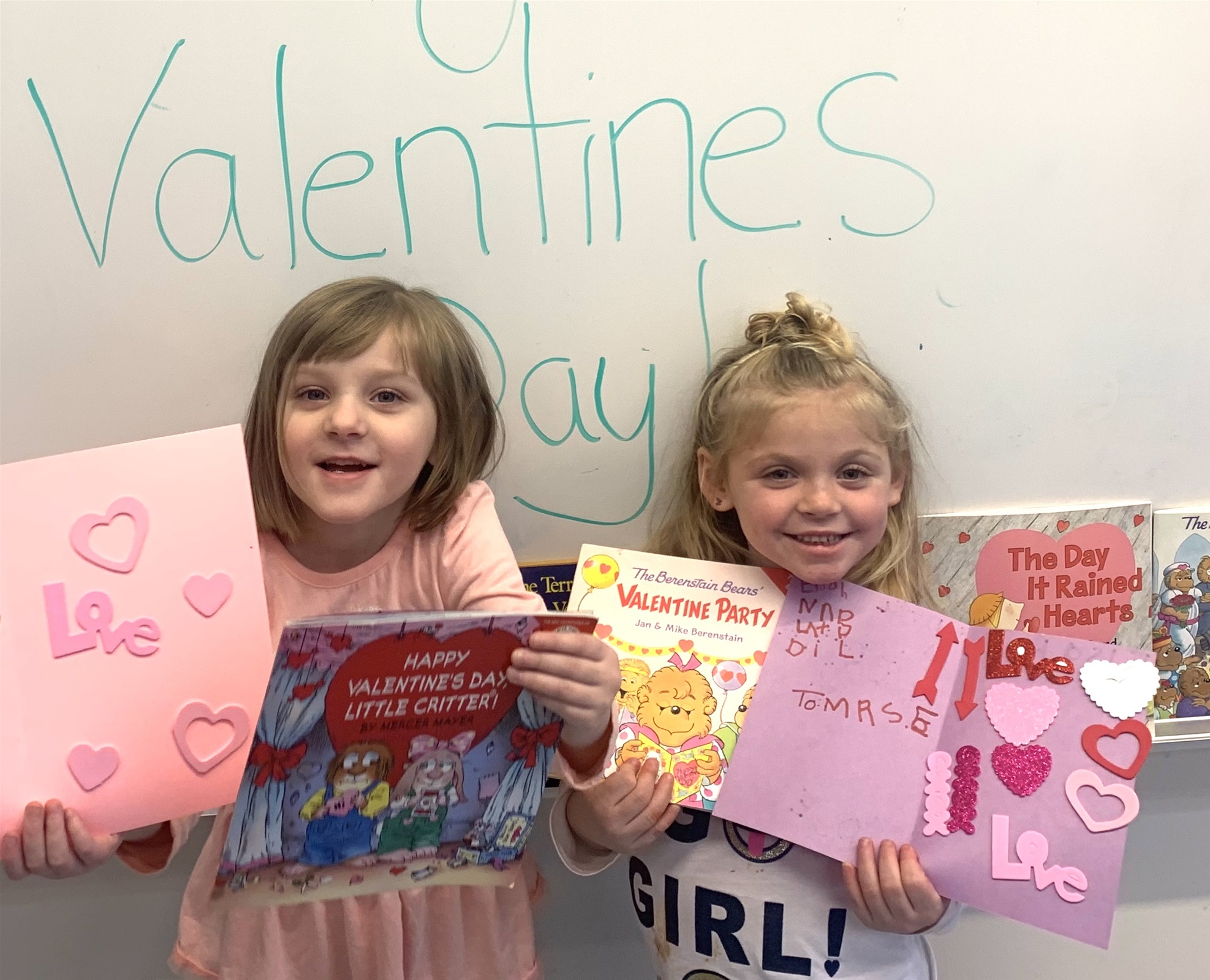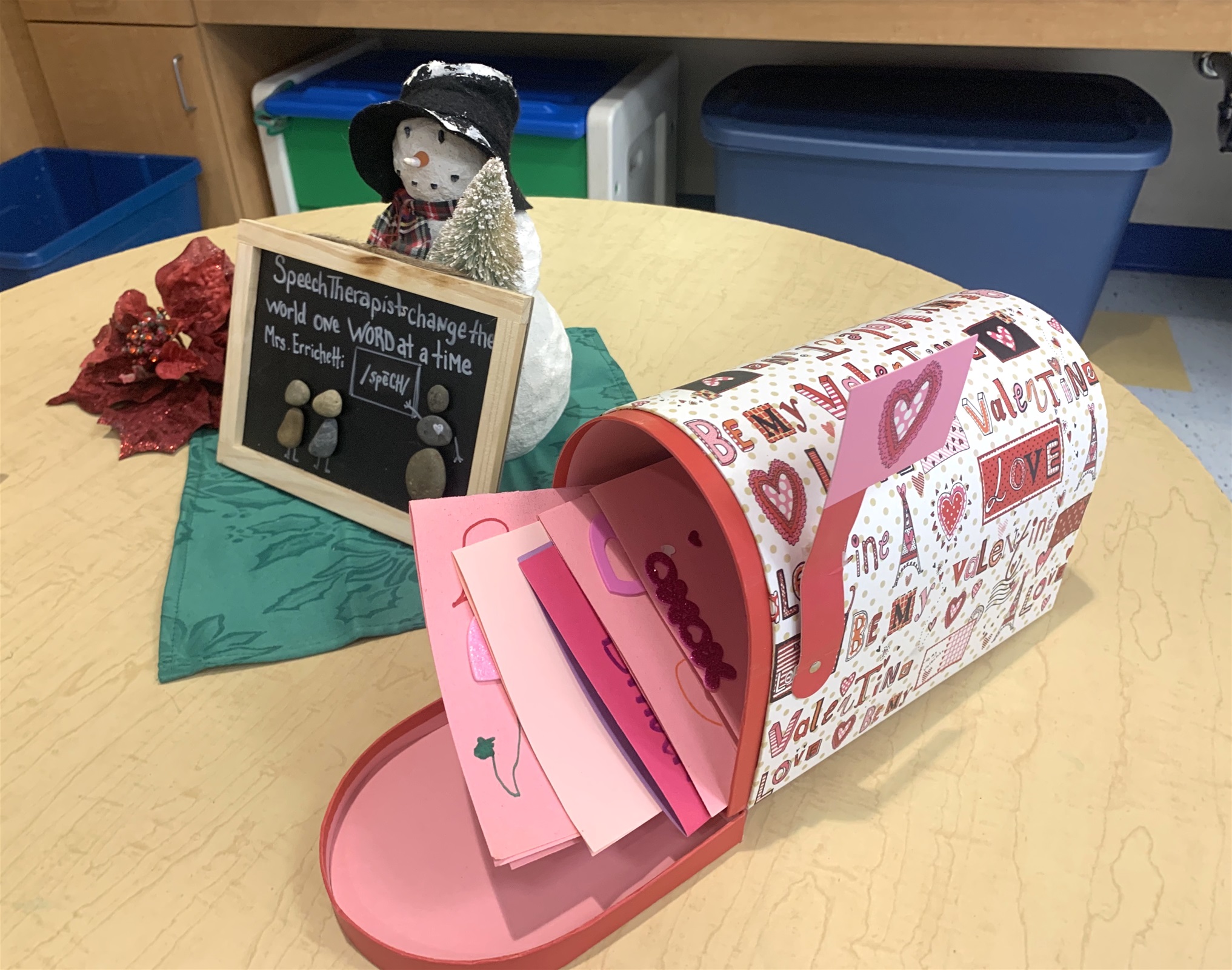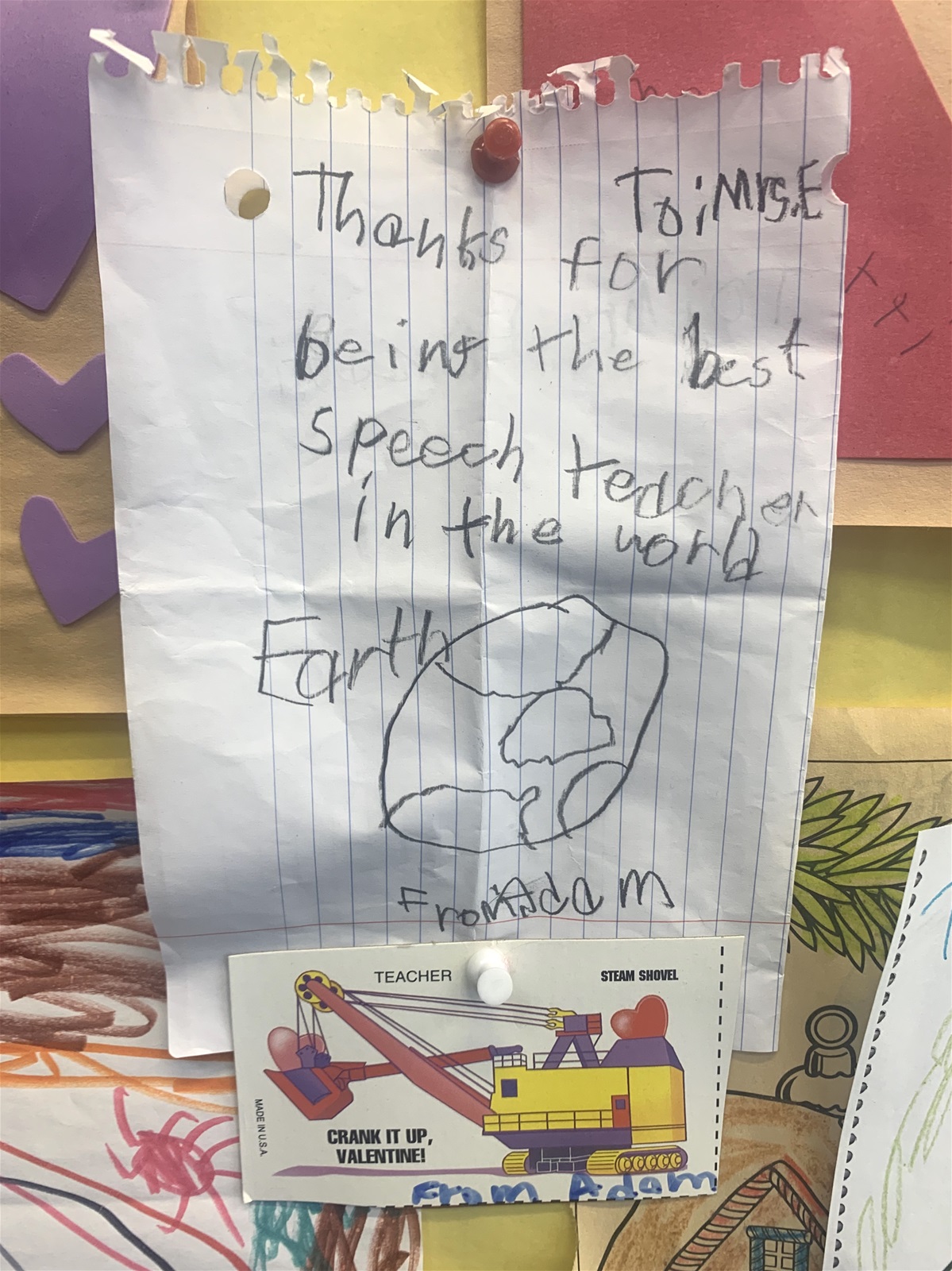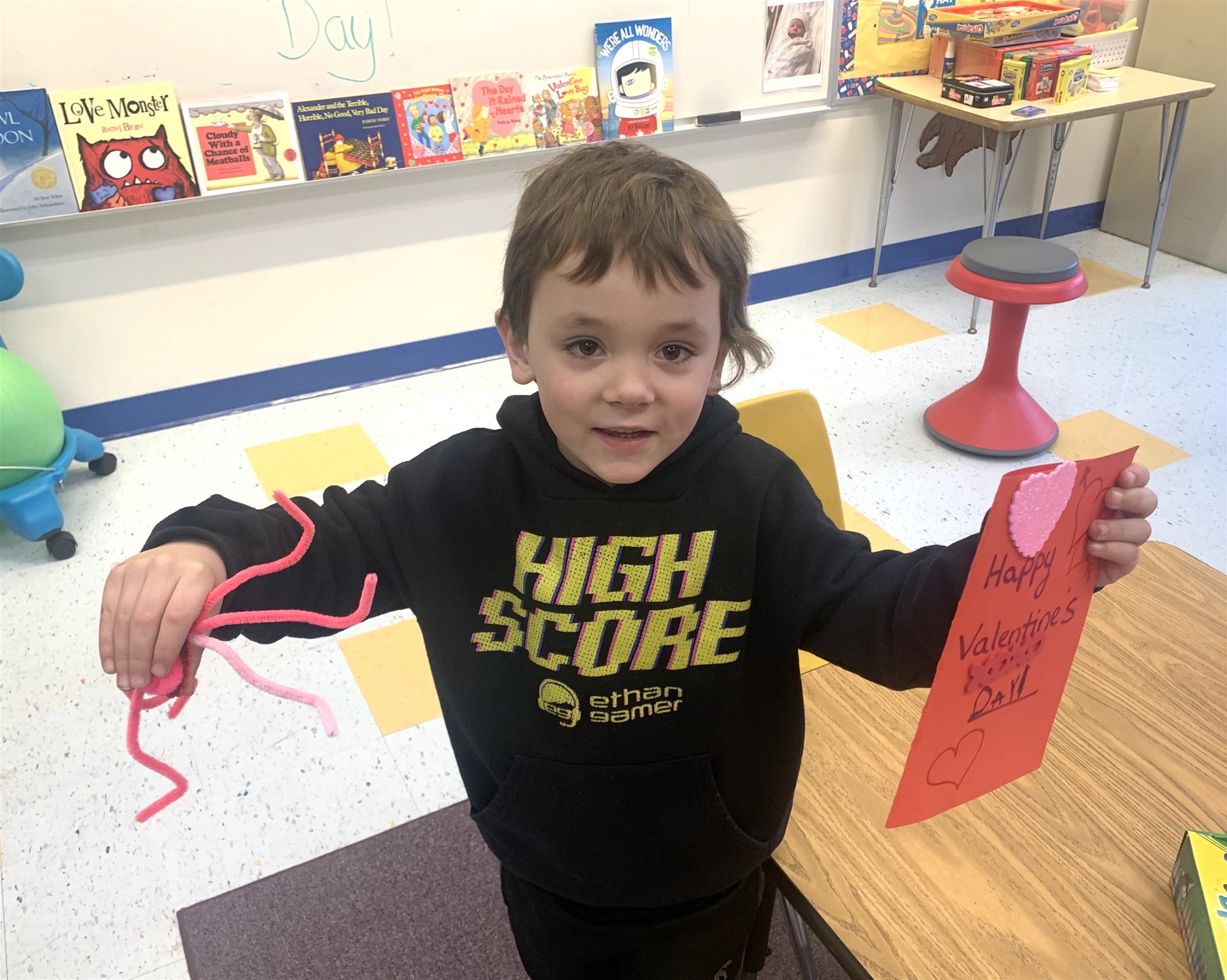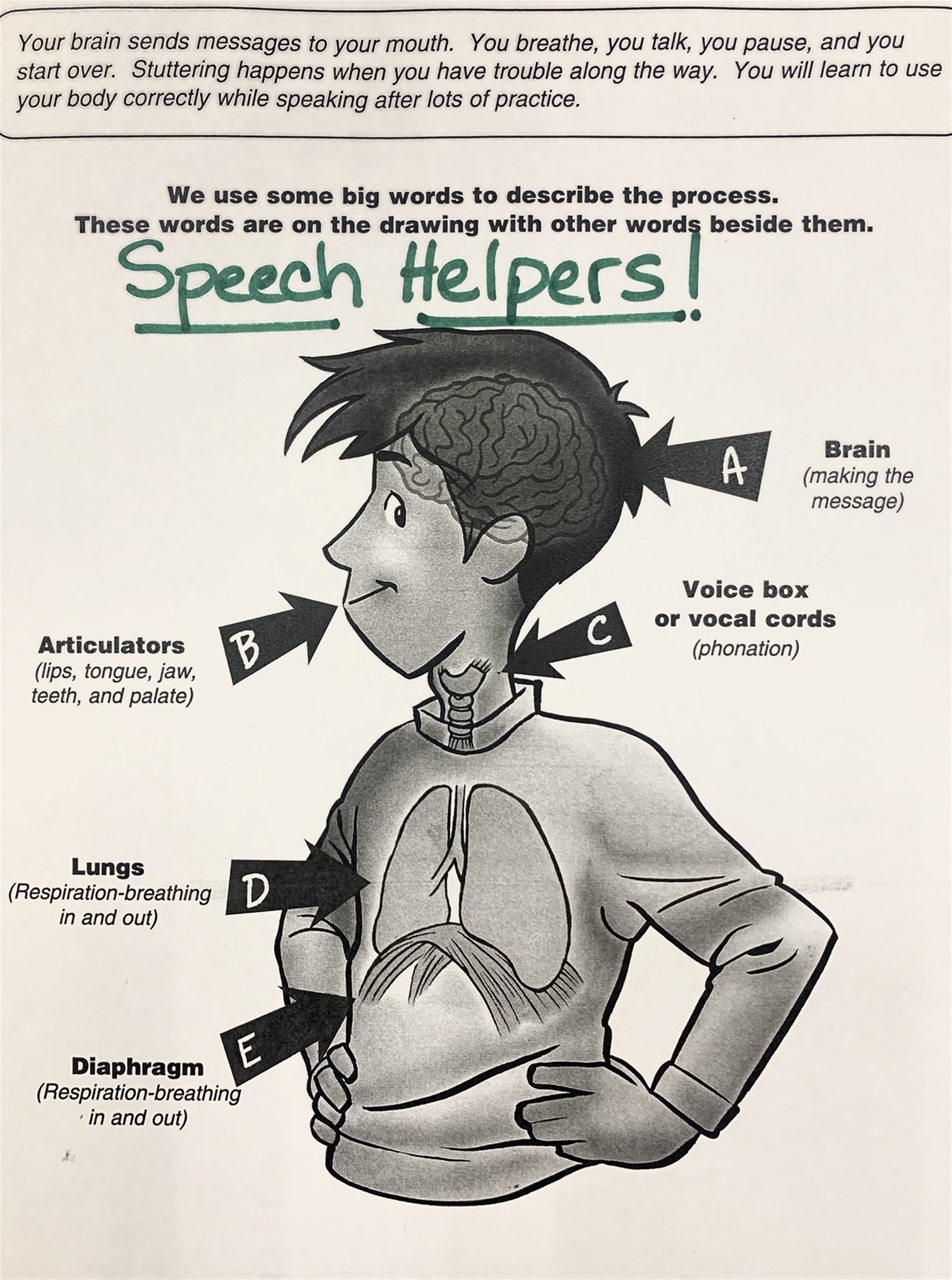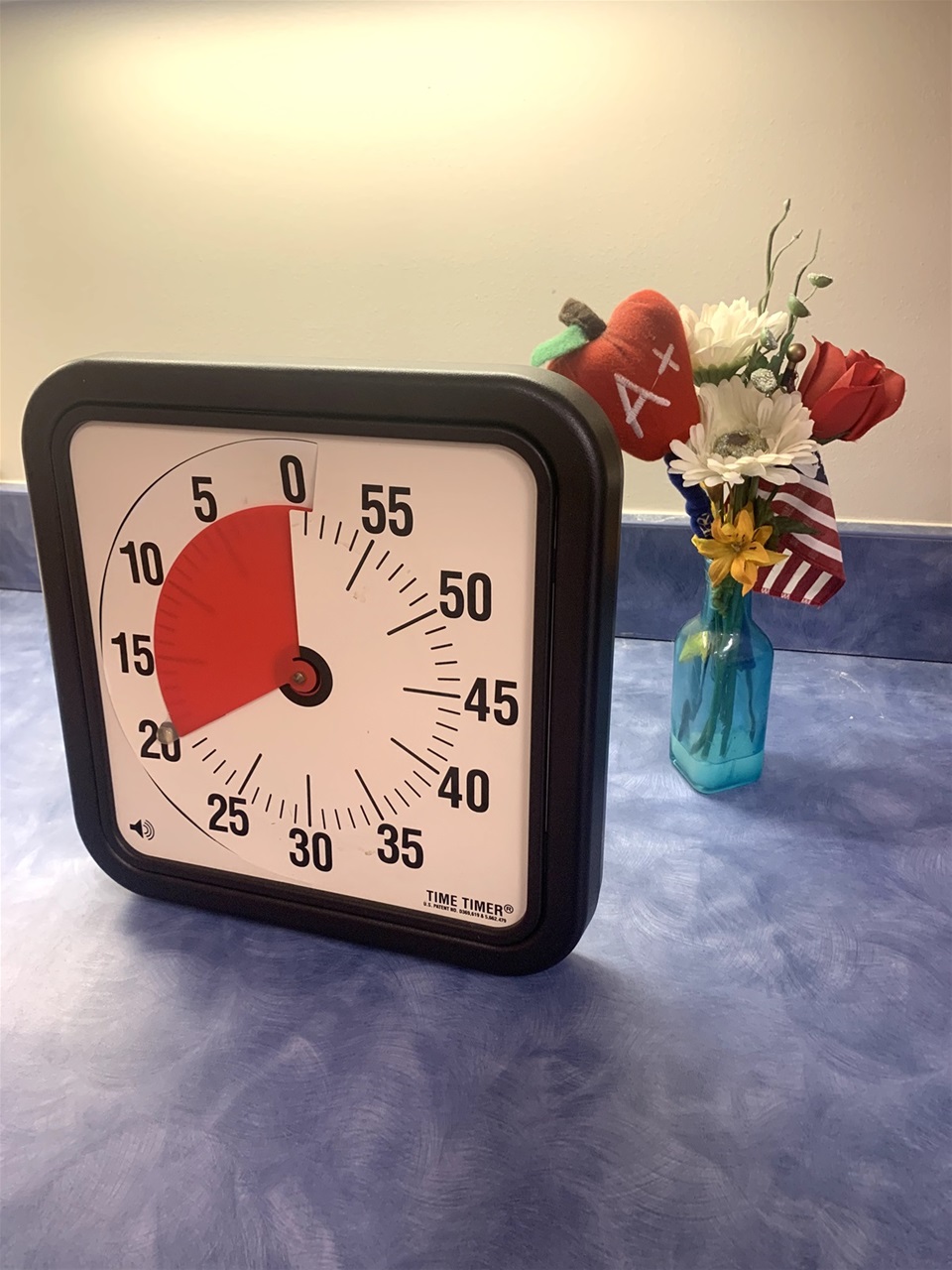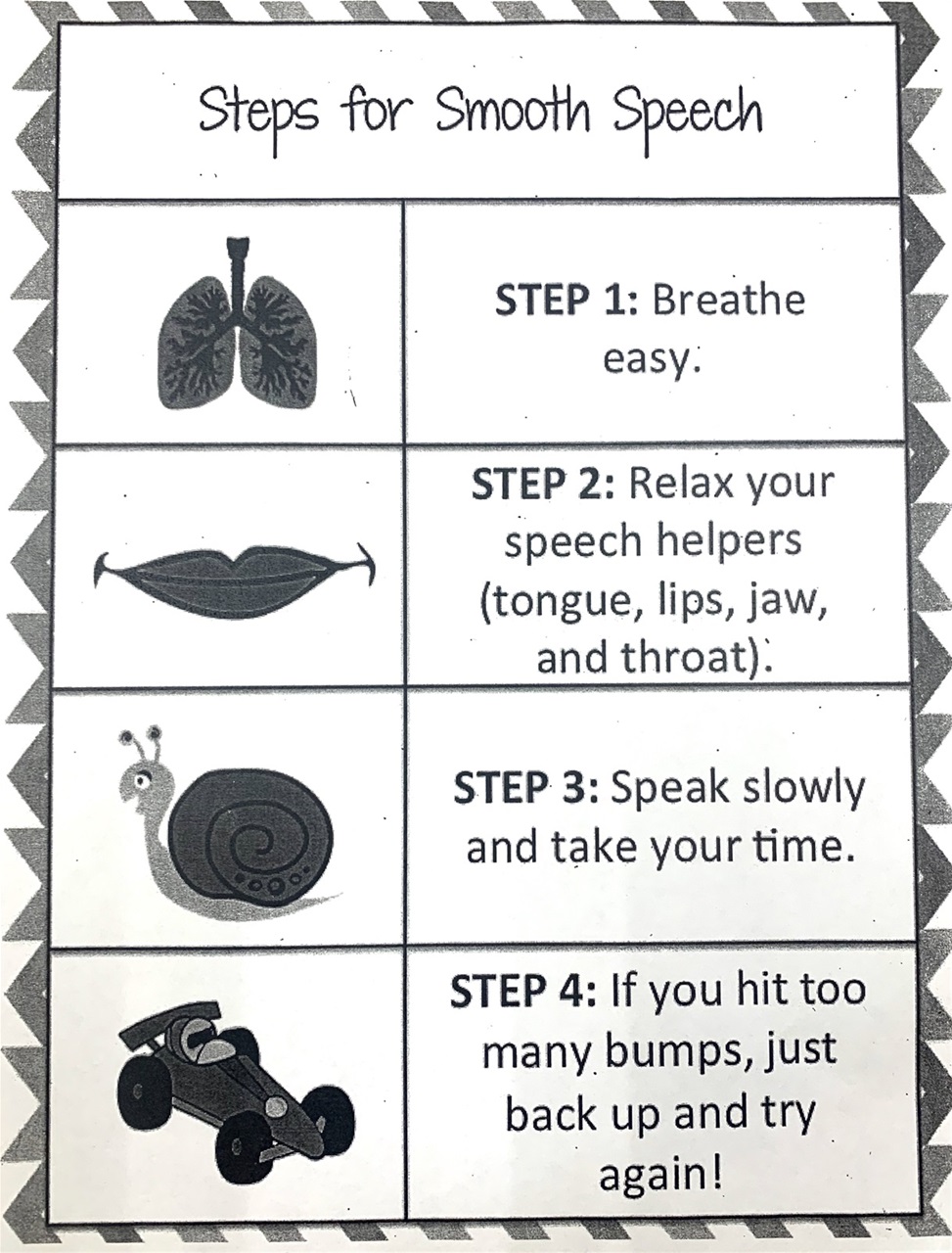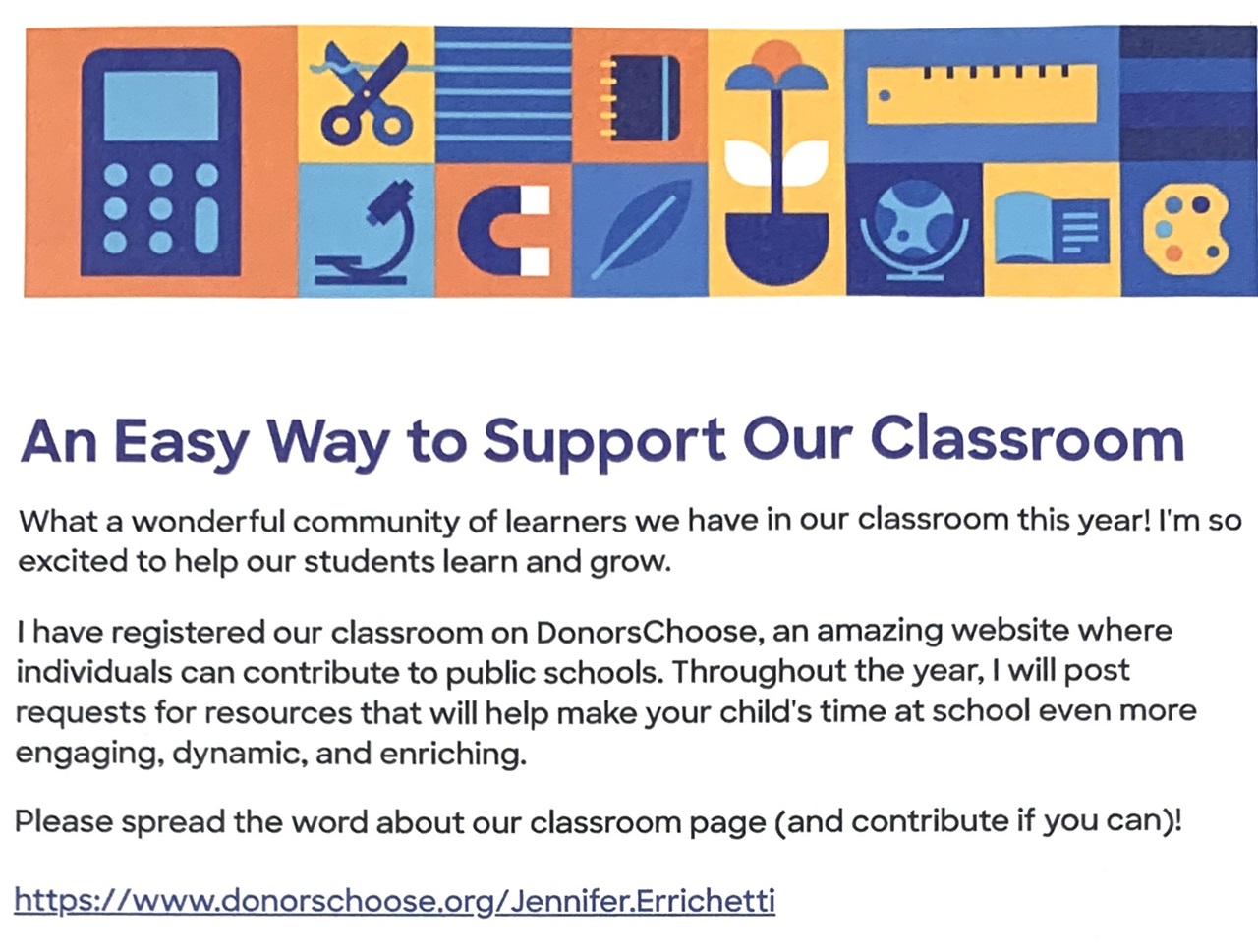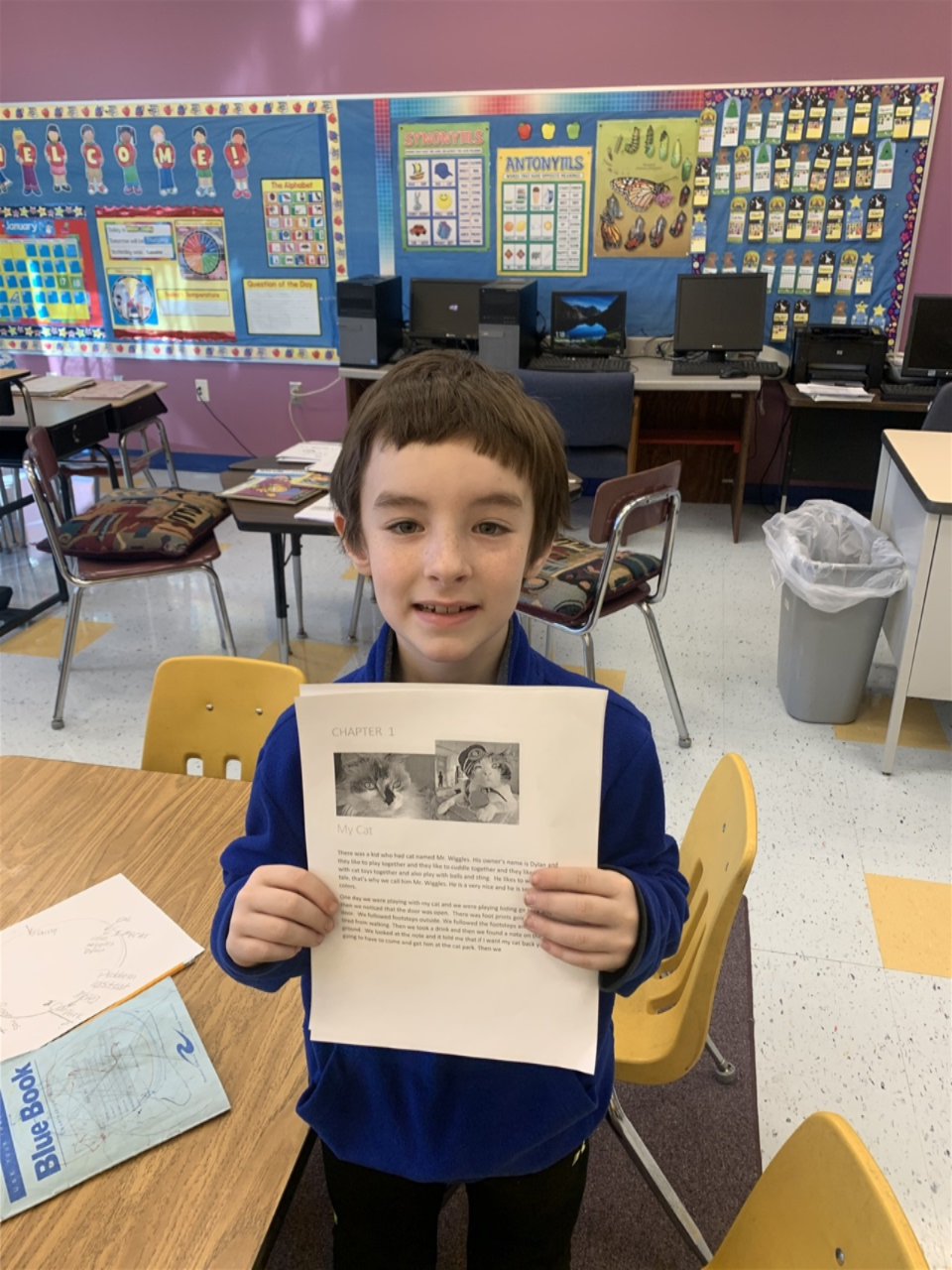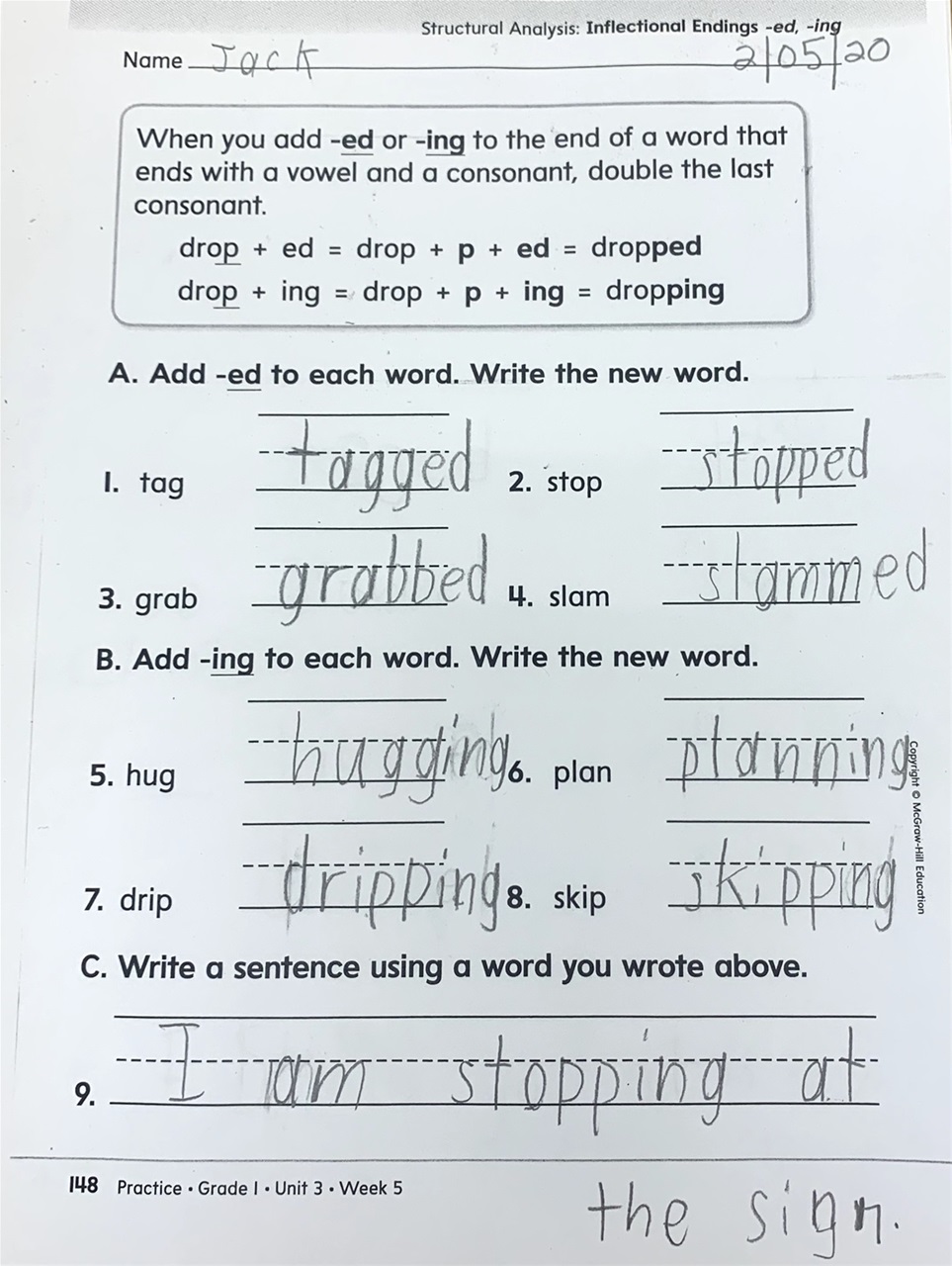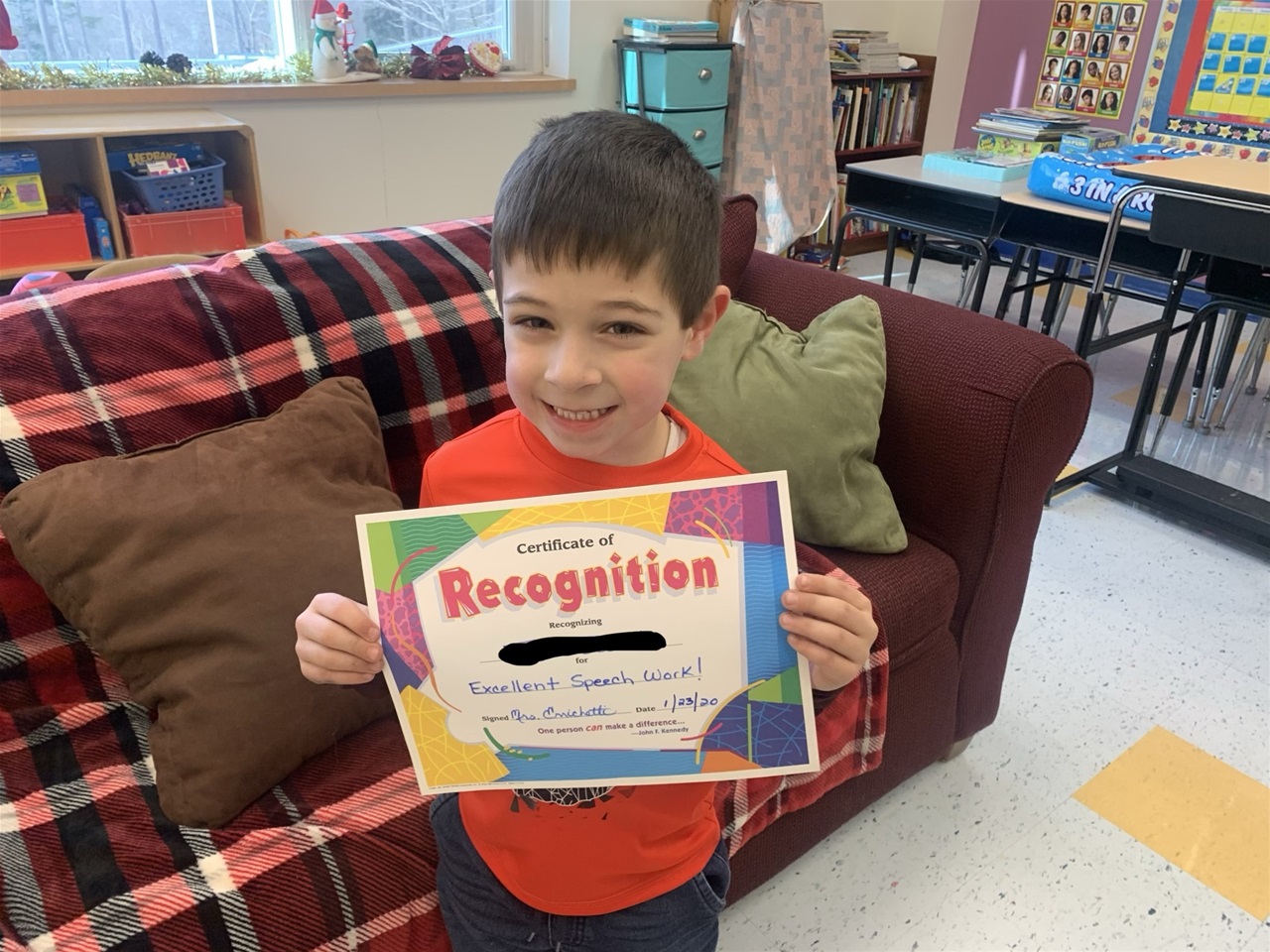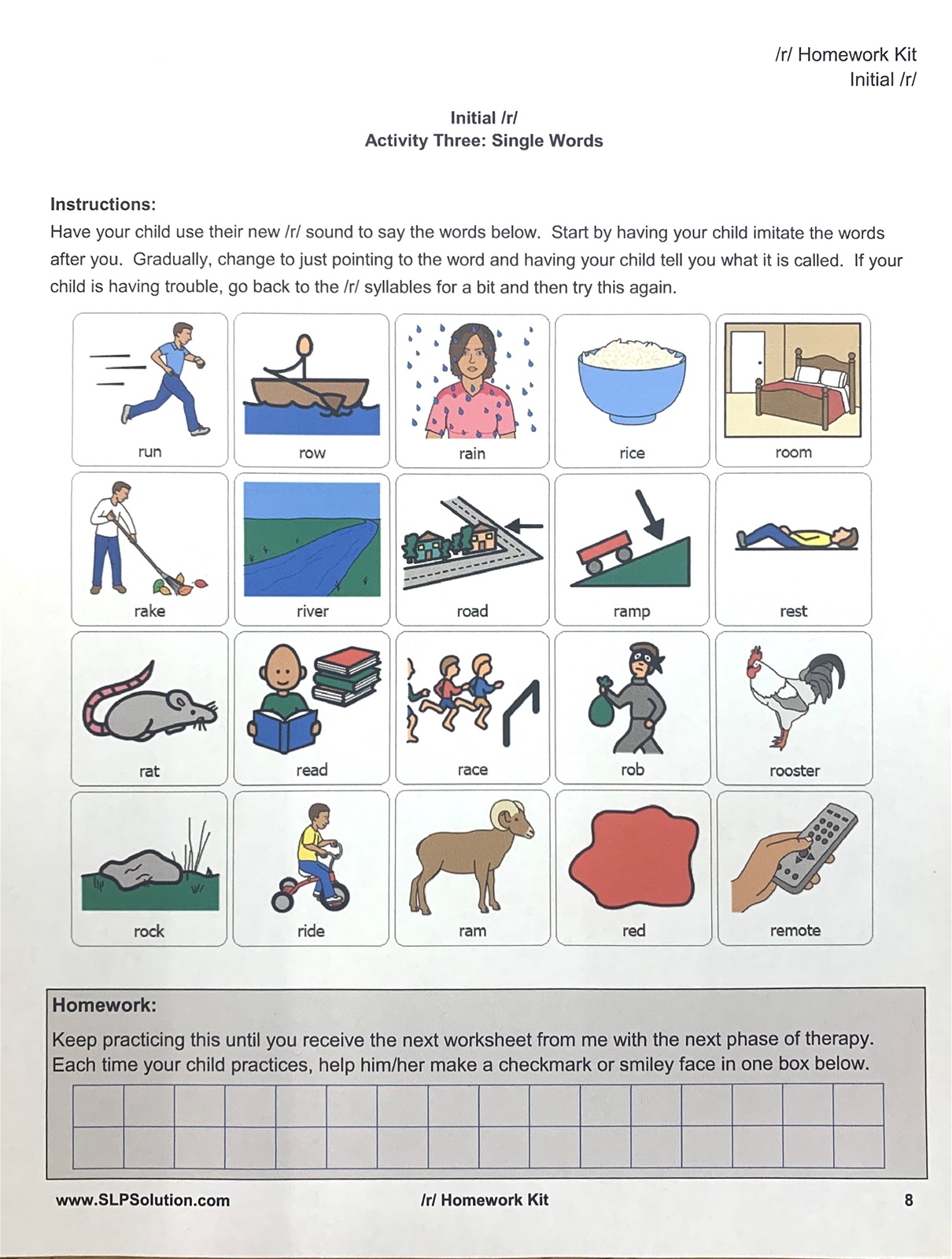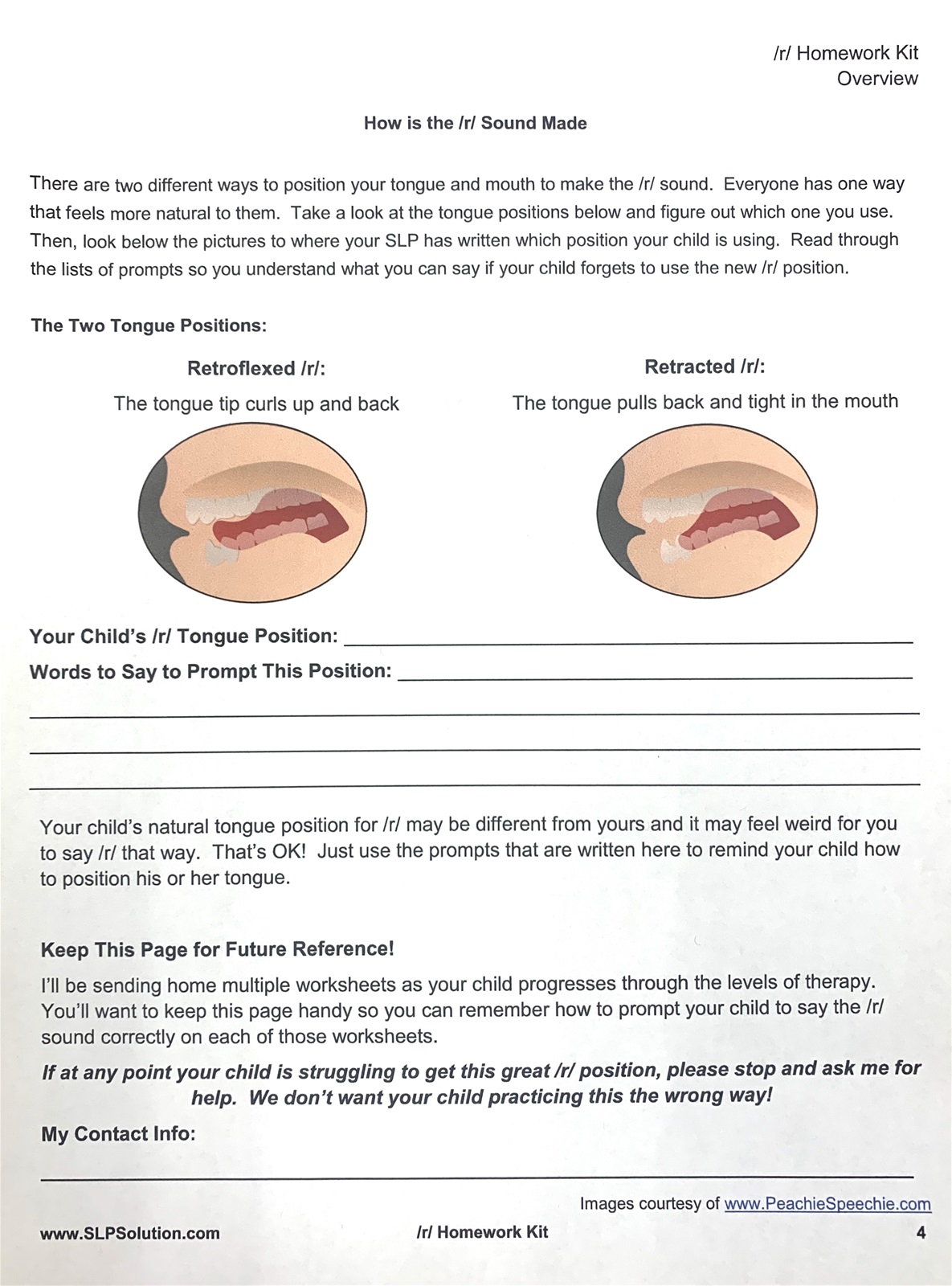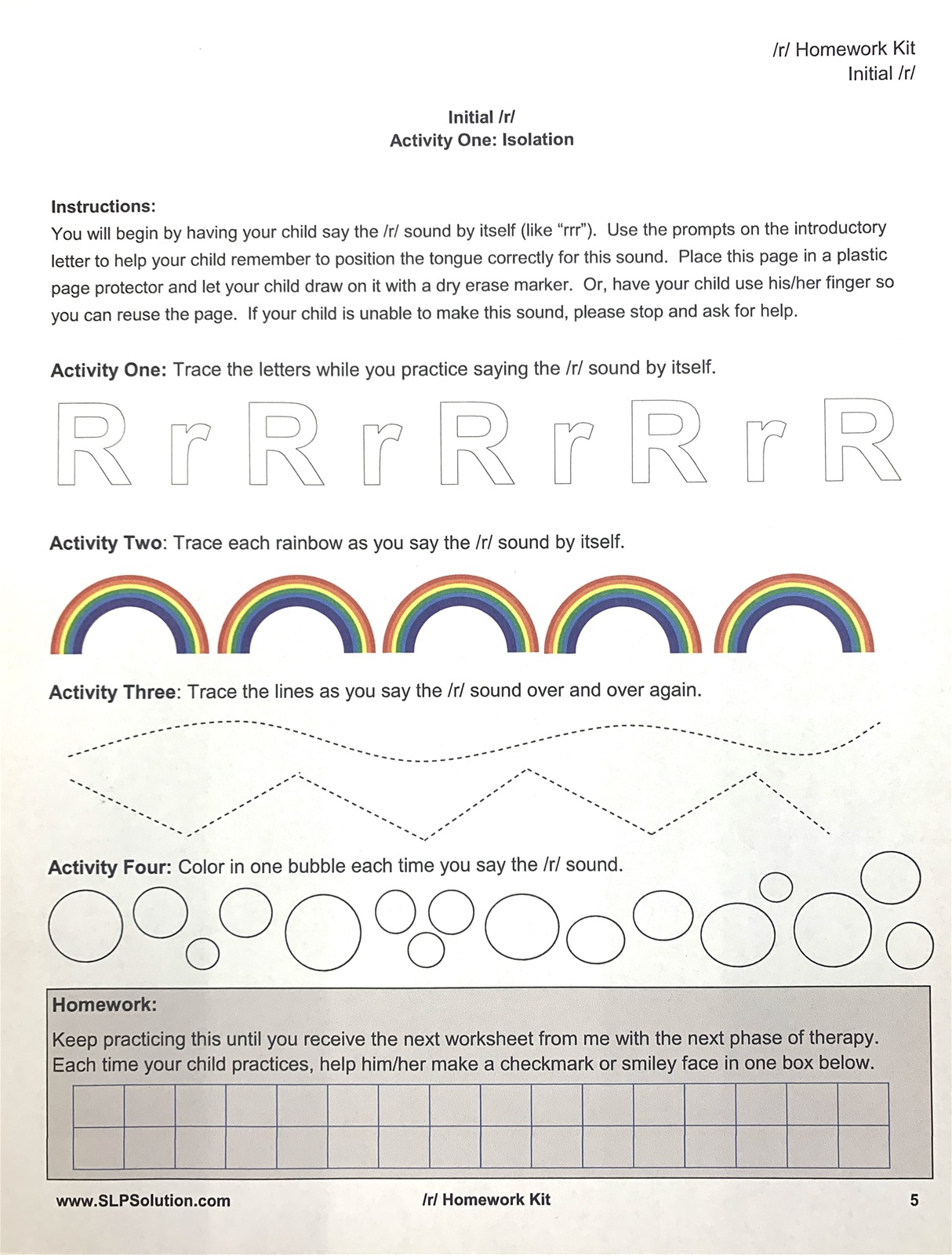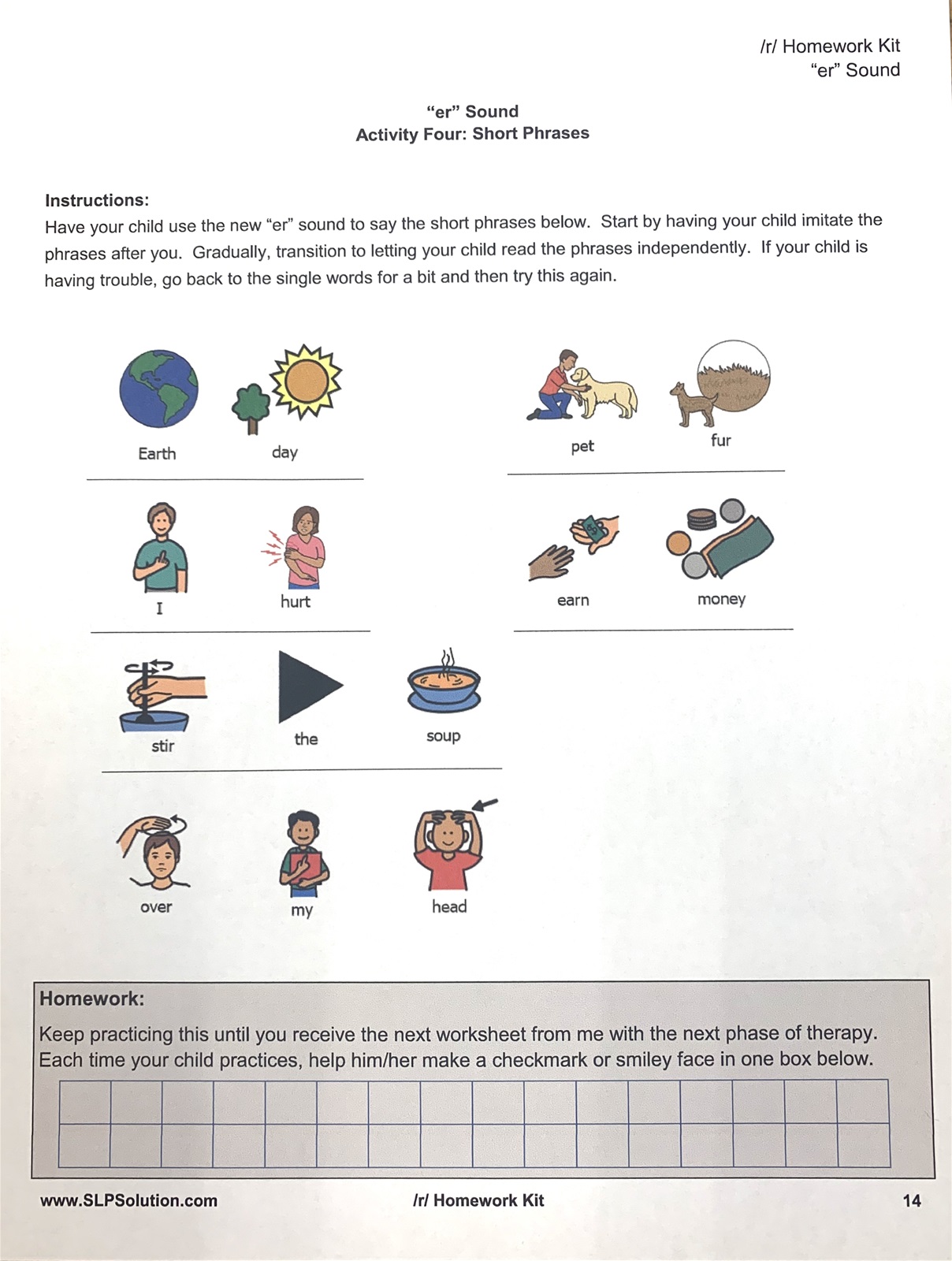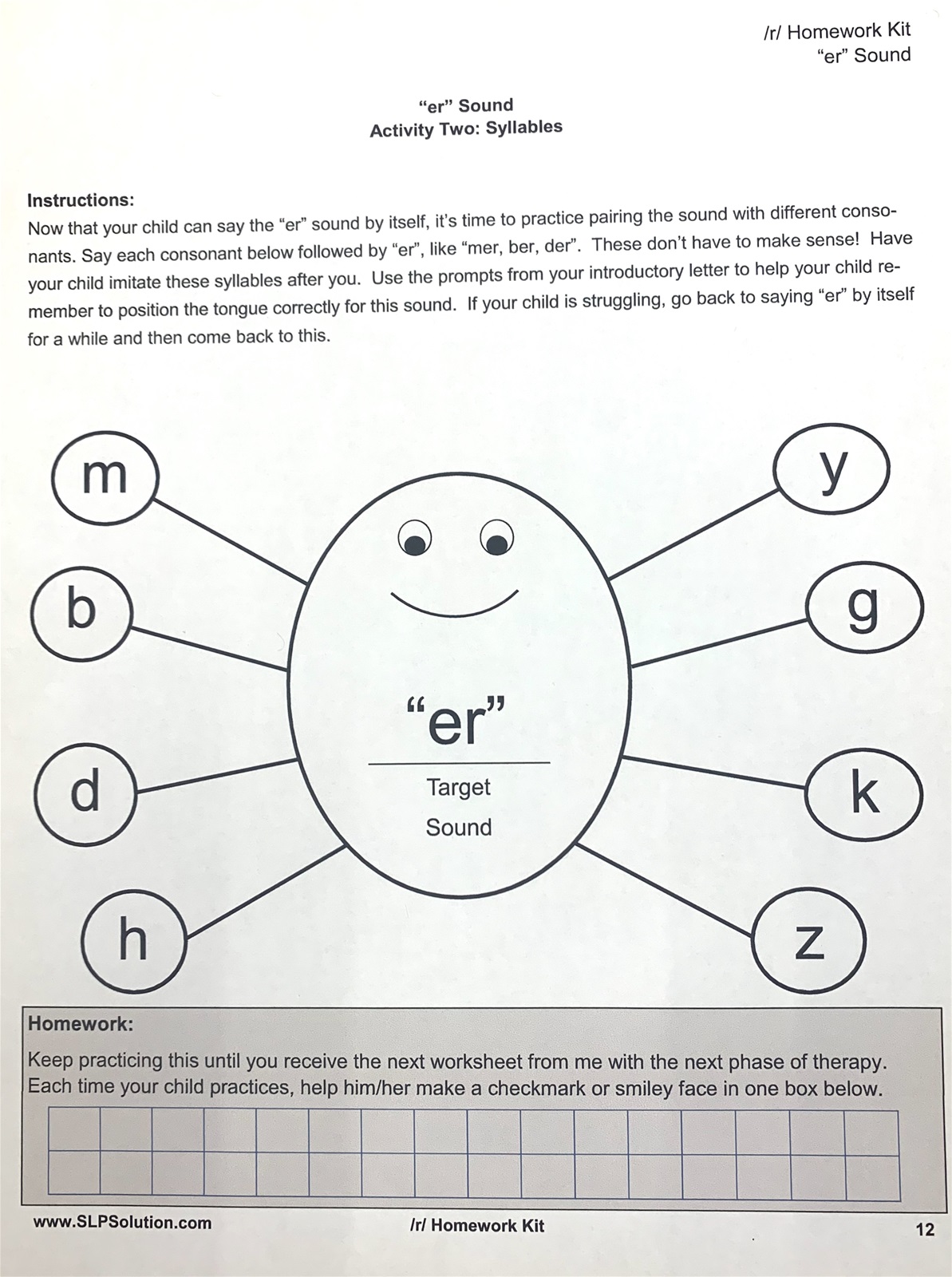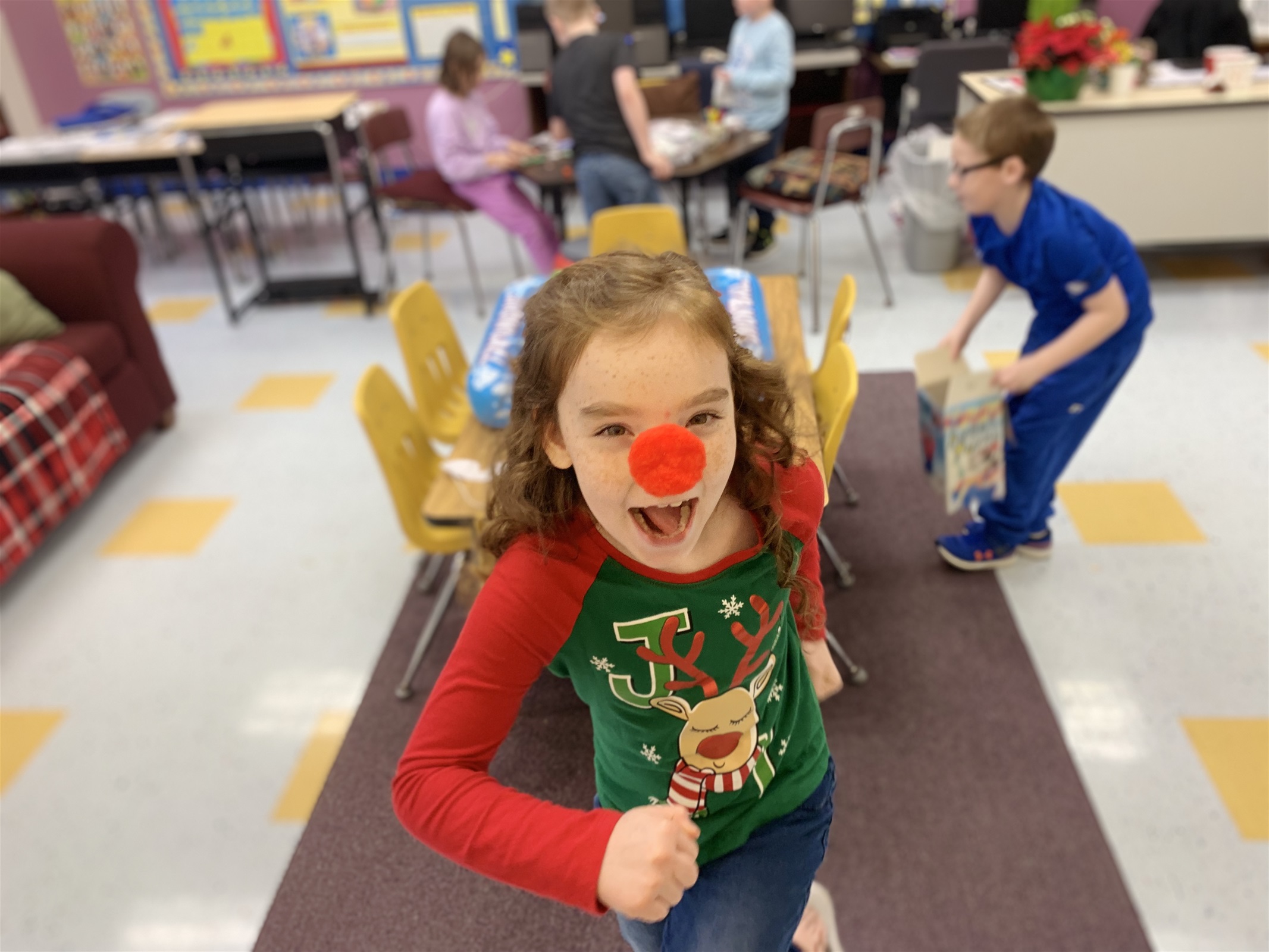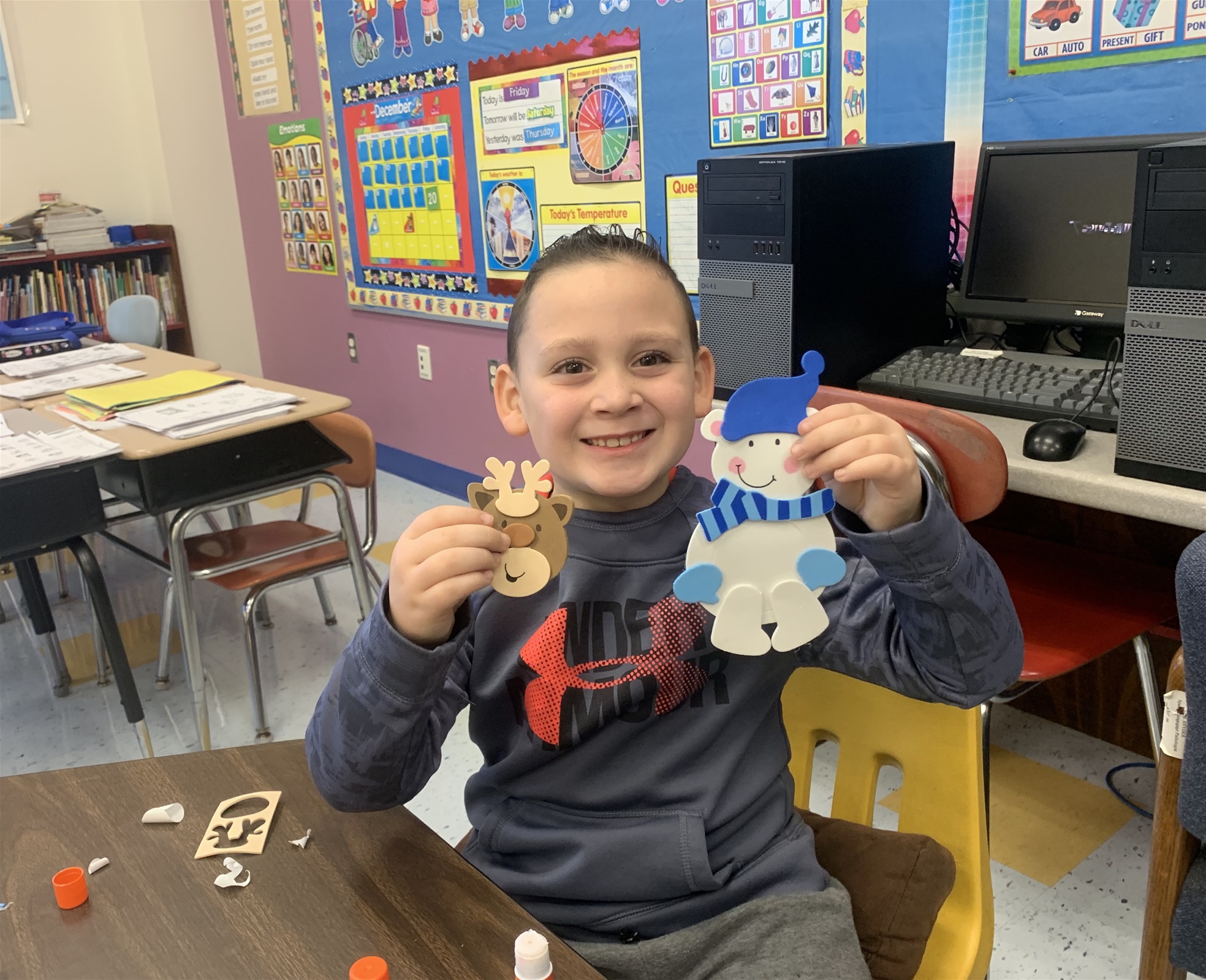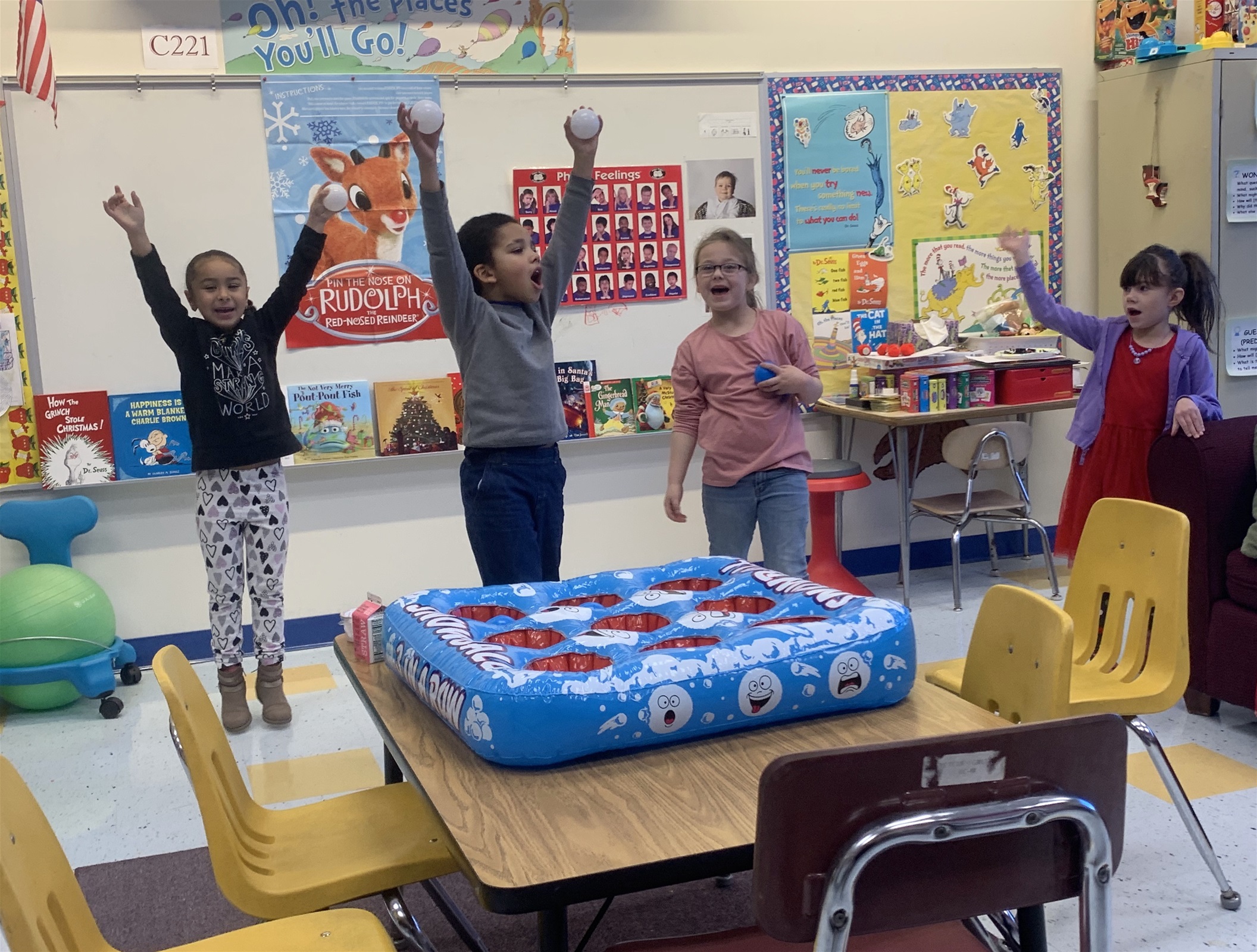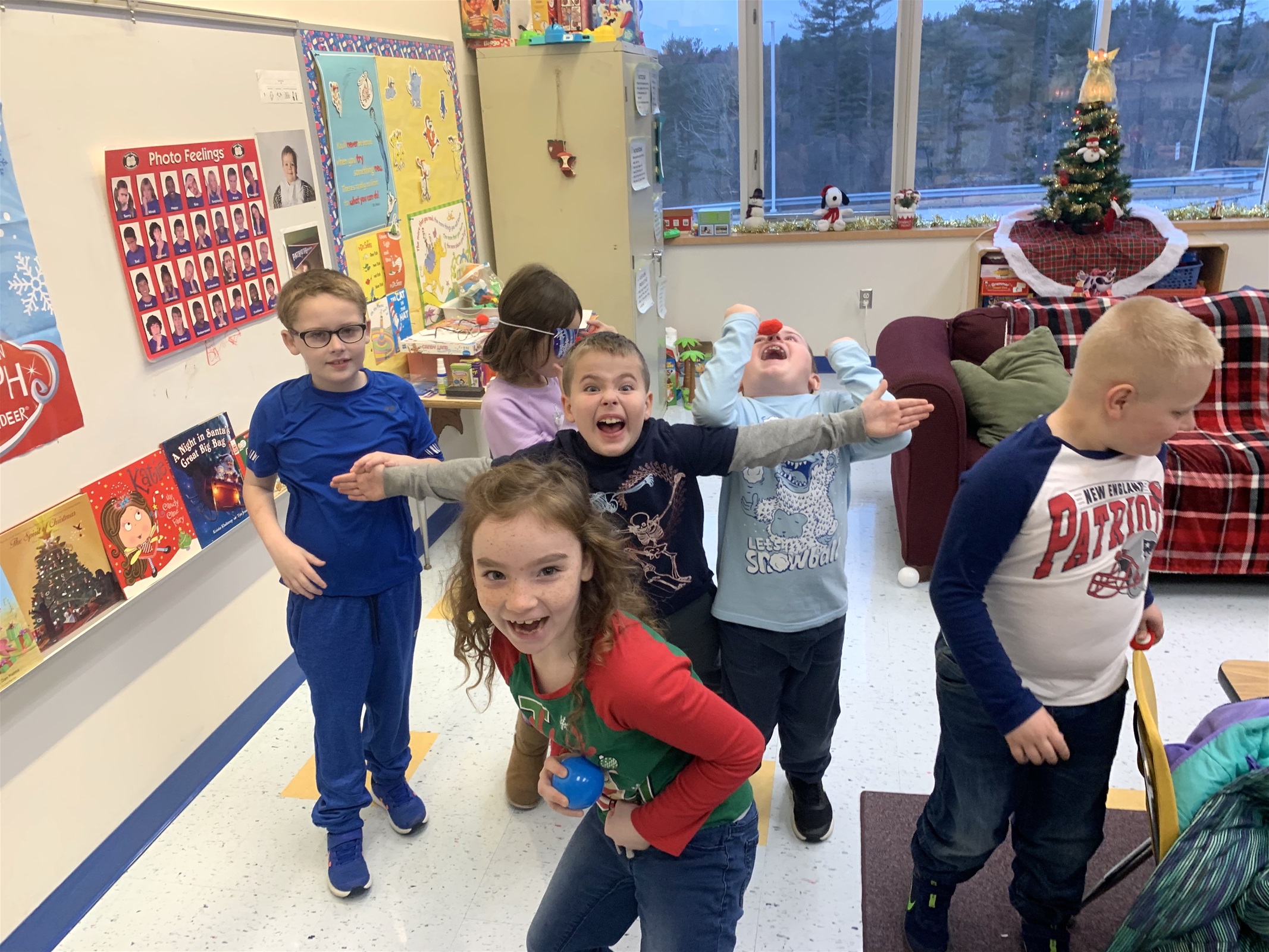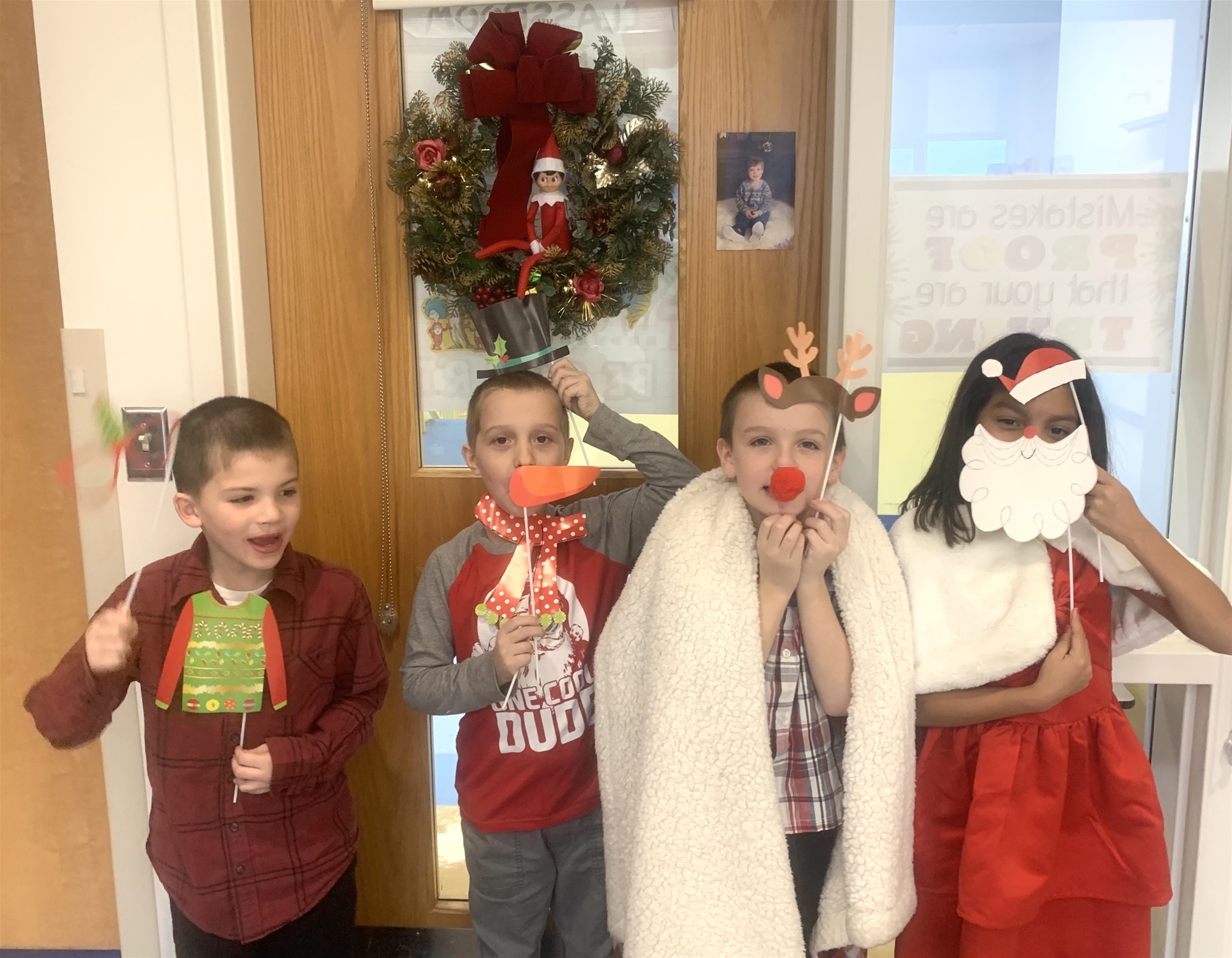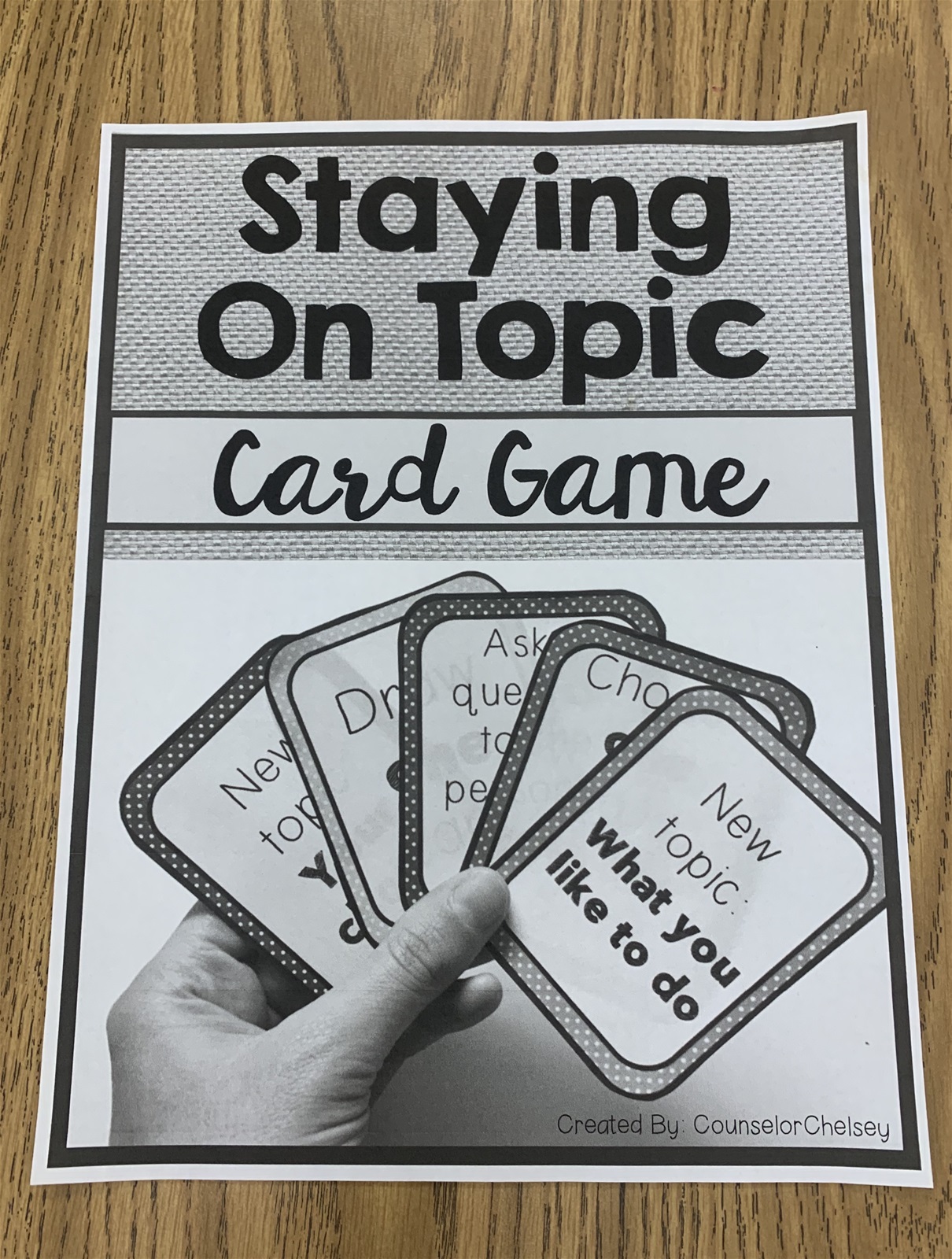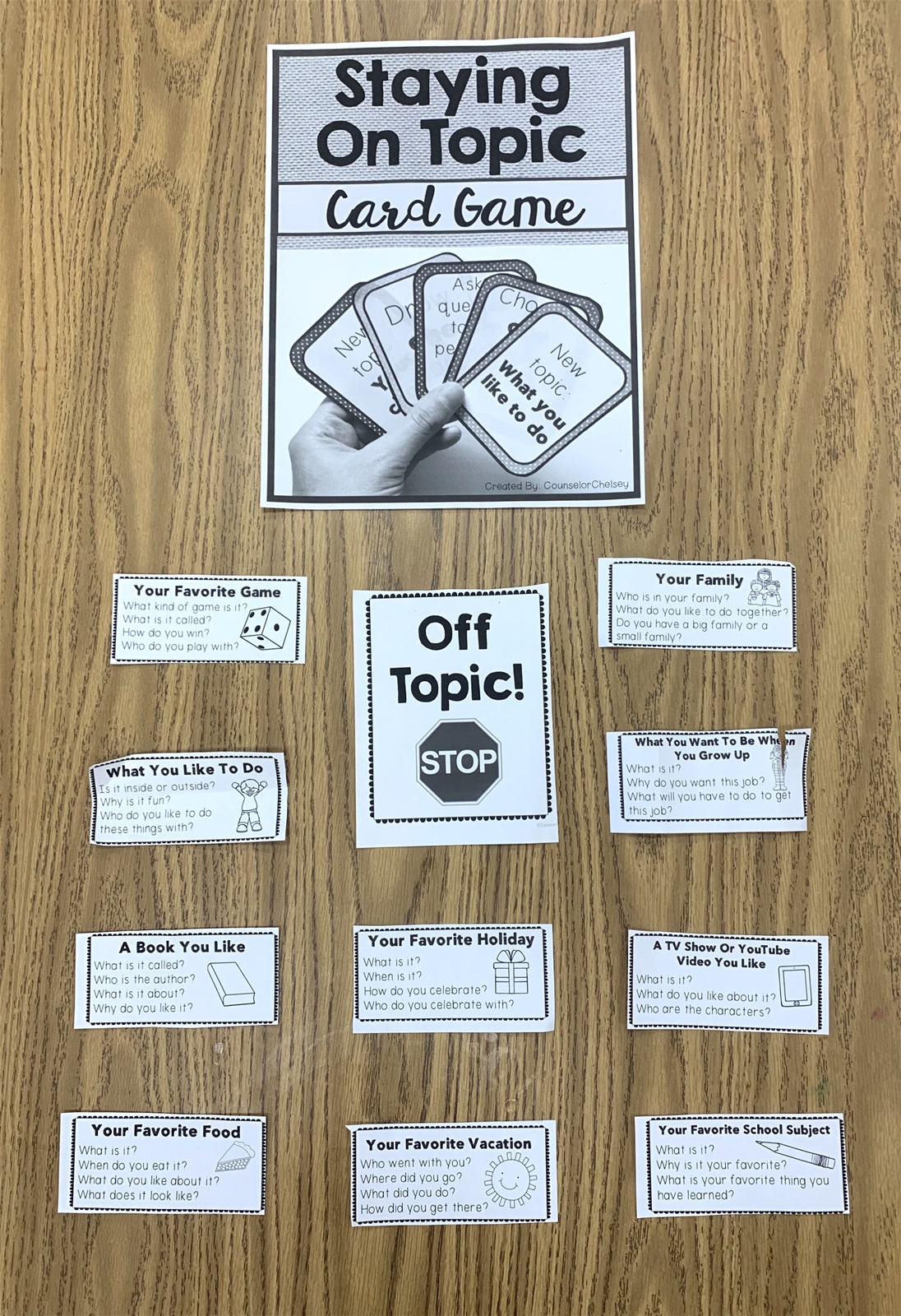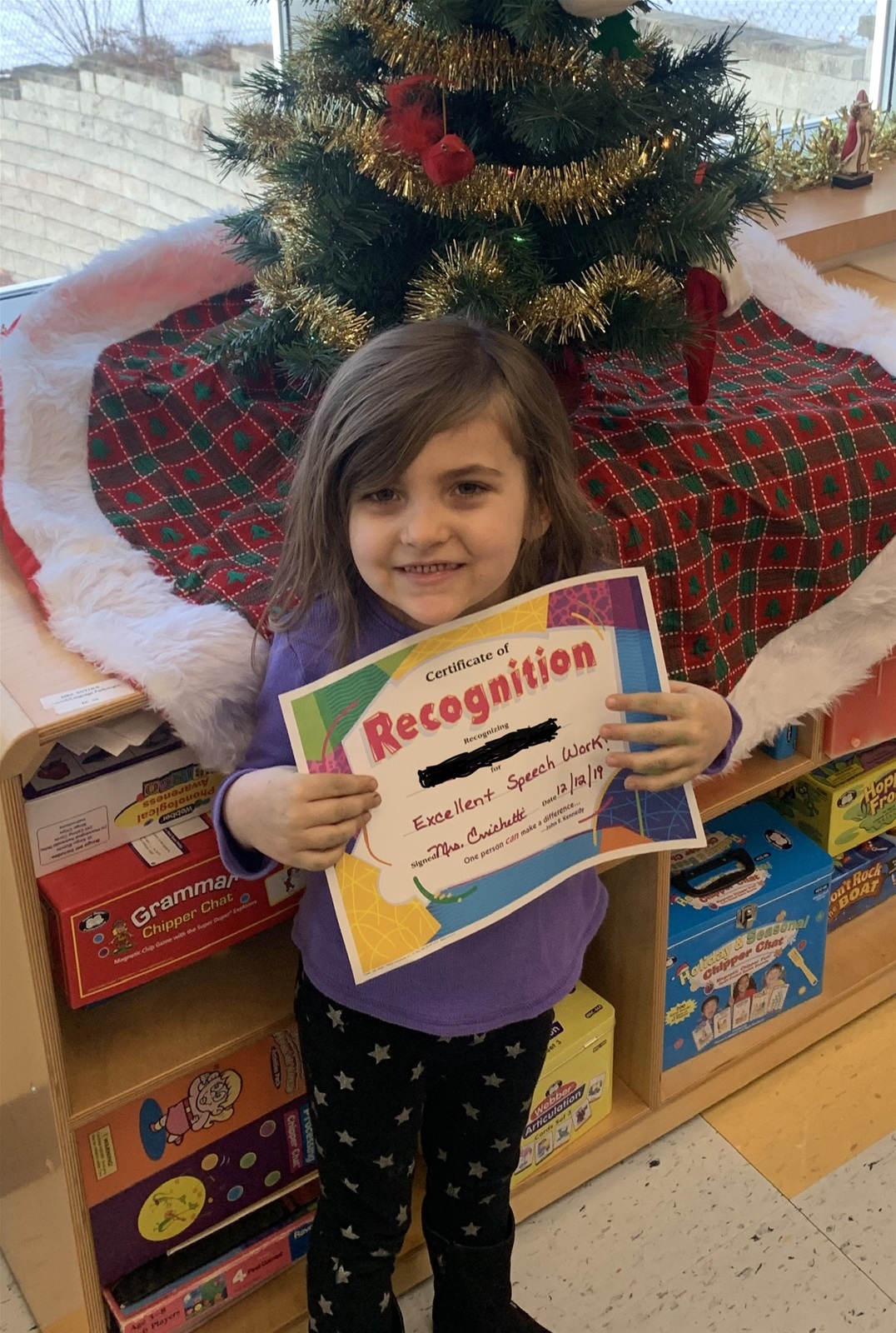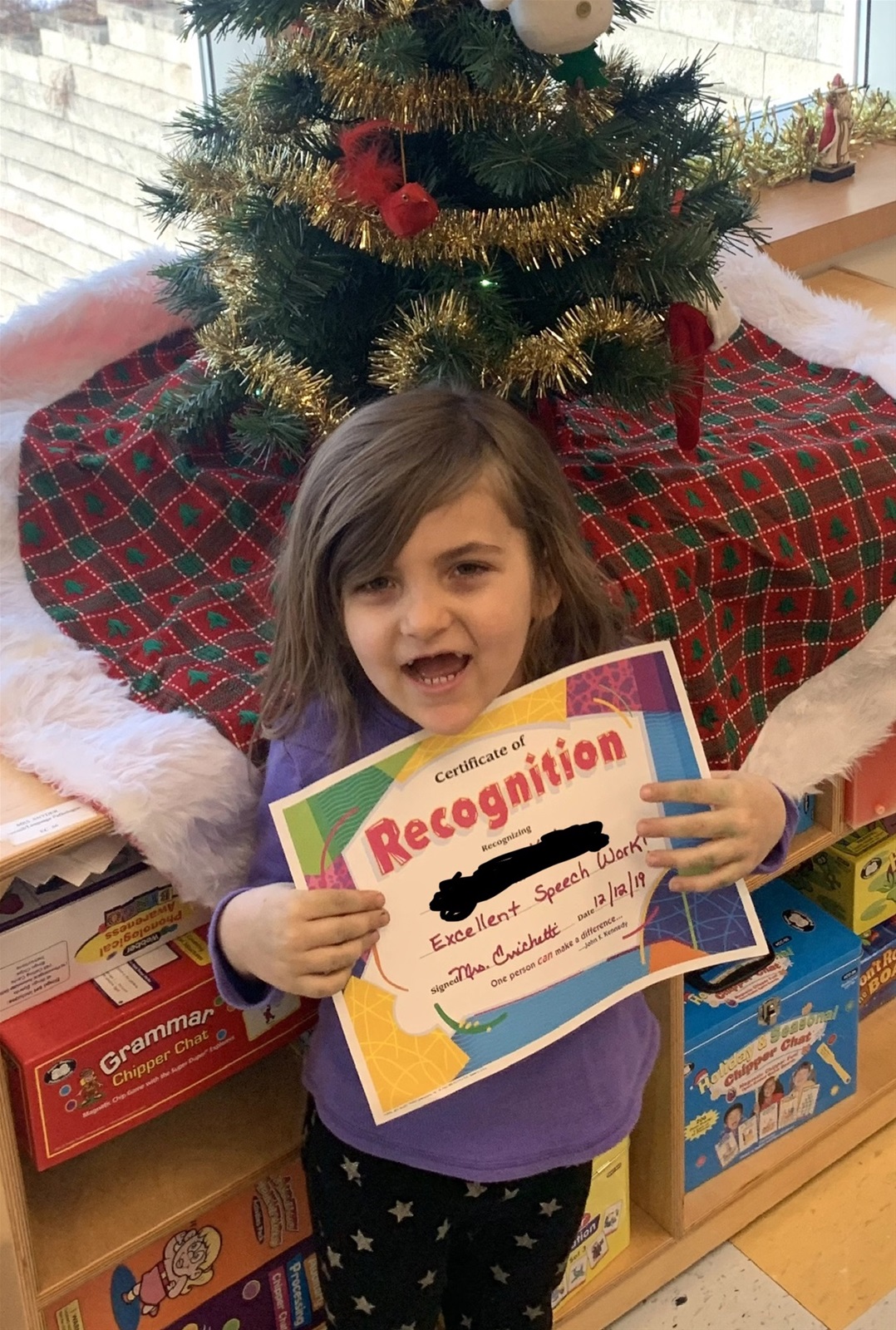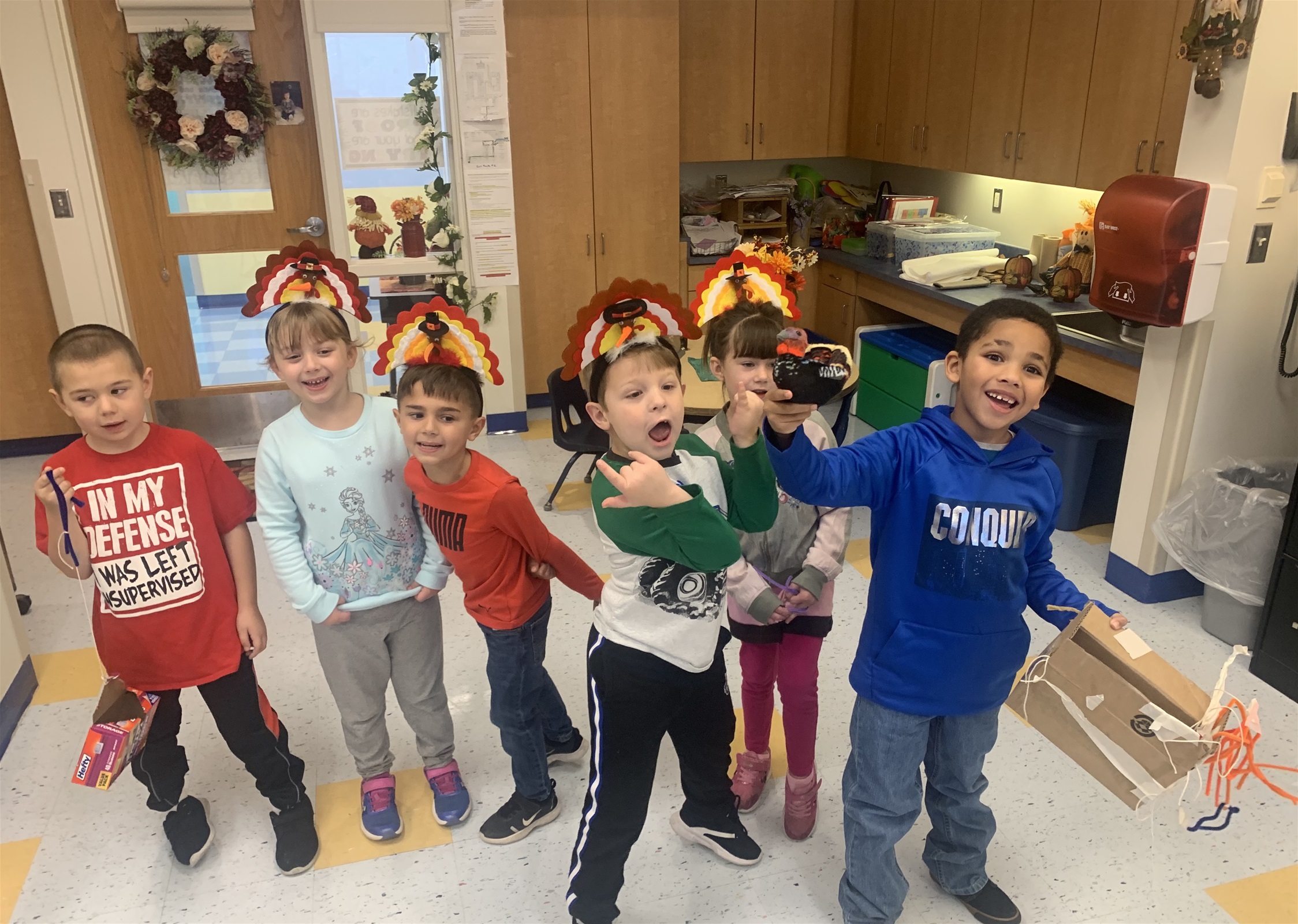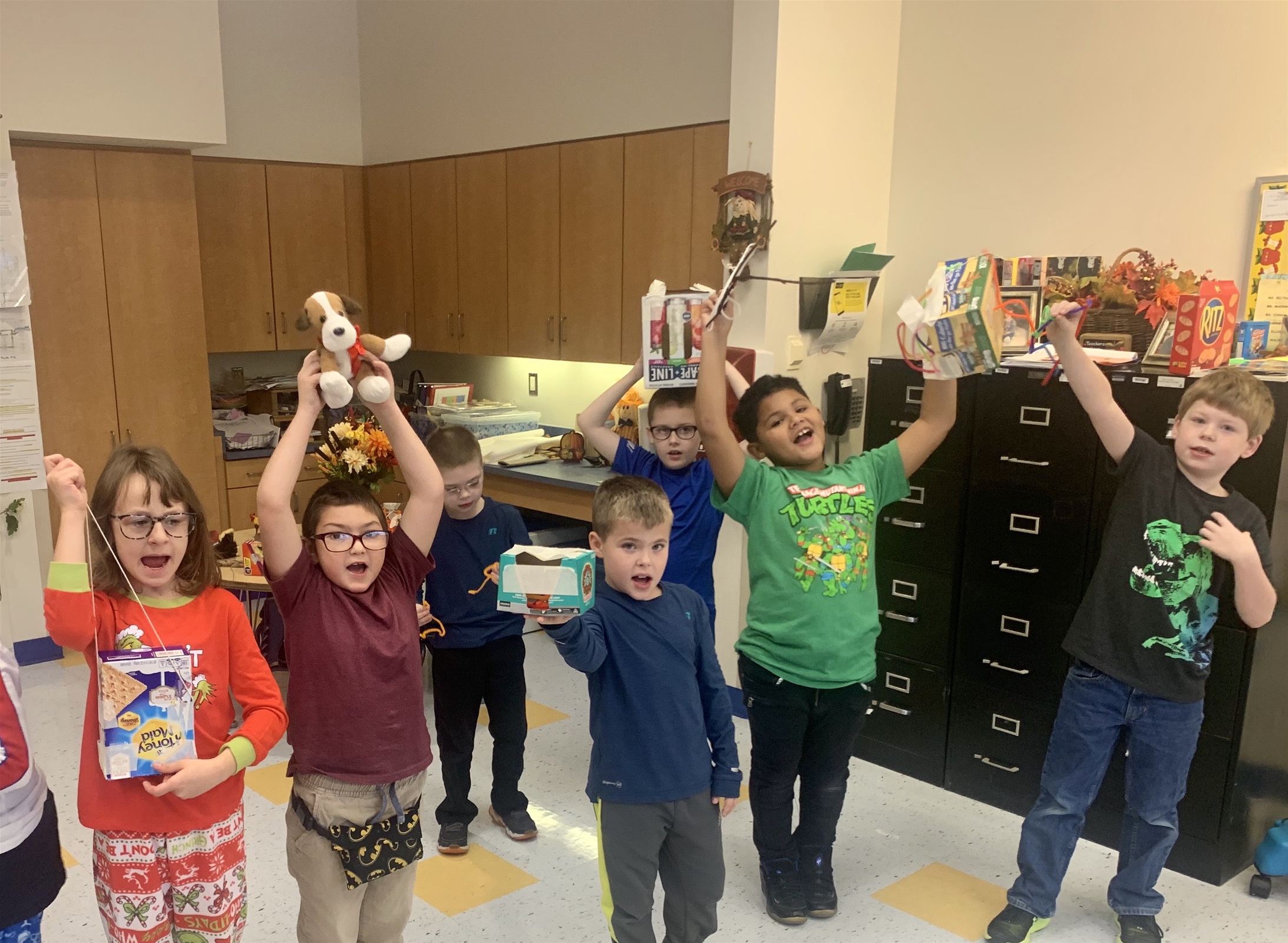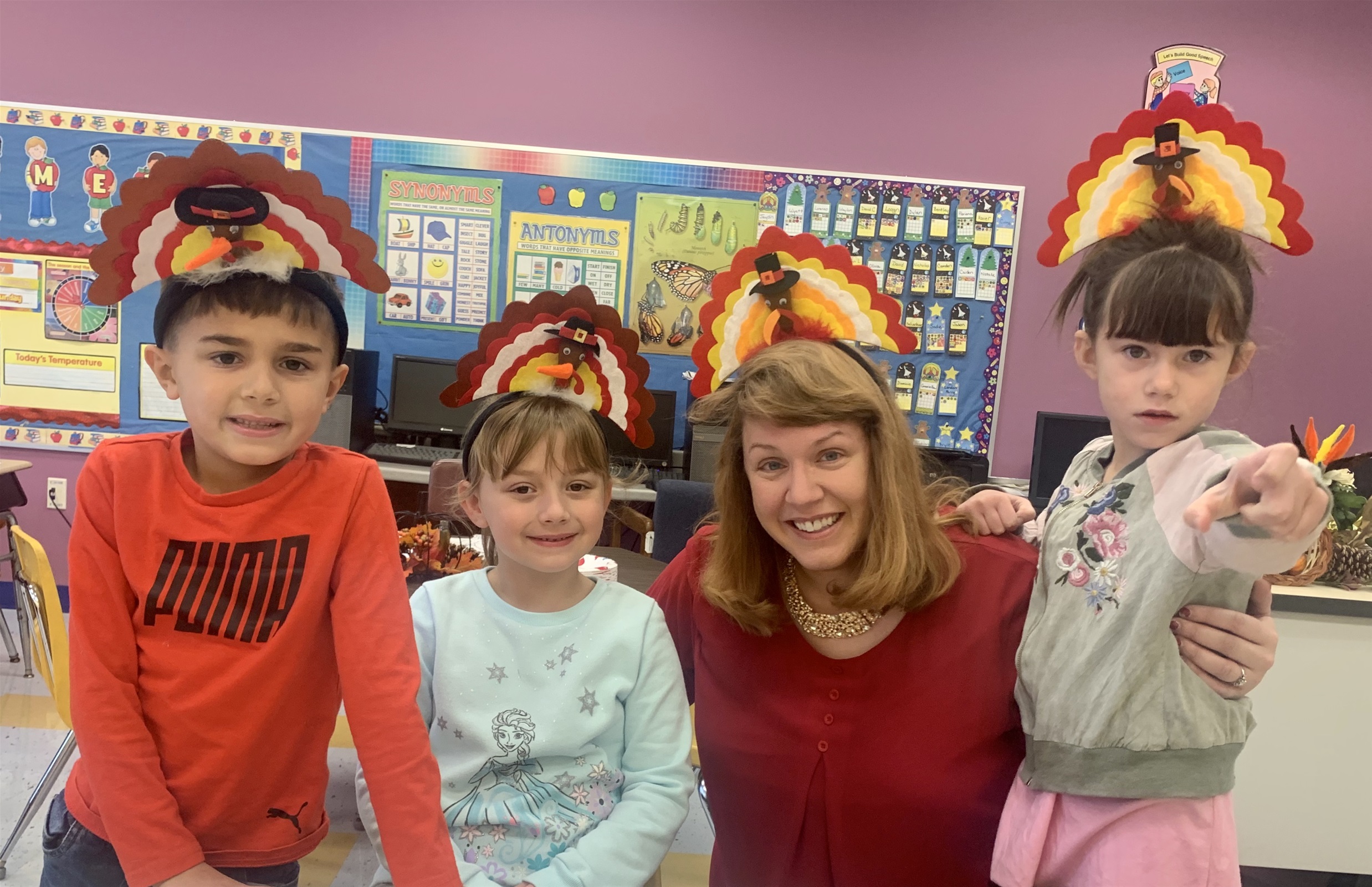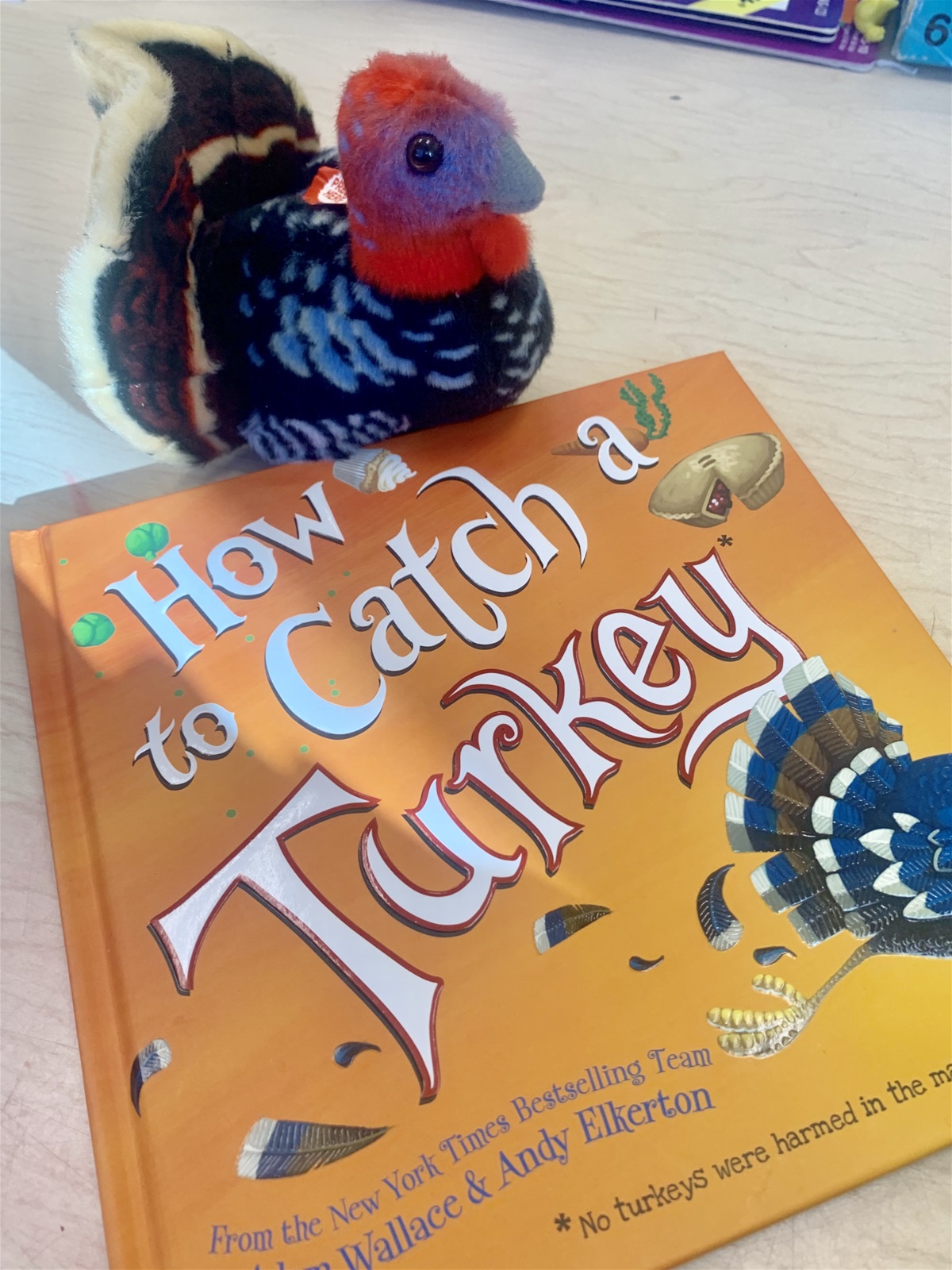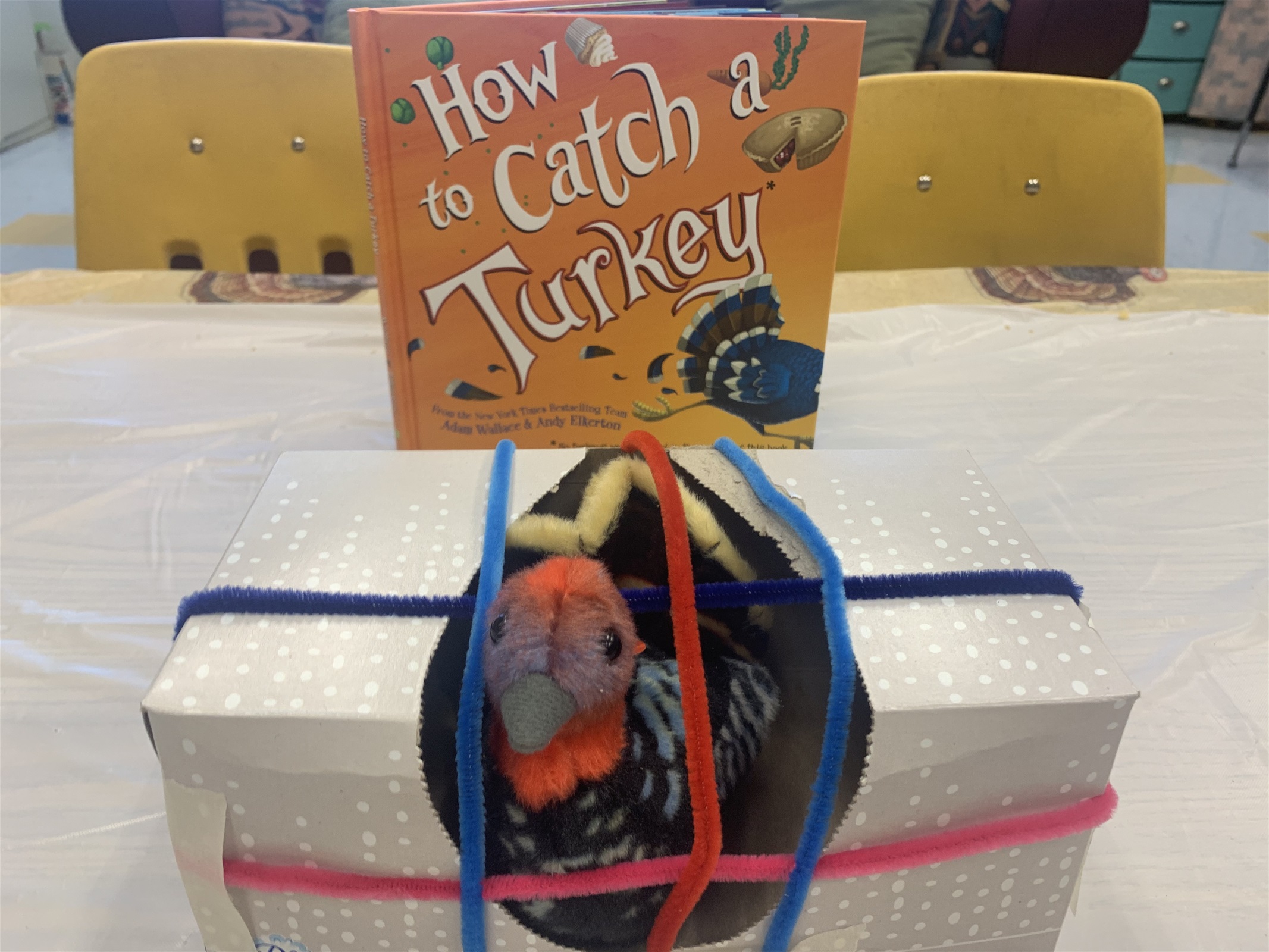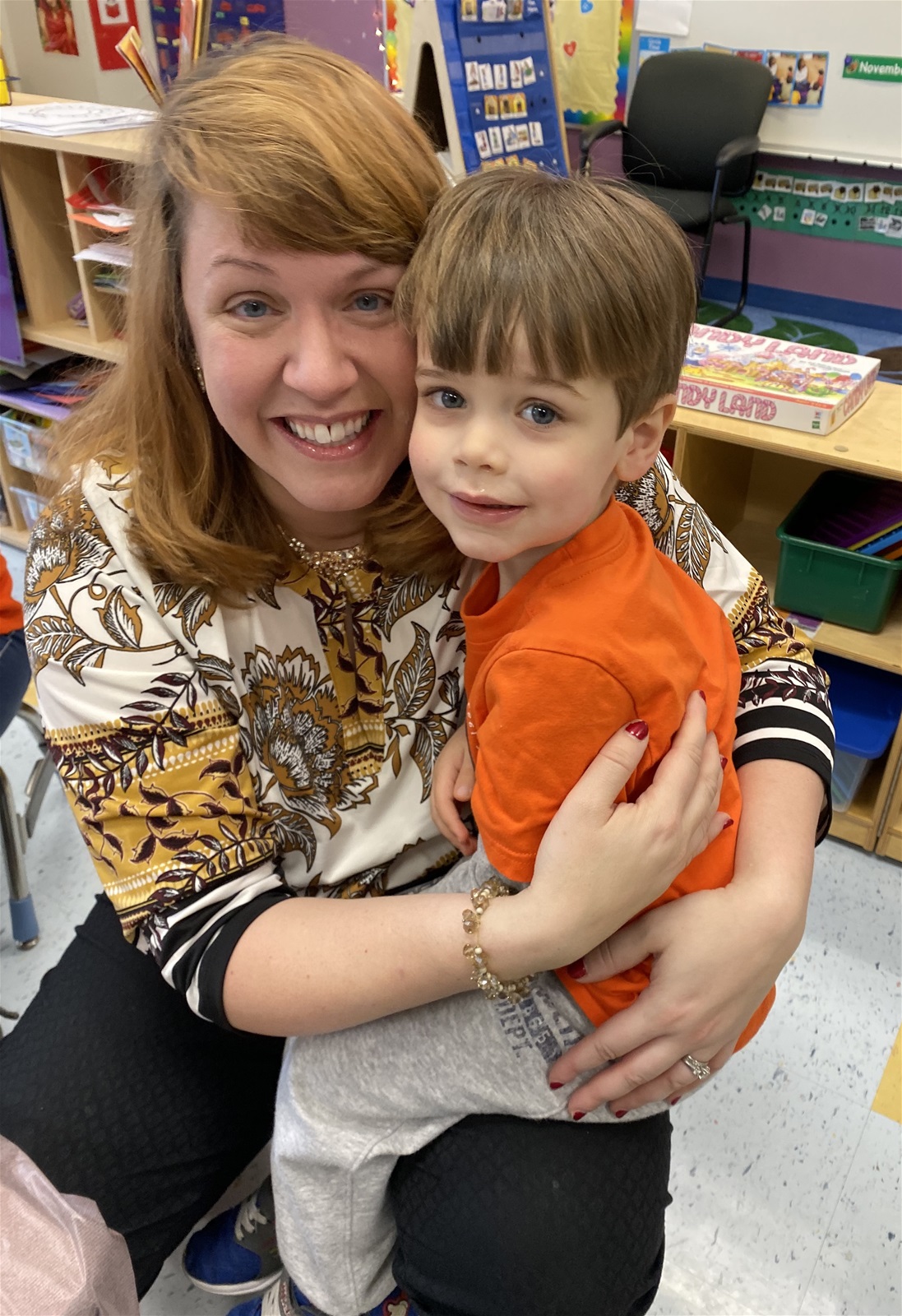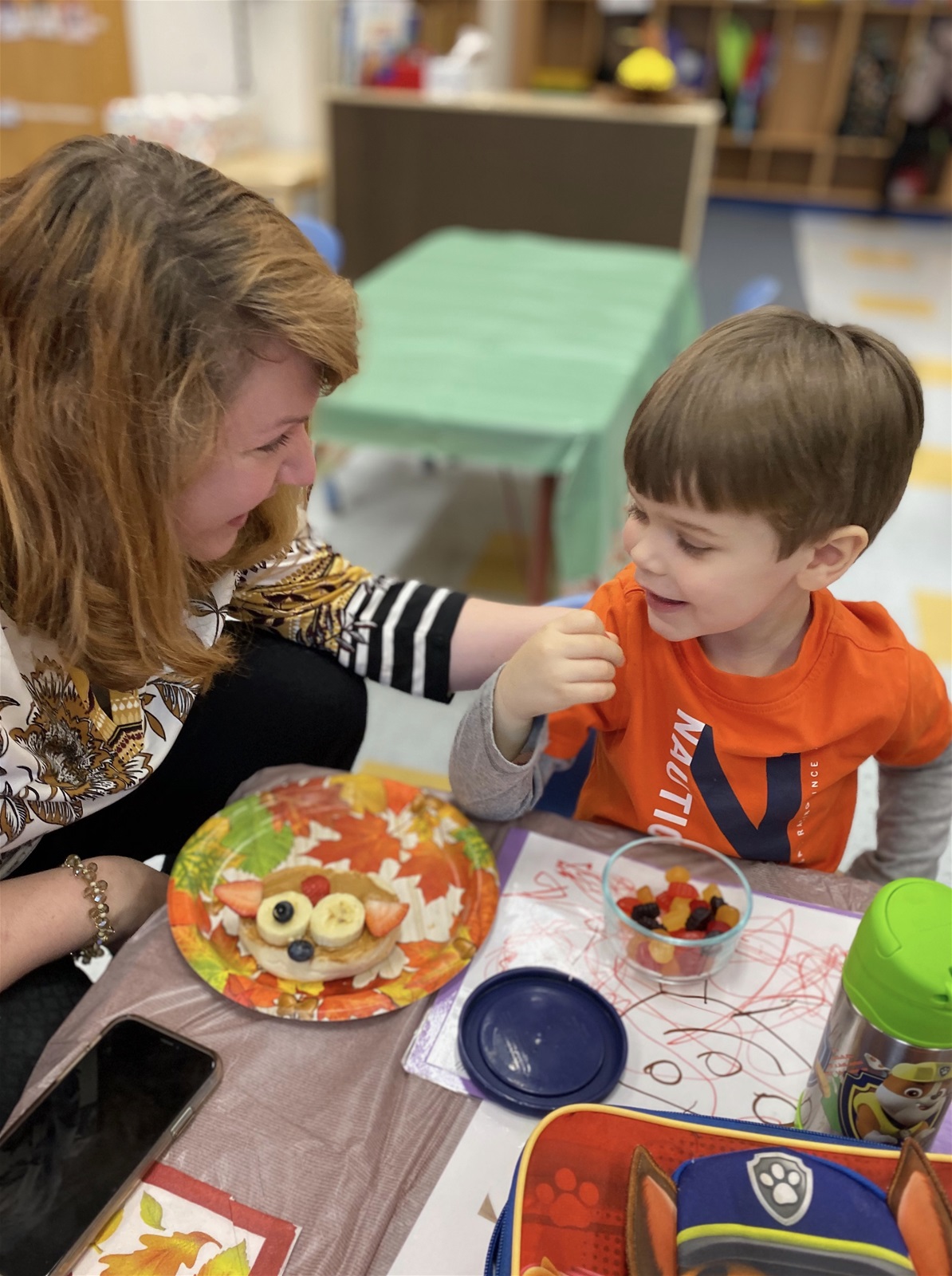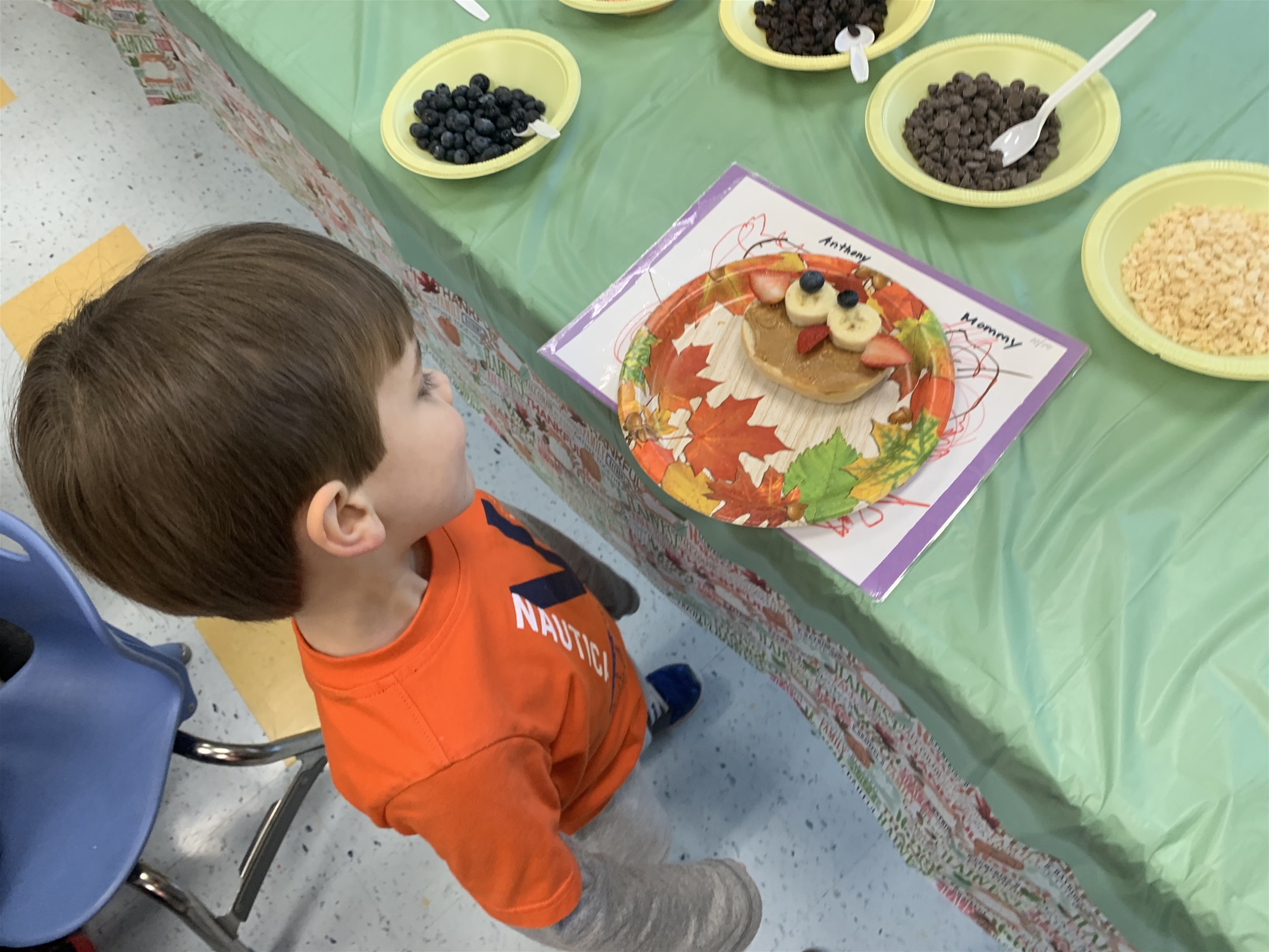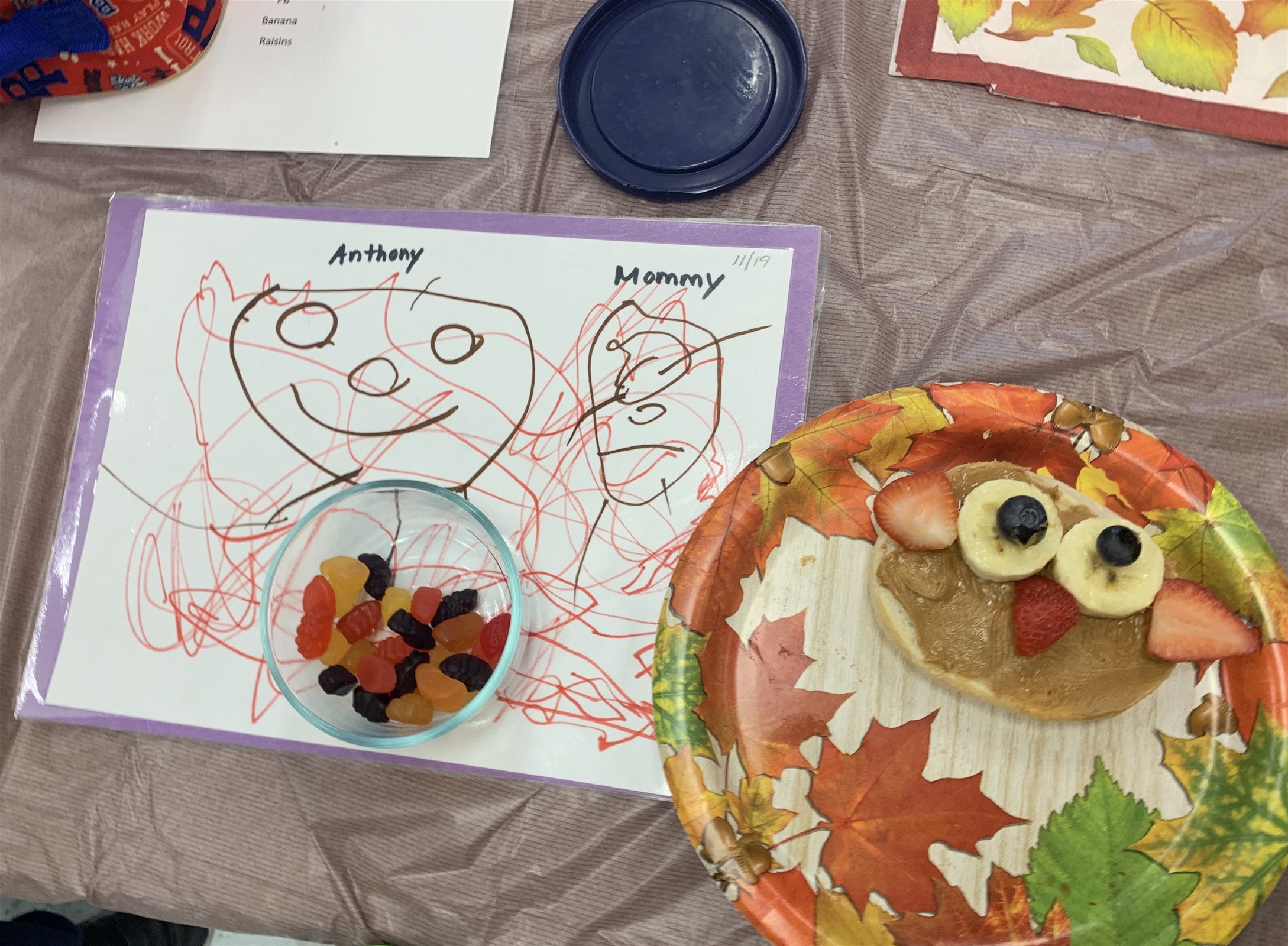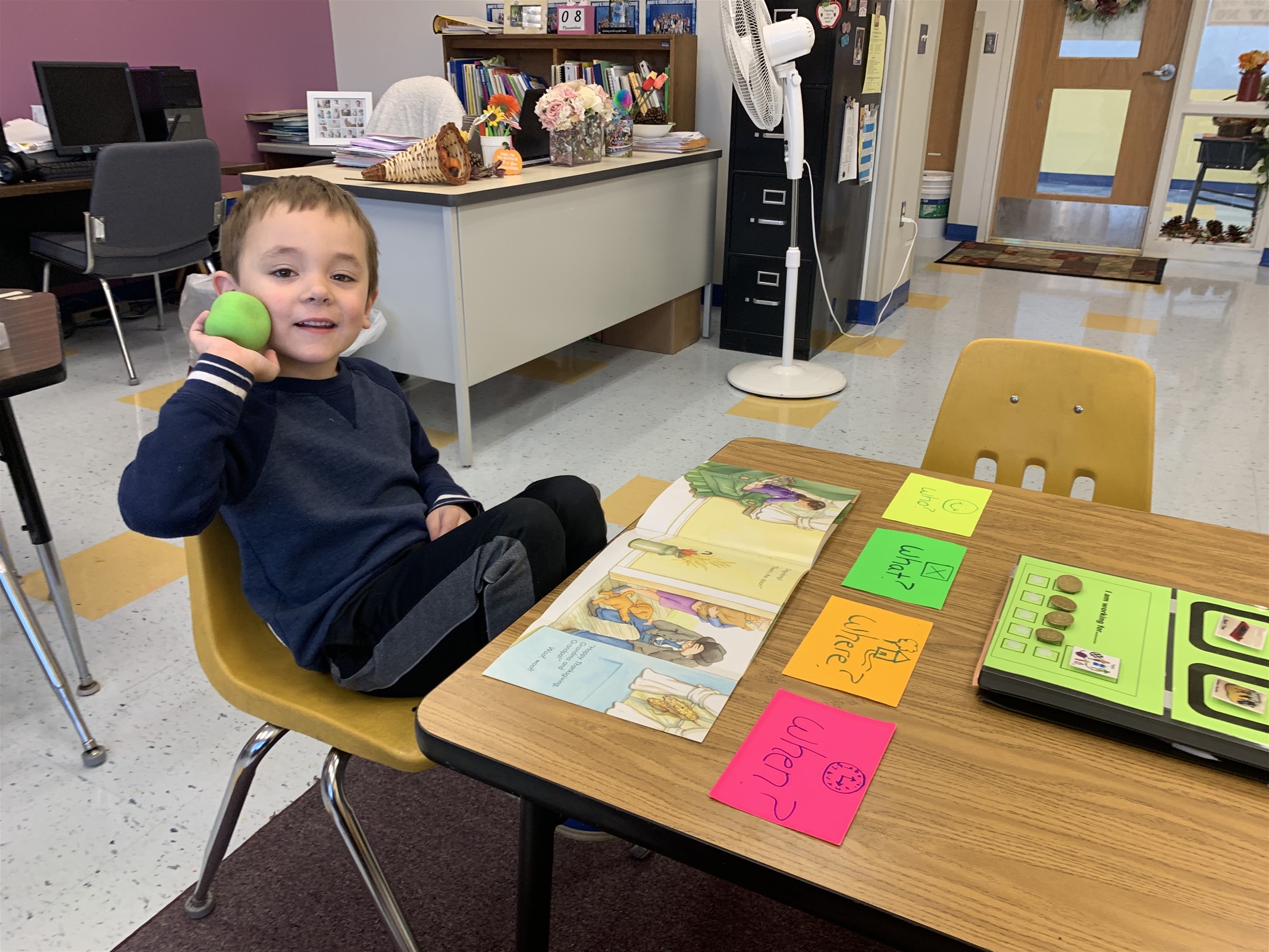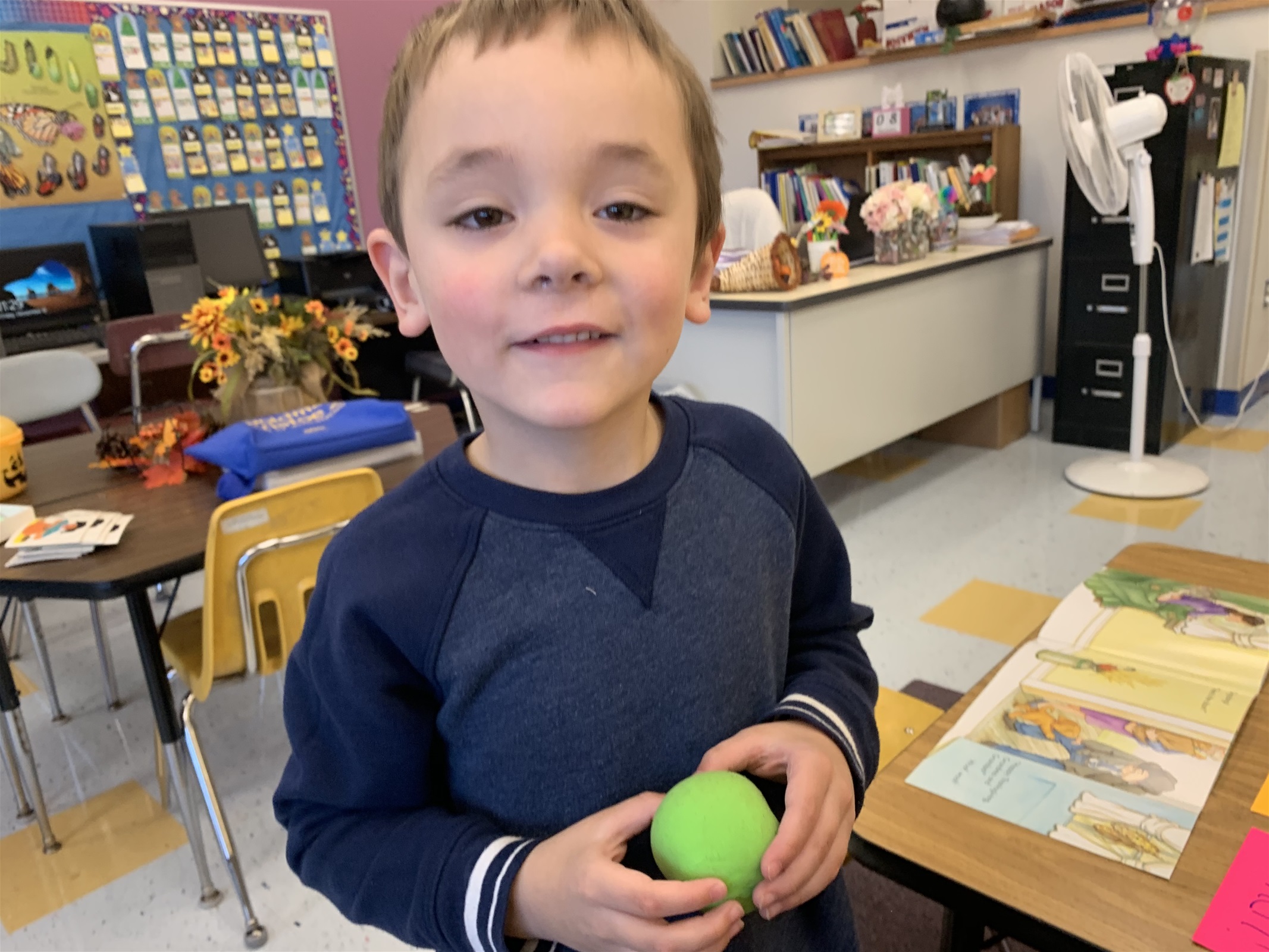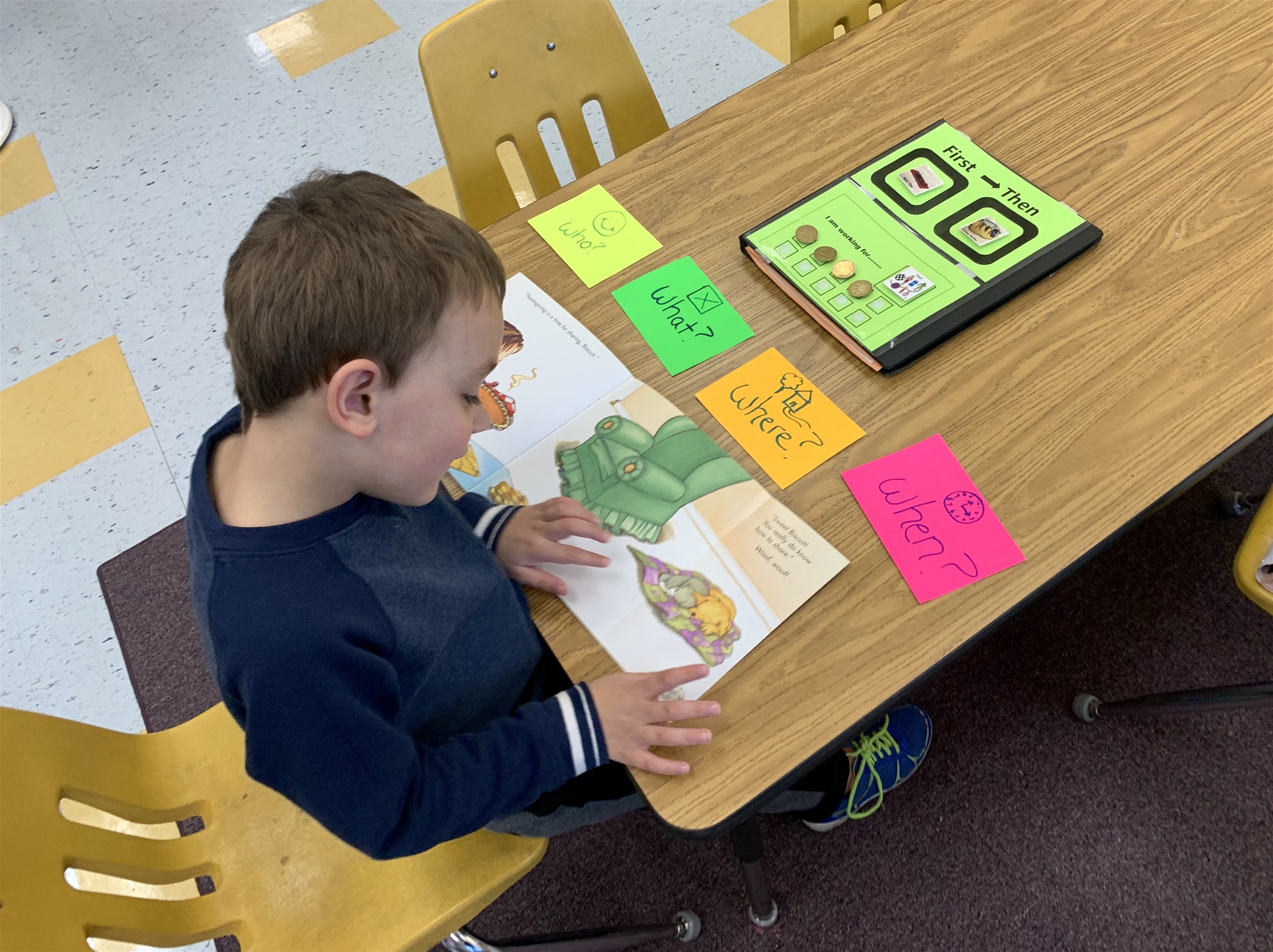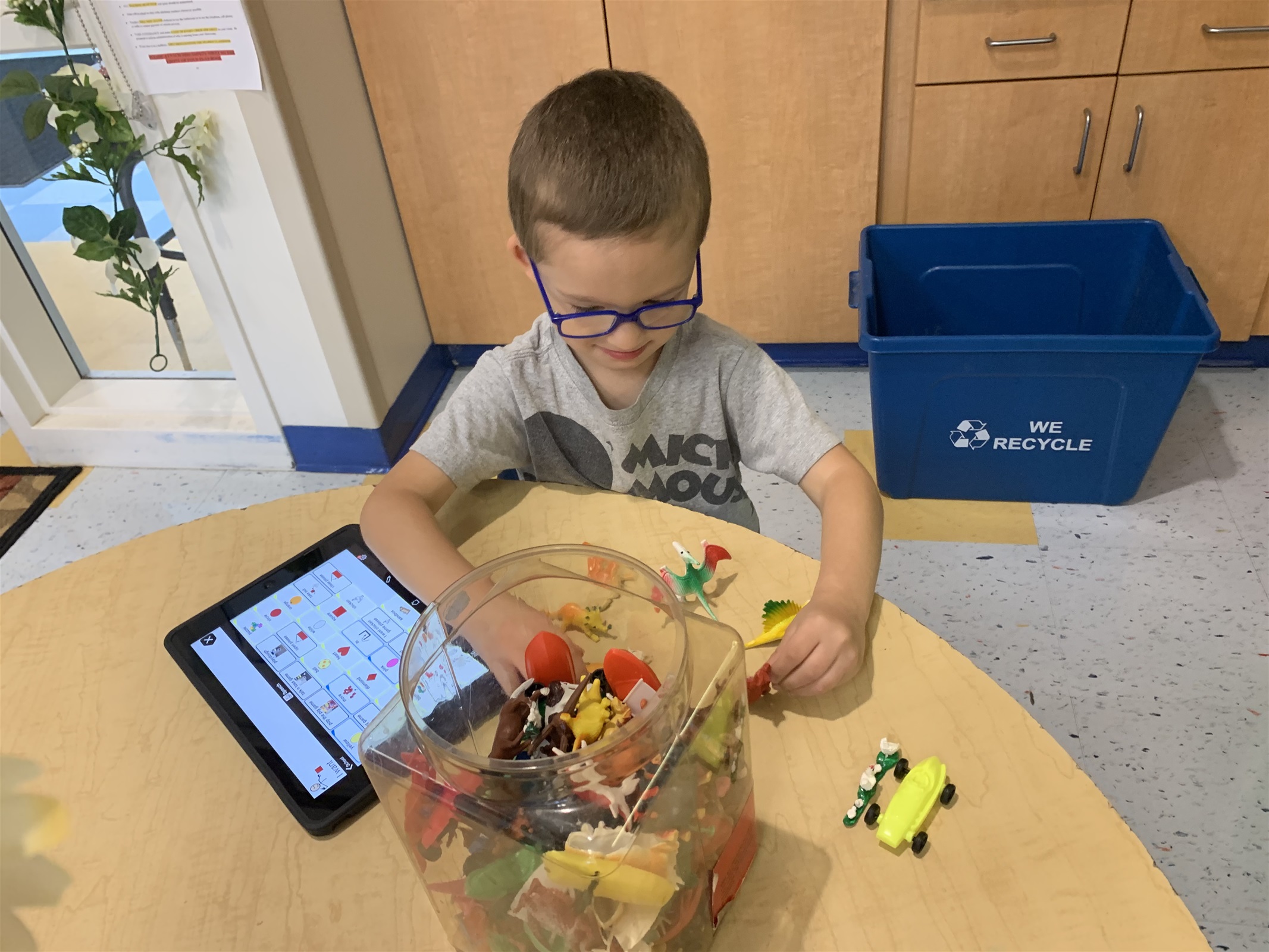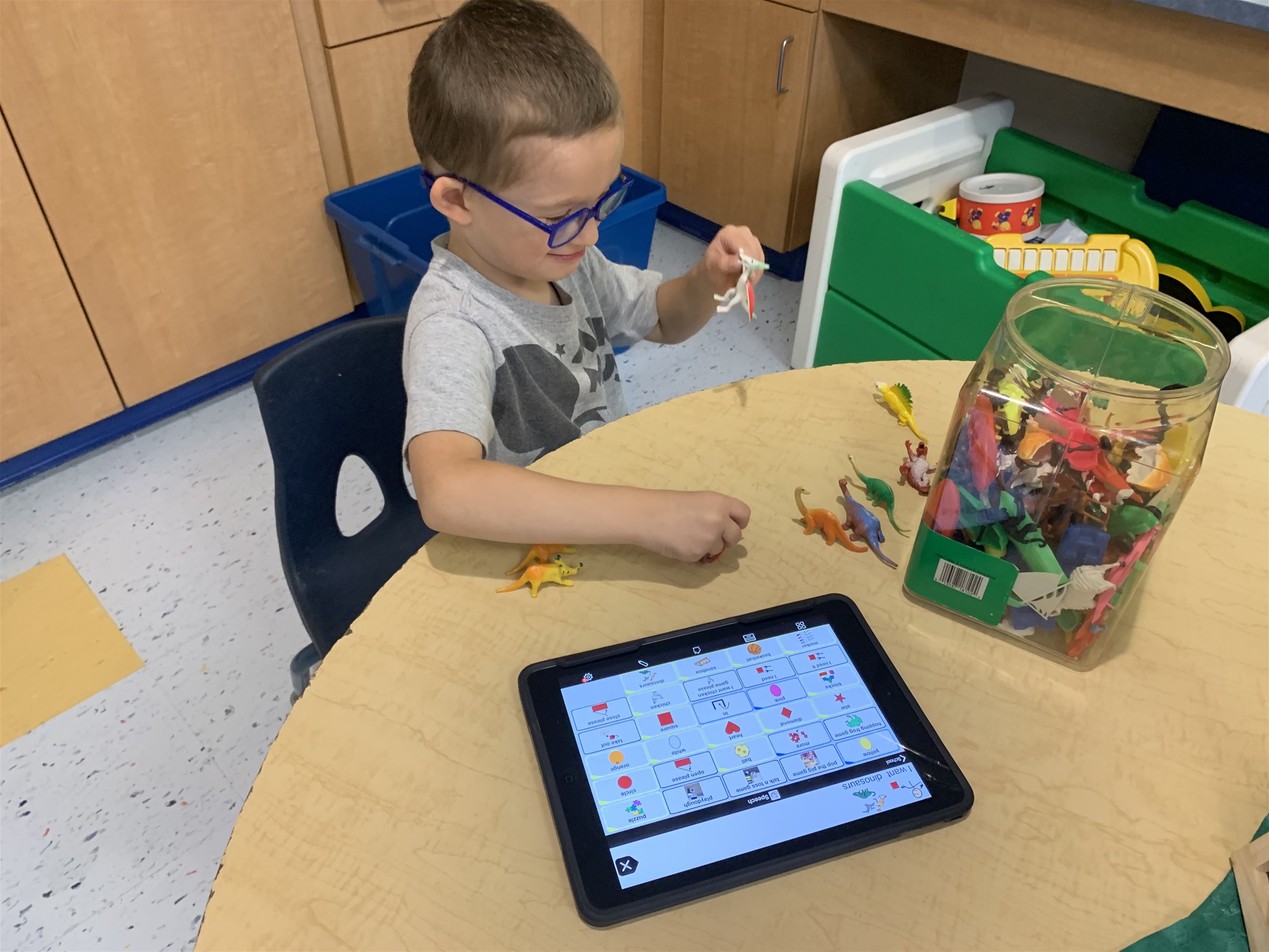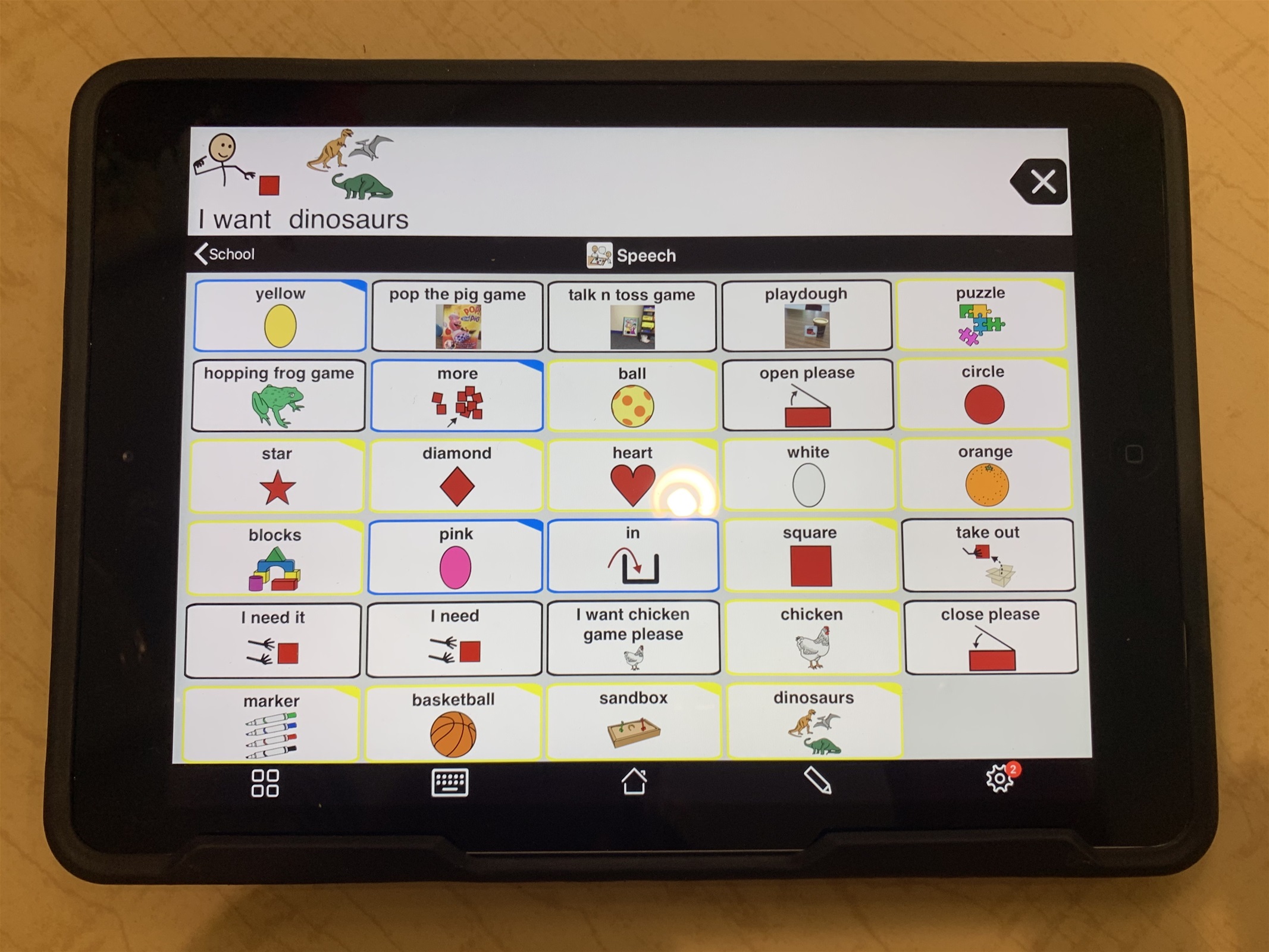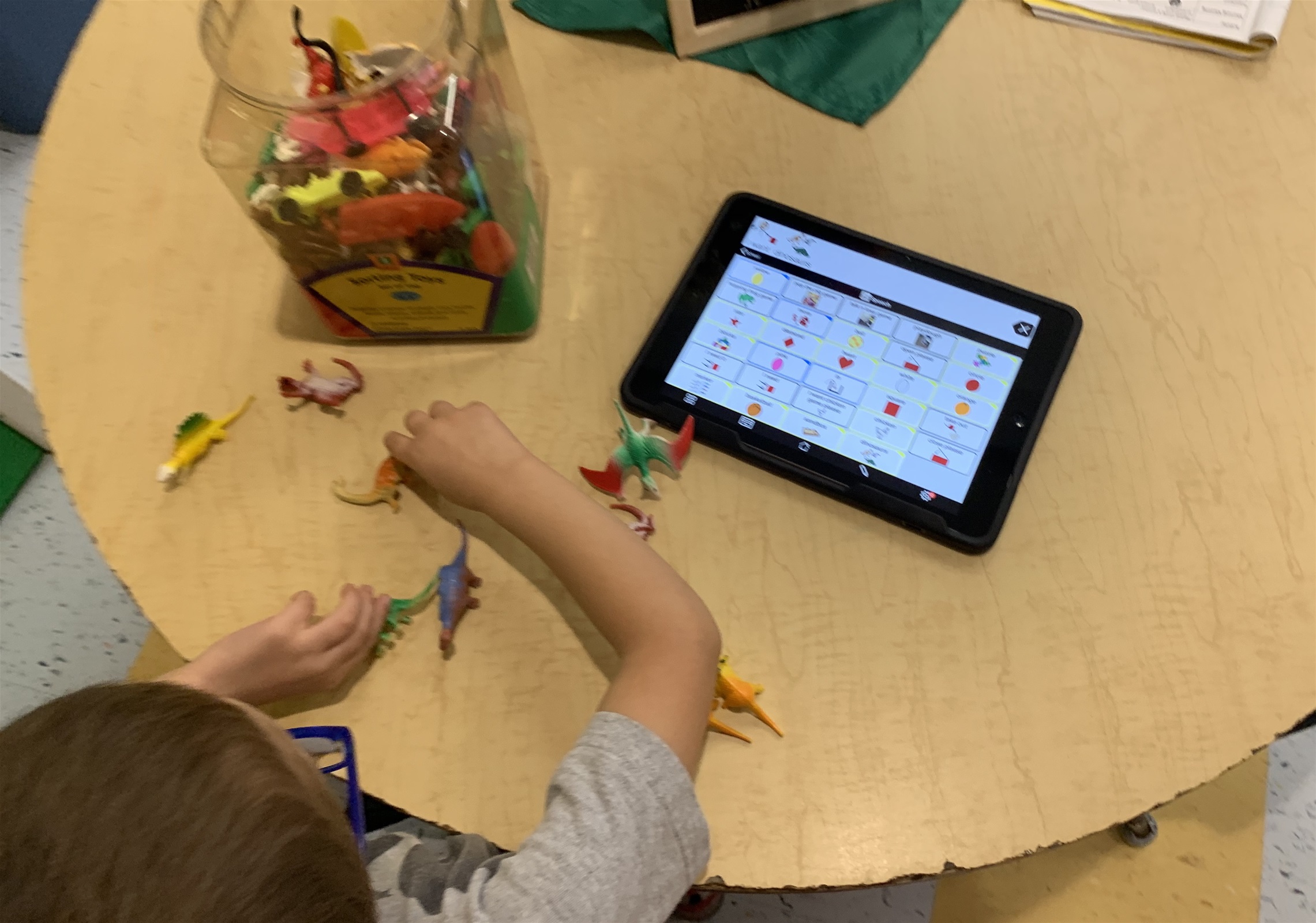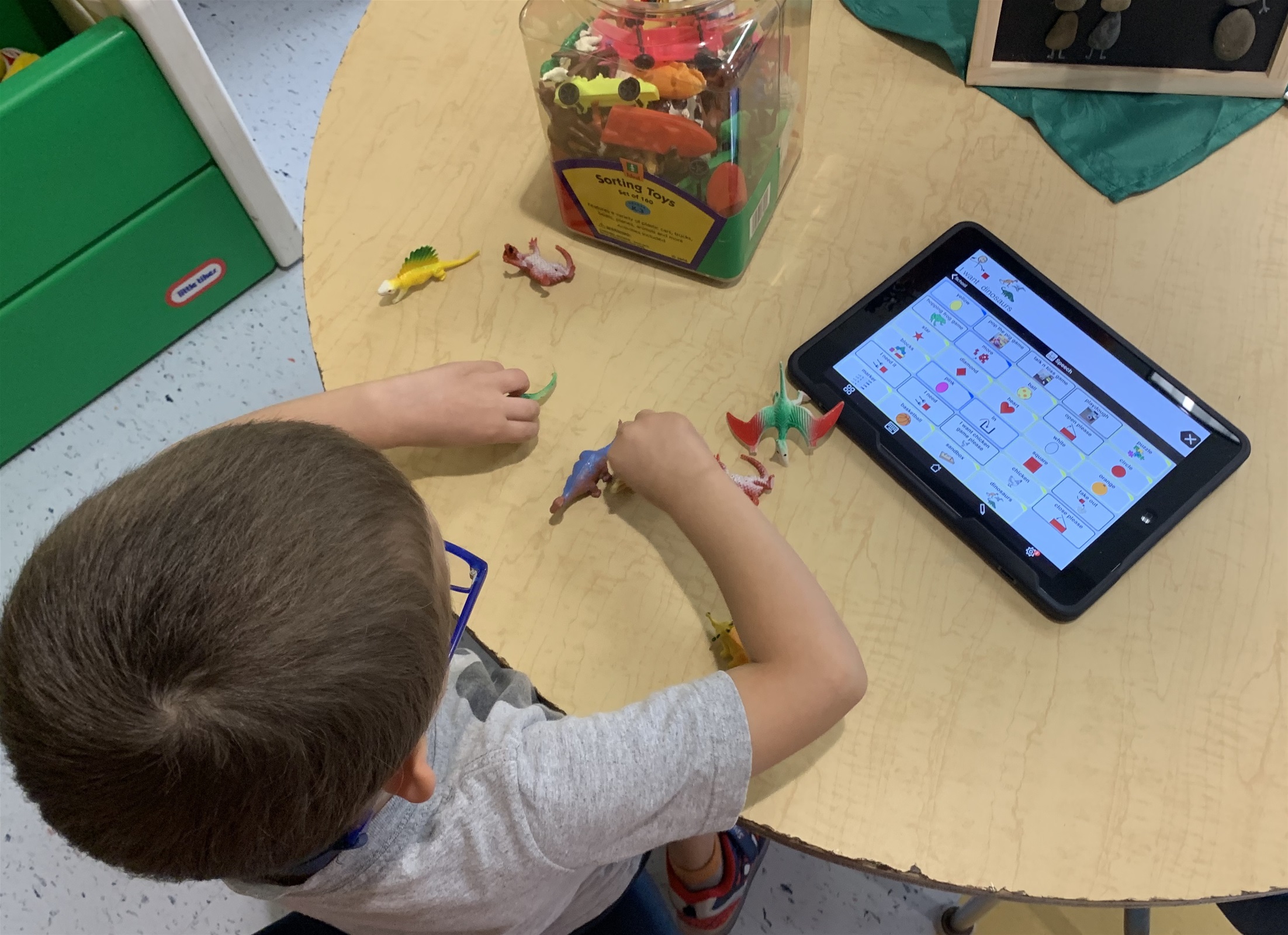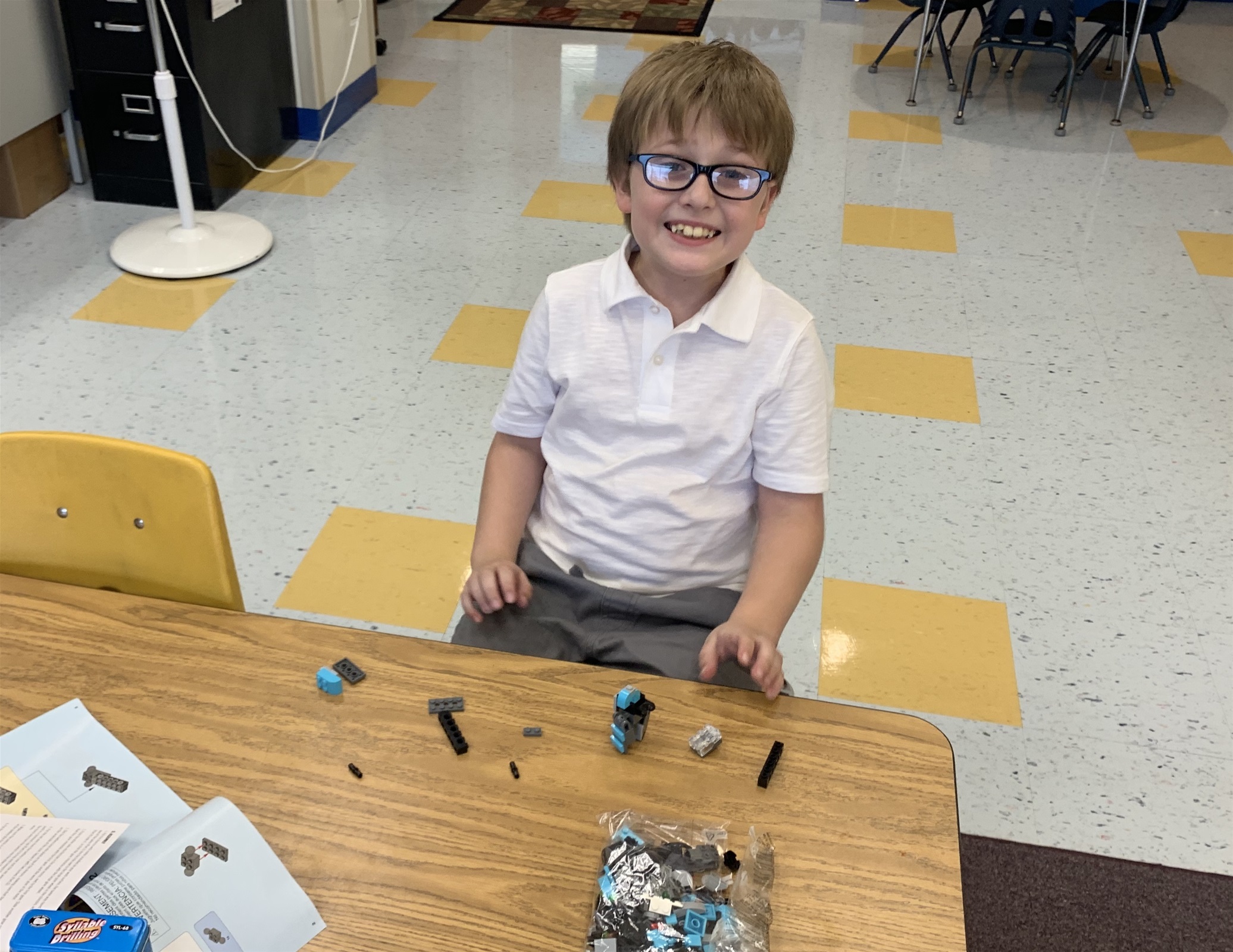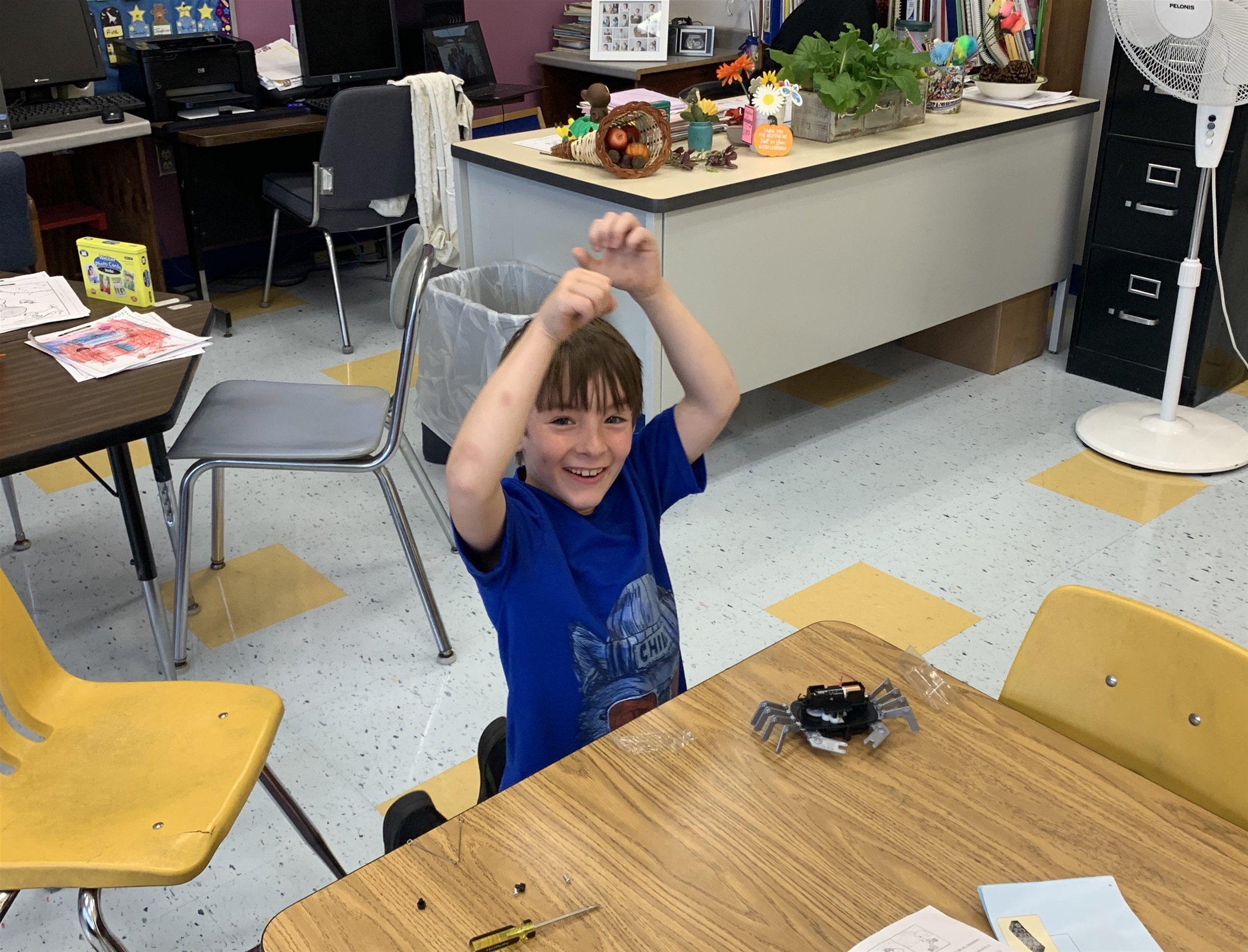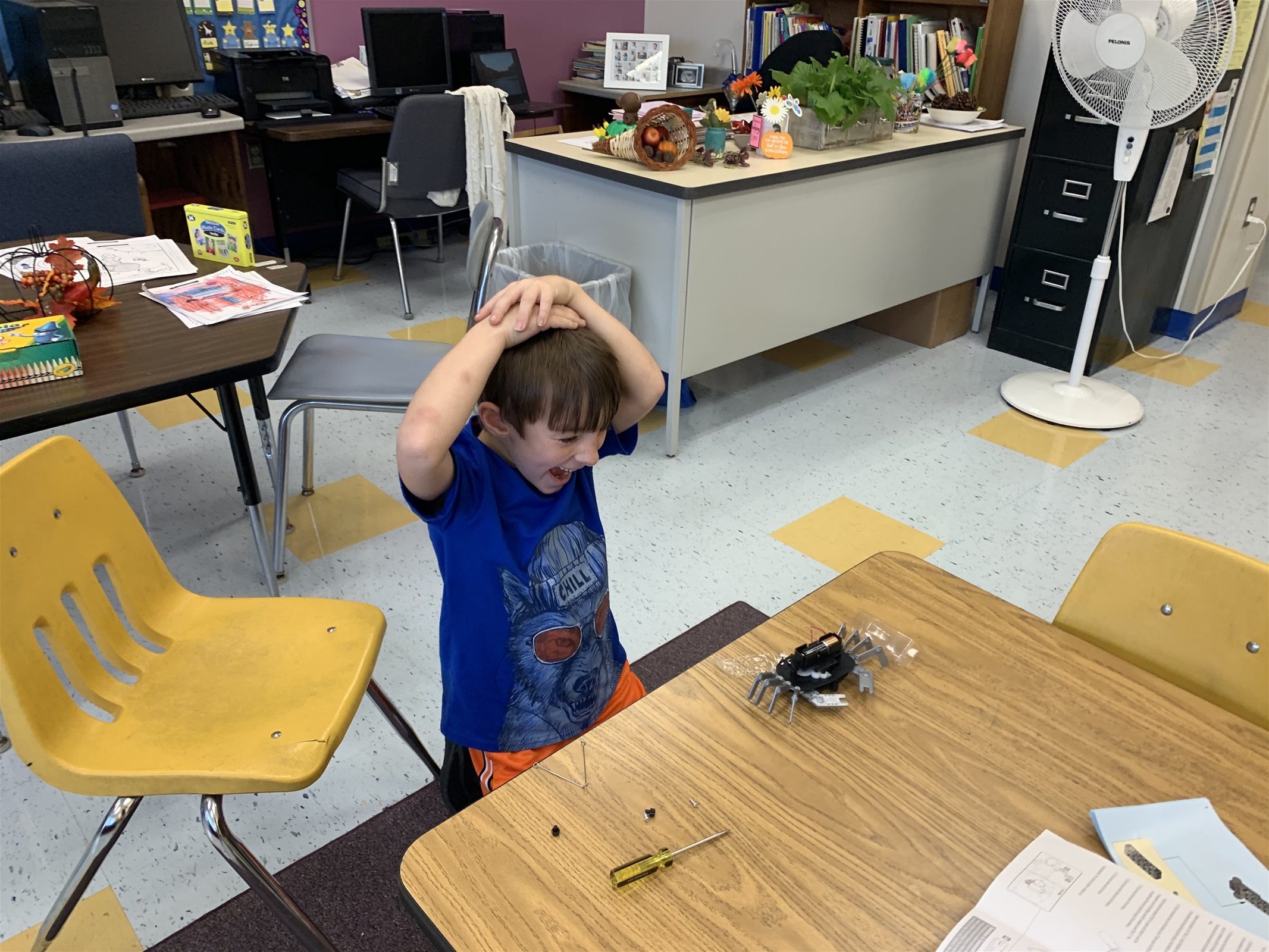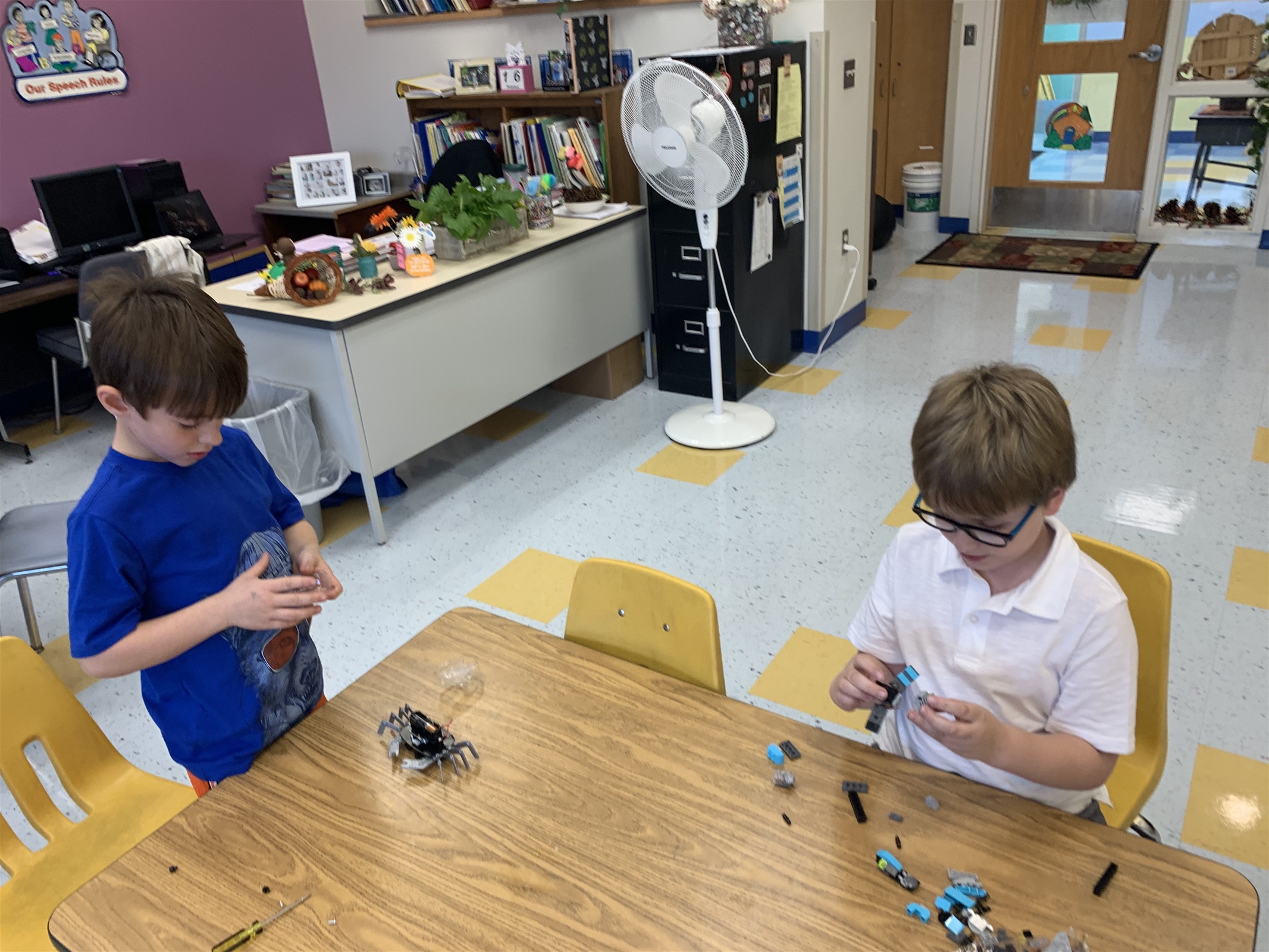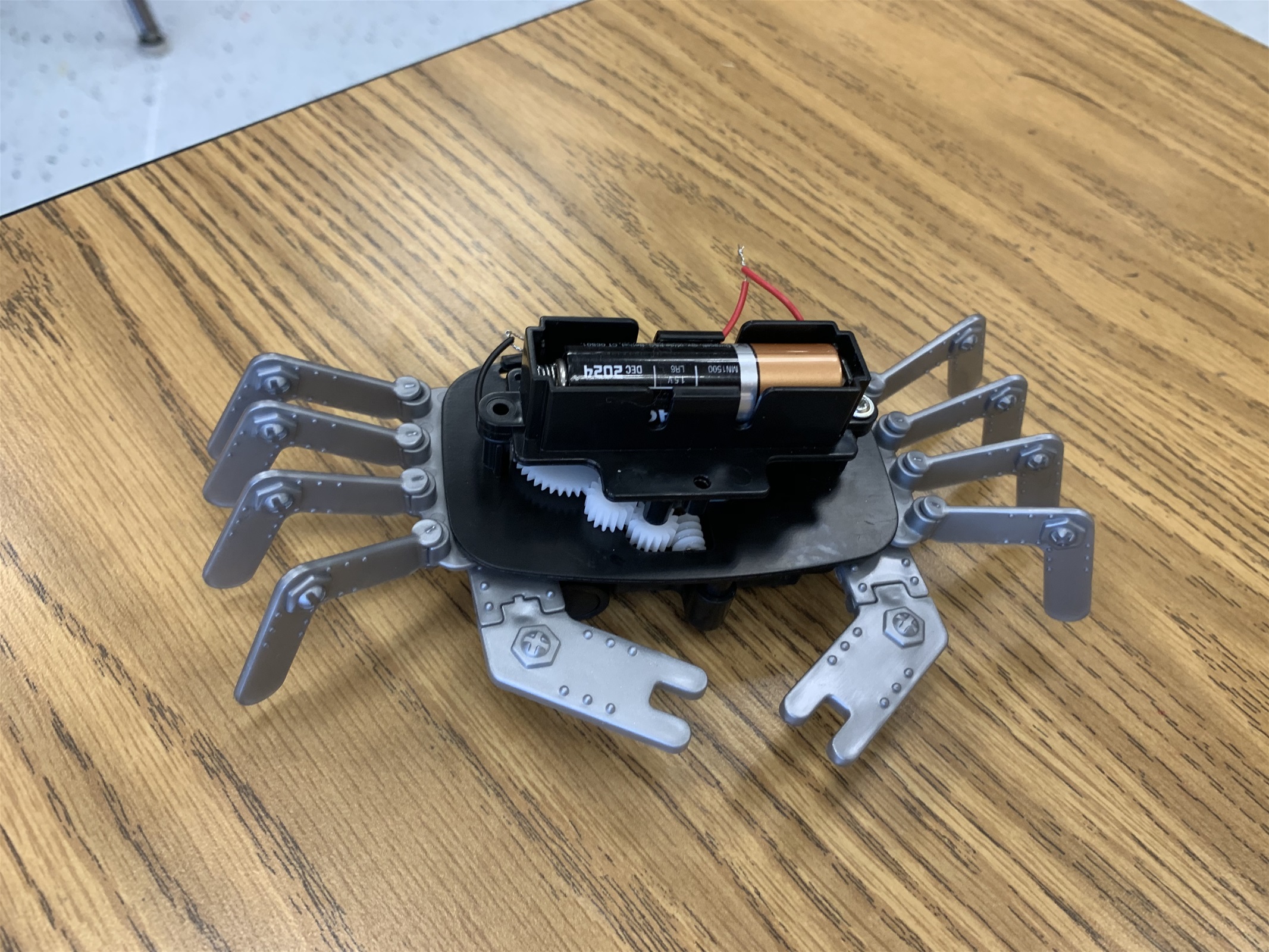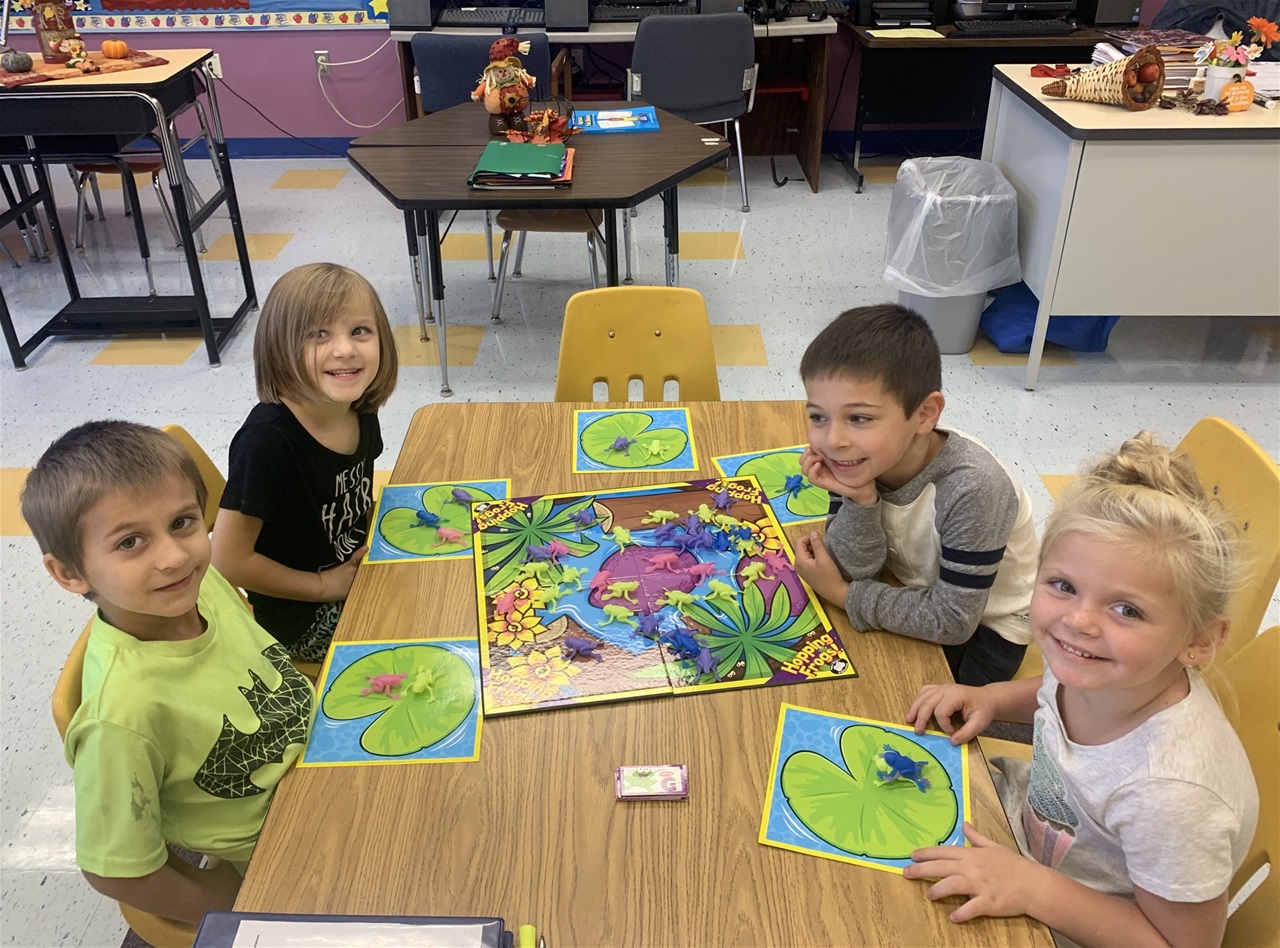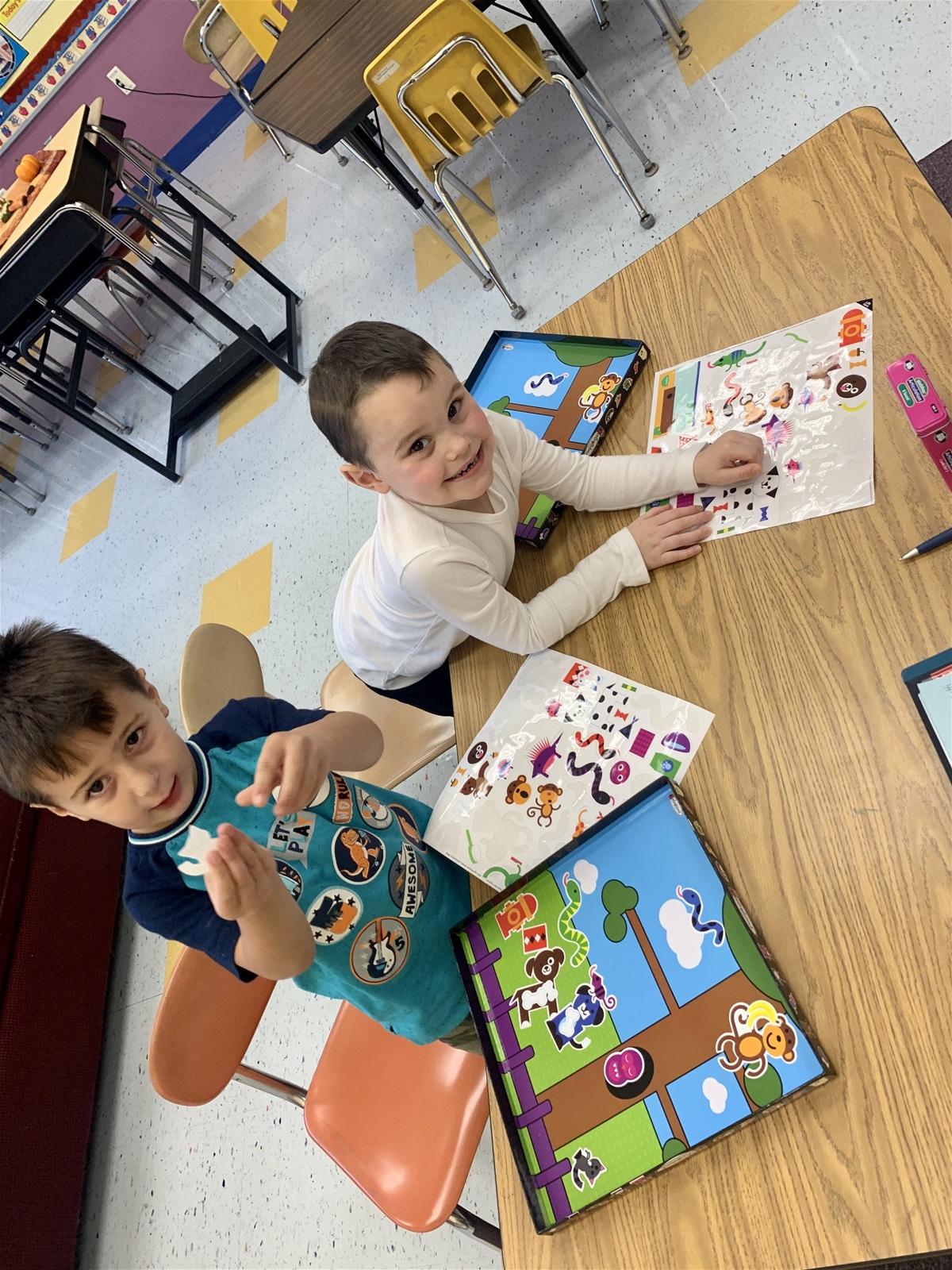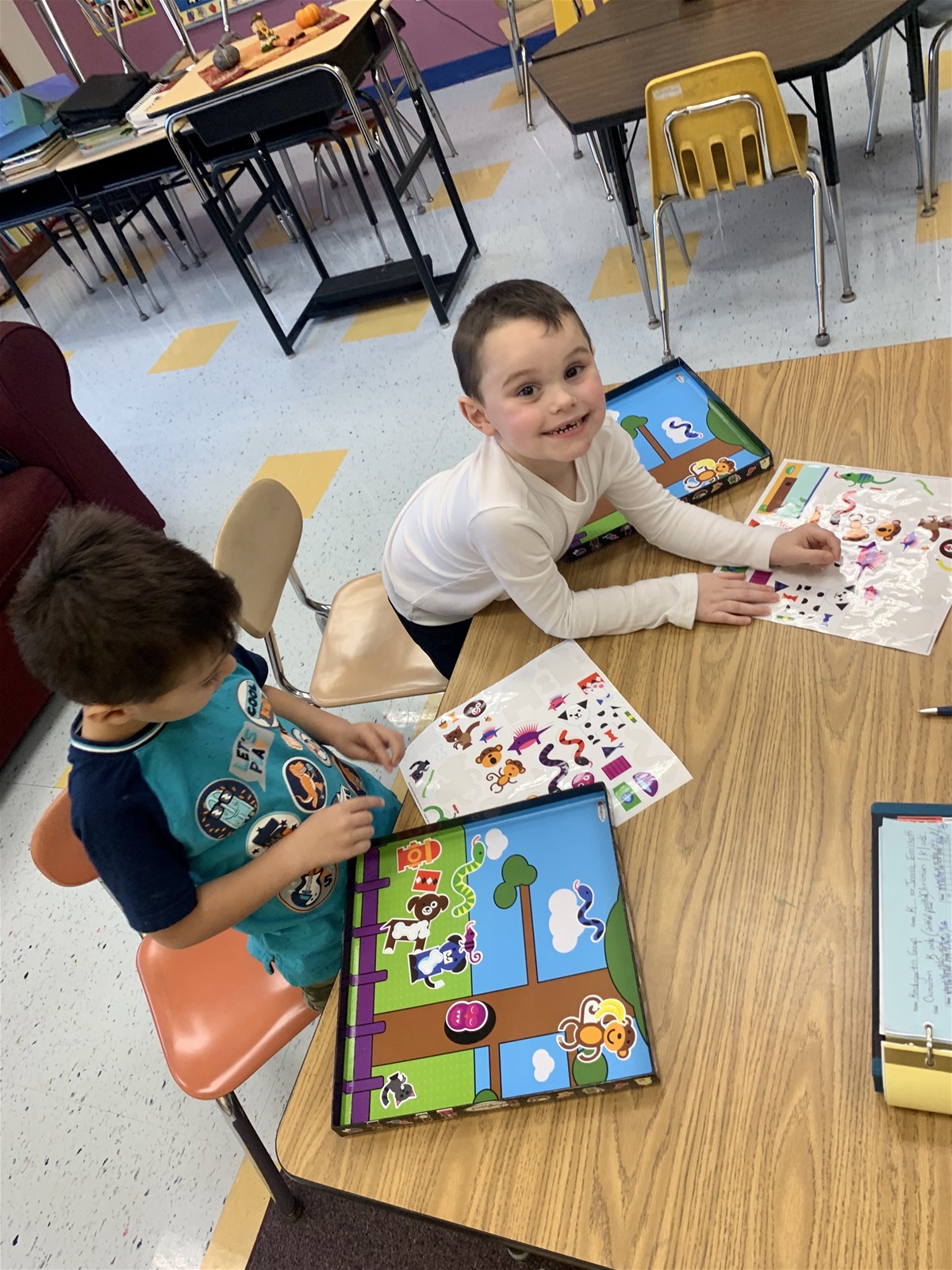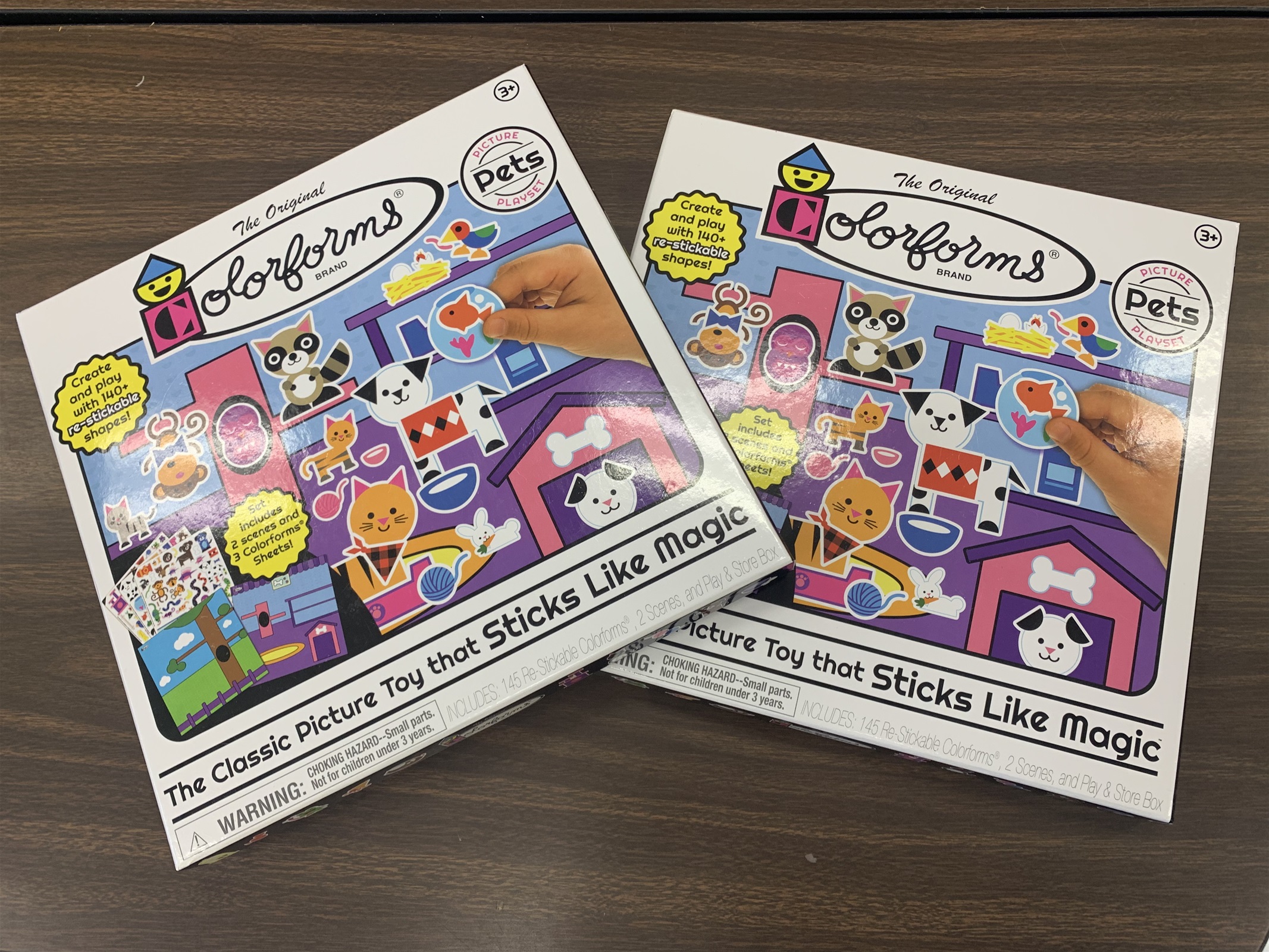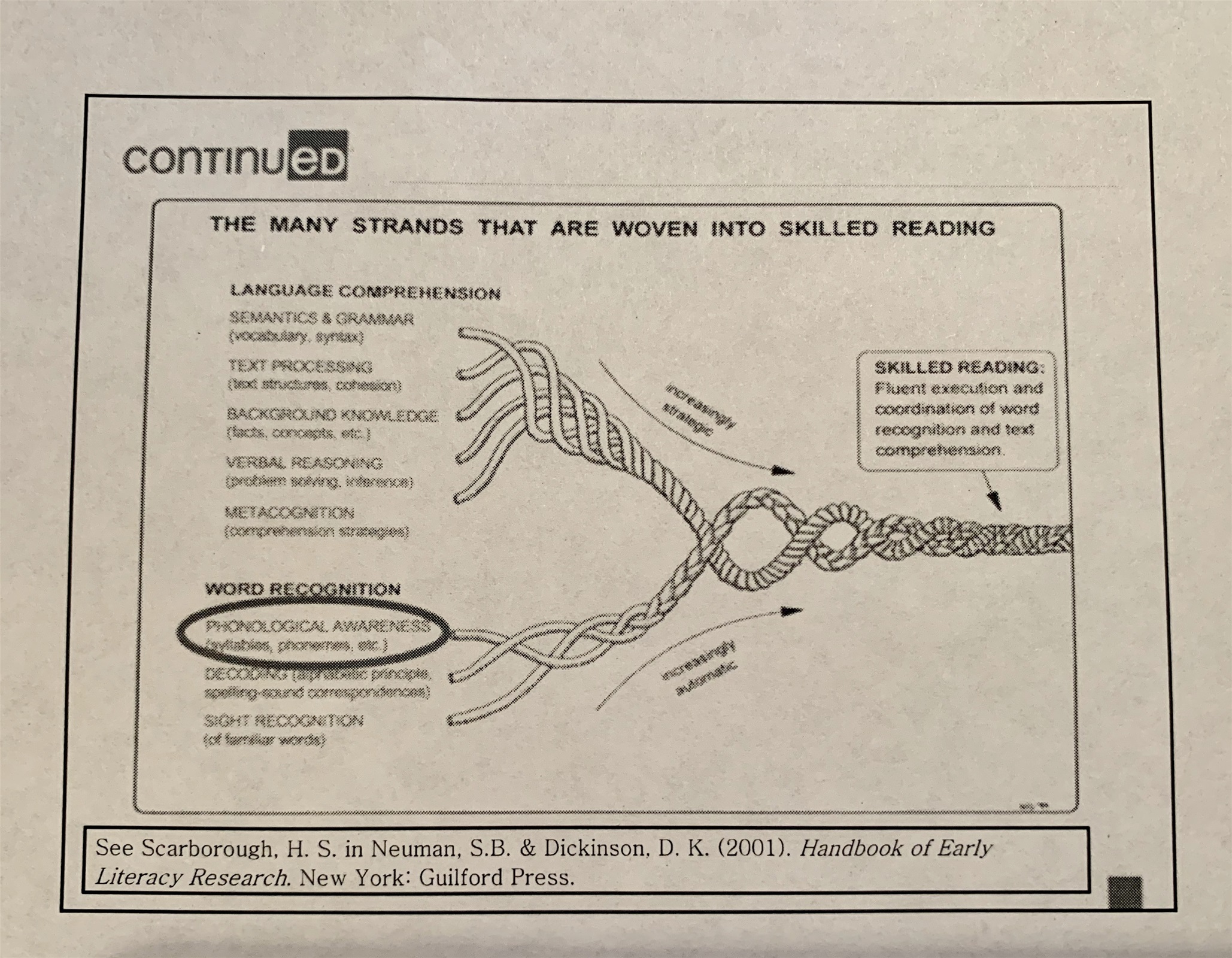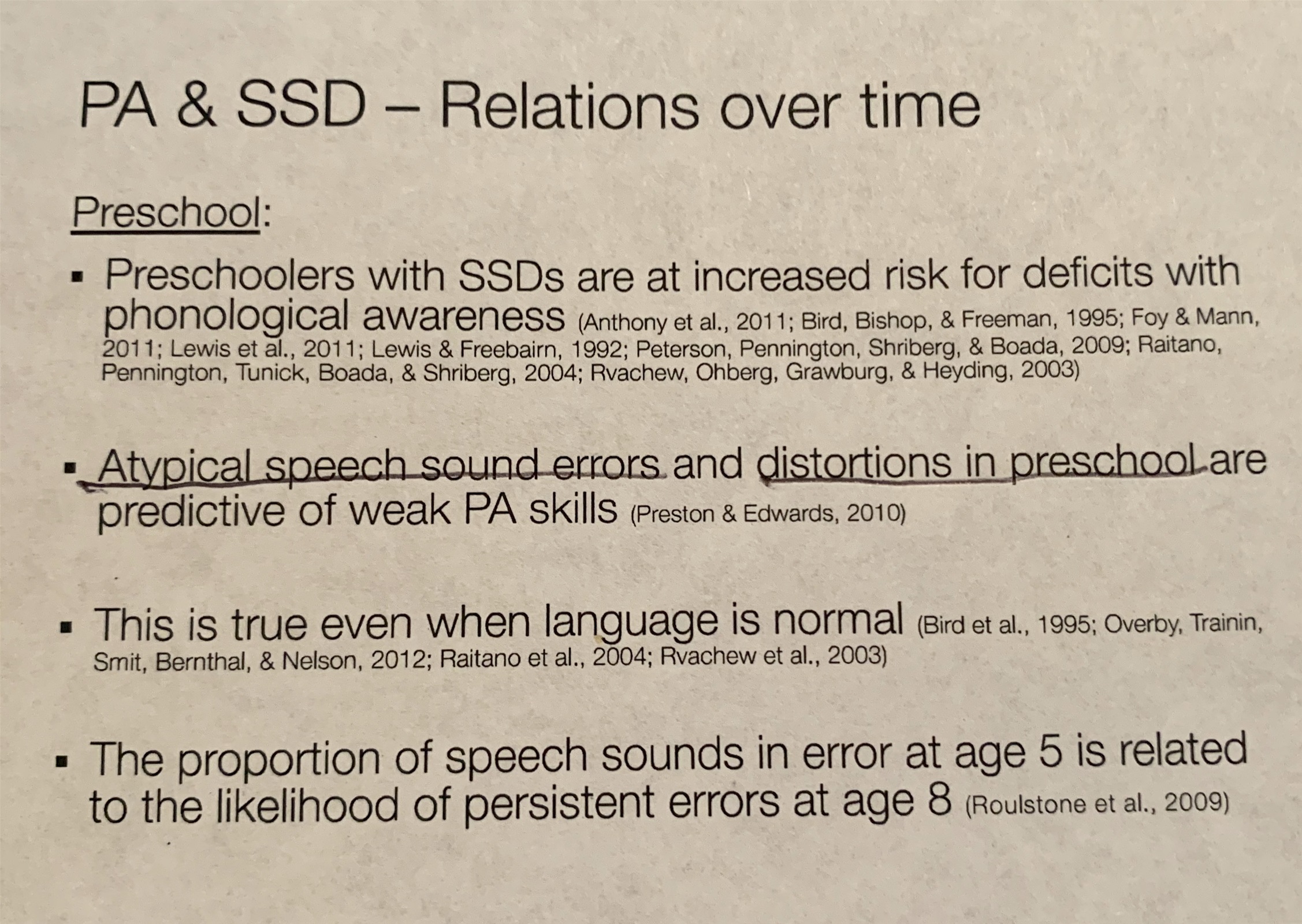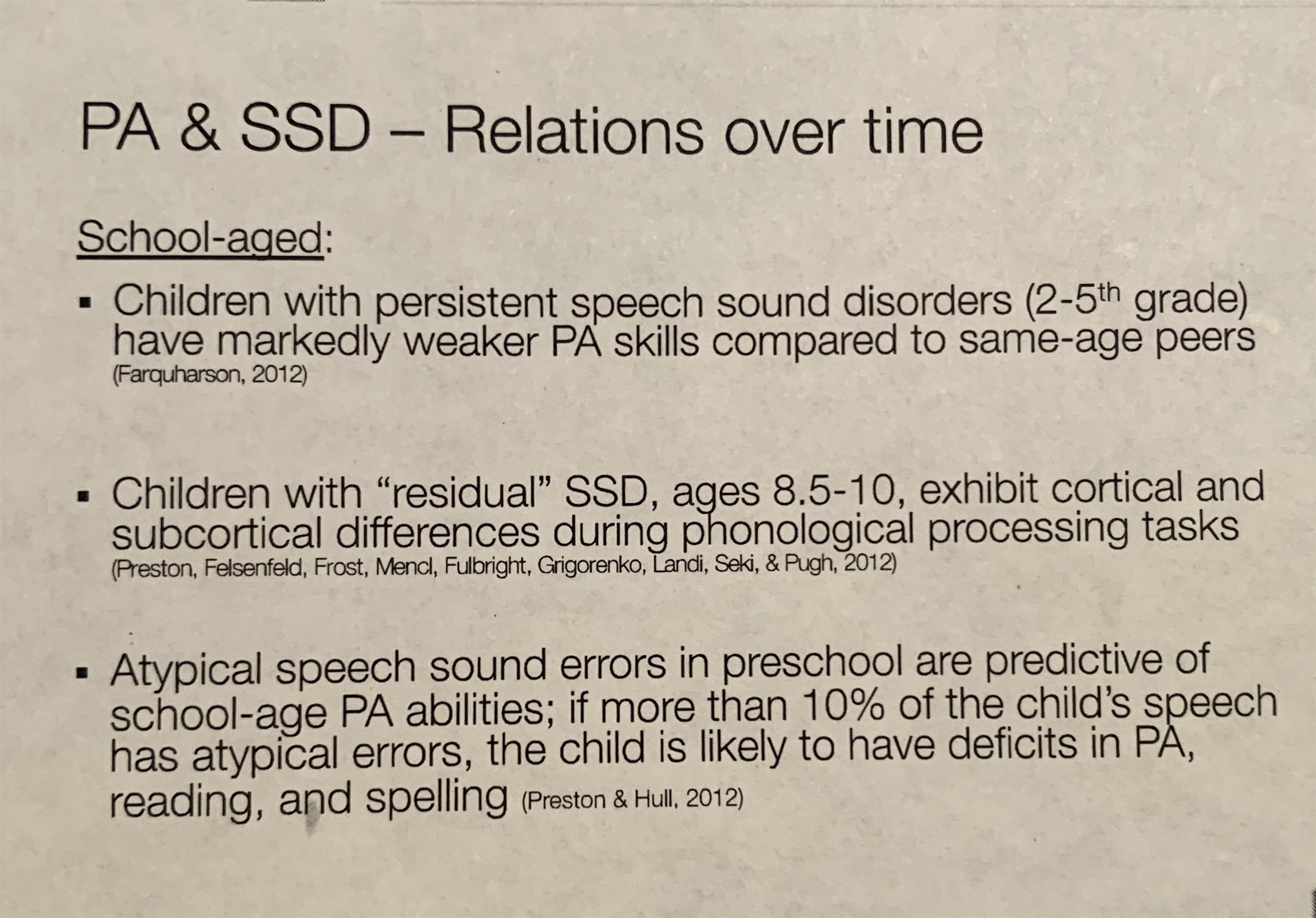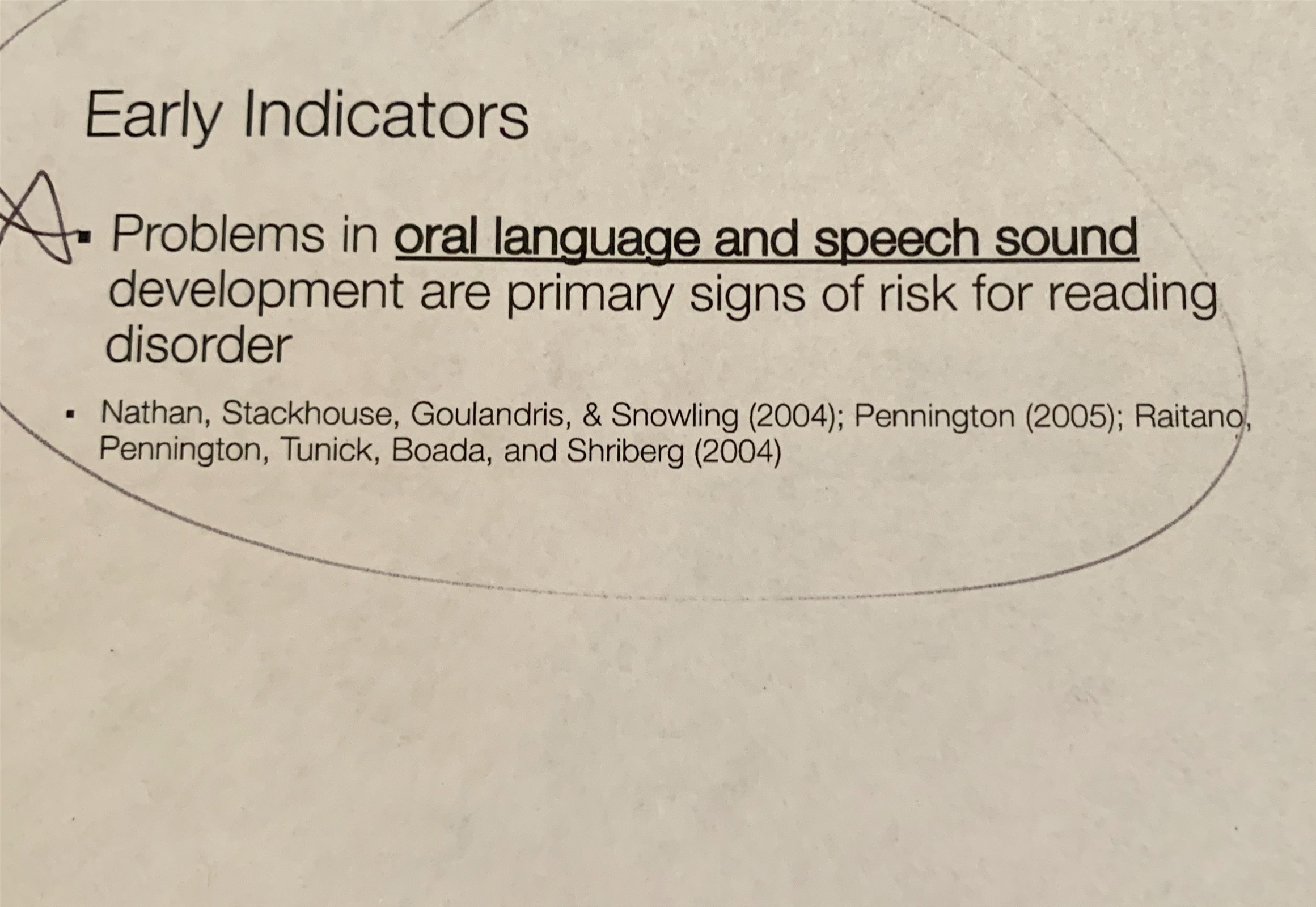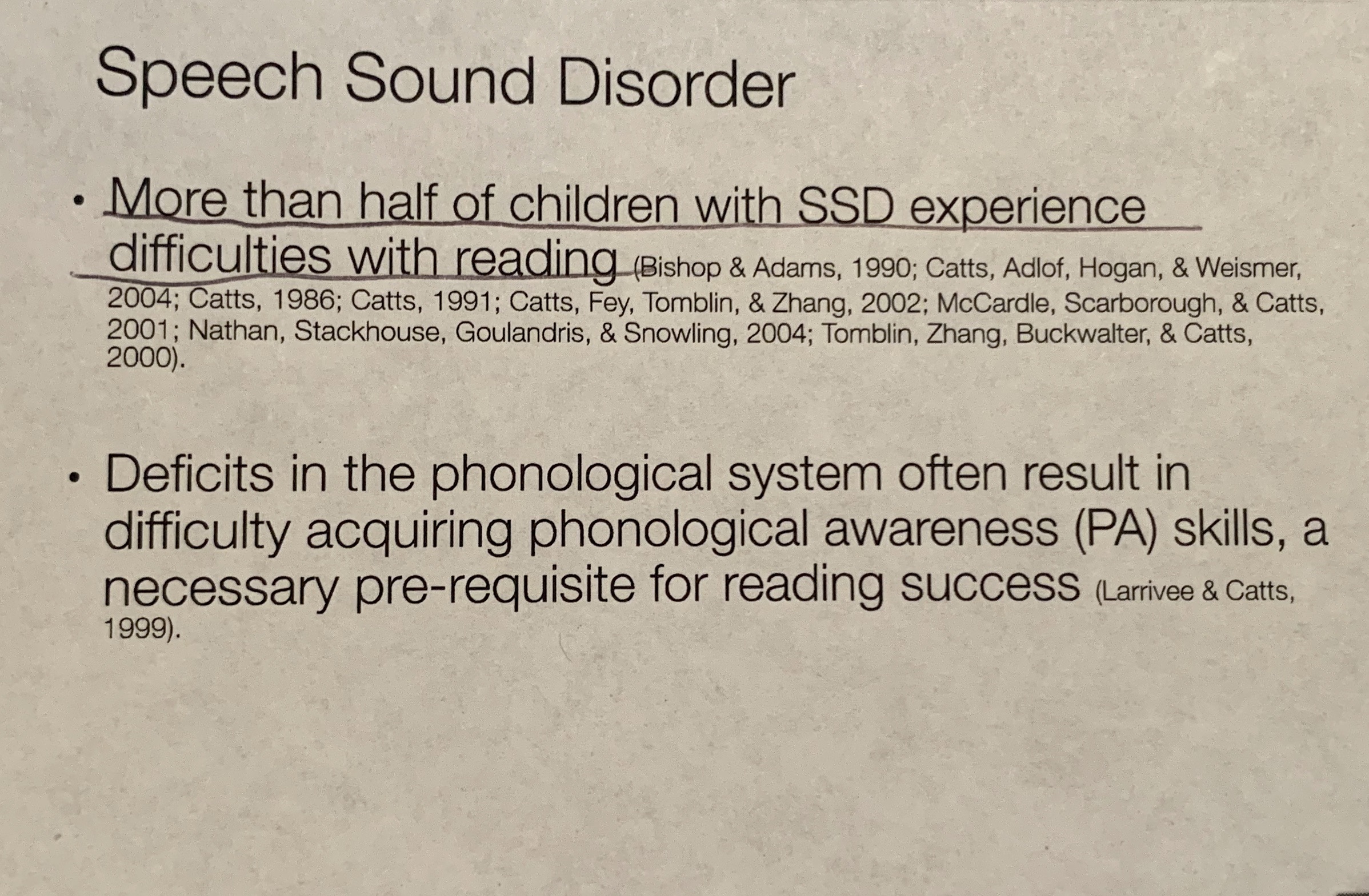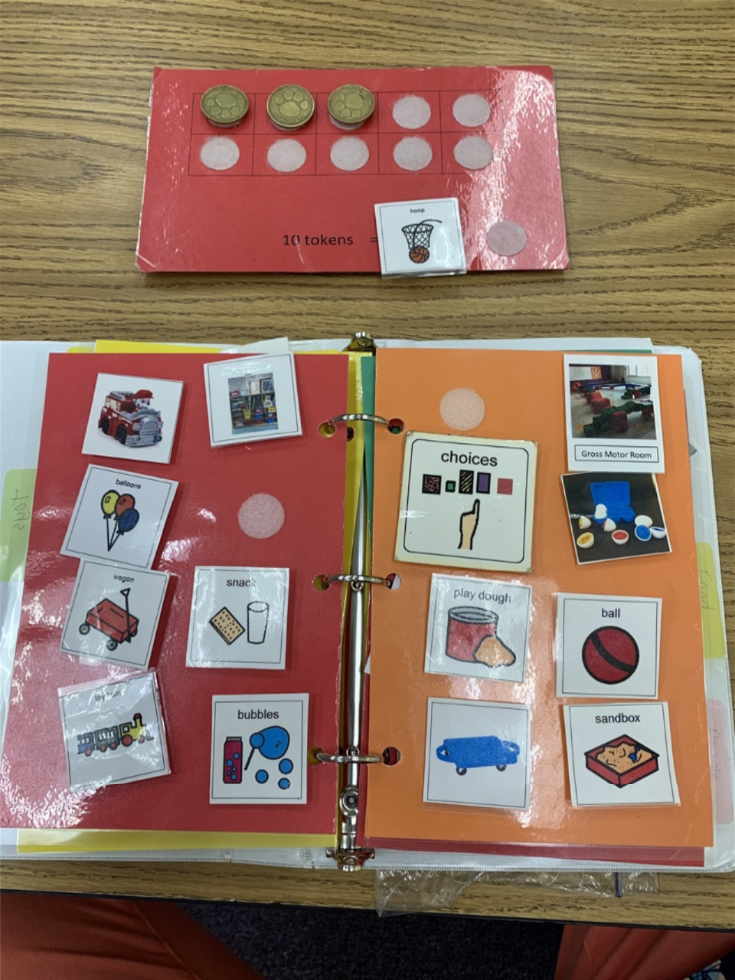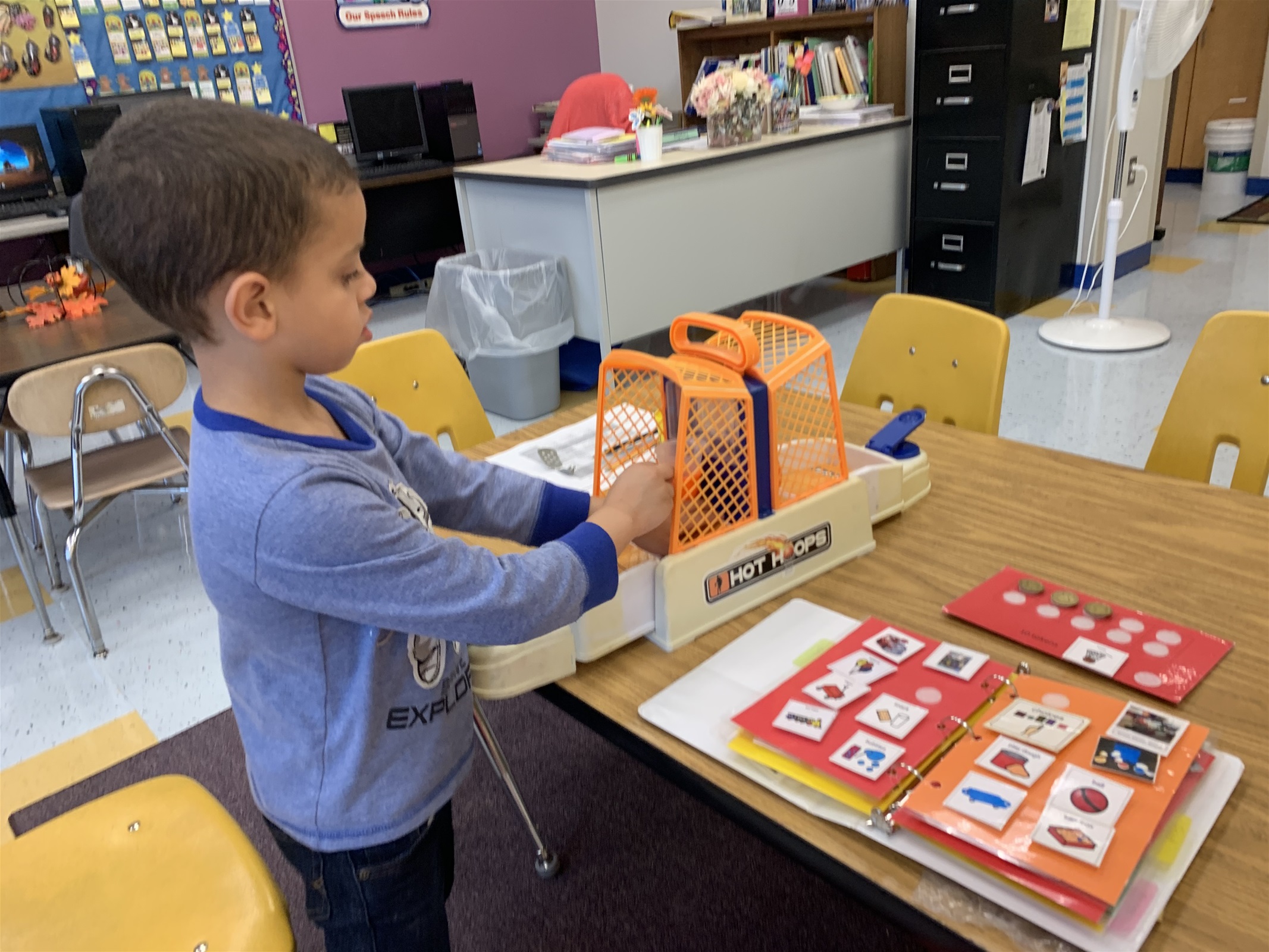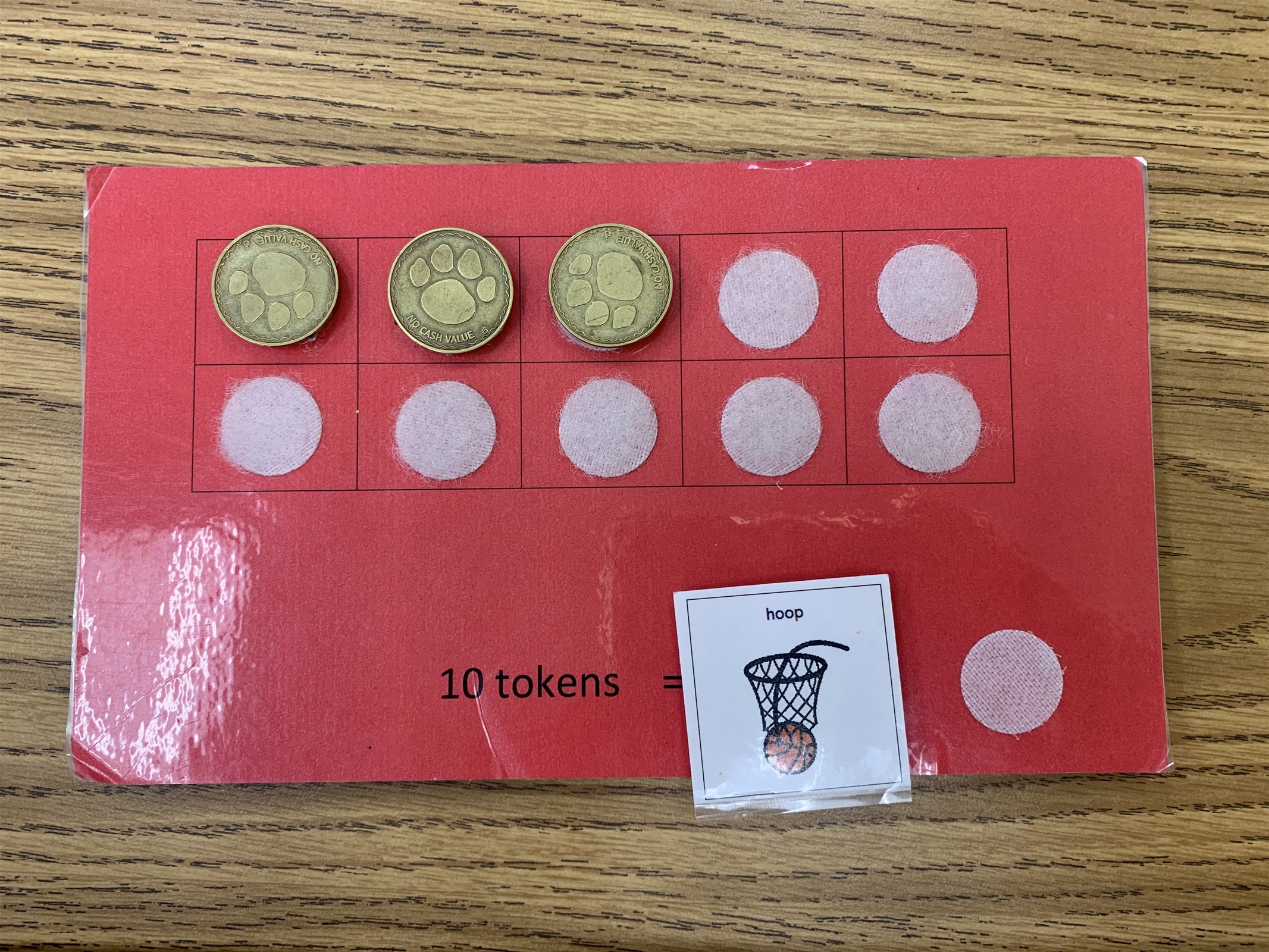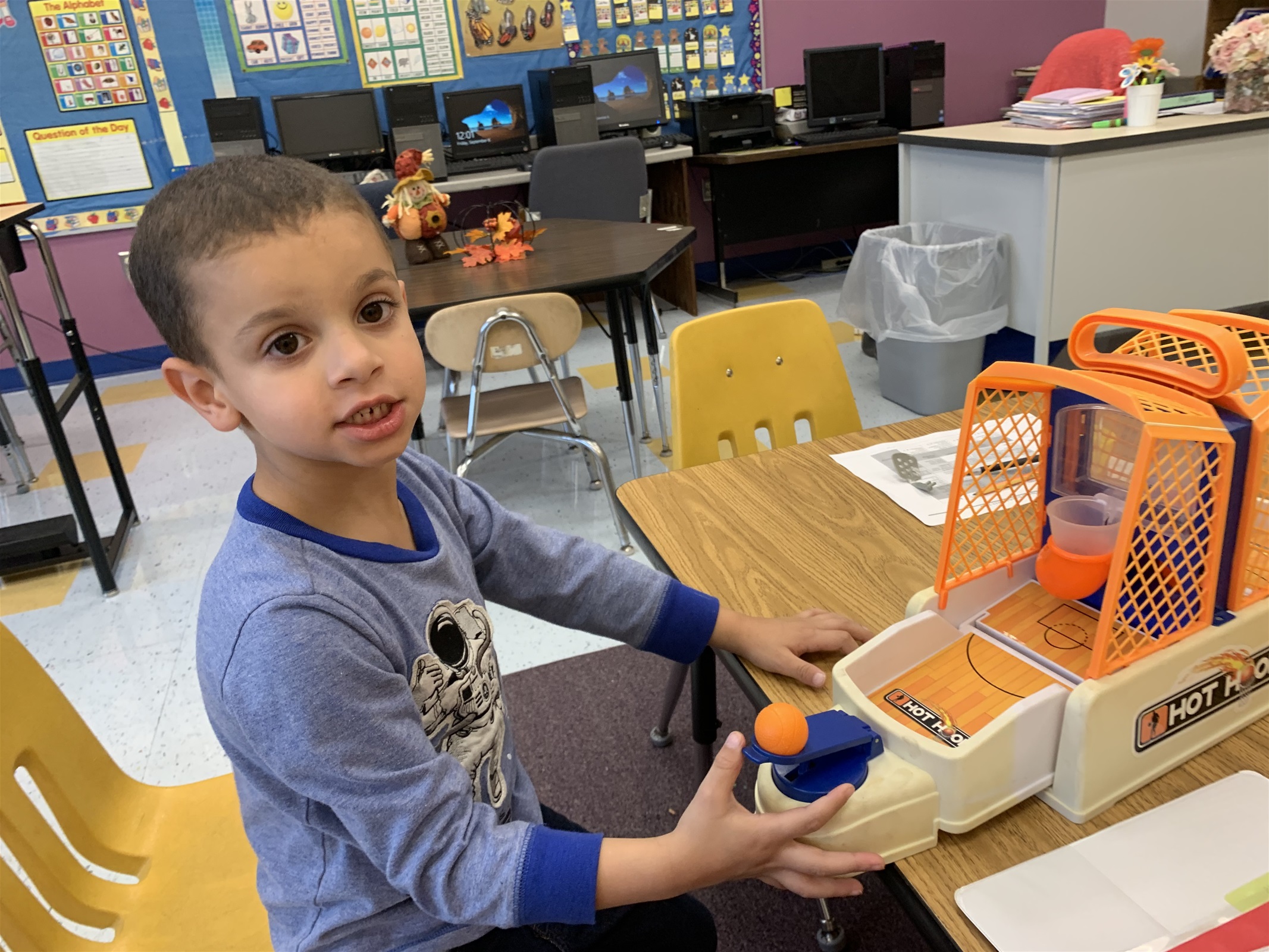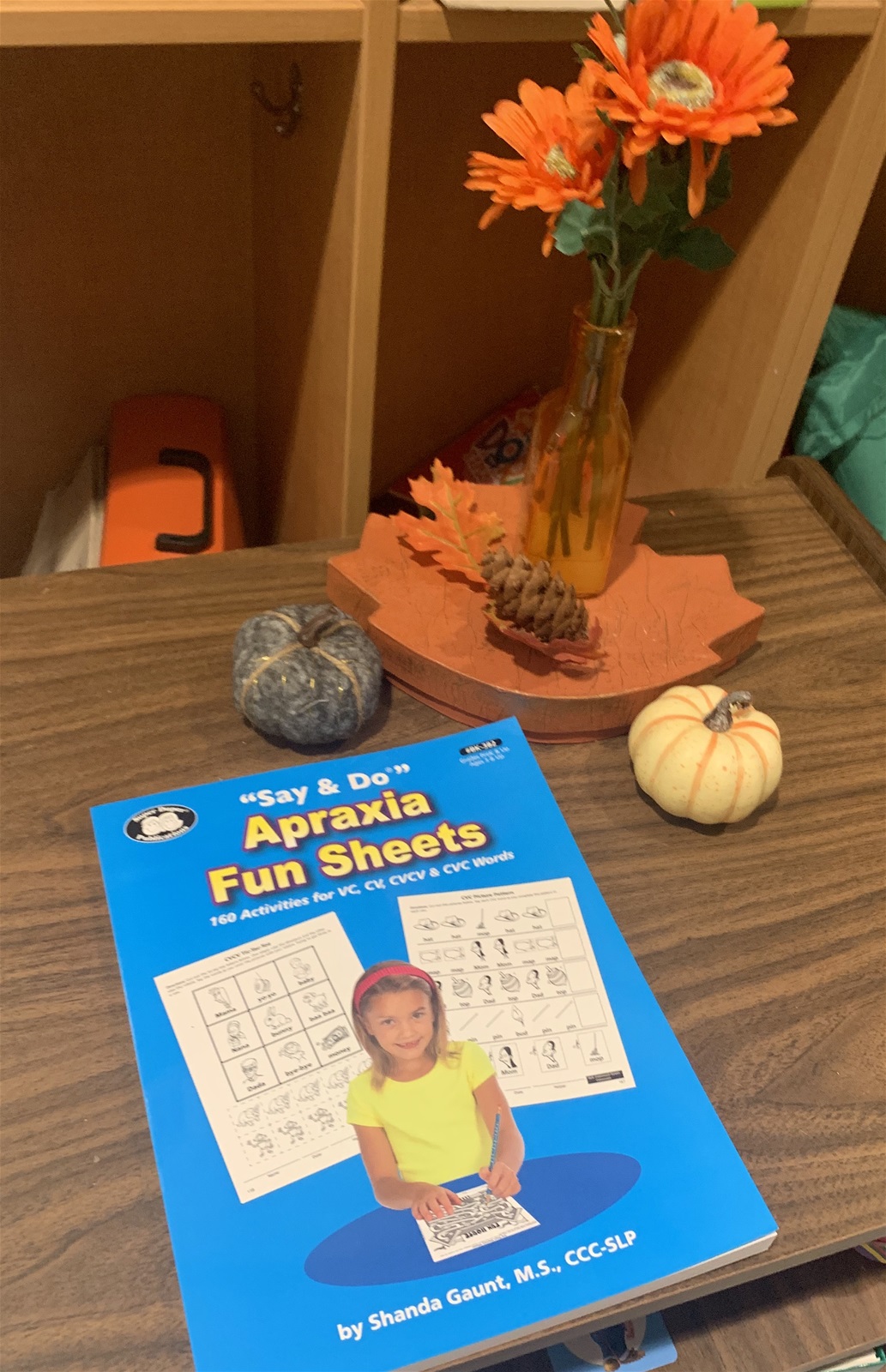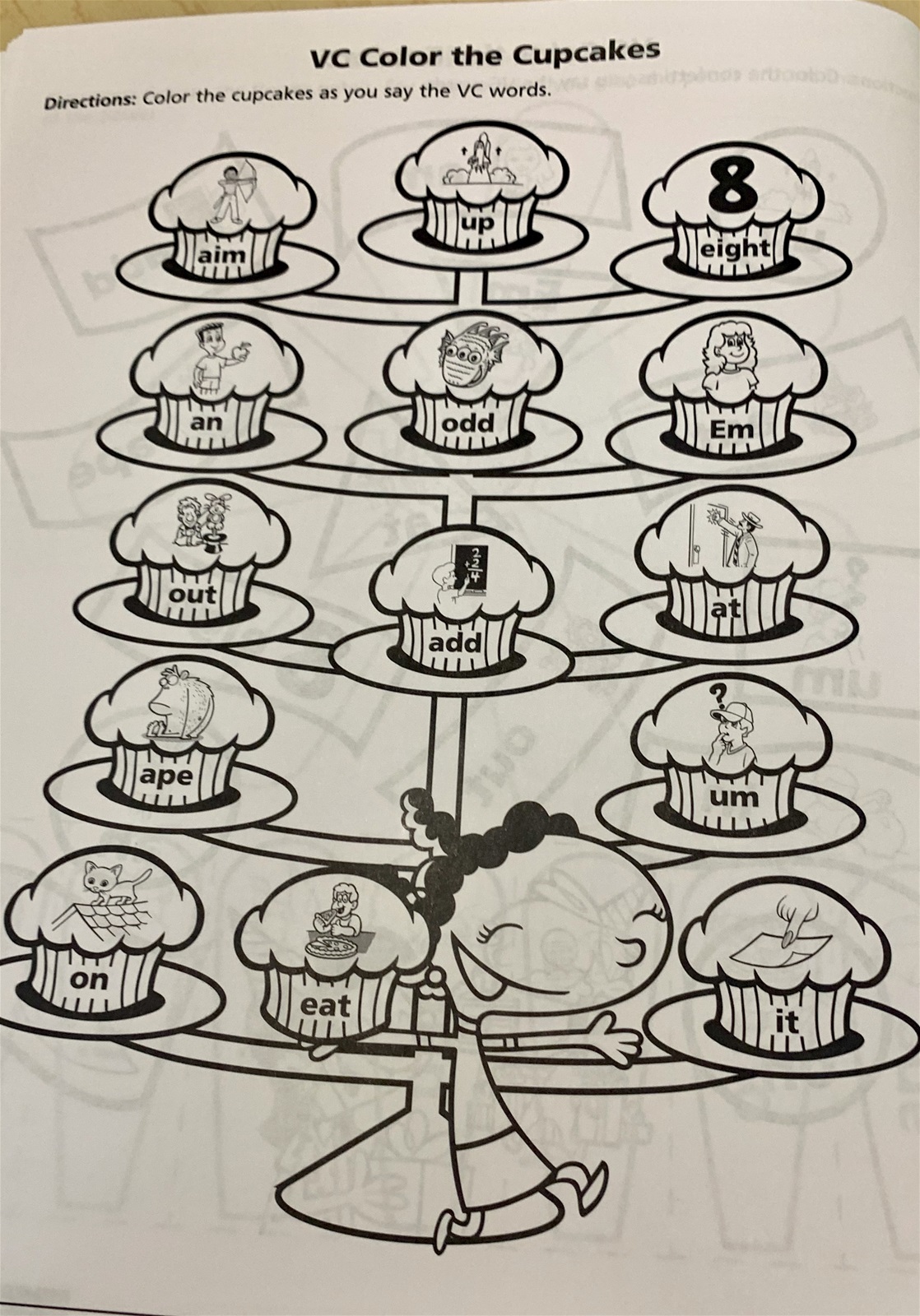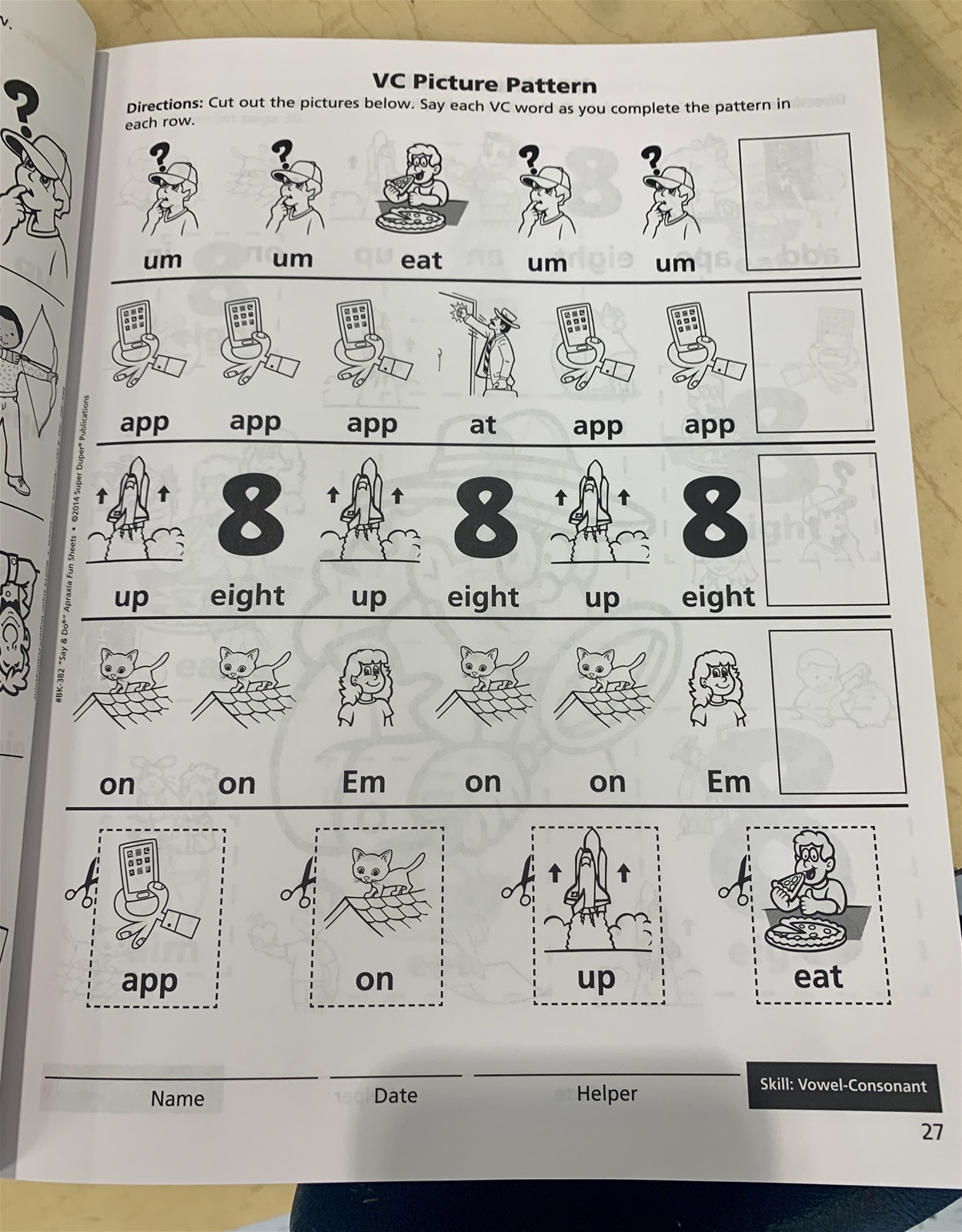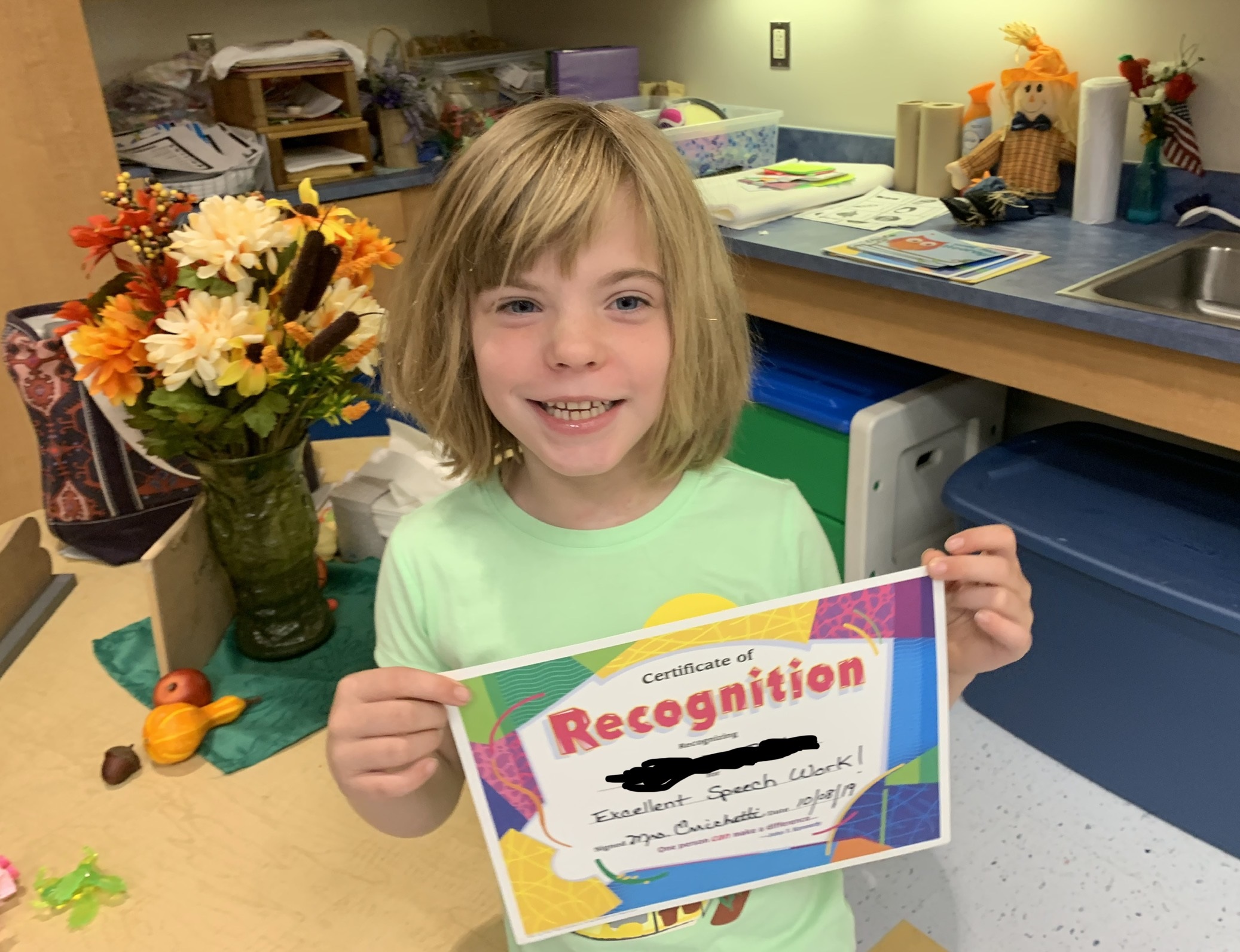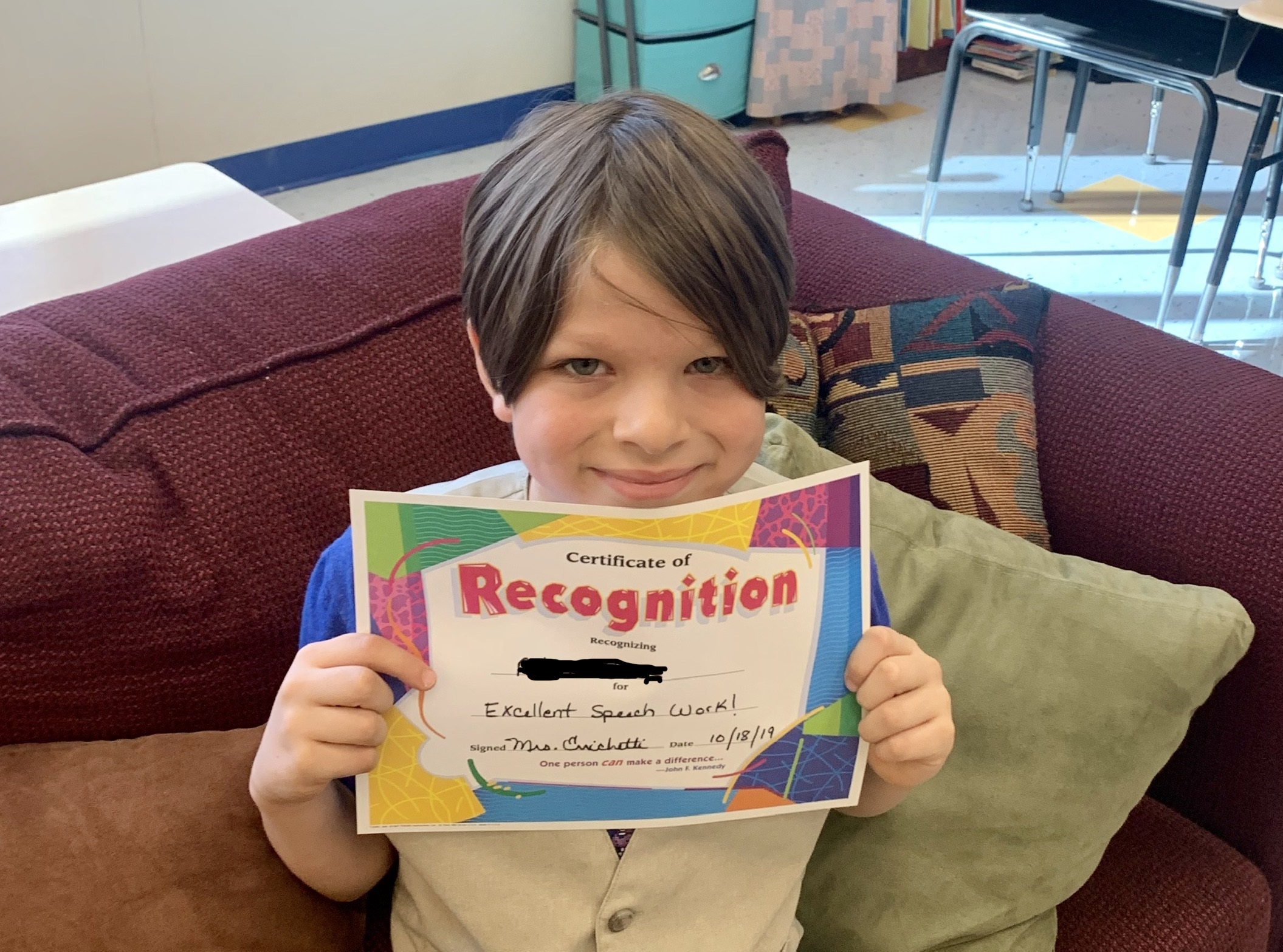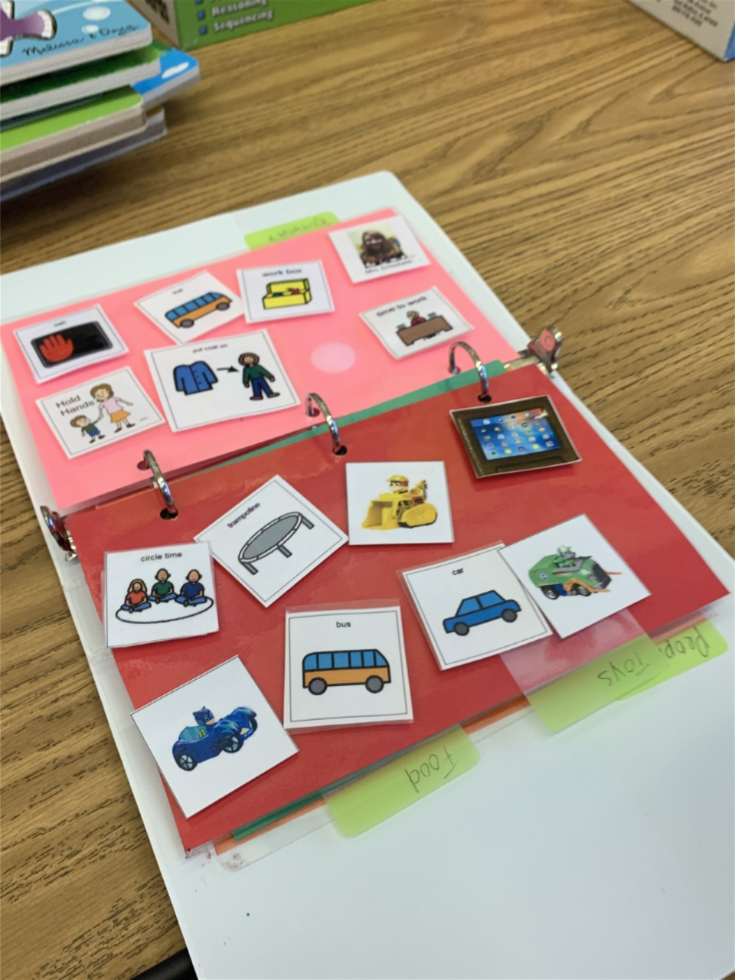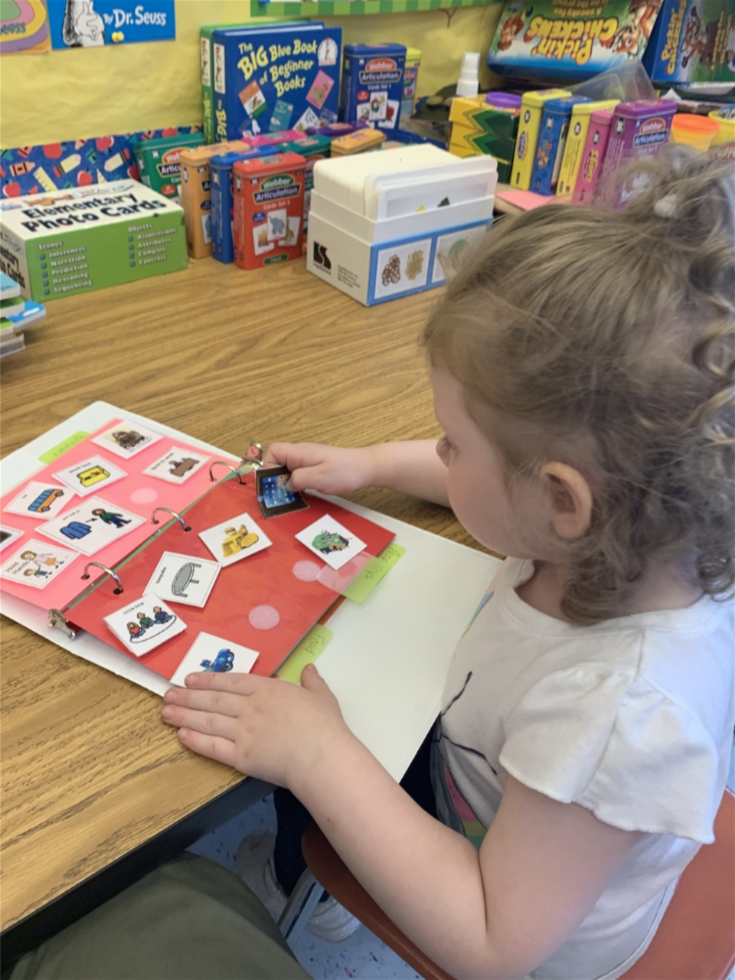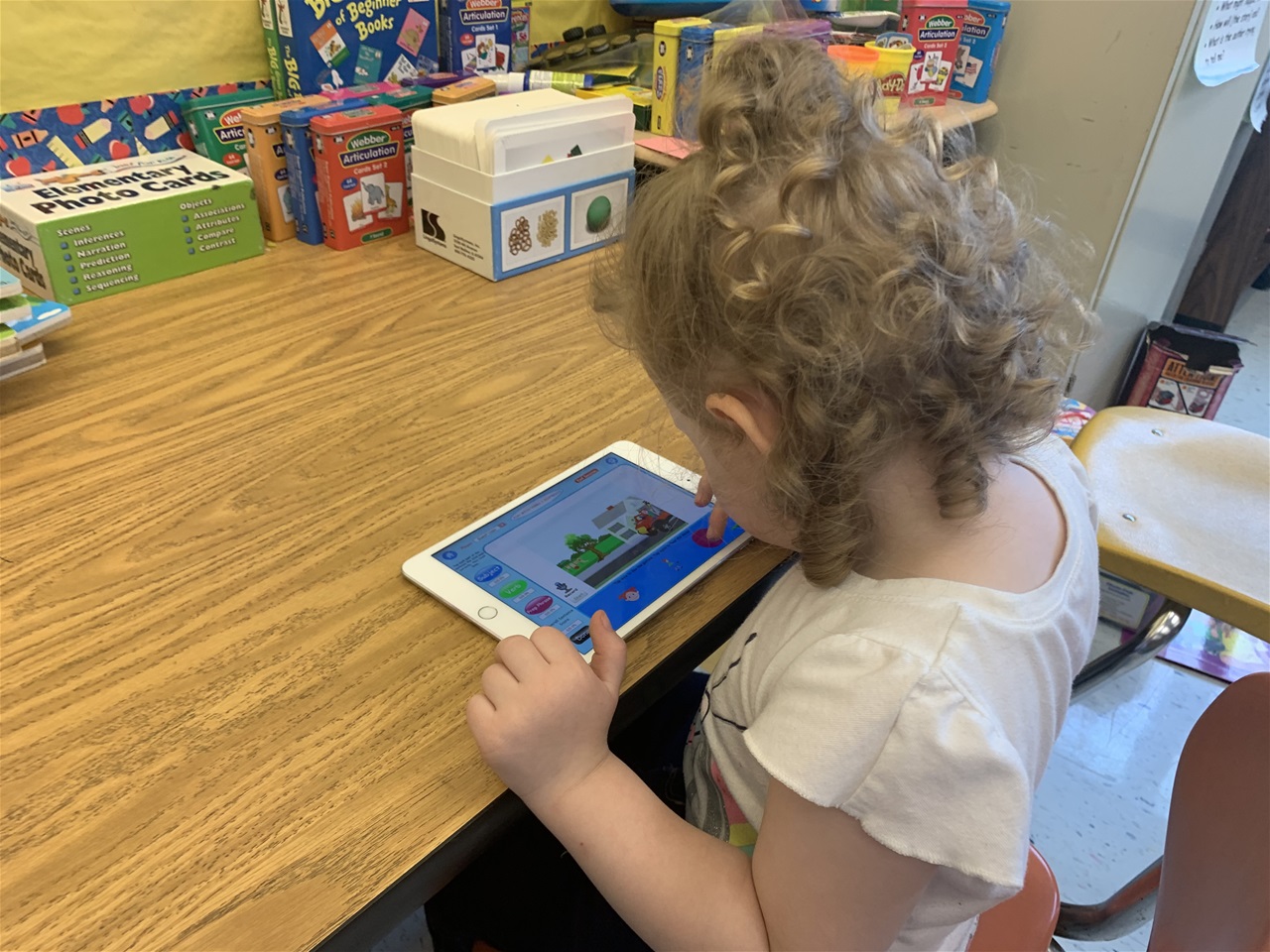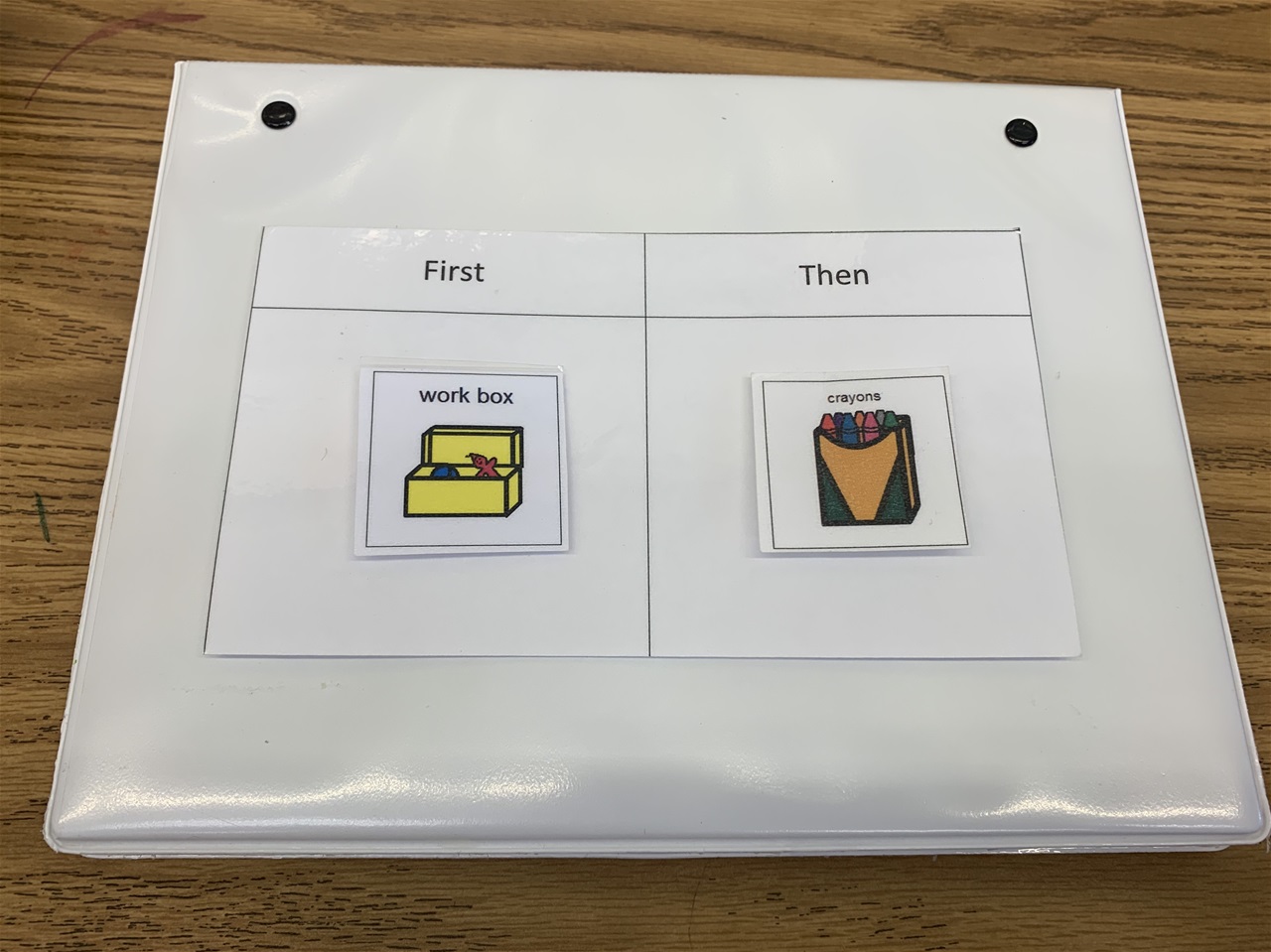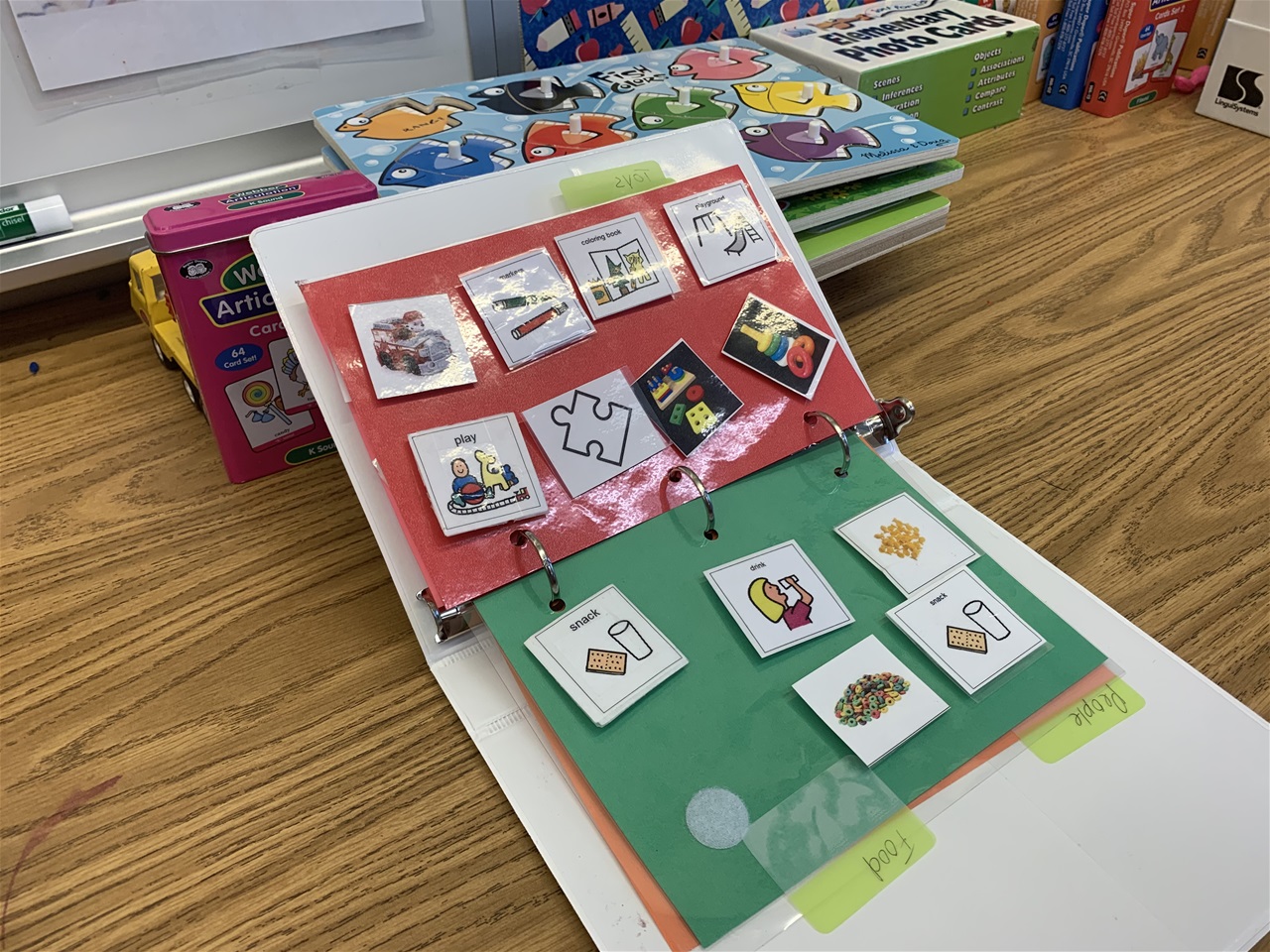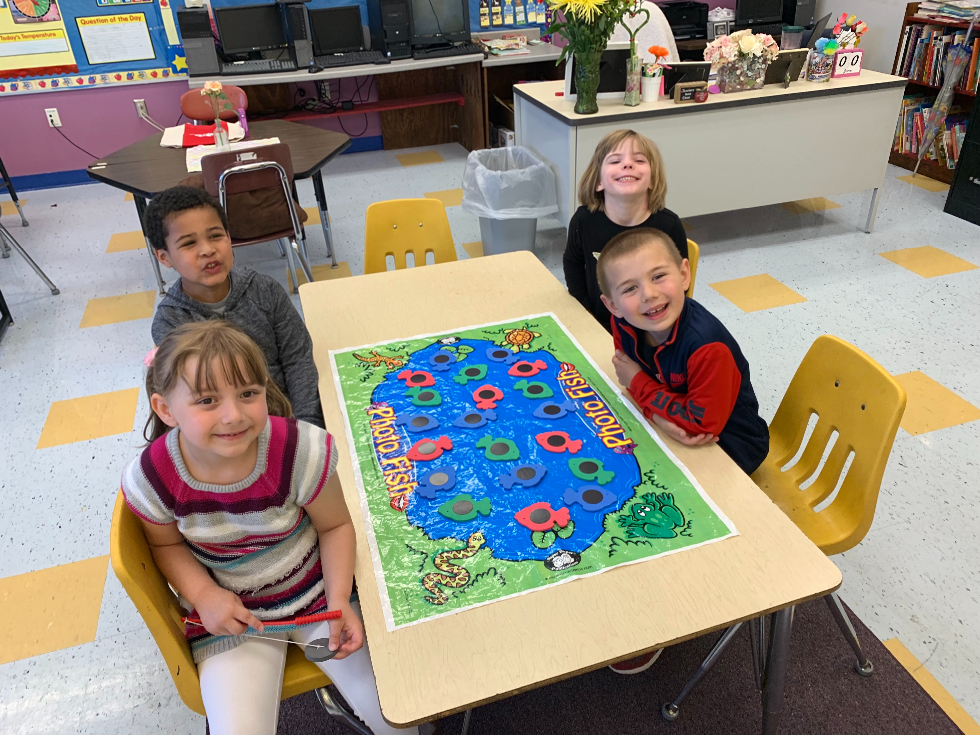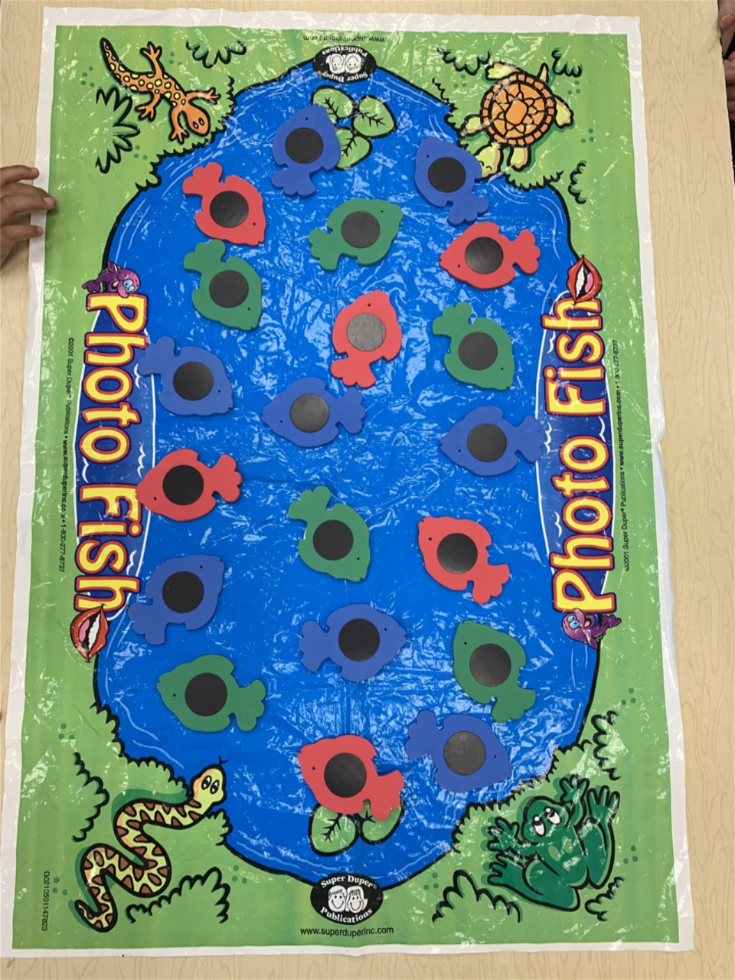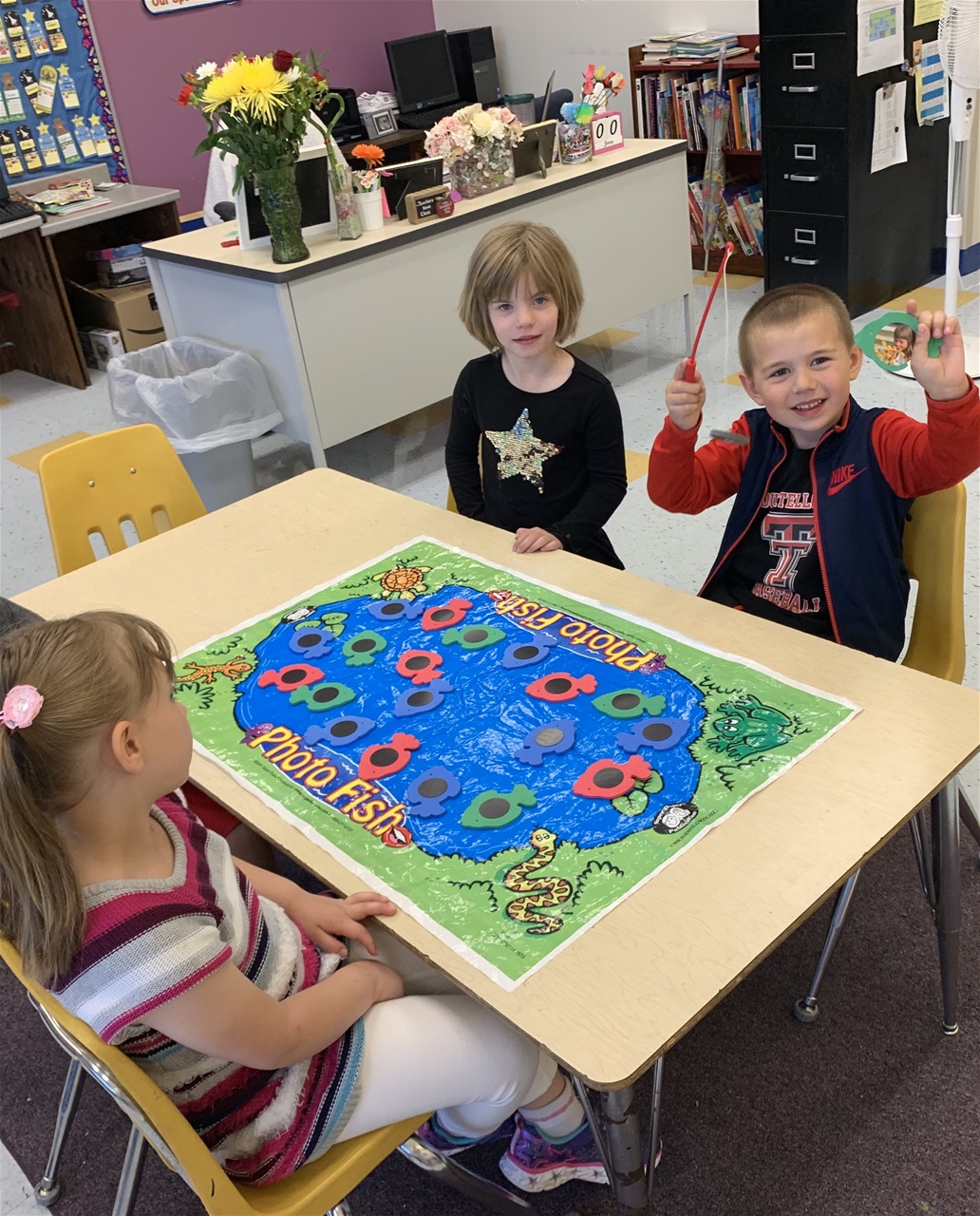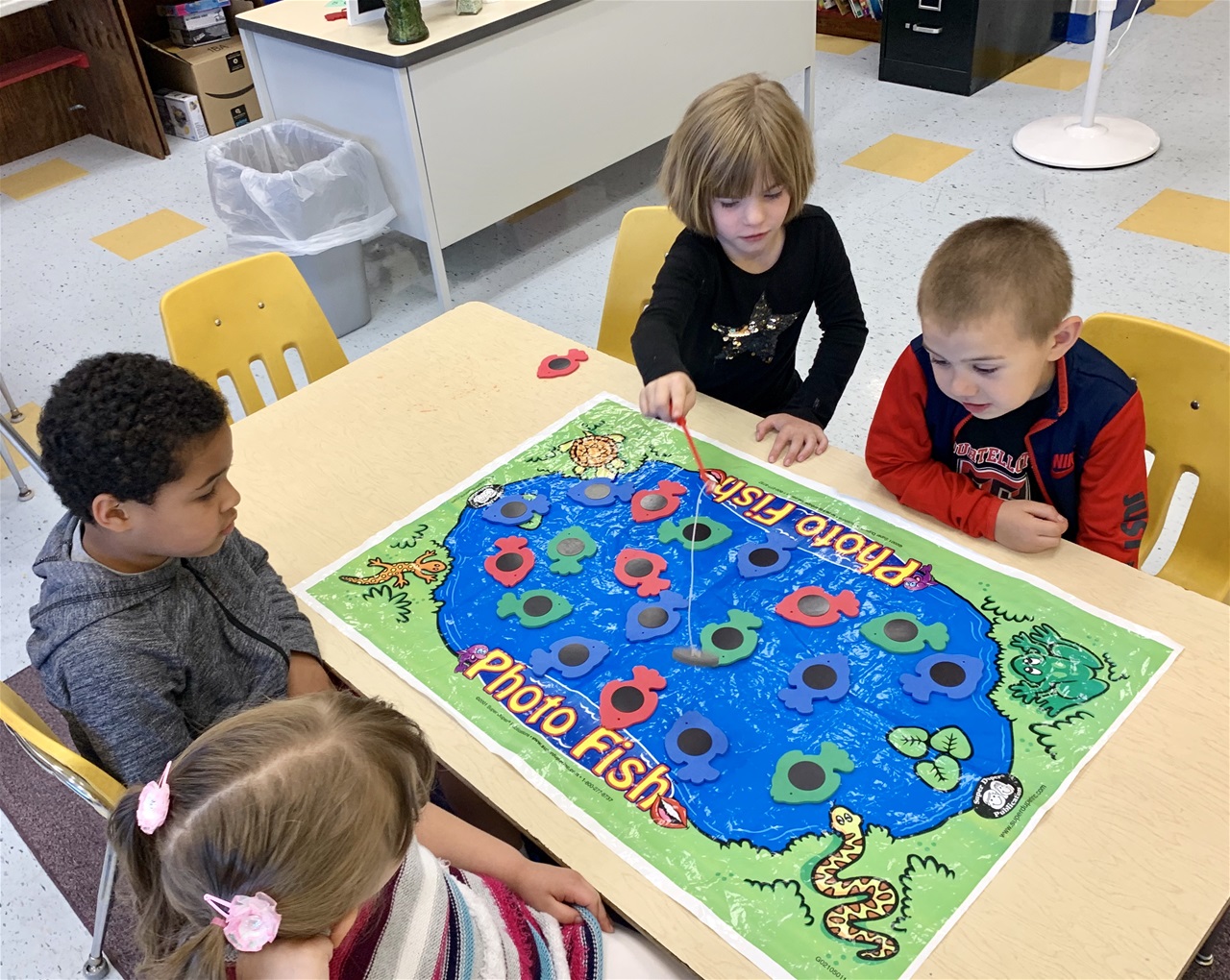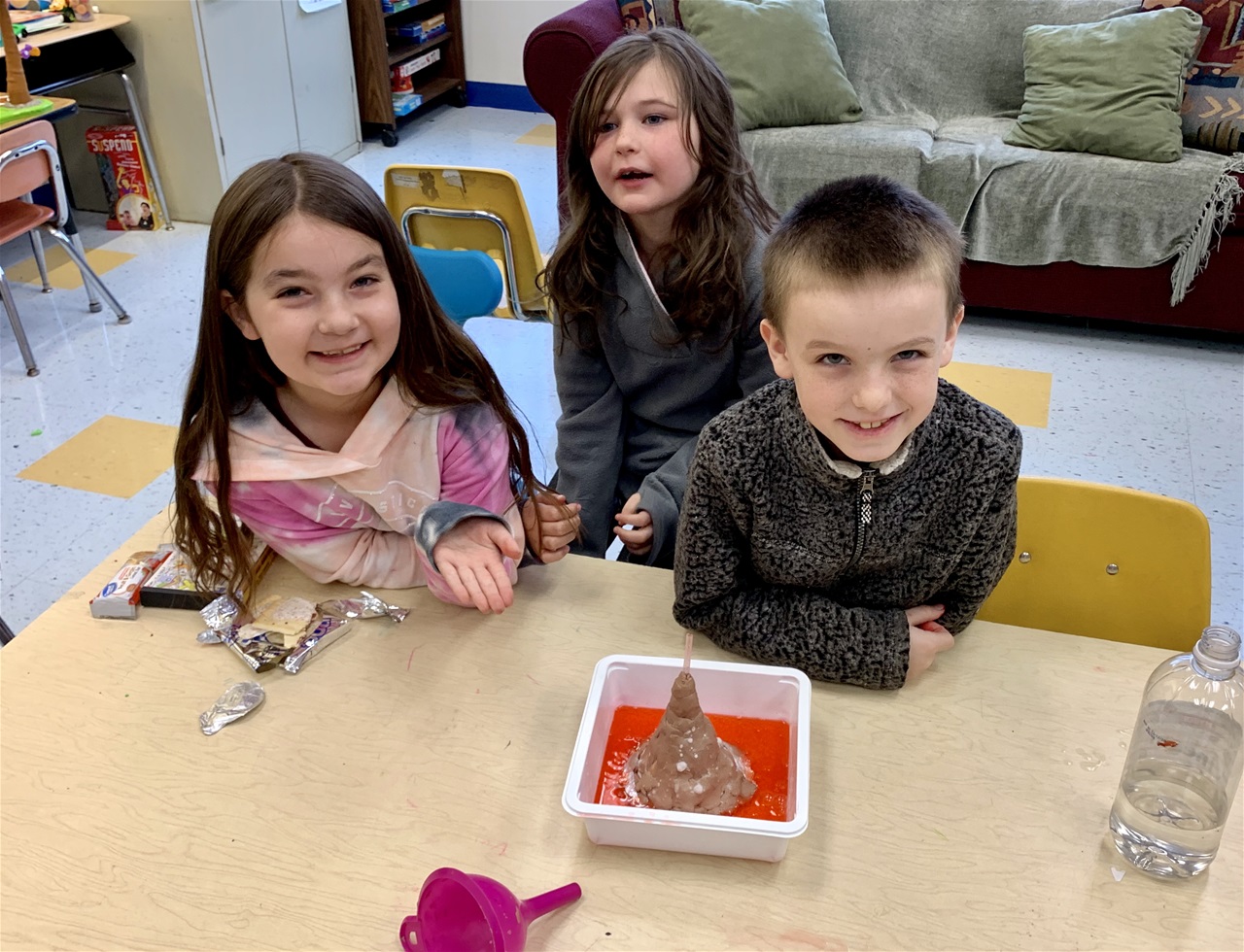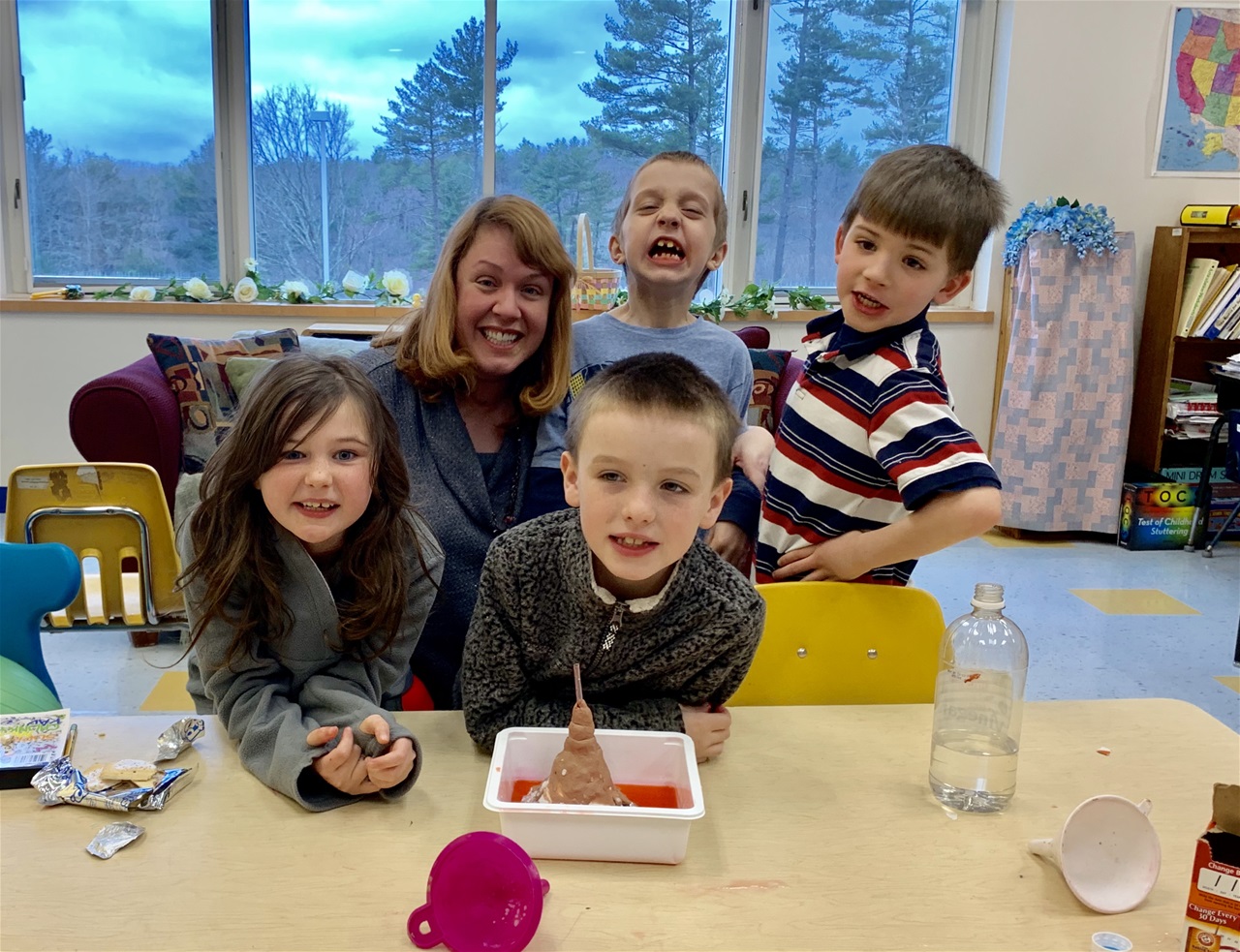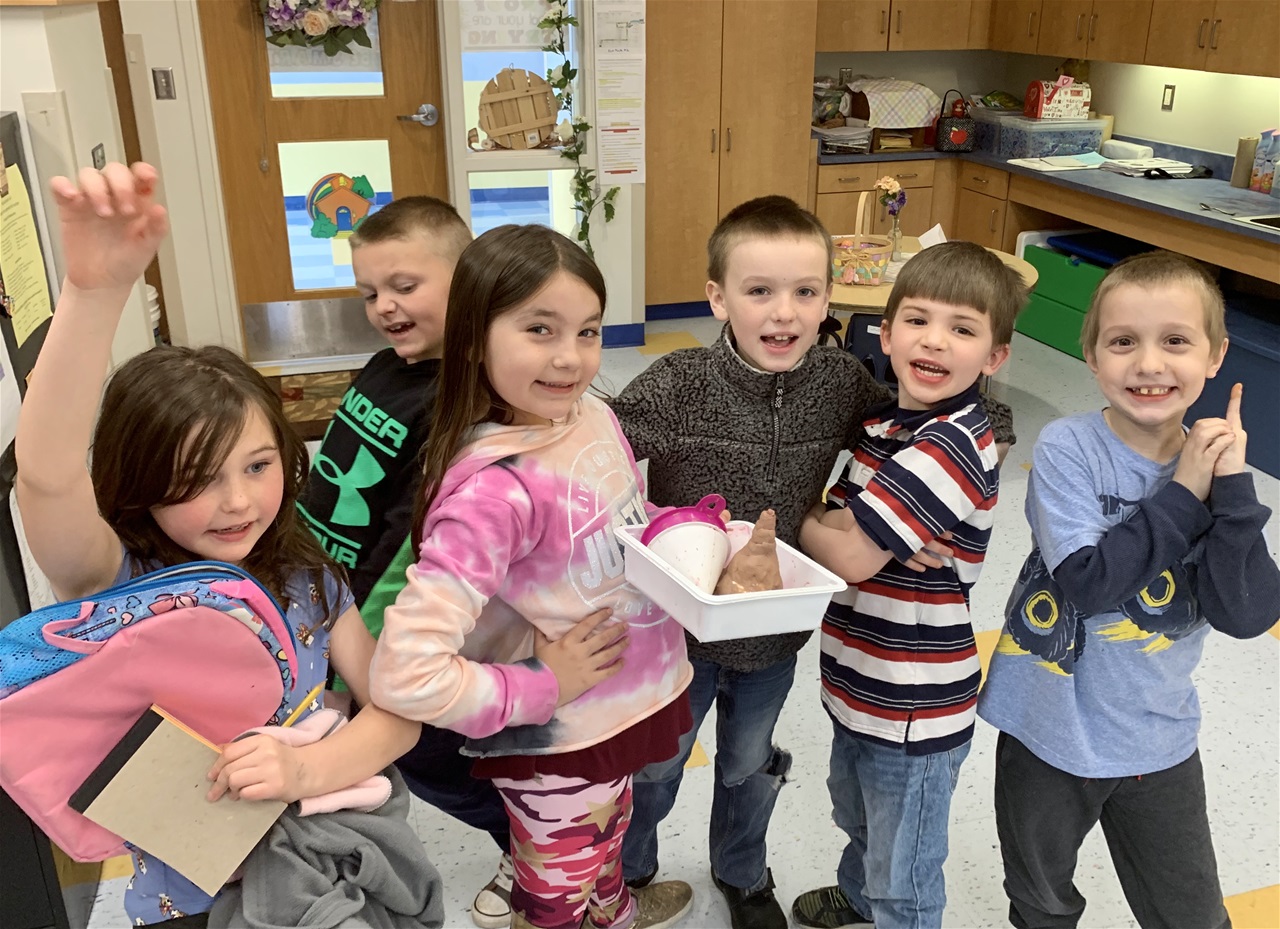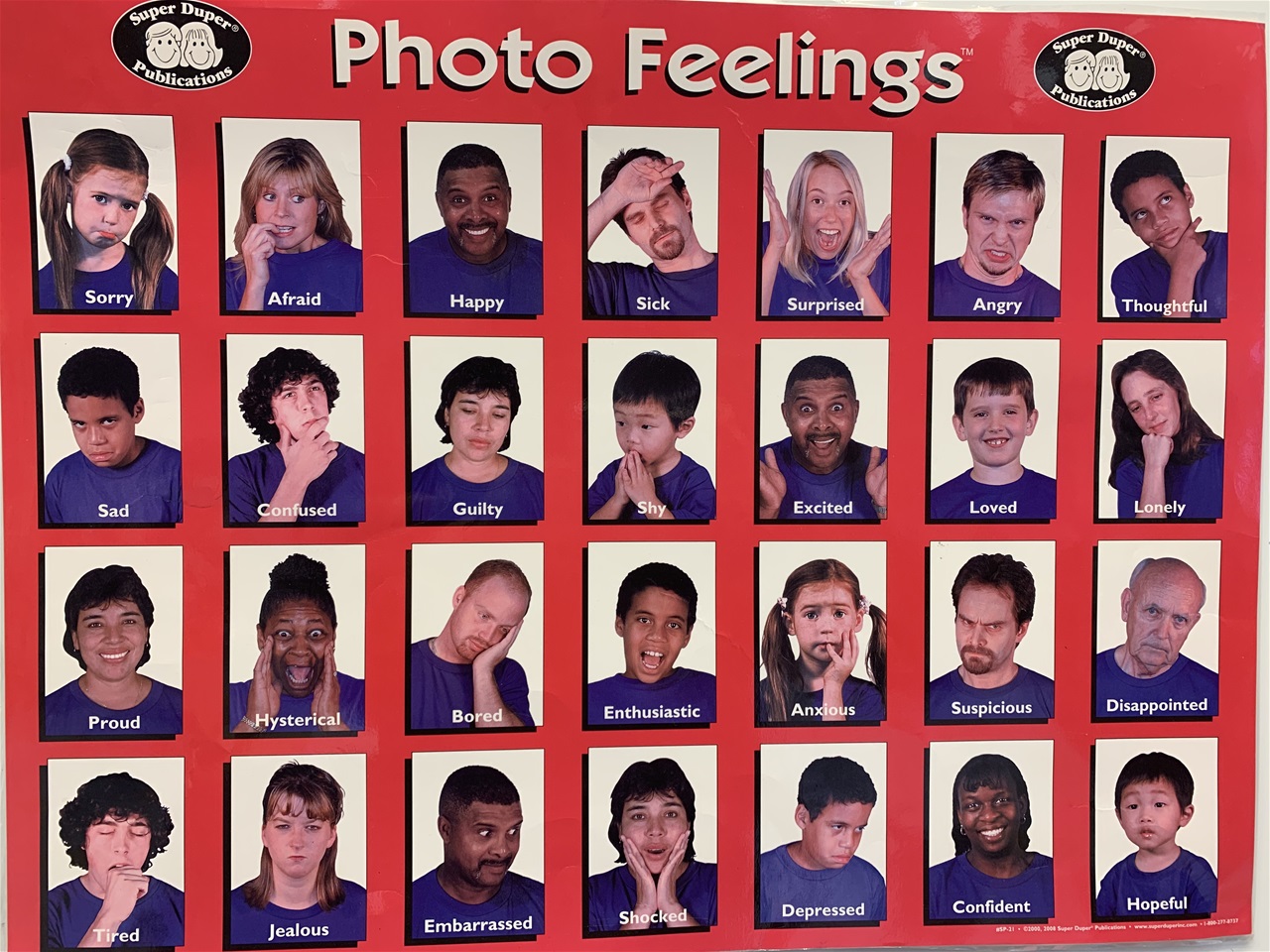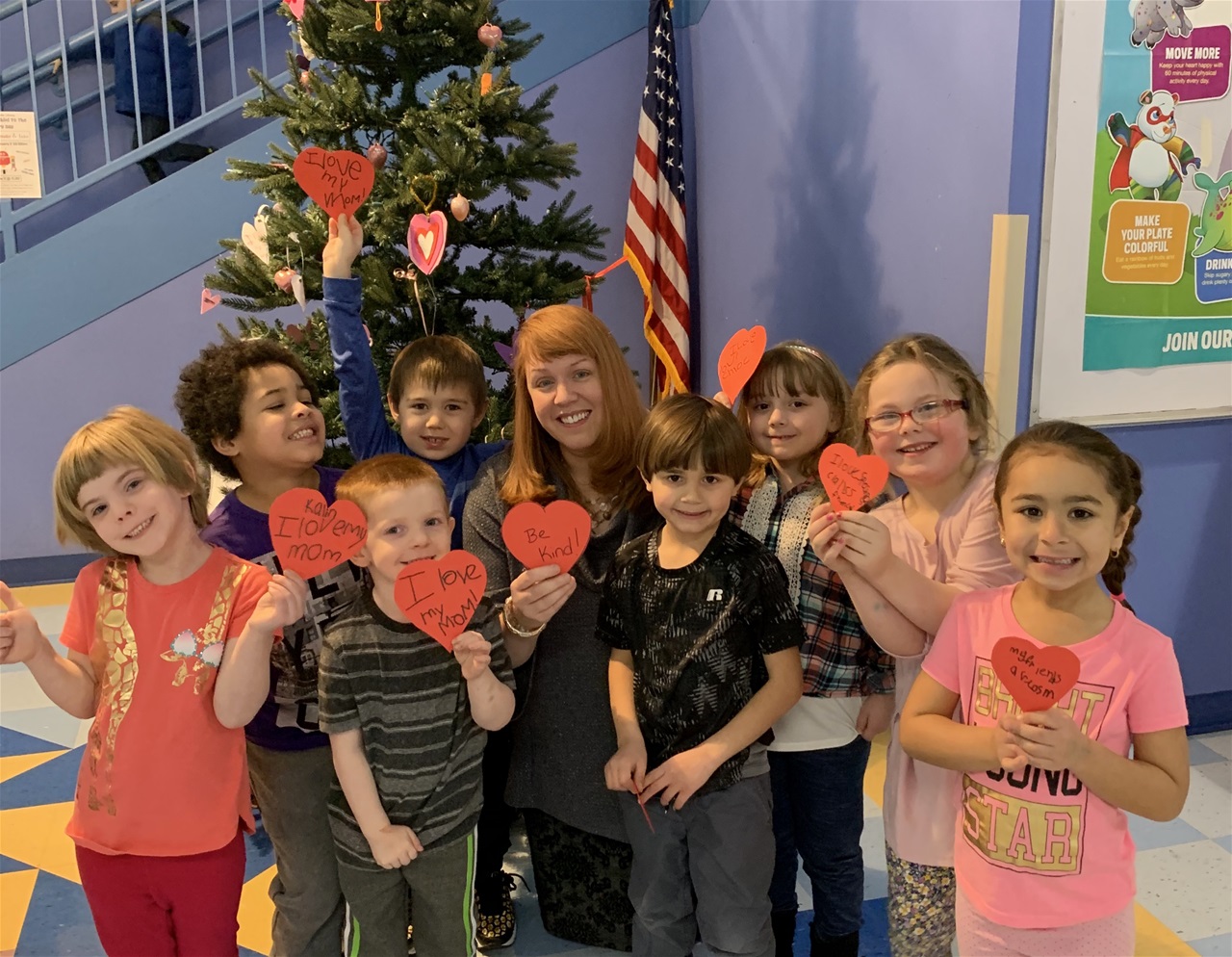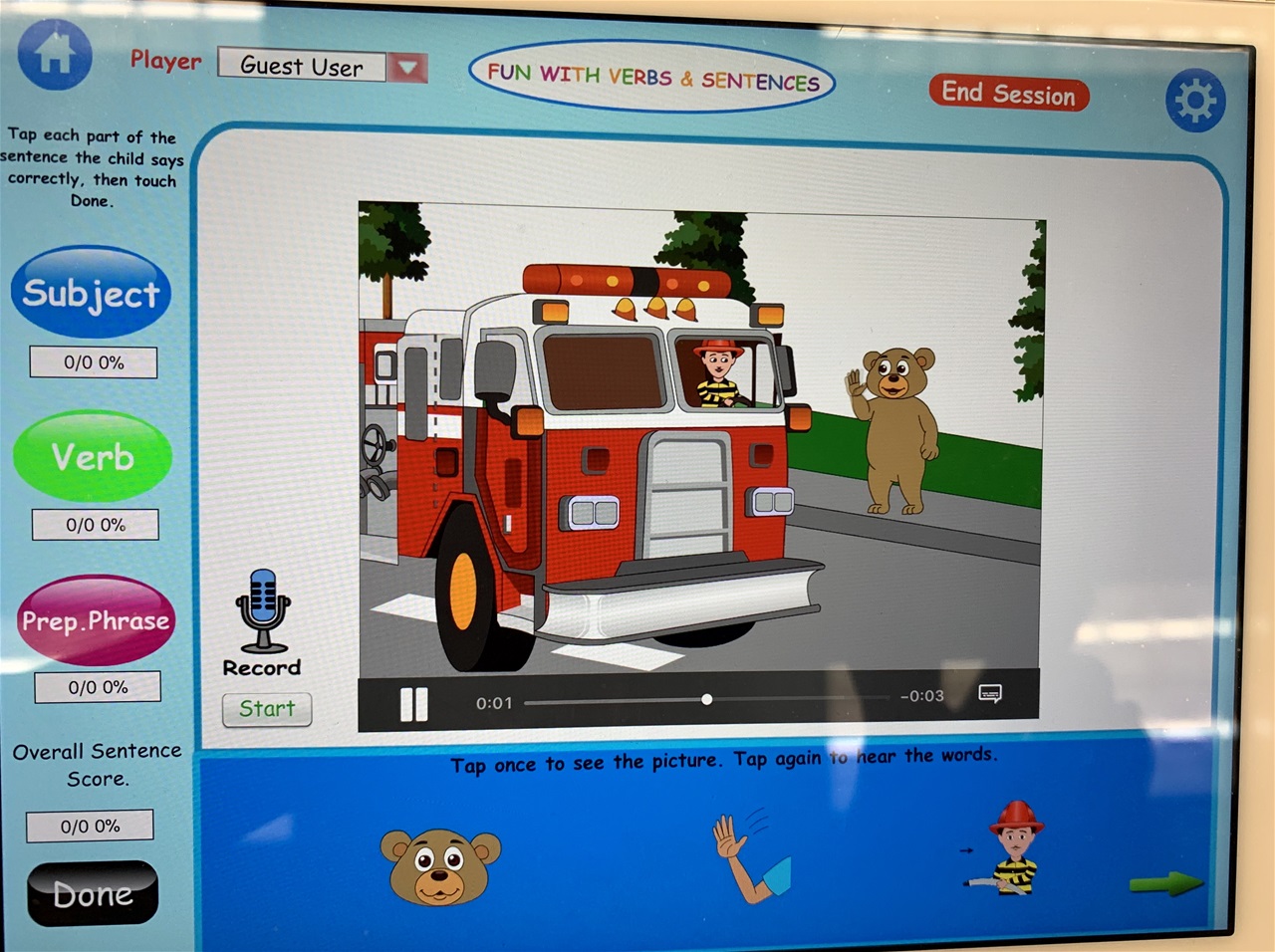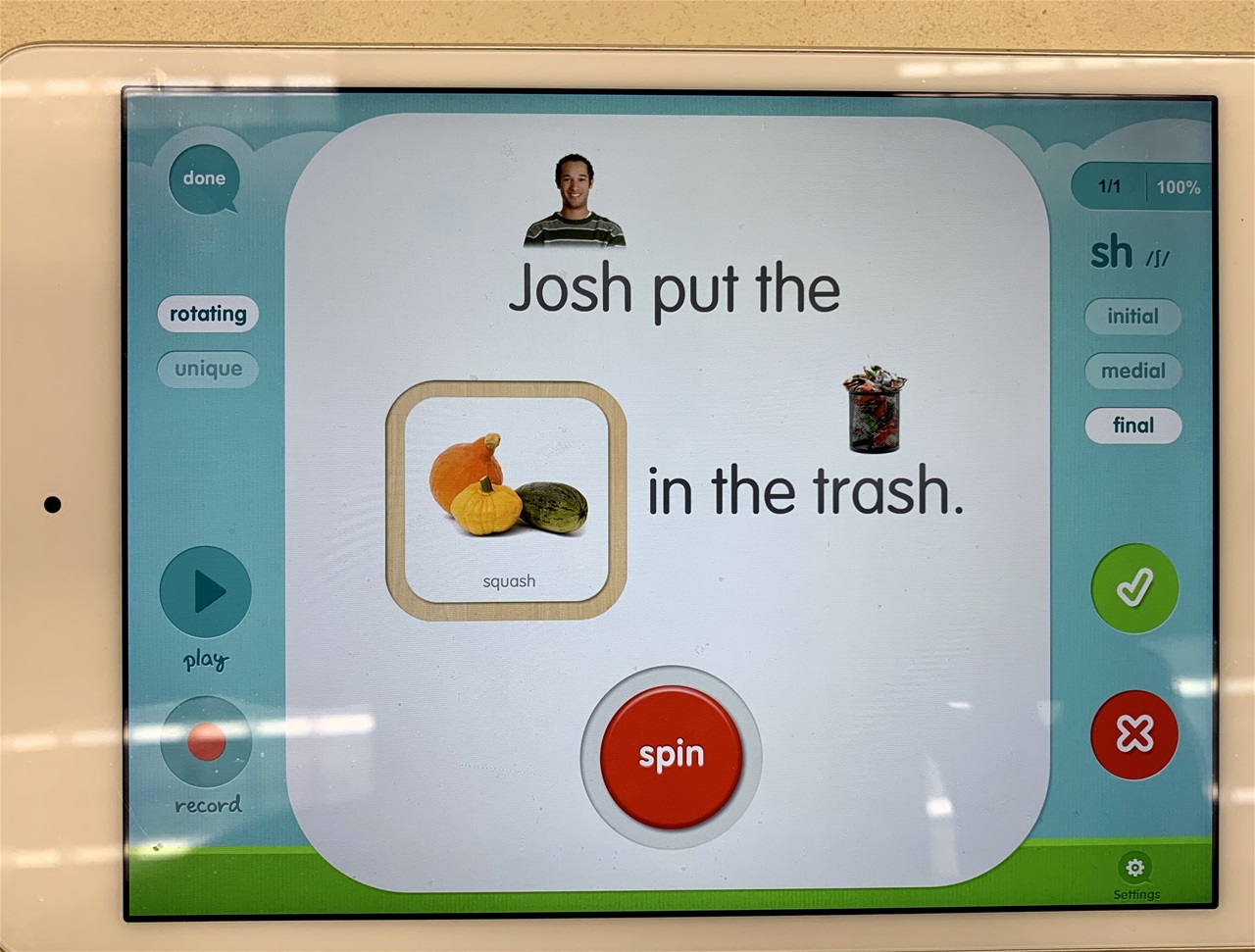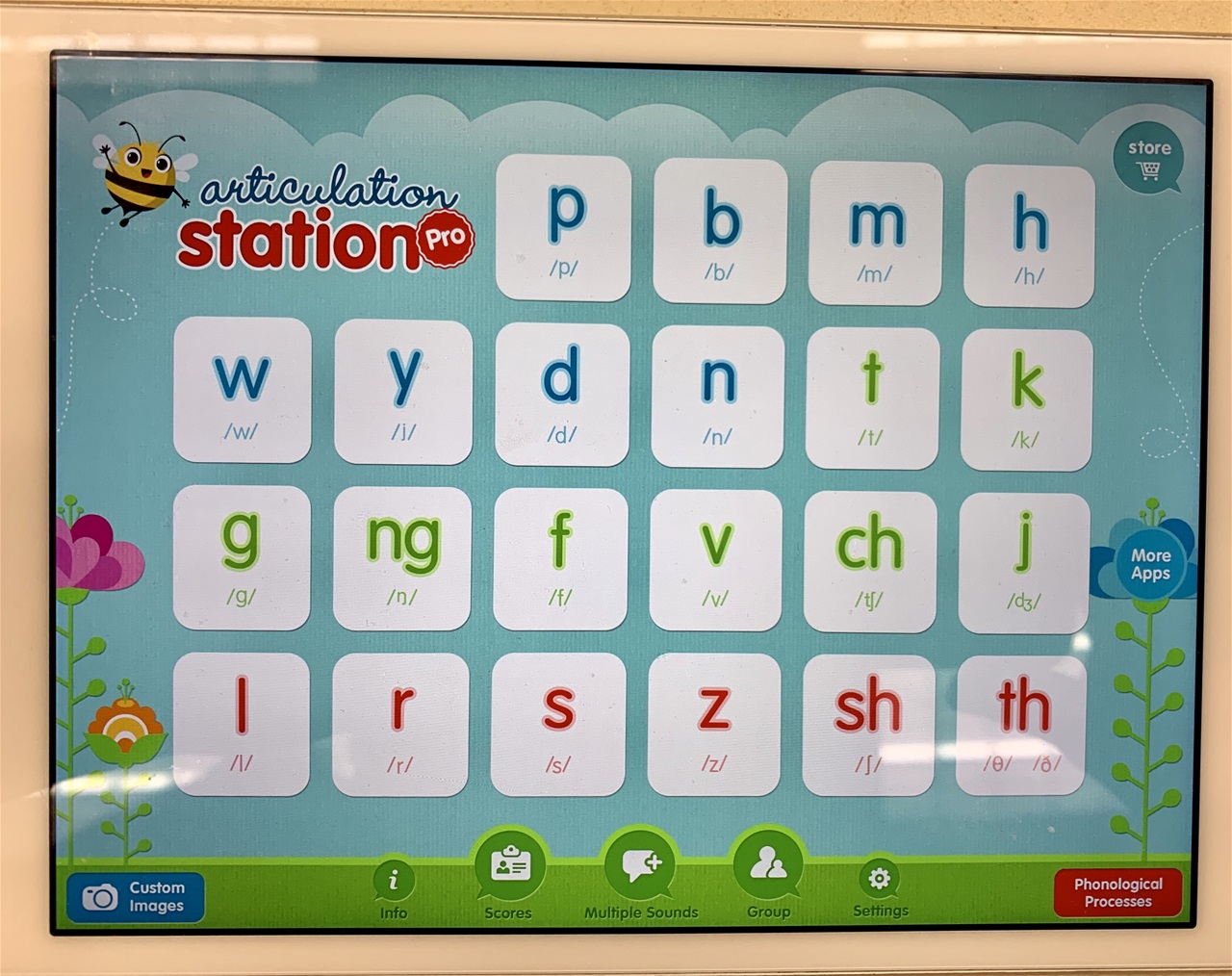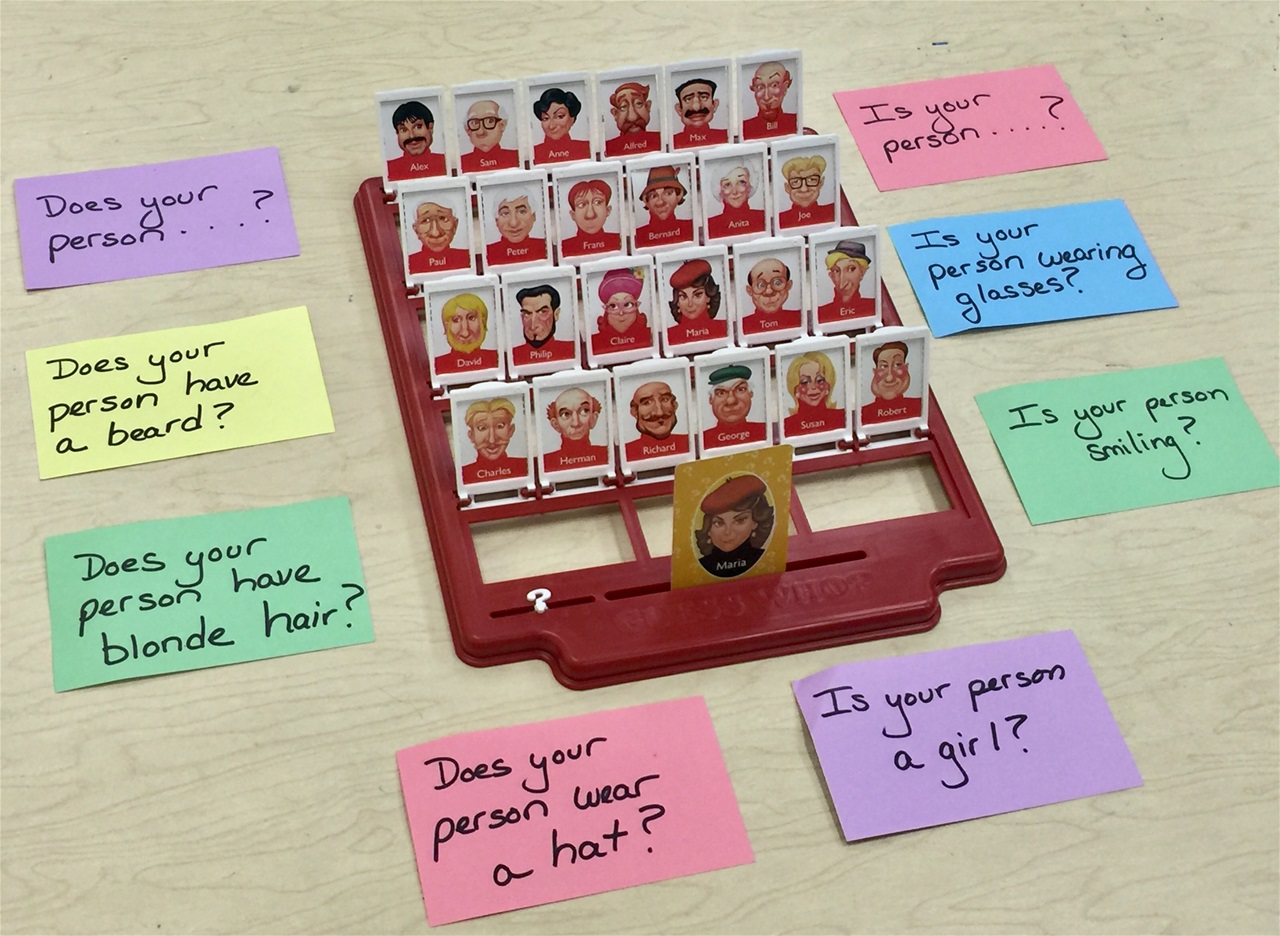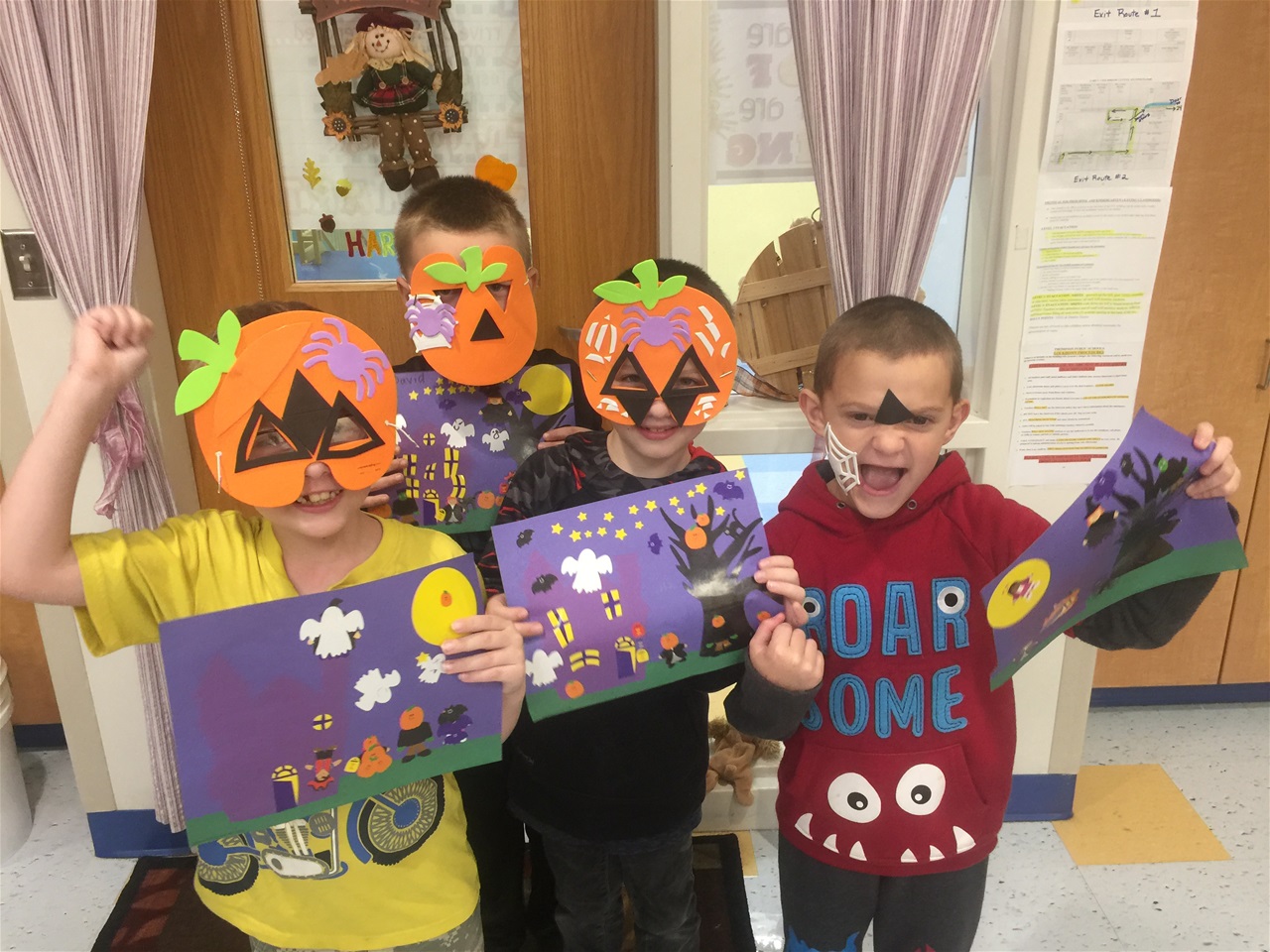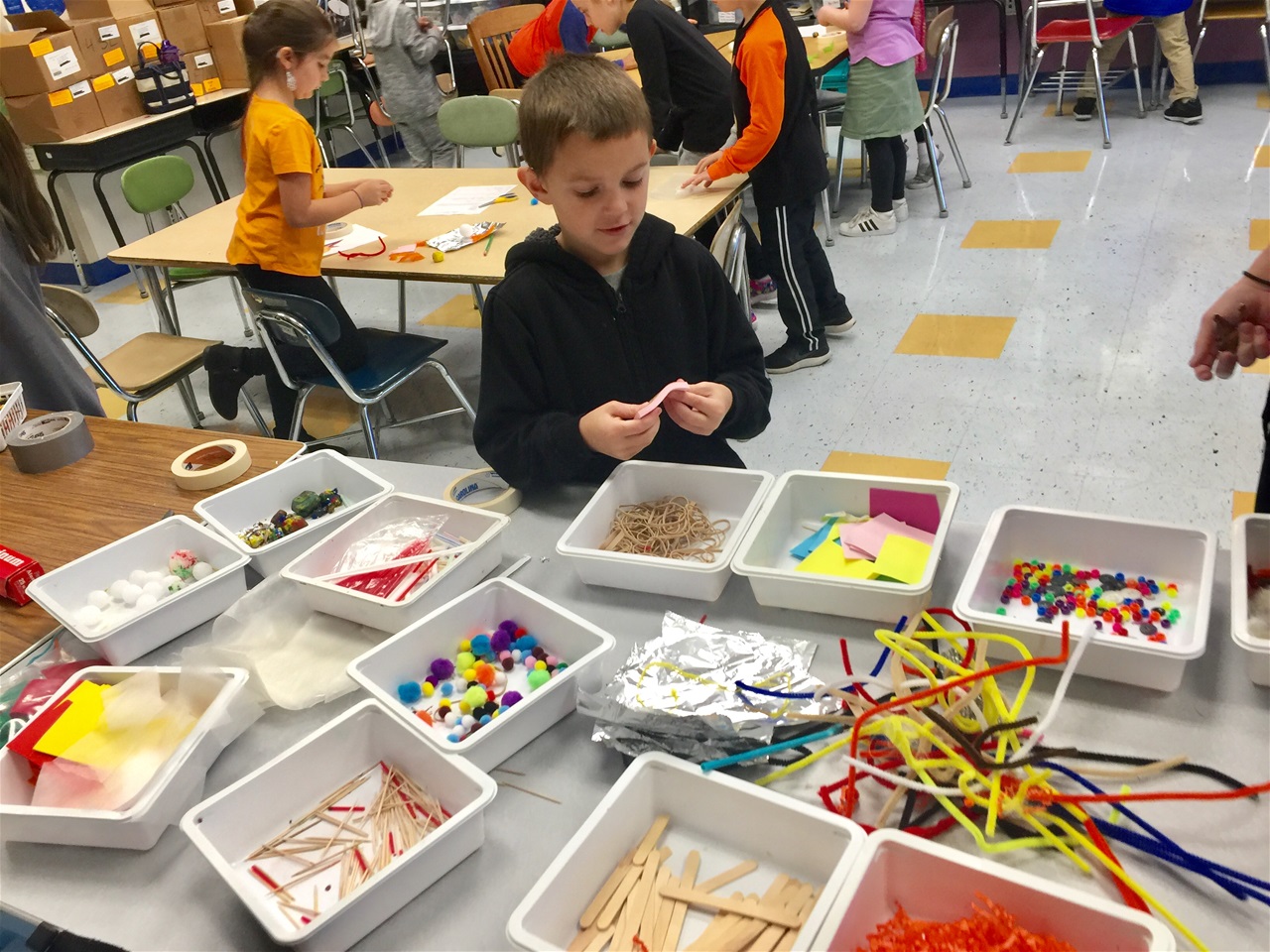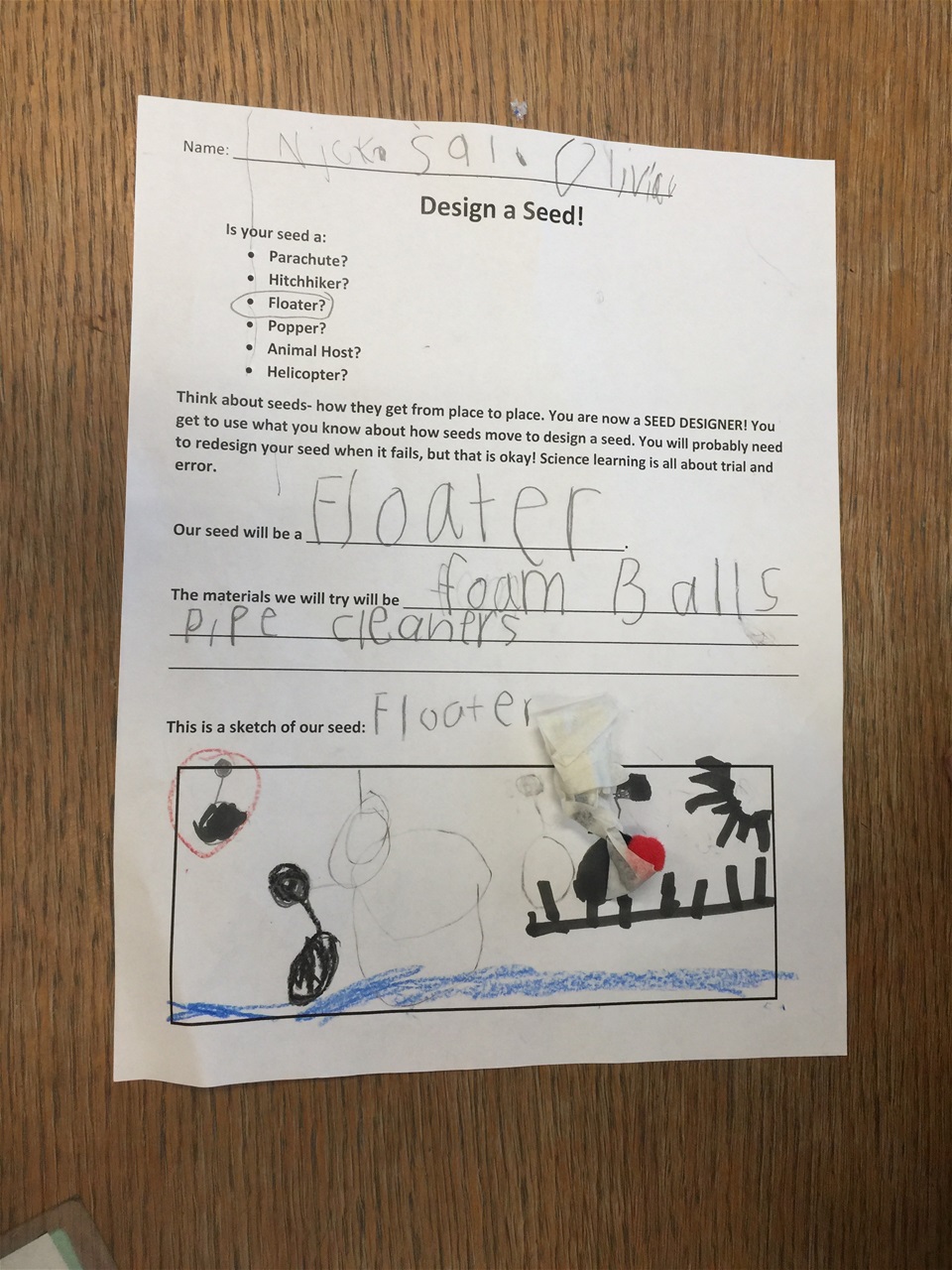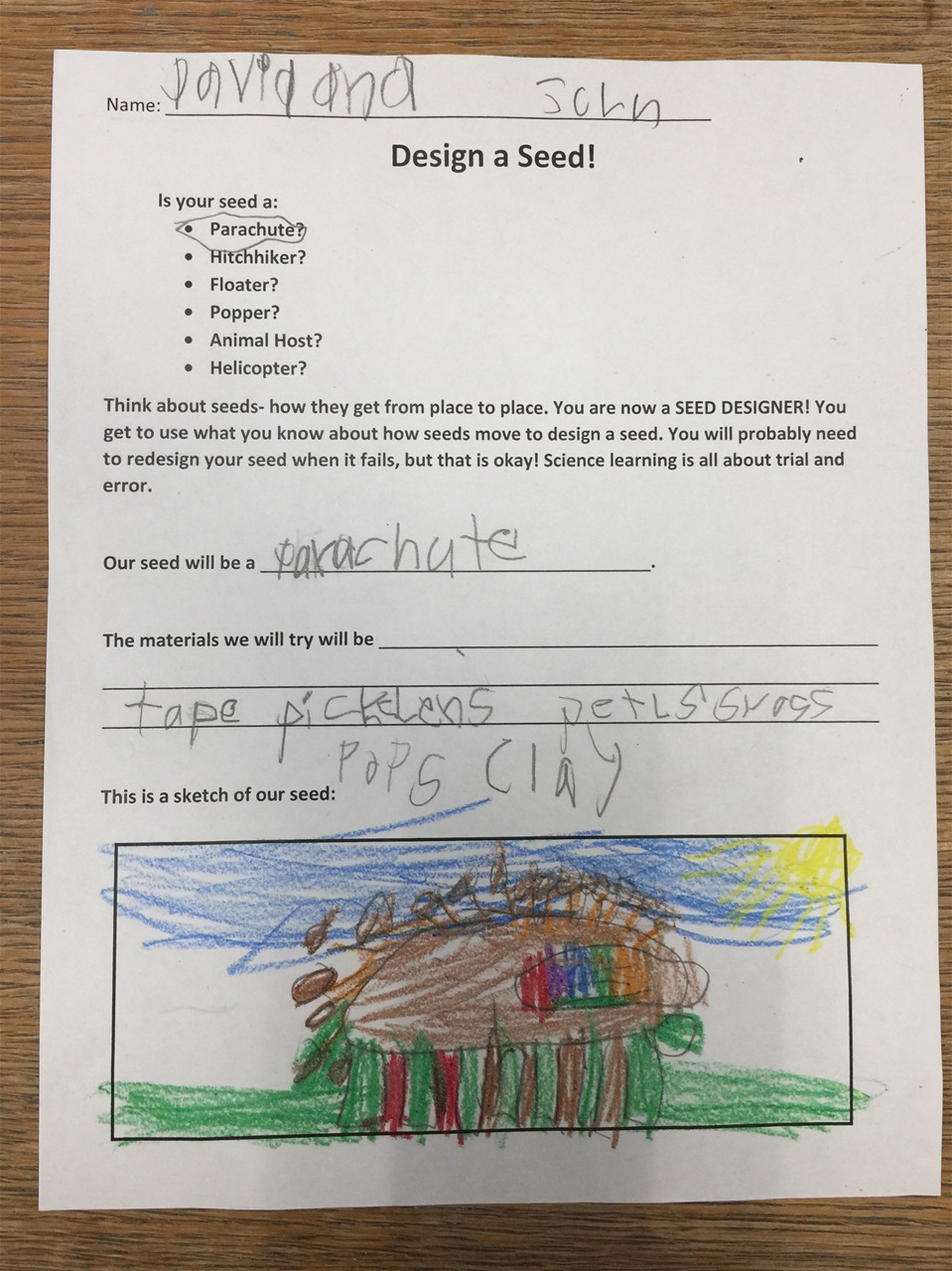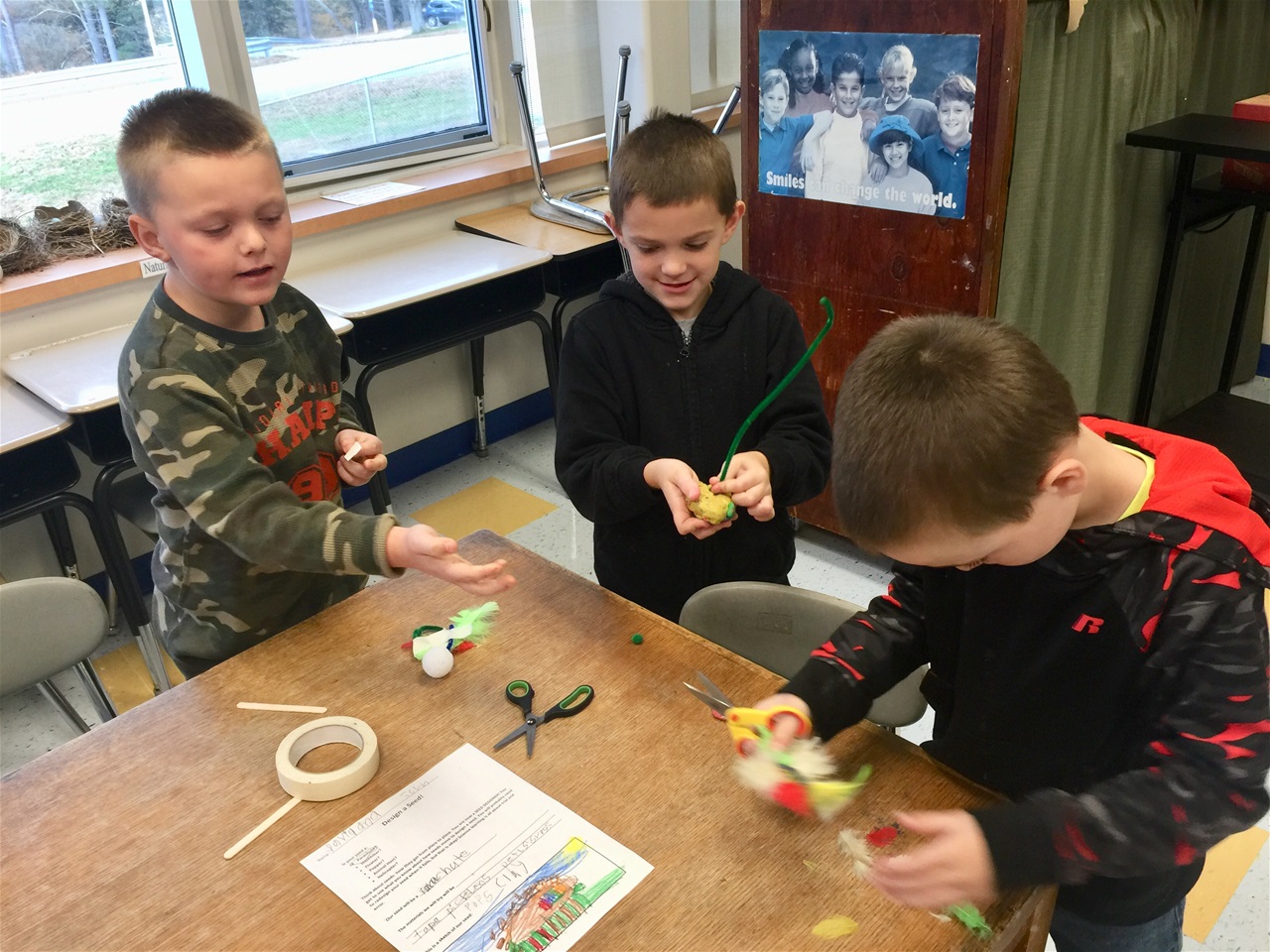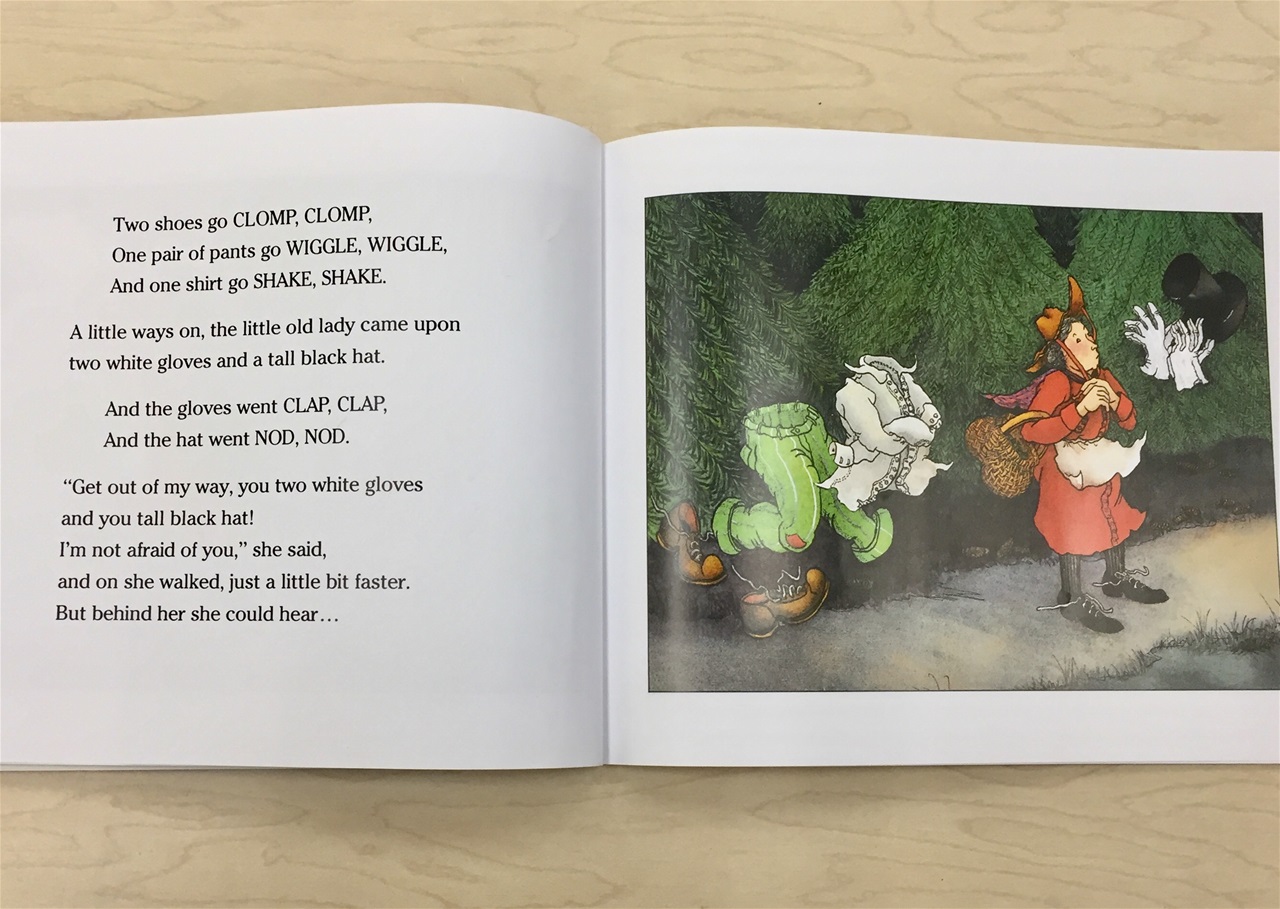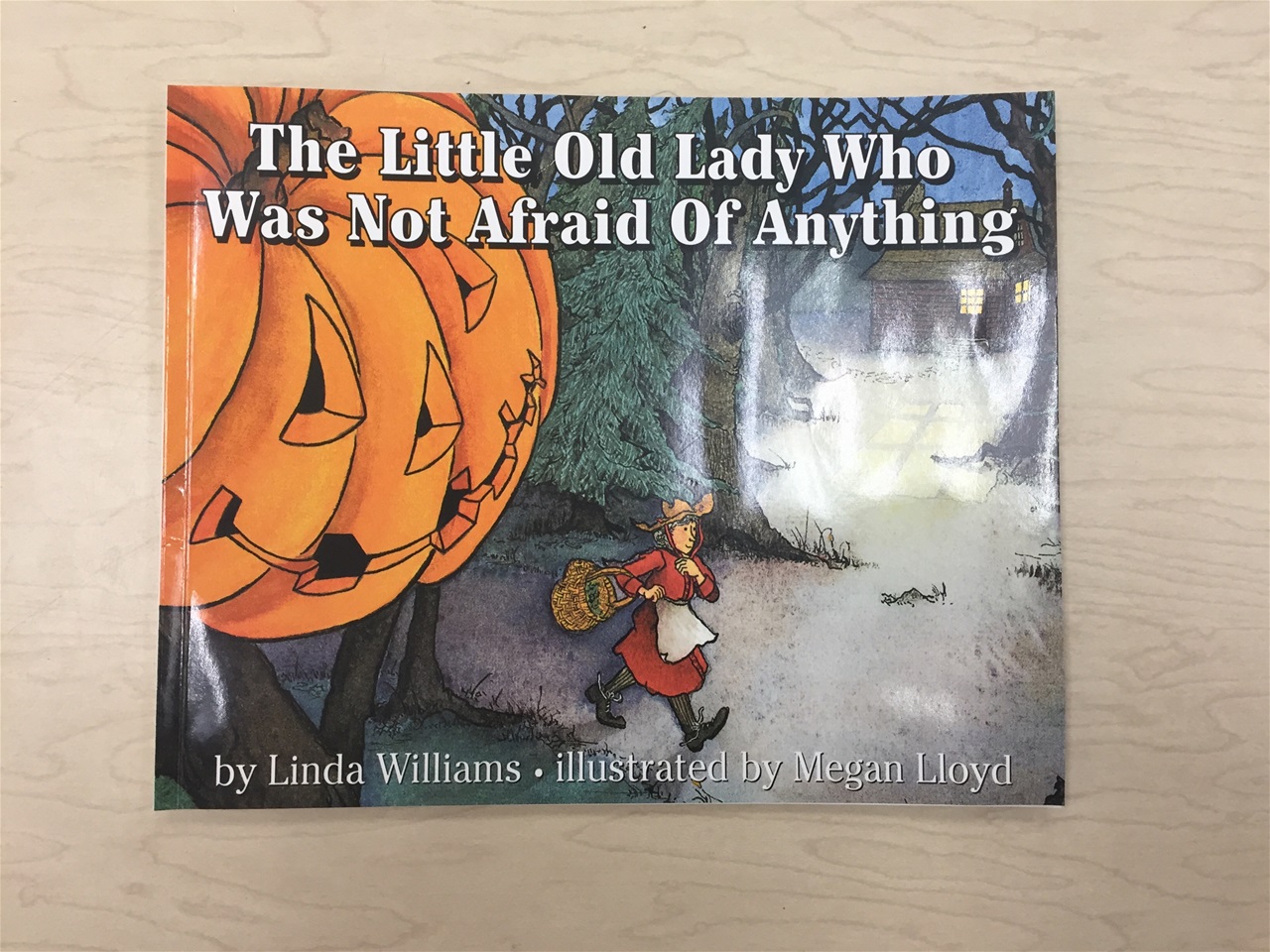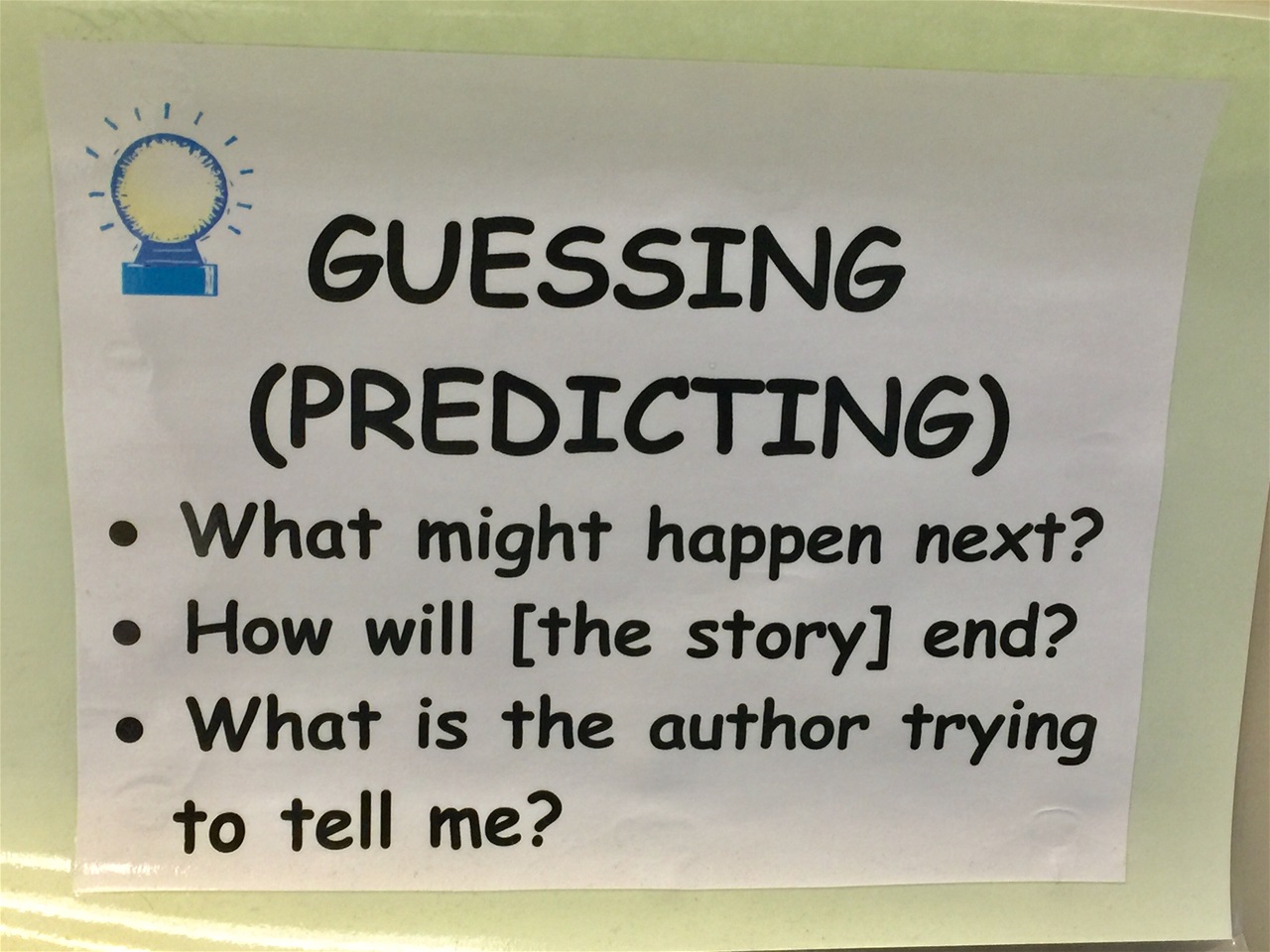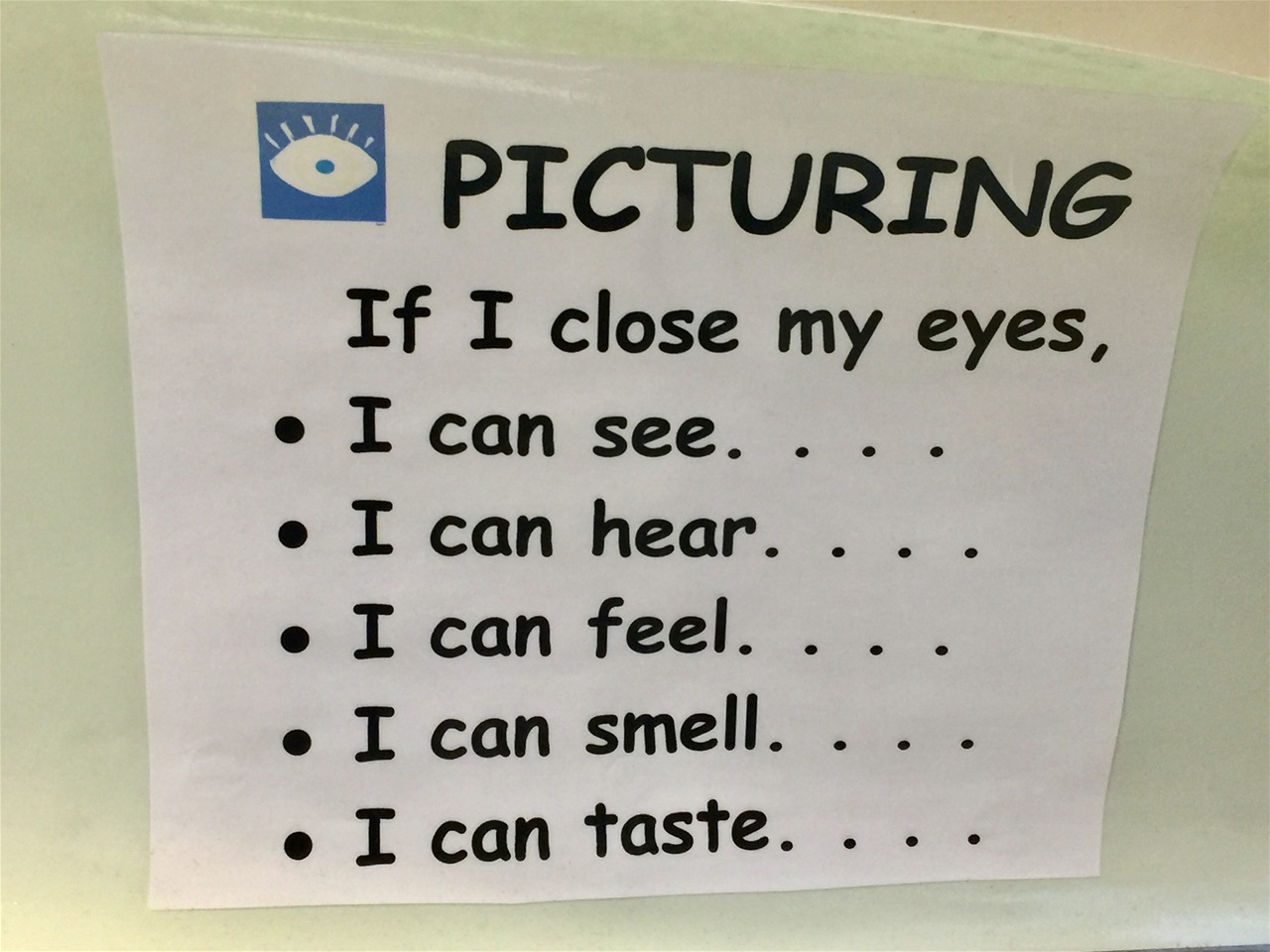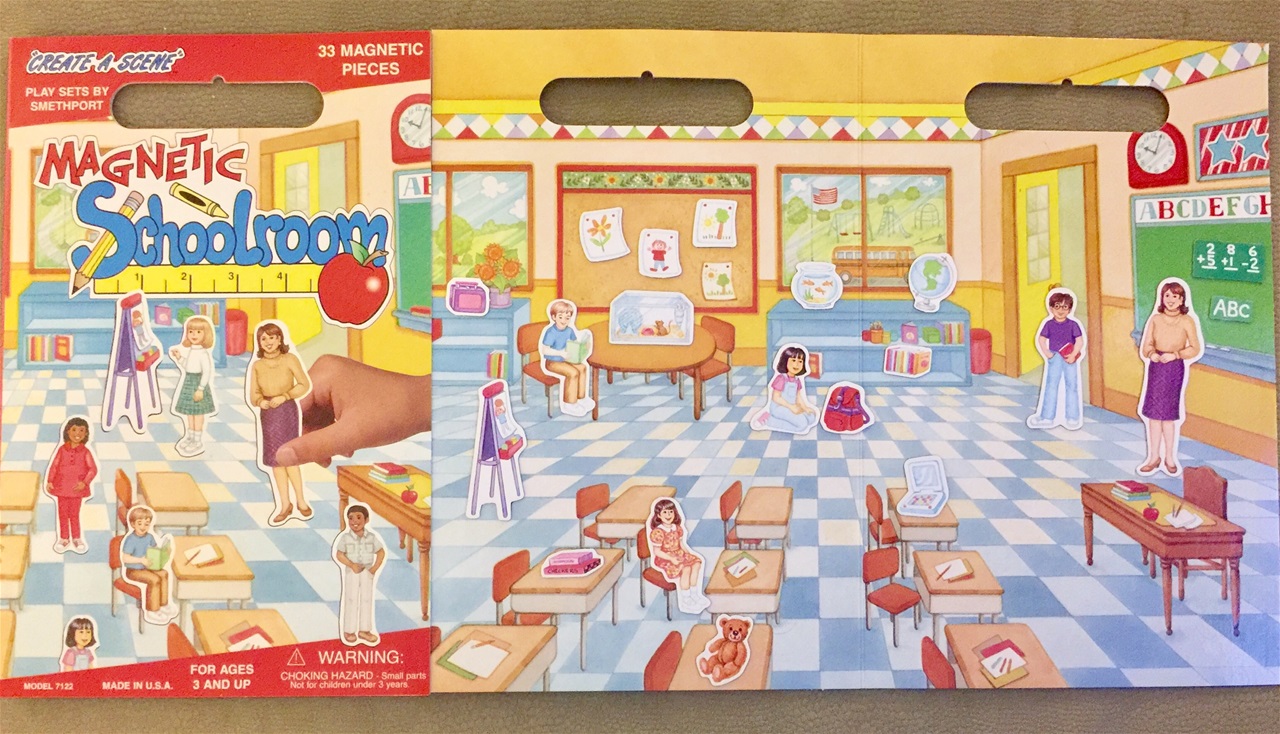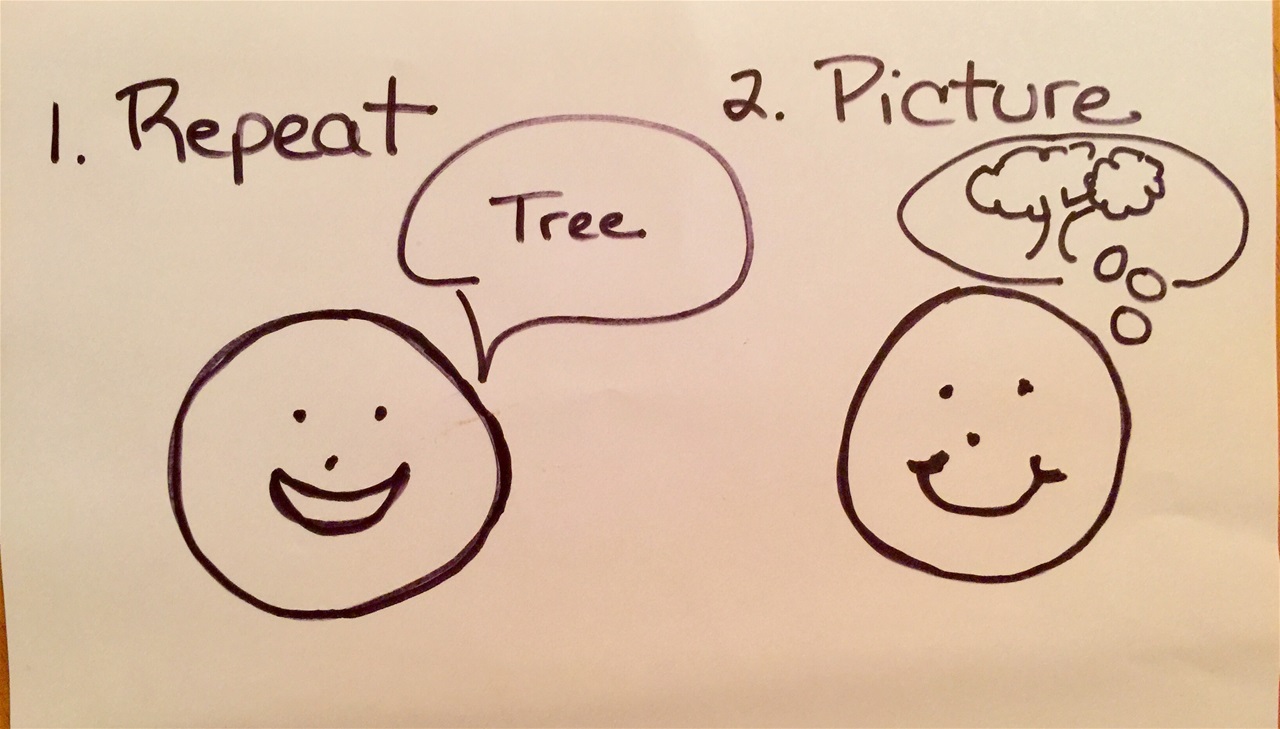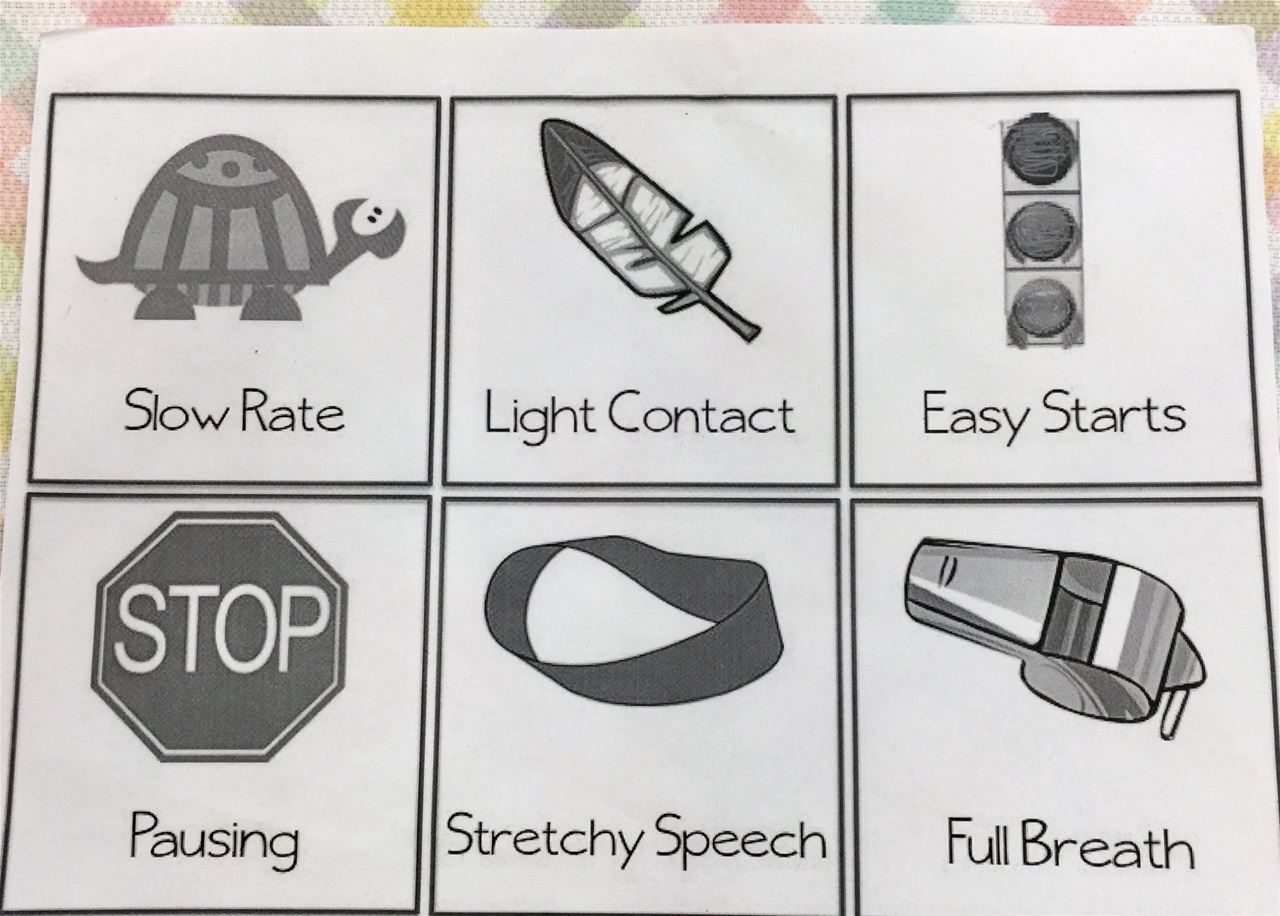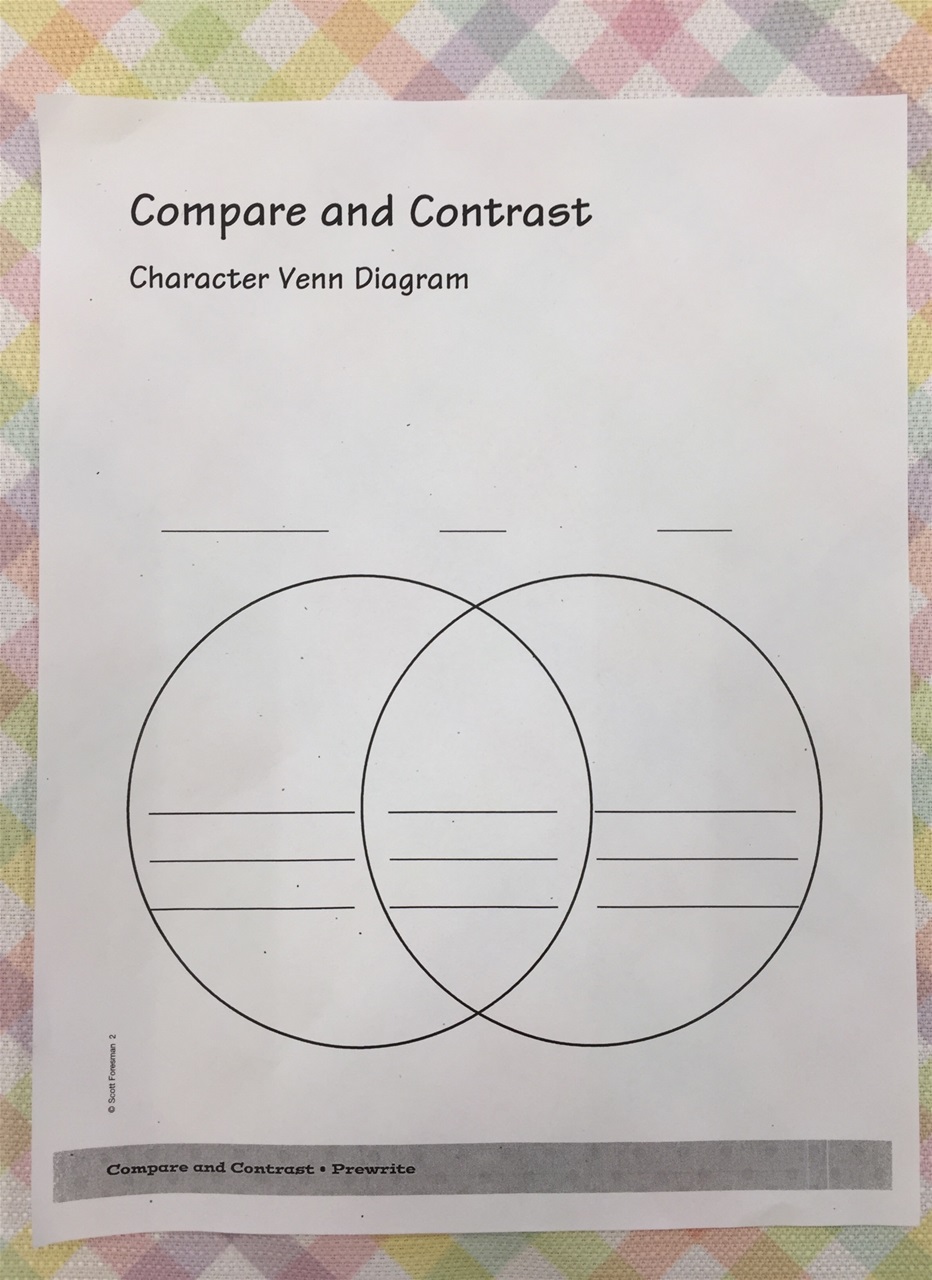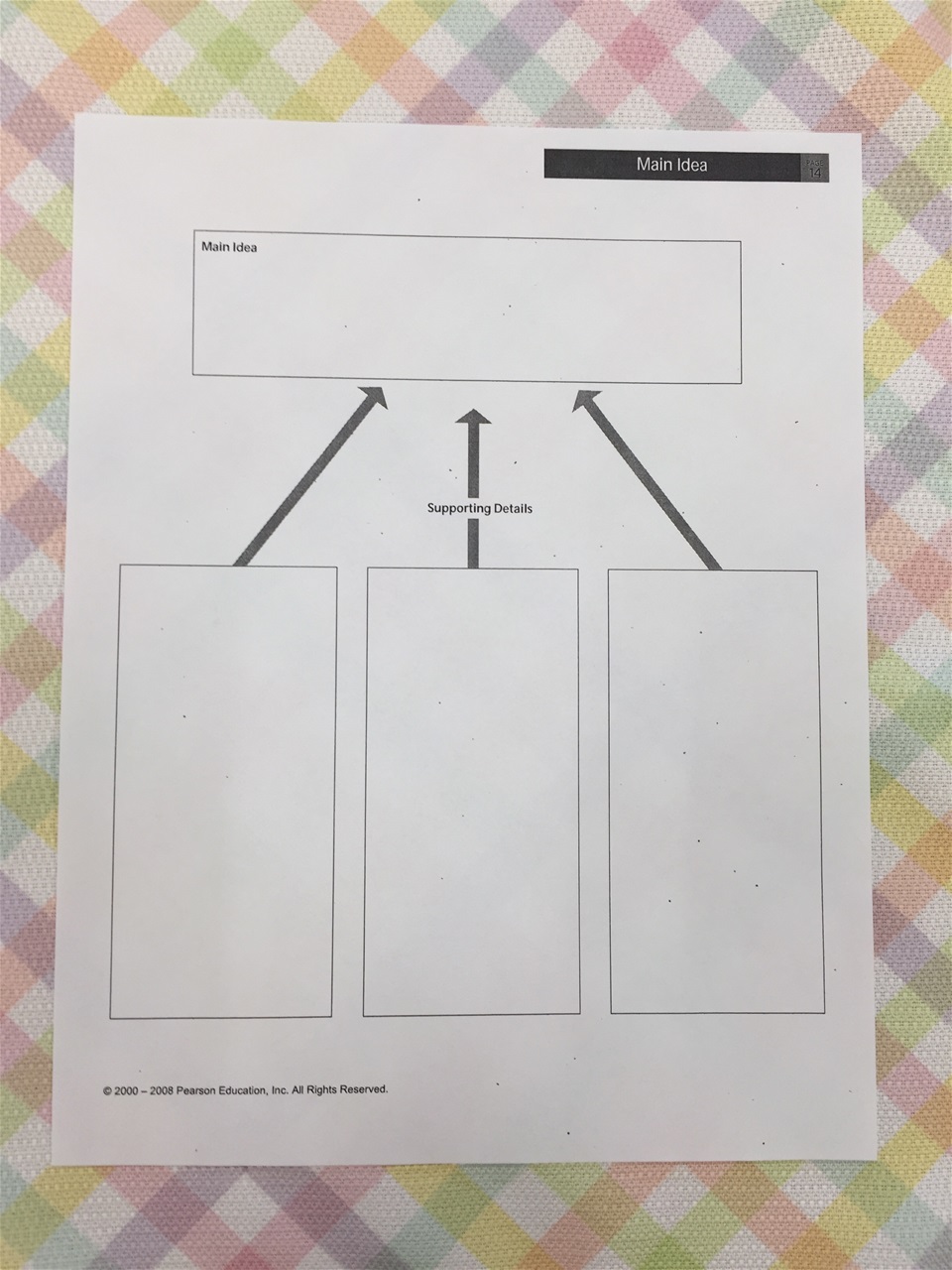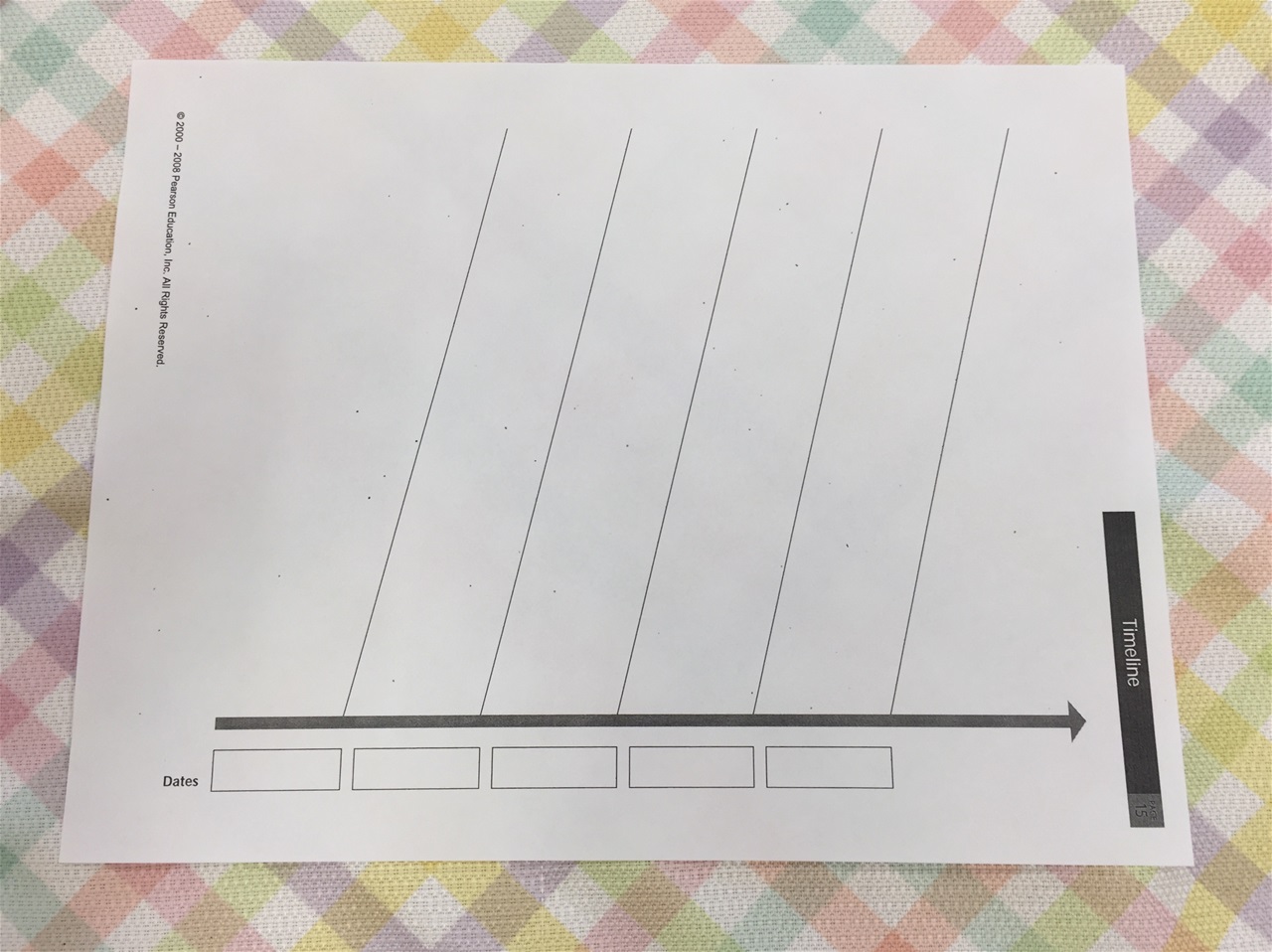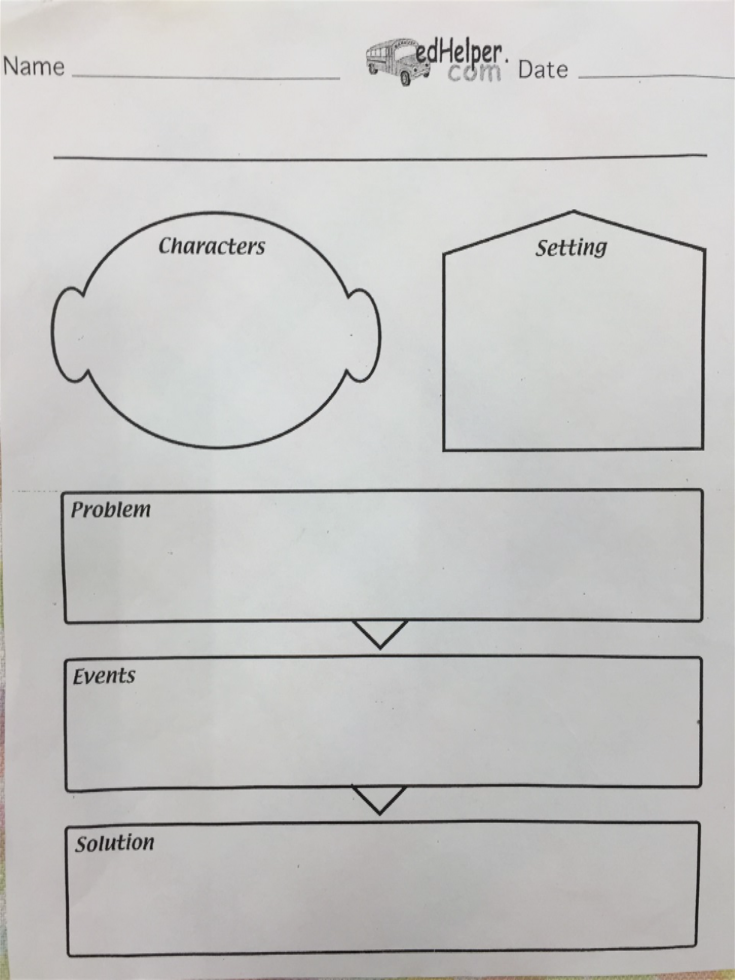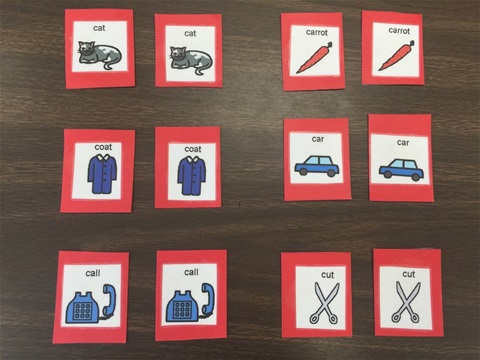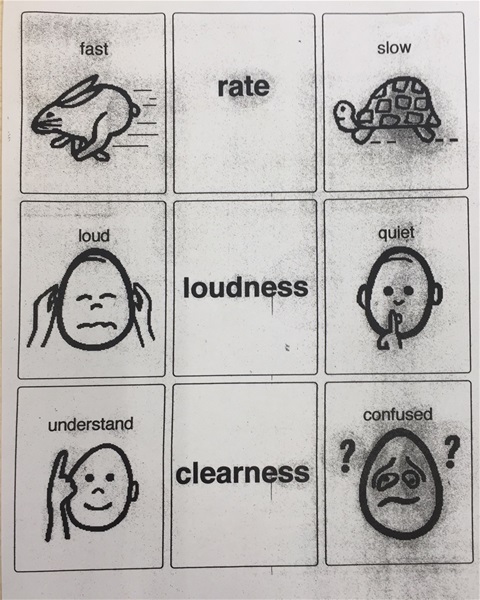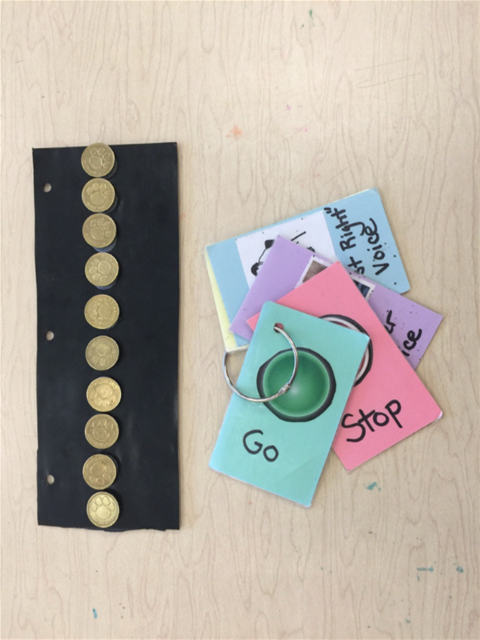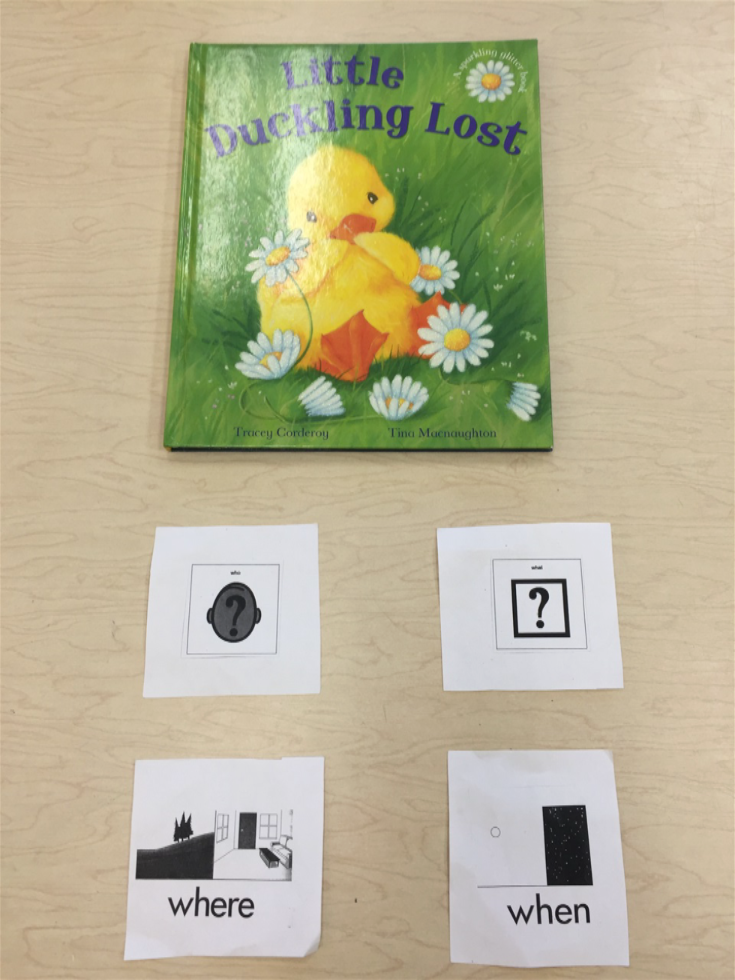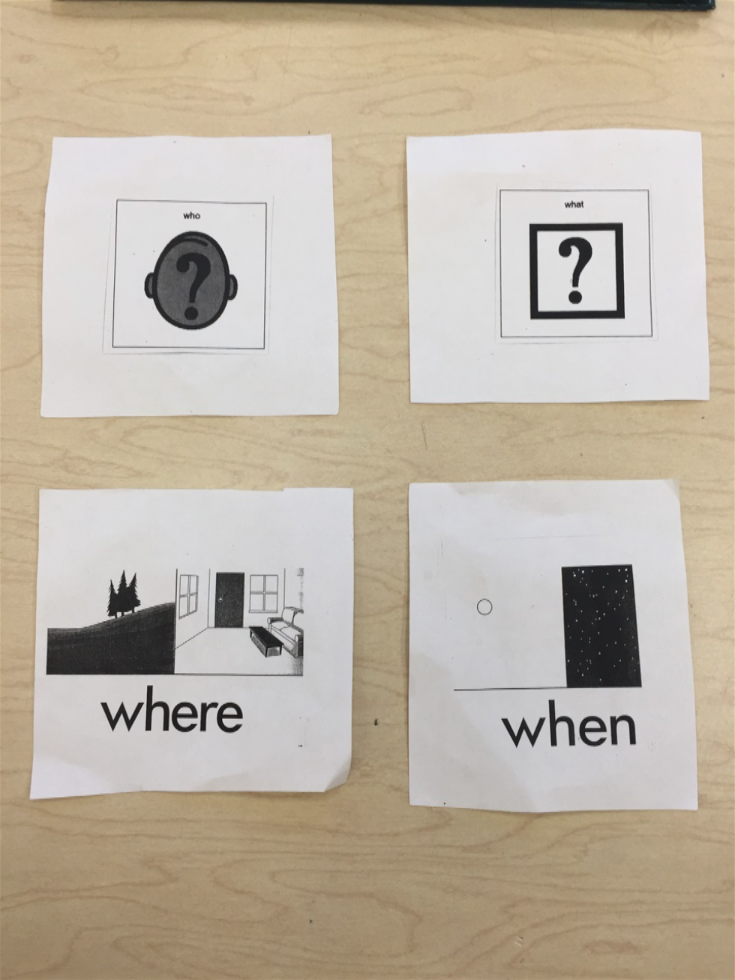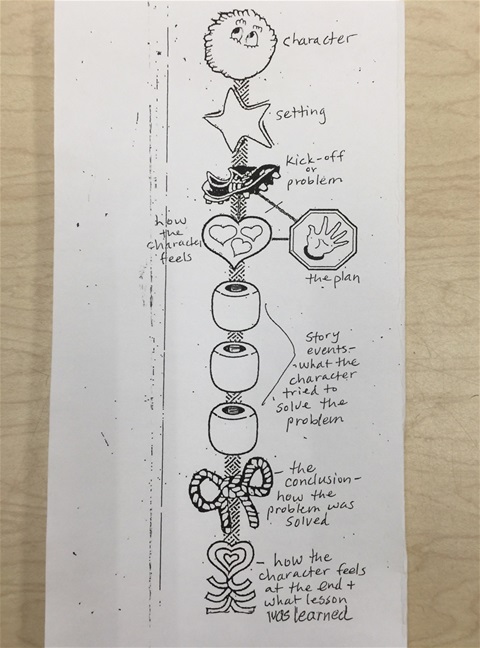Speech Class Rocks!!!
Despite the challenges presented regarding the current quarantine situation, our students and teachers continue to remain strong by forging ahead with several distance learning programs! I have never been more proud of how well our school has united together during these unprecedented times!
Earlier in the school year, several classroom activities were combined within my speech lessons and my students worked hard on completing unique S.T.E.M. Projects (working on activities that combine Science, Technology, Engineering, and Mathematics concepts). My students have also worked on creating their own original commercials, comparing character qualities within favorite Disney movies, and developing a creative speech board game, designing/building robots, and participating in other various science experiments.
It is my philosophy that a student's speech and language skills ultimately improve when being able to discuss highly motivating topics with others. There will be several photos and lesson summaries to follow throughout this school year. I’m excited to share more updates soon because Speech Class and all of my students truly rock!!!
Thank You! My Project Has Been Funded!!!
I am ecstatic to share the wonderful news that my Donors Choose Project has been fully funded! I feel extremely grateful for all of your support. My students will enjoy using a new literacy center within my speech classroom once the MRF school building re-opens its doors. I am looking forward to that fateful day when I can see all of my students in person again! ❤️📚✏️ #donorschoose #strongertogether
Speech Greeting During School Closing! I Miss You All!
I miss all of my students and hope they are doing well! If you are interested, I am now conducting Zoom speech video consult sessions. Please contact me at: jerrichetti@thompsonpublicschools.org if you would like to start scheduling these online sessions. I am here to support my students’ needs!
When teaching about answering questions with a young child, it is often helpful to provide picture choices. Start by focusing on one line of questionning at a time (Example: several "What?" questions in a row) and pair each question with 3 to 5 simple picture choices as needed. Next, gradually start to mix various questions together by asking "Who?", "What?", "Where?", "When?", and "Why?" questions about more detailed pictures. As the child starts to master answering questions with visual cues, try to gradually fade out the pictures by asking just the verbal questions. In time, the child will eventually move up to various levels which include the following: the picture, sentence, paragraph, two-paragraph, and whole story question levels. With enough practice and when provided with various levels of visual cueing, your child will be a Pro at answering questions in no time!
Distance Learning has begun! Please refer to this list in order to utilize some helpful online educational resources at home. I'm looking forward to seeing several of my students for online video conference sessions throughout this next month. We are going to make the best of this time by working through this together with strength, creativity, and a positive spirit!
My students recently solved language riddles and puzzles before participating in fun gold hunts. Since scool has closed, I miss seeing these very enthusiastic learners and creative thinkers! Fortunately, we are able to remain in good communication through the art of successful distance learning! 🍀 🎩
Make Reading An Important Part of Family Time Every Day!
Reading every day with your child is one of the best family activities and fundamental skills that you can help to foster. The younger the age your child starts to enhance this skill, the better! Here is a helpful link that includes Time Magazine's top rated "100 Best Children's Books Of All Time": time.com/100-best-childrens-books/ Happy Reading!
Read Across America Spirit Week!!!
It’s time to celebrate “Read Across America Spirit Week!!” There are several positive benefits to reading with your child everyday. Books truly unlock a whole new world where a child’s vocabulary/language expands and his/her imagination is enhanced! I encourage all parents to read for at least 20 minutes each day if not longer. The goal is for every child to read at least 1,000 books before starting Kindergarten!!! 📚🍎🎉
Visual Timers are wonderful tools that help students stay on track regarding their work and monitor the remaining time left to complete each given task. There are several different types of visual timers available in stores, including effective timer apps you can access within your cell phone app store. Simply type "Visual Timers" within the search box of the app store, and you will be directed to an array of choices. Positive reinforcement can also be added by providing a motivating reward for children to earn when the timer alarm goes off and the work task has been completed. This is the perfect example of how structured time management skills can lead to success!!
Utilizing smooth, easy speech stuttering strategies! 1) Take a breath between words and phrases 2) Relax your speech helpers (lips, tongue, jaw, etc.) 3) Use "Turtle Talk" when speaking 4) Start again if experiencing bumpy speech.
It's All About The "R"! Let's Roll With It!!
Have you ever noticed that /R/ is one of the most difficult sounds for a child to produce. That's because a very challenging set of mouth movements is required when articulating that particular sound. The tongue needs to curl up and back in the mouth, while the voice box remains turned "on" to produce noise. The lips also should never touch, but remain fully puckered while articulating "R". A child can sometimes achieve one or two of the requirements such as successfully retracting the tongue back in the mouth or turning the voicebox motor "on", but may often lack the strength or may simply forget to pucker the lips. This often creates an Elmer Fudd like speech effect known as "liquid gliding" when the "R" sounds like a "W". In my professional experiences a child usually needs "at least 2 years" in a speech therapy program before the /R/ sound can be remediated and progress starts to carry over within spontaneous conversations. Also, there are several sound levels a child needs to master, including articulating the /R/ sound in isolation, syllables, words, multi-syllable words, phrases, sentences, multi-sentence level, and conversation. It's also important to focus on the different positions of a word (initial, final, and medial sound positions should be practiced for each target sound). So always remember to be patient when it comes to "R" sound remediation, for this program is a lot more comprehensive than first meets the eye. That's why I like to call it the "Roll With It" sound for not only does the tongue roll back, but each child also needs time and patience to be able to feel relaxed when rolling with the "R" sound strategies and practice! The moral of Aesop's fable, “The Tortoise and the Hare” is that consistent, dedicated effort will eventually lead to success. The same message rings true when it comes to practicing the "R" sound. Being slow and steady with one's dedicated articulation practice will ultimately win the speech race!
Holiday Speech Party!!!
This past December 2019, I hosted fun speech-language games and holiday activities throughout the last week of school before Christmas vacation. The students enjoyed celebrating at various holiday stations throughout my classroom, which included "Snowball Tic-Tac-Toe", "Pin the Nose on the Reindeer", "Create Your Own Ornaments", and Story Role Play Fun"! Before students tooks turns at the motivating game or activity, we would review certain speech goals such as formulating complete sentences or articulating target sounds correctly within phrases/sentences. Once students completed their speech-language tasks correctly, they could enjoy fun time at a station of their choice. At the end of our special celebration, each speech group had the opportunity to pick out holiday prizes. The students were absolutely thrilled during these activities and the holiday speech celebration received rave reviews afterwards, so I would like to make this a special Annual Holiday tradition for every December!
Maintaining the Topic!
It is helpful to practice social skills (topic maintenance, taking turns, etc.) through the use of social games and cue cards. Children make the most progress when they are able to practice several types of conversations with peers (asking questions, making comments, answering questions, initiating a topic, maintaining a topic, etc.) when given various levels of cueing. "Super Duper Inc." and "Teachers Pay Teachers" have several helpful social skill resources and games to help students practice these types of pragmatic-language skills.
STEM projects enhance critical thinking skills and team collaboration!
STEM projects are the latest academic trend and judging by their results it is easy to see the reasons why. STEM stands for ”Science, Technology, Engineering, and Mathematics.” By incorporating a group project that tie together these key concepts as part of a speech lesson, students are able to work together on a motivating activity. They first enter into a group discussion, while using critical thinking skills to formulate a hypothesis and solve a problem. Our latest STEM project consisted of making turkey traps after reading the humorous story ”How To Catch A Turkey” by Adam Wallace and Andy Ellerton. The goal was to catch a turkey in order for it to be our speech mascot- very similar to the plot of our short story. The children used several materials including cardboard boxes, string, pipe cleaners, aluminum foil, construction paper, markers, masking tape, etc. I am very proud of all of my students who worked well together to express innovative ideas and build such creative designs for their turkey traps. “Talkative Tellie the Turkey” is now the official mascot for our speech classroom! ☺️🦃🍁
Pairing Language With Hands-On Activities!
Did you know that the more conversations you share and valuable play time you spend with your child, the more language he/she absorbs? Try pairing simple short phrases, sentences, and even questions during fun, motivating activities together. For example- My son Anthony and I recently enjoyed this step-by-step food activity together in his Pre-K classroom. The task was to choose an animal to replicate with listed food items. During the activity I would either express in a sentence the action he was completing (sentence modeling) or I would ask him to find various items for our next task: "You are spreading the peanut butter", "I am puting the bagel on the plate", "Can you give me two strawberries?", "Put the blueberry on the banana slice." During moments when he wanted a little more assistance, I would step in when needed. At the end of each hands-on activity, try to give a brief recap in words of the steps you followed to get to the end result (example: ”First we got a bagel, Next we spread the peanut butter . . . , etc.” A language overview summarizing all of the steps is always helpful. Anthony did an excellent job during this project and he later enthusiastically shared with his Dada at home all the ingredients he used to make his special owl snack! 🦉👍
Teaching “Wh?” questions!
Focus on a student’s strengths when teaching the differences among ”Who?”, ”What?”, ”Where?”, ”When?”, and ”Why?” questions. For example if a student is a more visual learner, try to color code the questions and use a variety of visual cue cards. Try to empower the student by having him/her help choose the given pictures and colors for each cue card. Another helpful strategy includes having the student highlight correct answers within photocopied stories using the same highlighted color for each type of question. If a student is more of an auditory learner, make sure to frequently repeat information and provide several spoken models. Finally, if a student is more of a tactile-kinesthetic learner, try to provide manipulatives that the child can hold to help him/her recall the differences among the lines of questioning. A total communication approach can also be implemented to help the students learn using several of their senses- senses of sight, hearing, and touch!
Proloquo 2 Go!
Alternative Augmentative communication devices are often used when a child exhibits difficulties expressing his/her wants and needs. Proloquo 2 is a communication iPad application with visual picture symbols that enables a child to make desired requests. Voice output features are also included so that a child can receive multi-modality information in the forms of touching the buttons, hearing spoken labels, and seeing the pictured symbols. I am currectly using this device with one of my students and he has made tremendous progress with his communication skills!
Excited about their completed robots!
Strong Connections Between Speech and Reading Skills.
This year my professional goals focus on the affects that speech sound disorders have on phonological awareness and reading skills. Research has shown that young elementary school students with speech sound disorders are at an increased risk of developing some form of phonological skill weakness, which often leads to futher reading difficulties. I will be in close collaboration with two of the school’s reading specialists and we will be sharing word lists, speech and reading activities, as well as data from our students’ progress. We will also be utilizing several of David Kilpatrick’s phonogical skill exercises during our student sessions. We are excited to undertake these professional goals and research projects together to determine whether a shared multi-modal team approach to speech and reading will garner increased progress within these skill areas.
Speech Apraxia is a neurological condition that results in a disconnected signal sent from the brain to the oral-motor mouth muscles during speech production. In order to help strengthen this pathway, speech therapists often complete a special set of exercises involving various sound pattern combinations (e.q., CV, VC, CVC, CCVC, CVCC, etc.). Oral muscle weakness is not involved with this particular condition. These “Say and Do” worksheets from the Super Duper Inc. contain an excellent series of sound combinations for a child to practice each day. In time, the student’s neurological pathways for speech production gradually strengthen.
Picture Exchange Communication Program!
One mode of communication that I practice during my speech therapy sessions is a picture exchange communication system, in which a child has access to several visual choices (picture icons). An ”I want _____” sentence board can also be used, so the child adds the desired picture to the sentence board. This visual system helps form a bridge to spoken communication, enabling the child to first request using pictures and then eventually express verbal language. The more the children see the visual picture choices in their communication book and hear the correct matching spoken words, the more their expressive language skills will increase.
Let’s Go Fishing!!!
One of the best ways to build a child’s expressive language skills is through repeated practice. Since these kinds of exercises and grammar drills can become monotonous at times, it helps to include motivating games like the one shown above. ”Go Fishing” is a fun game that includes different action pictures in back of every fish. The goal is to obtain two fish with the same exact picture. The child then expresses a complete sentence using the verbs ”is” or ”are” (e.g., ”He is reading book, She is swimming in the pool, etc.). Try incorporating these fun learning games at home as well. This particular language game can be purchased at www.superduperinc.com
Teamwork Effort To Create Volcanoes!
All of my second grade students did an excellent job problem solving and working together as a team to build their volcanoes. They first had to draft a plan, then construct their volcanoes using particular materials, and finally utilize a combination of baking soda, red food coloring dye, and vinegar to make their volcanoes erupt. I feel so proud of my students for making this project a huge success!!!
How are you feeling?
Did you know that how a student is feeling has a direct impact on their ability to learn? I always keep a chart listing different emotions at the front of my classroom. It is helpful for students to identify a wide range of feelings, that are also represented by picures. I often utilize this chart when discussing character emotions and exploring the different feelings my own students are experiencing on a daily basis. If one of my students is feeling a little nervous, I often provide a 5 minute sensory break to help calm the body. If a few students tell me they feel tired and unmotivated, I break up the typical flow of the session with a fun learning game or movement break. It is very important to always be aware and in tune with how your students are feeling. By tapping into those feelings and modifying your lesson as you see fit, you are providing another important bridge to learning in a very positive way for your students.
My speech students recently made valentine hearts for their teachers and loved ones, while sharing a special message about how to be a thoughtful friend or family member on one side of the heart! All of these beautiful hearts are displayed within the Mary R. Fisher Kindness Tree in the front lobby!!
Fun With Verbs and Sentences!
In my professional experience, students often demonstrate more progress when utilizing tactile, hands-on activities. One example includes using the motivating iPad app. “Fun With Verbs and Sentences.” Children have the opportunity to create complete sentences by tapping on the subjects, verbs, prepositional phrases, and/or direct objects of their choice. A video is then displayed that matches the sentence the student created and expressed. This is a whole learning, multisensory approach that helps students feel empowered while expressing language!
Asking Specific Questions
In my professional experience, one of the best ways for children to practice asking specific "Wh" questions is to play a guessing game. During this time the student narrows down the possible answer choices by asking questions about the person, place, or item you have in mind. Perfect examples of these types of games include "20 questions", "Who Am I?", or "Guess Who?" During these games children need to ask really specific questions in order to figure out the final answer. Certain questions can range from "Does your person wear green glasses?", "Are you a type of transportation?", to "Where do you live?" You can modify the lesson by providing question sentence starters on flashcards or providing a box of answer choices, while gradually fading out these various prompts over time. By turning this language exercise into a fun game, it not only makes learning more motivating, but also makes it easier for a student to recall these types of question formats later. It's time to start being a great detective by investigating through the art of questioning!!!
Empowering Students With Flexible Seating Options!
I am thrilled to inform everyone that my project "Empowering Students With Flexible Seating Options" has just been funded through the DonorsChoose.org. I will now have several options available to suit each student's individual learning style. I am very grateful for all of the donors who generously contributed to this project. I will make sure to include pictures and updates on both this speech website and the Donors Choose website. This is already a wonderful start to the school year 2018-2019!
Motivating Visual Tools!
Elementary school students often need engaging activities to help sustain their level of attention. One such activity involves using two copies of the same magnetic picture board (Create-A-Scene or Colorforms). The teacher places a border between her/him and the student and then proceeds to give directions. These directions should be clear and detailed in nature (e.g., colors, sizes, attributes, specific placements, etc). At the end of the activity, the teacher and student can remove the border and compare the location of all magnetic pictured items. The goal is for both picture boards to mirror each other. It can also be very fun and empowering for each child to be in the driver’s seat and practice giving directions to the teacher. Enjoy these border activities with your children. It is an excellent way ro practice following directions and strengthen expressive language skills! 😊
Repeat and Picture Spoken Information.
When listening to directions and spoken short stories, it can sometimes be difficult for a student to recall all of the details. That is why I often implement various visual strategies. One technique is called “Repeat” and “Picture”. By having the student slow down to imagine all of the details, it helps to cement the information within the memory. You can ask the student specfic questions about his/her image to ensure true visualization is taking place (e.g., “Is the dog you are picturing tall or short?). In my professional experience, most students perform better at processing verbal information when taking the time to use this important visualing strategy.
Fluency Strategies Are Effective Speech Tools!
These visual fluency picture cards serve as very effective tools! I have used these with several of my students who stutter. This helpful strategy reminds them about using their smooth speech techniques. These tools include taking breaths between phrases or natural pauses, speaking at a slow rate, streching out particular sounds, and using light articulatory contacts (light touching of the lip, tongue, and vocal folds when producing a sound). Parents can feel free to schedule a separate meeting with me, so that I can demonstrate these fluency strategies for home practice.
Motivating Sound Games!
Practicing speech sounds can sometimes feel a bit monotonous when carrying out the same kinds of routine exercises. That’s why it is so important to try to vary the activities for elementary school children as much as possible to keep them engaged and motivated. Try to make 2 copies of each picture that contain a targeted speech sound. In the example above you see speech words that start with the /K/ sound. You can play games like “Go Fish”, “Memory”, “UNO”, “Hidden Pictures”, and “Twister” with your speech words. It takes a little extra work for teachers and parents, but a lifetime of fun memories and mastered speech skills for each child!
Speech Driver and Learning to be Independent!
Sometimes just a simple visual cue is all a child needs in order to self correct. I created this simple visual chart to help my students self monitor their own speech skills. The main goal in the end is to have them in the driver’s seat and in charge of their own speech goals. One way to do this is have your child tape record his or her own speech. When the student plays back the recording, he/she can rate each of the 3 main areas above (rate, loudness, clarity of sounds) on a scale of 1 to 5. Once the child starts obtaining consistent “5”s on their charts with your rating approval, then those great speech habits start carrying over into spontaneous conversation!
Staying on track!
Keeping on track with a given activity can be very challenging, especially when a child is distracted. By having a type of token system and even rule cards in place, this helps the child follow a structured activity and lets him/her see there are only a certain number of items left to complete until theyo earn their reward. By seeing there is an “end to the means” and a motivating reward og game time is in sight, it can really help motivate the child to complete the activity.
Braidy Story Grammar Program!
Students have been using “Braidy” the Story Braid Puppet and bookmark during my speech classes to help them organize and recall the events of a story. Significant progress has taken place when my students use graphic organizers and story puppets like these to help them recall the correct sequence of events. Progress has increased from 70 to 86% accuracy when using these visial aides before retelling the story. Copies of the the “Story Braid” bookmark will be included in the student’s speech folder for home practice as well!
